
Collapse
by
Jared Diamond
Published 25 Apr 2011
Two books by Thor Heyerdahl that inspired my interest and that of many others in Easter Island are The Kon-Tiki Expedition (London: Allen & Unwin, 1950) and Aku-Aku: The Secret of Easter Island (London: Allen & Unwin, 1958). A rather different interpretation emerges from the excavations of the archaeologists whom Heyerdahl brought to Easter Island, as described in Thor Heyerdahl and E. Ferdon, Jr., eds., Reports of the Norwegian Archaeological Expedition to Easter Island and the East Pacific, vol. 1: The Archaeology of Easter Island (London: Allen & Unwin, 1961). Steven Fischer, Glyph Breaker (New York: Copernicus, 1997) and Rongorongo: The Easter Island Script (Oxford: Oxford University Press, 1997) describe Fischer's efforts at deciphering the Rongorongo text.
…
Two other recent books are Catherine and Michel Orliac, The Silent Gods: Mysteries of Easter Island (London: Thames and Hudson, 1995), a short illustrated overview; and John Loret and John Tancredi, eds., Easter Island: Scientific Exploration into the World's Environmental Problems in Microcosm (New York: Kluwer/Plenum, 2003), 13 chapters on results of recent expeditions. Anyone who becomes seriously interested in Easter Island will want to read two classic earlier books: Katherine Routledge's own account, The Mystery of Easter Island (London: Sifton Praed, 1919, reprinted by Adventure Unlimited Press, Kempton, 111., 1998), and Alfred Metraux, Ethnology of Easter Island (Honolulu: Bishop Museum Bulletin 160,1940, reprinted 1971).
…
Andrew Sharp, ed., The Journal of Jacob Roggeveen (London: Oxford University Press, 1970) reprints on pp. 89-106 the first European eyewitness description of Easter Island. An archaeological mapping of Easter Island is summarized in Claudio Cristino, Patricia Vargas, and R. Izaurieta, Atlas Arqueologico delsla dePascua (Santiago: University of Chile, 1981). Detailed articles about Easter Island are published regularly in the Rapa Nui Journal by the Easter Island Foundation, which also publishes occasional conferences about the island. Important collections of papers are Claudio Cristino, Patricia Vargas et al., eds., First International Congress, Easter Island and East Polynesia, vol. 1 Archaeology (Santiago: University of Chile, 1988); Patricia Vargas Casanova, ed., Easter Island and East Polynesia Prehistory (Santiago: University of Chile, 1998); and Christopher Stevenson and William Ayres, eds., Easter Island Archaeology: Research on Early Rapanui Culture (Los Osos, Calif.: Easter Island Foundation, 2000).
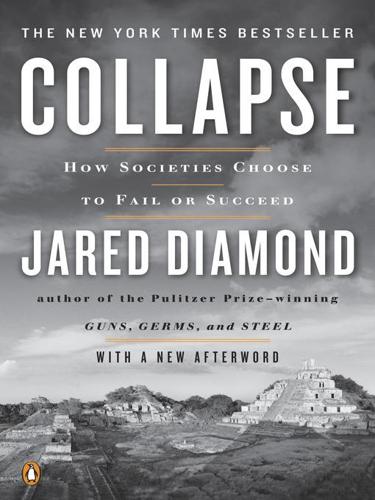
Collapse: How Societies Choose to Fail or Succeed
by
Jared Diamond
Published 2 Jan 2008
Two books by Thor Heyerdahl that inspired my interest and that of many others in Easter Island are The Kon-Tiki Expedition (London: Allen & Unwin, 1950) and Aku-Aku: The Secret of Easter Island (London: Allen & Unwin, 1958). A rather different interpretation emerges from the excavations of the archaeologists whom Heyerdahl brought to Easter Island, as described in Thor Heyerdahl and E. Ferdon, Jr., eds., Reports of the Norwegian Archaeological Expedition to Easter Island and the East Pacific, vol. 1: The Archaeology of Easter Island (London: Allen & Unwin, 1961). Steven Fischer, Glyph Breaker (New York: Copernicus, 1997) and Rongorongo: The Easter Island Script (Oxford: Oxford University Press, 1997) describe Fischer’s efforts at deciphering the Rongorongo text.
…
Two other recent books are Catherine and Michel Orliac, The Silent Gods: Mysteries of Easter Island (London: Thames and Hudson, 1995), a short illustrated overview; and John Loret and John Tancredi, eds., Easter Island: Scientific Exploration into the World’s Environmental Problems in Microcosm (New York: Kluwer/Plenum, 2003), 13 chapters on results of recent expeditions. Anyone who becomes seriously interested in Easter Island will want to read two classic earlier books: Katherine Routledge’s own account, The Mystery of Easter Island (London: Sifton Praed, 1919, reprinted by Adventure Unlimited Press, Kempton, Ill., 1998), and Alfred Métraux, Ethnology of Easter Island (Honolulu: Bishop Museum Bulletin 160, 1940, reprinted 1971).
…
Andrew Sharp, ed., The Journal of Jacob Roggeveen (London: Oxford University Press, 1970) reprints on pp. 89-106 the first European eyewitness description of Easter Island. An archaeological mapping of Easter Island is summarized in Claudio Cristino, Patricia Vargas, and R. Izaurieta, Atlas Arqueológico de Isla de Pascua (Santiago: University of Chile, 1981). Detailed articles about Easter Island are published regularly in the Rapa Nui Journal by the Easter Island Foundation, which also publishes occasional conferences about the island. Important collections of papers are Claudio Cristino, Patricia Vargas et al., eds., First International Congress, Easter Island and East Polynesia, vol. 1 Archaeology (Santiago: University of Chile, 1988); Patricia Vargas Casanova, ed., Easter Island and East Polynesia Prehistory (Santiago: University of Chile, 1998); and Christopher Stevenson and William Ayres, eds., Easter Island Archaeology: Research on Early Rapanui Culture (Los Osos, Calif.: Easter Island Foundation, 2000).
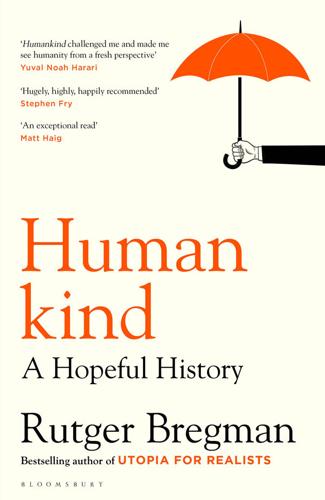
Humankind: A Hopeful History
by
Rutger Bregman
Published 1 Jun 2020
Jacob Roggeveen (Middelburg, 1838), p. 104. 31Bolton Glanvill Corney, The Voyage of Captain Don Felipe González to Easter Island 1770–1 (Cambridge, 1908), p. 93. 32Beverley Haun, Inventing Easter Island (Toronto, 2008), p. 247. 33James Cook, A Voyage Towards the South Pole and Round the World, Part 1 (1777). 34Henry Lee, ‘Treeless at Easter’, Nature (23 September 2004). 35The book in question is Thor Heyerdahl et al., Archaeology of Easter Island. Reports of the Norwegian Archaeological Expedition to Easter Island and the East Pacific (Part 1, 1961), p. 51. 36Thor Heyerdahl, Aku-Aku: The Secret of Easter Island (1957). 37Carl Behren’s account is included as an appendix to Glanvill Corney, The voyage of Captain Don Felipe González to Easter Island 1770–1, p. 134. 38Cook, A Voyage Towards the South Pole and Round the World, Chapter 8. 39Some scientists believe the statues fell down during an earthquake.
…
The moral is about us. Set Easter Island and Planet Earth side by side and there are some disturbing parallels. Just consider: Easter Island is a speck in the vast ocean, the earth a speck in the vast cosmos. The islanders had no boats to flee; we have no rocket ships to take us away. Easter Island grew deforested and overpopulated; our planet is becoming polluted and overheated. This leads us to a conclusion diametrically opposed to what I argued in the foregoing chapters. ‘Humankind’s covetousness is boundless,’ archaeologists Paul Bahn and John Flenley write in their book Easter Island, Earth Island. ‘Its selfishness appears to be genetically inborn.’13 Just when you thought you had cast off Hobbes’s veneer theory, it doubles back like a boomerang.
…
Though it failed to convince the experts, his theory did sell fifty million books.7 With the fortune he made on his bestseller, Heyerdahl was able to bankroll an expedition to Easter Island. He invited several eminent scientists to join him, among them William Mulloy, an American who would devote the rest of his life to studying Easter Island. ‘I don’t believe a damn thing you’ve published,’ he assured Heyerdahl before they set out.8 Turns out scientist and daredevil got along surprisingly well, and not long after arriving on Easter Island the pair made a spectacular find. In the depths of a swamp, Heyerdahl’s team discovered pollen from an unknown tree.

A Short History of Progress
by
Ronald Wright
Published 2 Jan 2004
From The Journal of Jacob Roggeveen, trans. and ed. Andrew Sharp (Oxford: Clarendon Press, 1970). Quoted in Paul Bahn and John Flenley, Easter Island, Earth Island (London: Thames and Hudson, 1992), p. 13, and more fully in Catherine and Michel Orliac, Easter Island, trans. Paul G. Bahn, (New York: Harry N. Abrams, 1995), pp. 98–99. 5. Orliac, Easter Island, p. 17. 6. Both land and sea were, however, less rich in species than large tropical archipelagoes such as Fiji and the Tahitian islands. Like the Marquesas, Easter Island lacks a surrounding coral reef. 7. Or an extinct species closely related to the Chilean palm. 8. Most of these were ultimately of Southeast Asian origin.
…
But the worst came in 1862, when Peruvian slave raiders took away half or more of the population to the “islands of death,” the infamous British-financed guano diggings off the Peruvian coast, where labourers were chained together and worked until they dropped. Only fifteen made it back alive to Easter Island (after humanitarian appeals by the bishop of Tahiti), and they brought smallpox with them. By 1872, when Pierre Loti saw it, the island was a mass grave, with scarcely more than a hundred people left alive (Bahn and Flenley, Easter Island, p. 179). 18. Those standing today have been restored. 19. Bahn and Flenley, Easter Island, pp. 213, 218. 20. The island even had a form of script, called rongorongo, though many experts believe it to be post-contact in origin. 21.
…
Nature, he concluded, had “been exceedingly sparing of her favours to this spot.”5 The great mystery of Easter Island that struck all early visitors was not just that these colossal statues stood in such a tiny and remote corner of the world, but that the stones seemed to have been put there without tackle, as if set down from the sky. The Spaniards who had credited the Devil with the splendours of Inca architecture were merely unable to recognize another culture’s achievements. But even scientific observers could not, at first, account for the megaliths of Easter Island. The figures stood there mockingly, defying common sense. We now know the answer to the riddle, and it is a chilling one.
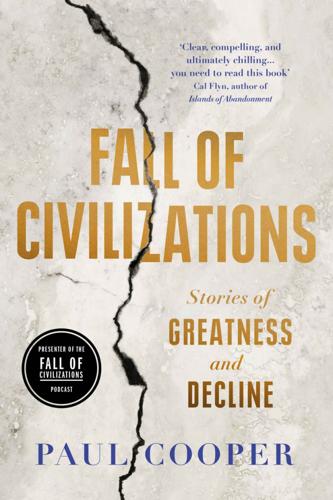
Fall of Civilizations: Stories of Greatness and Decline
by
Paul Cooper
Published 31 Mar 2024
‘Extract From the Official Log of Mr Jacob Roggeveen, Relating to His Discovery of Easter Island.’ 1722. In: The Voyage of Captain Don Felipe Gonzalez. Trans. Bolton Glanville Corney. Cambridge, The Hakluyt Society, 1908, pp. 1–24. Routledge, Katherine. The Mystery of Easter Island. United Kingdom, Hazell, Watson, and Viney Ltd, 1919. —————, William Scoresby, et al. ‘Easter Island: Discussion.’ The Geographical Journal, vol. 49, no. 5, 1917, pp. 340–349. —————. ‘The Bird Cult of Easter Island.’ Folklore, vol. 28, no. 4, 1917, pp. 337–355. Ryan, Kay. ‘Easter Island.’ The American Scholar, vol. 77, no. 3, 2008, pp. 65–65. Skinner, H. D. ‘Easter Island Masonry.’ The Journal of the Polynesian Society, vol. 64, no. 3, 1955, pp. 292–294. —————.
…
Annual Review of Anthropology, vol. 35, 2006, pp. 59–74. Thomson, William J. ‘Te Pito te Henua, or Easter Island.’ Report of the US National Museum for the year ending June 30, 1889. US Government Printing Office, Washington DC, 1889, pp. 447–552. Trachtman, Paul. ‘The Secrets of Easter Island.’ Smithsonian, 1 Mar. 2002. Online. www.smithsonianmag.com/history/the-secrets-of-easter-island-59989046. Accessed 7 November 2023. Tregear, Edward. ‘Easter Island.’ The Journal of the Polynesian Society, vol. 1, no. 2, 1892, pp. 95–102. Van Tilburg, Jo Anne and Ted Ralston. ‘Engineers of Easter Island.’ Archaeology, vol. 52, no. 6, 1999, pp. 40–45. —————.
…
United Kingdom, Hakluyt Society, 1872. 14. Easter Island Bahn, Paul, and John Flenley. Easter Island, Earth Island. United Kingdom, Thames and Hudson, 1992. Barthel, Thomas S. The Eighth Land: The Polynesian Discovery and Settlement of Easter Island. Trans. Anneliese Martin. Honolulu, University Press of Hawaii, 1978. Behrens, Carl Friedrich. ‘Another Narrative of Jacob Roggeveen’s Visit.’ In: The Voyage of Captain Don Felipe Gonzalez. Trans. Bolton Glanvill Corney. Cambridge, The Hakluyt Society, 1908, pp. 131–137. Beighton, Peter. ‘Easter Island People.’ The Geographical Journal, vol. 132, no. 3, 1966, pp. 347–357.
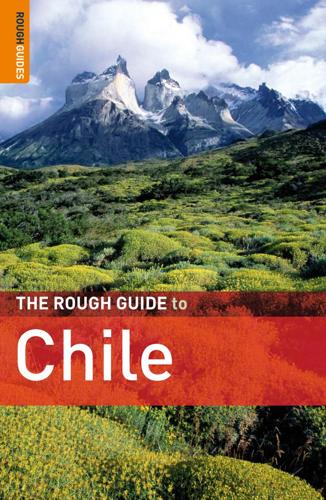
The Rough Guide to Chile
by
Melissa Graham
and
Andrew Benson
Published 11 May 2003
Selkirk’s story was used by Daniel Defoe as the basis for his classic novel, The Adventures of Robinson Crusoe (see p.482). These days, the island’s small community milks the E AS TE R I S L A ND Easter Island and the Juan Fernández Archipelago 465 Crusoe connections to death in an attempt to boost the tourist trade, but the Juan Fernández Archipelago remains an adventurous destination, well off the beaten track. Easter Island EASTER ISLAND | One of the most remote places on earth, tiny EASTER ISLAND is home to some four thousand islanders. Two thirds are indigenous (called pascuenses in Spanish), with the rest being mainly continentales (Chilean immigrants).
…
In the summer, the Conservatorio de Música in the basement gives concerts in the palace. 151 Nearby, at Libertad 250, is the Palacio Carrasco (Mon–Fri 9.30am–1pm & 2–6.30pm, Sat 10am–1pm), an elegant, three-storey building designed in a French Neoclassical style Museo Francisco Fonck VAL PARAÍ S O, V I ÑA AND THE C E NTRAL C OA S T The excellent Museo Francisco Fonck, at 4 Norte 784 (Mon–Sat 10am– 7pm, Sun 10am–2pm; CH$1500), has one of Chile’s most important Easter Island collections, plus some fascinating pre-Hispanic exhibits. It is named after Prussian medic Franz Fonck (1830–1912), who studied botanical and archeological sites in central Chile and left his collections to the state. One of the museum’s best pieces stands in the garden, by the entrance: a giant stone moai, one of just six that exist outside Easter Island. Inside, the three groundfloor rooms dedicated to Easter Island include wooden and stone carvings of those long, stylized faces (some around five hundred years old), as well as jewellery, weapons, household and fishing utensils, and ceremonial objects.
…
As time passed, these groups became more sophisticated and stratified, made up of a diverse collection of priests, fishermen, farmers and craftsmen. What the experts say: east or west? EASTER ISLAND | 468 Central to any discussion of Easter Island’s settlement are the controversial theories of Thor Heyerdahl (1906–2002), the Norwegian explorer-archeologist whose widely publicized expeditions and best-selling books generated an enormous amount of academic interest in the island’s history. Heyerdahl was convinced that Easter Island had been colonized by settlers from South America and, in 1948, he proved, quite spectacularly, that such a voyage was indeed possible when he and five companions successfully sailed a traditionally constructed balsa raft (the Kon Tiki) from Peru to an island east of Tahiti in a 101-day voyage.
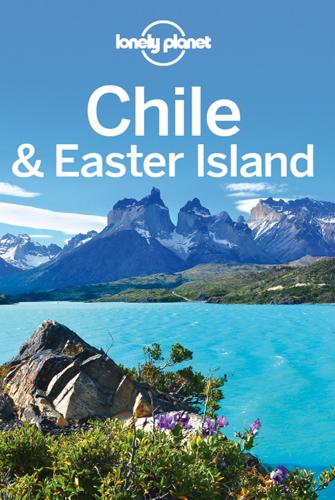
Lonely Planet Chile & Easter Island (Travel Guide)
by
Lonely Planet
,
Carolyn McCarthy
and
Kevin Raub
Published 19 Oct 2015
Bus Sur ( 420-997; www.bus-sur.cl; ticket office 25 de Mayo 712) To Ushuaia, Punta Arenas and Puerto Natales, Chile, three times weekly at 5:30am, connecting with Montiel. Top of section Easter Island (Rapa Nui) Includes » Hanga Roa Parque Nacional Rapa Nui Northern Circuit Southwest Circuit Northeast Circuit Understand Easter Island Easter Island Today History The Culture Arts Environment Directory A–Z Transportation Why Go? Easter Island (Rapa Nui to its native Polynesian inhabitants) is like nowhere else on earth. Historically intriguing, culturally compelling and scenically magical, this tiny speck of land looks like it’s fallen off another planet.
…
SURVIVAL GUIDE Directory A–Z PRACTICALITIES » Mercurio, the national daily newspaper, can be purchased at various shops in Hanga Roa. Easter Island also has its own newspaper, El Correo del Moai. »Chilean shows of the government-owned Television Nacional (TVN) are beamed to the island via satellite. »Easter Island uses the NTSC system for videos. »Electricity is supplied at 240V, 50Hz AC. »Easter Island follows the metric system. Accommodations If you come here from mainland Chile, be prepared for a shock. Despite a high number of establishments – about 90 when we visited – accommodations on Easter Island are fairly pricey for what you get. All accommodations options are located in Hanga Roa except the Explora en Rapa Nui.
…
Click here On the Road SANTIAGO AROUND SANTIAGO Pomaire Maipo Valley Wineries Cajón del Maipo Ski Centers MIDDLE CHILE VALPARAÍSO & THE CENTRAL COAST Valparaíso Viña del Mar Casablanca Valley Wineries ACONCAGUA VALLEY SOUTHERN HEARTLAND Colchagua Valley Pichilemu Maule Valley Chillán Termas de Chillán & Valle Las Trancas Coastal Towns Concepción Salto del Laja Parque Nacional Laguna del Laja Los Angeles Parque Nacional Nahuelbuta ARCHIPIÉLAGO JUAN FERNÁNDEZ San Juan Bautista Parque Nacional Archipiélago Juan Fernández Isla Alejandro Selkirk NORTE GRANDE Arica Chile 11 Highway Putre Parque Nacional Lauca South of Parque Nacional Lauca Iquique Pica Calama Chuquicamata San Pedro de Atacama Reserva Nacional Los Flamencos El Tatio Geysers Antofagasta NORTE CHICO Parque Nacional Pan de Azúcar Caldera Bahía Inglesa Copiapó Parque Nacional Nevado Tres Cruces Ojos del Salado Huasco Valley Parque Nacional Llanos de Challe Reserva Nacional Pingüino de Humboldt La Serena Elqui Valley Limarí Valley Río Hurtado Valley Parque Nacional Bosques de Fray Jorge SUR CHICO LA ARAUCANÍA Temuco Parque Nacional Tolhuaca Parque Nacional Conguillío Curacautín Reserva Nacional Malalcahuello-Nalcas Melipeuco Villarrica Pucón Parque Nacional Villarrica Río Liucura Valley Parque Nacional Huerquehue Lican Ray LOS RÍOS Valdivia THE LAKES DISTRICT Osorno Entre Lagos Parque Nacional Puyehue Puerto Octay Frutillar Puerto Varas Parque Nacional Vicente Pérez Rosales Cochamó Río Cochamó Valley Río Puelo Río Puelo Valley Puerto Montt CHILOÉ Ancud Monumento Natural Islotes de Puñihuil Chepu Quemchi Isla Mechuque Dalcahue Isla Quinchao Castro Parque Nacional Chiloé Quellón NORTHERN PATAGONIA Hornopirén Parque Nacional Hornopirén Parque Pumalín Chaitén Futaleufú Palena La Junta Puyuhuapi Termas De Puyuhuapi Parque Nacional Queulat Coyhaique Reserva Nacional Coyhaique Reserva Nacional Río Simpson Monumento Natural Dos Lagunas Parque Nacional Laguna San Rafael Reserva Nacional Cerro Castillo Villa Cerro Castillo Puerto Ingeniero Ibáñez Chile Chico Reserva Nacional Jeinemeni Puerto Río Tranquilo Cruce El Maitén Puerto Guadal Puerto Bertrand Valle Chacabuco (Parque Nacional Patagonia) Cochrane Reserva Nacional Tamango Caleta Tortel South to Villa O’Higgins Villa O’Higgins SOUTHERN PATAGONIA MAGALLANES Punta Arenas ÚLTIMA ESPERANZA Puerto Natales Cueva del Milodón Parque Nacional Bernardo O’Higgins Parque Nacional Torres del Paine ARGENTINE PATAGONIA El Calafate Perito Moreno & Parque Nacional Los Glaciares (South) El Chaltén & Parque Nacional Los Glaciares (North) TIERRA DEL FUEGO CHILEAN TIERRA DEL FUEGO Porvenir Timaukel Estancia Yendegaia Isla Navarino Cabo De Hornos & Surrounding Islands ARGENTINE TIERRA DEL FUEGO Ushuaia Parque Nacional Tierra del Fuego Río Grande EASTER ISLAND (RAPA NUI) HANGA ROA PARQUE NACIONAL RAPA NUI Northern Circuit Southwest Circuit Northeast Circuit UNDERSTAND EASTER ISLAND Easter Island Today History The Culture Arts Environment SURVIVAL GUIDE Directory A–Z TRANSPORTATION Getting There & Away Getting Around Top of section Santiago Includes » Sights Activities Courses Tours Festivals & Events Sleeping Eating Drinking Entertainment Shopping Getting There & Away Getting Around Around Santiago Pomaire Maipo Valley Wineries Cajón del Maipo Why Go?
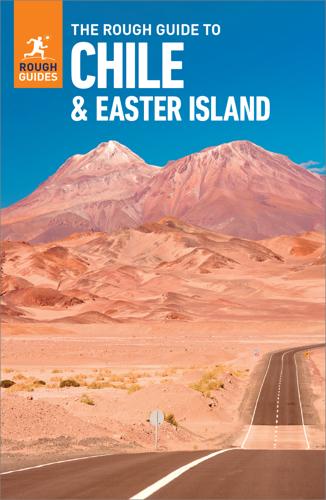
The Rough Guide to Chile & Easter Island (Travel Guide with Free eBook)
by
Rough Guides
Published 15 Mar 2023
Museo Francisco Fonck 4 Norte 784 • Mon 10am–2pm & 3–6pm, Tues–Sat 10am–6pm, Sun 10am–2pm • Donation requested • http://museofonck.cl The excellent Museo Francisco Fonck has one of Chile’s most important Easter Island collections, plus fascinating pre-Hispanic exhibits. One of the museum’s best pieces stands by the entrance in the garden: a giant stone moai, one of just six that exist outside Easter Island. Inside, the three rooms dedicated to Easter Island include wooden and stone carvings of those long, stylized faces, as well as jewellery, weapons and ceremonial objects. Castillo Wulff Av Marina 37 • Tues–Sun 9.30am–1.30pm & 3–5.30pm • Free In a prime waterfront location, the neo-Gothic Castillo Wulff was built in 1906 for a local nitrate and coal baron.
…
See page 355 4 Orongo Imagine the mind-boggling rituals of the Birdman cult as you gaze out at craggy islets in a sapphire-blue ocean or inwards to a reed-filled crater at one of Easter Island’s most breathtaking natural sites. See page 357 5 Juan Fernández flora and fauna Frolic underwater with fish and sea lions, watch the antics of hummingbirds and observe dozens of endemic species of plant on this treasure island of unique (and painfully fragile) wildlife. See page 357 Ancient moai Shutterstock Easter Island and the Juan Fernández Archipelago Chile’s two remote island territories, enchanting Easter Island and the little-known Juan Fernández Archipelago, are collectively referred to as the Islas Esporádicas (“Far Flung Isles”).
…
Based on a series of lectures broadcast to the Chilean Navy serving in Antarctica, this is a clear and accessible (though dated) introduction to Easter Island, written by a genial German priest who lived there for 35 years from 1935. Thor Heyerdahl Aku Aku (o/p). This account of Heyerdahl’s famous expedition to Easter Island in 1955 is a cracking read, with an acute sense of adventure and mystery. Dubious as the author’s archeological theories are, it’s hard not to get swept along by his enthusiasm. In contrast, his Reports of the Norwegian Archeological Expedition to Easter Island and the East Pacific is a rigorous and respected documentation of the expedition’s findings.
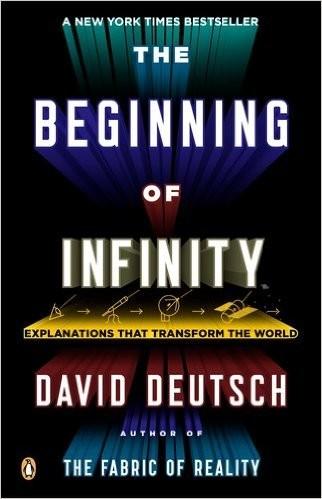
The Beginning of Infinity: Explanations That Transform the World
by
David Deutsch
Published 30 Jun 2011
When Bronowski made his documentary, there were as yet no detailed theories of how the Easter Island civilization fell. But, unlike Attenborough, he was not interested in that, because his whole purpose in going to Easter Island was to point out the profound difference between our civilization and civilizations like the one that built those statues. We are not like them was his message. We have taken the step that they did not. Attenborough’s argument rests on the opposite claim: we are like them and are following headlong in their footsteps. And so he drew an extended analogy between the Easter Island civilization and ours, feature for feature, and danger for danger: A warning of what the future could hold can be seen on one of the remotest places on Earth…When the first Polynesian settlers landed here they found a miniature world that had ample resources to sustain them.
…
You have to live the solution, and to set about solving the new problems that this creates. It is because of this unsustainability that the island of Britain, with a far less hospitable climate than the subtropical Easter Island, now hosts a civilization with at least three times the population density that Easter Island had at its zenith, and at an enormously higher standard of living. Appropriately enough, this civilization has knowledge of how to live well without the forests that once covered much of Britain. The Easter Islanders’ culture sustained them in both senses. This is the hallmark of a functioning static society. It provided them with a way of life; but it also inhibited change: it sustained their determination to enact and re-enact the same behaviours for generations.
…
One of the consequences of optimism is that one expects to learn from failure – one’s own and others’. But the idea that our civilization has something to learn from the Easter Islanders’ alleged forestry failure is not derived from any structural resemblance between our situation and theirs. For they failed to make progress in practically every area. No one expects the Easter Islanders’ failures in, say, medicine to explain our difficulties in curing cancer, or their failure to understand the night sky to explain why a quantum theory of gravity is elusive to us. The Easter Islanders’ errors, both methodological and substantive, were simply too elementary to be relevant to us, and their imprudent forestry, if that is really what destroyed their civilization, would merely be typical of their lack of problem-solving ability across the board.
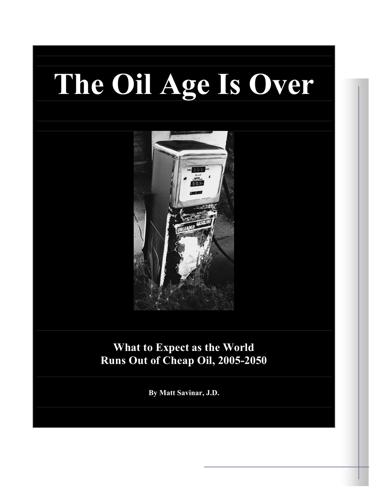
The Oil Age Is Over: What to Expect as the World Runs Out of Cheap Oil, 2005-2050
by
Matt Savinar
Published 2 Jan 2004
Like the Irish of the 18th and 19th centuries, our population has nearly quadrupled since the introduction of a single resource. Like the Irish, we are totally dependant on that resource. Unlike the Irish, we have nowhere else to go when that resource is no longer readily available. Example D: Easter Island Over the course of history, many human populations have suffered from die-offs. The die-off most analogous to our current situation is the one that took place on Easter Island during the early 18th century. Easter Island was discovered by western civilization in 1722 when Dutch explorer Jacob Roggeveen landed on the island. At the time, Roggeveen described the island as a wasteland. The islanders he encountered led a particularly primitive existence, even by 18thcentury standards.
…
The islanders possessed no wheels, no draft animals, few tools, and only 3-4 flimsy, leaky canoes. Despite the barren existence, Easter Island was populated with huge, elaborately constructed, stone statues. Roggeveen and his crew were completely perplexed by these statues, as it was clear whoever built them had tools, resources, and organizational skills far more advanced than the islanders they encountered. What happened to these people? 18 The Oil Age is Over According to archeologists, Easter Island was first colonized by Polynesians sometime around the year 500 AD. At the time, the island was a pristine paradise with lush forests.
…
By around 1700, the population began to crash toward between onequarter and one-tenth of its former number. People took to living in caves for protection against their enemies and the statues were torn down in clan warfare.15 Once the home of a highly complex society, Easter Island had turned into an atoll of the barbaric. As UCLA Medical School Professor Jared Diamond has explained: Easter Island looks like a metaphor for us today. The islanders were isolated in the middle of the ocean with nobody to turn for help, with nowhere to flee once the island collapsed. In the same way today, one can look at Planet Earth in the middle of the galaxy, and if we too get into trouble, there's no way we can flee, and no people to whom we can turn for help out there in the galaxy.16 D.
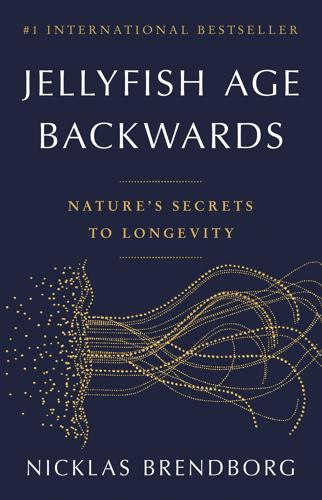
Jellyfish Age Backwards: Nature's Secrets to Longevity
by
Nicklas Brendborg
Published 17 Jan 2023
Chapter 7 The Secrets of Easter Island Imagine that you’re looking out at the ocean from a remote little island. Below, the waves beat rhythmically against the rocks. If you turn around, you will be greeted by a golden, rocky landscape with sporadic outcroppings of grass. There are no trees. Instead, the landscape is dominated by huge stone sculptures that keep watch over the island as if to guard its inhabitants. The isolation is palpable – the nearest inhabited island is nearly 2,000km (1,242 miles) distant, and the mainland is even further away. You’re on Easter Island, where 8,000 inhabitants live surrounded by the Pacific Ocean as far as the eye can see.
…
Maybe someone once asked them for a longer life, because it turns out one of the ingredients is hiding in the very soil of Easter Island. We know of this secret because a Canadian research expedition travelled to the isolated island in the 1960s to examine the soil. The Canadians were intrigued that islanders never got tetanus even though they were walking around barefoot. Tetanus is caused by a bacterial infection and is often associated with stepping on something sharp or a rupture of the skin. The bacterium involved releases a toxin into the bloodstream that makes all muscles contract to the point of being extremely painful, immobilising and even deadly. Using soil samples from around Easter island, the Canadian researchers confirmed that there was no tetanus bacteria to be found.
…
ISBN 978-0-316-41478-4 E3-20230107-JV-NF-ORI CONTENTS Cover Title Page Copyright Introduction – The Fountain of Youth Part I – Nature’s Wonders 1. The Record Book of Longevity 2. Sun, Palm Trees and a Long Life 3. Genes Are Overrated 4. The Disadvantages of Immortality Part II – Scientists’ Discoveries 5. What Doesn’t Kill You… 6. Does Size Matter? 7. The Secrets of Easter Island 8. The One to Unite Them All 9. Infamous High School Biology 10. Adventures in Immortality 11. Zombie Cells and How to Get Rid of Them 12. Winding the Biological Clock 13. Bloody Marvellous 14. Microbe Struggles 15. Hiding in Plain Sight 16. Flossing for Longevity 17. Immune Rejuvenation Part III – Good Advice 18.
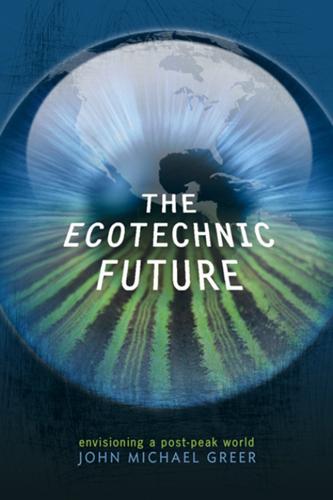
The Ecotechnic Future: Envisioning a Post-Peak World
by
John Michael Greer
Published 30 Sep 2009
If a culture uses any one of the resources necessary to its survival at an unsustainable rate, it follows the usual overshoot curve — population boom, followed by population crash.1 19 20 T he E cotechnic F u t u re A classic example of the process took place on Easter Island, where towering stone statues still serve as a reminder that cultural evolution is not a one-way street.2 The people of Easter Island thrived on the rich sea life of the Pacific, but their access to those resources depended on wood for canoes, and that turned out to be their downfall. It took the Easter Islanders only a few centuries to strip the forests of their island home to bare soil. Once deforestation was complete, they were left with a population far beyond what the island’s own resources could support.
…
Especially in periods of decline, though, the fate of societies is often determined by the survival or disappearance of technologies so common they are hardly noticed. For the people of Easter Island, for example, deepwater canoes had been part of daily life for thousands of years before their ancestors reached this westernmost outpost of Polynesia. This may be among the core reasons that nobody on Easter Island anticipated the consequences of cutting down too many trees. The resulting deforestation eliminated large tree trunks, an essential resource without which deepwater canoes could not be made, cutting off the majority of the island’s food supply and, at the same time, the only way out of the trap the Easter Islanders set for themselves. The canoe had been so omnipresent a part of life for so long that the possibility of its absence very likely never entered into the islanders’ darkest dreams.4 A similar sort of dependence on a vulnerable technology, according to the medieval Arab historian ibn Khaldûn, drove the collapse and abandonment of cities across the Middle East and North Africa in the centuries prior to his own time.
…
What made the agrarian economies of the desert nations vulnerable, rather, was the same failure to prioritize the requirements of essential technologies that doomed the Easter Islanders. By the Middle Ages, due to climate change and topsoil loss, most Middle Eastern societies had to direct much of their economic output into maintaining the canals and waterworks on which survival depended. This became their Achilles’ heel, because the desert nomads who conquered the urban centers rarely grasped the importance of the irrigation systems and starved them of resources until local breakdowns could no longer be repaired and the entire system failed. Like the deforestation of Easter Island, the breakdown of the irrigation canals was a one-way ticket to collapse; once farmland turned into desert, the agricultural wealth that made canal building and repair possible was no longer there to be spent, and regions that had been settled for millennia turned into deserts spotted with crumbling ruins.

They Have a Word for It A Lighthearted Lexicon of Untranslatable Words & Phrases-Sarabande Books (2000)
by
Howard Rheingold
Published 10 Mar 2020
The currently popular way of life dedicated to the relentless pursuit of new cars, bigger houses, more powerful appliances-status symbols-followed by the ritual display of these symbolic objects and accompanying symbolic boasting, might grow into some- 20 THEY HAVE A WORD FOR IT thing wonderfully different if people toyed with the idea. ''.John," you might say, "I'm overcome with admiration for your beautiful new toaster [wristwatch, overcoat, stereo]. I'm afraid I must ask for tingo." anga-anga [noun/verb], hakanuka-nuka [noun], and ngaobera [noun] (Pascuense, Easter Island) Nasty, useful social games. Easter Island contains one of the most isolated cultures on earth, both geographically and culturally. Located in the South Pacific, 2350 miles west of the coast of Chile (which owns it), Easter Island is home to a native culture numbering around 15,000 people today, descendants of daring Oceanian seafarers of ages past. There had been no contact with outsiders until the 19th century.
…
If a word from a group IO THEY HAVE A WORD FOR IT of islands in the Indian Ocean conveys an idea that would be just as significant in Los Angeles or Minneapolis, I included it. There is a sprinkling ofltalian, an abundant pinch of German, a soup(on of French, a bit of Yiddish, a generous helping ofJapanese and Chinese in these pages, along with tidbits of Sanskrit, Tibetan, Indonesian, Iroquois, Tierra del Fuegan, Pascuense (language of the Easter Islands), Scottish, Bantu, and a half dozen truly obscure languages. The sophisticated linguist will recognize as many as a dozen words. In fact, if you can recognize a dozen words, that's proof positive that you are a sophisticated linguist. And if you can use them in conversation, consider yourself an accomplished sophisticated linguist.
…
You don't have to be kin to have complex relationships-neighbors and friends are also objects of affection and scorn. The kinds of problems people have with one another, as well as the cultural mechanisms we have for dealing with these problems, are reflected in our vocabularies. In Hawaii, people deal with domestic disputes by arranging a ho 'oponopono. On Easter Island, the words hakamaroo and tingo refer to different kinds of outrageous borrowing behavior. The Yiddish words tsuris and nakhes refer to two extreme emotions that only your son or daughter can invoke in you. Social games can be methods for disarming potentially explosive conflicts, as the Pascuense words anga-anga, hakanuka-nuka, and ngaobera attest.
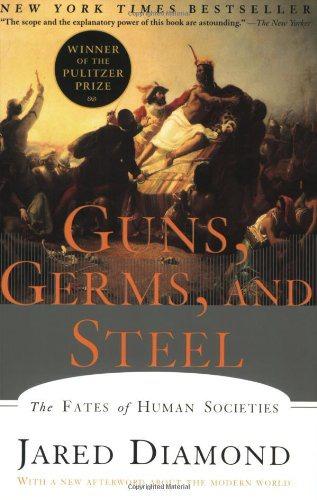
Guns, germs, and steel: the fates of human societies
by
Jared M. Diamond
Published 15 Jul 2005
The largest products of Polynesia were the immense stone structures of a few islandsthe famous giant statues of Easter Island, the tombs of Ton gan chiefs, the ceremonial platforms of the Marquesas, and the temples of Hawaii and the Societies. This monumental Polynesian architecture was obviously evolving in the same direction as the pyramids of Egypt, Meso- potamia, Mexico, and Peru. Naturally, Polynesia's structures are not on the scale of those pyramids, but that merely reflects the fact that Egyptian pharaohs could draw conscript labor from a much larger human popula- tion than could the chief of any Polynesian island. Even so, the Easter Islanders managed to erect 30-ton stone statuesno mean feat for an island with only 7,000 people, who had no power source other than their own muscles.
…
In contrast, we can confidently attribute Sumerian cuneiform and the earliest Mesoamerican writing to independent invention, because at the times of their first appearances there existed no other script in their respec- tive hemispheres that could have inspired them. Still debatable are the ori- gins of writing on Easter Island, in China, and in Egypt. The Polynesians living on Easter Island, in the Pacific Ocean, had a unique script of which the earliest preserved examples date back only to about A.D. 1851, long after Europeans reached Easter in 1722. Perhaps writing arose independently on Easter before the arrival of Europeans, although no examples have survived.
…
The habitable terrain of some islands, notably the Marquesas, is fragmented into steep- walled valleys by ridges, while other islands, such as Tonga and Easter, consist of gently rolling terrain presenting no obstacles to travel and com- munication. The last environmental variable to consider is isolation. Easter Island and the Chathams are small and so remote from other islands that, once they were initially colonized, the societies thus founded developed in total isolation from the rest of the world. New Zealand, Hawaii, and the Mar- quesas are also very remote, but at least the latter two apparently did have some further contact with other archipelagoes after the first colonization, and all three consist of many islands close enough to each other for regular contact between islands of the same archipelago.
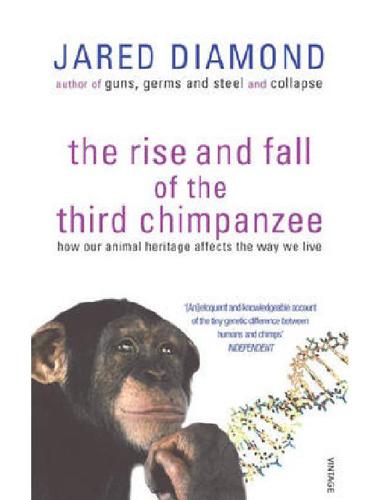
The Rise and Fall of the Third Chimpanzee
by
Jared Diamond
Published 2 Jan 1991
See under suggested reading for Chapter Eighteen for accounts of species' extinction in the Americas. The grisly end of Easter Island civilization is recounted by Patrick V. Kirch in his book The Evolution of the Polynesian Chiefdoms (Cambridge University Press, Cambridge, 1984). Easter's deforestation was reconstructed by J. Flenley, 'Stratigraphic evidence of environmental change on Easter Island', Asian Perspectives 22, pp. 33–40 (1979), and by J. Henley and S. King, 'Late Quaternary pollen records from Easter Island', Nature 307, pp. 47–50 (1984). Some accounts of the rise and fall of Anasazi settlement at Chaco Canyon are J.L.
…
Therefore, although it is now reasonably certain that the first pre-industrial peoples to reach islands wrought havoc among island species, the jury is still out on the question of whether this also happened on continents. From all this evidence that the Golden Age was tarnished by exterminations of species, let's now turn to evidence for destruction of habitats. Three dramatic examples involve famous archaeological puzzles: the giant stone statues of Easter Island, the abandoned pueblos of the American Southwest, and the ruins of Petra. An aura of mystery has clung to Easter Island ever since it and its Polynesian inhabitants were 'discovered' by the Dutch explorer Jakob Roggeveen in 1722. Lying in the Pacific Ocean 2,300 miles west of Chile, Easter surpasses even Henderson as one of the world's most isolated scraps of land.
…
The scene today is as if the carvers and movers had suddenly walked off the job, leaving an eerily silent landscape. When Roggeveen arrived, many statues were still standing, though new ones were no longer being carved. By 1840 all the erected statues had been deliberately toppled by the Easter Islanders themselves. How were such huge statues transported and erected, why were they eventually toppled, and why had carving ceased? The first of those questions was answered when living Easter Islanders showed Thor Heyerdahl how their ancestors had used logs as rollers to transport the statues and then as levers to erect them. The other questions were solved by subsequent archaeological and paleontological studies that revealed Easter's gruesome history.
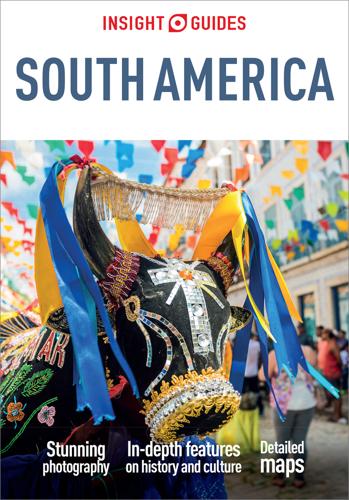
Insight Guides South America (Travel Guide eBook)
by
Insight Guides
Published 15 Dec 2022
The most likely explanation for the island’s decline is that the population of Easter Island had outgrown its resources; the food supply failed, the forests were felled and soil began to erode. Without wood for canoes to escape from the island, fighting and cannibalism broke out, and the moai were toppled. Fact Easter Island was given the name Rapa Nui (Great Rapa) by Tahitian sailors in the early 1860s, as it reminded them of an island called Rapa near their home. That island is now known as Rapa Iti, or Small Rapa. The people of Easter Island were to endure further suffering in the 19th century, when whalers and slave traders came to call.
…
Just before the border crossing near the bay of San Sebastian, a road branches south and wends its way to the remote sub-Antarctic forest park of Karukinka, beyond the magnificent Lago Deseado. View across Punta Arenas toward the Strait of Magellan. iStockphoto EASTER ISLAND This tiny Pacific outpost more than makes up for its remoteness with gigantic, mysterious monolithic figures and beautiful beaches. Main Attractions Rano Raraku crater Rano Kau volcano Orongo Hidden in the endless wastes of the Pacific, nearly 4,000km (2,500 miles) from the coast of Chile, the small remnant of volcanic rock named Easter Island – Rapa Nui in the local language - was once the most isolated place on earth. But in recent decades the huge and inexplicable statues left by the Polynesian culture have drawn attention from around the world.
…
Where once only one ship a year stopped here, today flights arrive six days a week from Santiago. This tiny triangular South Seas outpost measures just 24km (15 miles) across and has a population of only 7,800, but there is a lot to explore. Easter Island has a wonderful raw, unspoiled beauty with windswept coastlines, gentle, treeless hills, and a lush interior. Golden beaches and coconut palms are in short supply. Local woodcarver at Ahu Tahai. Bob Krist/Corbis Archeologists believe Easter Island may have been populated as long ago as AD 400. Norwegian adventurer and archeologist Thor Heyerdahl argued in his book Aku-Aku that the inhabitants came from South America, noting resemblances between the island culture and that of Tiahuanaco in Bolivia.
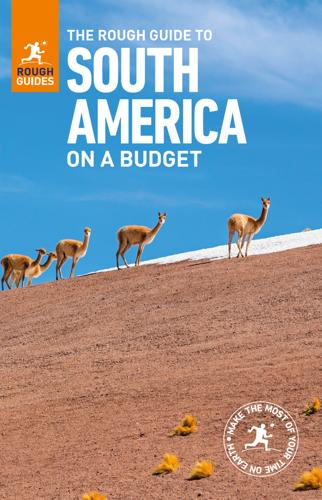
The Rough Guide to South America on a Budget (Travel Guide eBook)
by
Rough Guides
Published 1 Jan 2019
Surfers head to Chile’s top spot, Pichilemu, just south of Santiago, though there are excellent surfing and windsurfing opportunities all along the coast north of the capital, around Iquique in particular, and year-round swells on Easter Island. In the northern half of the country, lack of rain makes for good visibility and abundant marine life for divers and snorkellers, while Easter Island has world-class dive spots. Hiking, climbing and skiing Hiking in the Torres del Paine National Park, on Isla Navarino or anywhere in the south is limited to the summer, spring and autumn, but the rest of Chile can be visited at any time of year.
…
Several blocks of Avenida Valparaíso, Viña’s main thoroughfare, which runs from the square’s southwest corner, have been pleasantly pedestrianized, with a number of shops and places to eat. Museo Francisco Fonck Museo Francisco Fonck (4 Norte 784; Mon 10am–2pm & 3–6pm, Tues–Sat 10am–6pm, Sun 10am–2pm; CH$2700; 32 268 6753, museofonck.cl) has one of Chile’s most important Easter Island collections, plus some fascinating pre-Hispanic exhibits. One of the museum’s best pieces stands by the entrance in the garden: a giant moai, one of just six that exist outside Easter Island. The beaches Playa Caleta Abarca lies in a sandy cove south of Castillo Wulff, an impressive castle-like structure built on a rocky outcrop at the mouth of the estuary by a Valparaíso businessman in 1906.
…
El Resto del Sur Ricardo Maragano 146. The smartest restaurant in town, offering a short menu of pasta (CH$6500–10,000; try the centolla ravioli) and pizza (CH$9000–13,000), and a range of drinks, including a refreshing calafate sour. Daily 12.30–3.30pm & 8–11pm. Easter Island One of the most remote places on earth, over 2000km from the nearest inhabited part of the world, EASTER ISLAND entices visitors with the enduring mystery of its lost culture. A remarkable civilization arose here, far from outside influence on an island only 163 square kilometres in extent. It apparently declined rapidly and had all but disappeared by the time Europeans first arrived here.
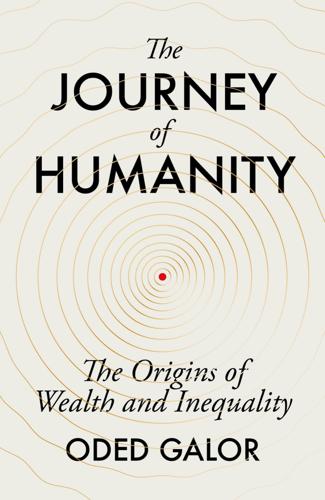
The Journey of Humanity: The Origins of Wealth and Inequality
by
Oded Galor
Published 22 Mar 2022
An extreme and dismal example of rapid population growth and over-extraction leading ultimately to collapse can be seen among the isolated Polynesian tribes, such as those who settled Easter Island in the Pacific Ocean at the beginning of the thirteenth century.[5] For nearly four hundred years, the human population of Easter Island expanded rapidly due to the abundance of vegetation and fishing waters. The Polynesians built a flourishing civilisation on the island and sculpted the famous and impressive moai statues, the largest of which stands ten metres tall. However, population growth eventually placed increasing pressure on the fragile local ecosystem. By the turn of the eighteenth century, Easter Island’s bird population had been wiped out and its forests destroyed, making it harder for the inhabitants to build and maintain fishing boats.
…
Population growth supported by food abundance and technological improvements prompted a gradual decline in per capita food availability from hunting and gathering until their temporarily enhanced living standards reverted towards subsistence. However, the particular biodiversity of the Fertile Crescent with its abundance of domesticable species of plants and animals granted these societies an alternative mode of subsistence that was largely unavailable to the Easter Islanders – adopting agriculture. Climatic conditions contributed, too.[8] With the end of the last ice age, around 11,500 years ago, land became more suitable for agriculture and climatic volatility and seasonality increased. Farming thus became a safer strategy of food production, despite being associated with inferior diet quality, than the richer but less predictable and increasingly scarcer one of hunting and gathering.
…
Farming thus became a safer strategy of food production, despite being associated with inferior diet quality, than the richer but less predictable and increasingly scarcer one of hunting and gathering. The viability of reliance on agriculture in the Fertile Crescent helped avert the ecological crisis that would later destroy the civilisation on Easter Island, allowing the region to support a significantly larger population. Indeed, by some accounts, a single acre of land could feed nearly a hundred times more farmers and shepherds than hunter-gatherers.[9] Ultimately, of course, the population size of agricultural societies stabilised at a new and higher level, but this time, in reverting to subsistence level, their living conditions actually became significantly lower than those of hunter-gatherers who had lived millennia before them, when existing ecological niches were not yet densely populated.
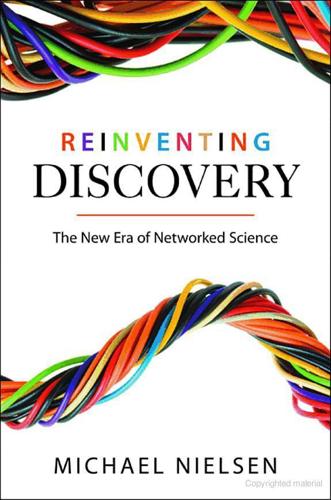
Reinventing Discovery: The New Era of Networked Science
by
Michael Nielsen
Published 2 Oct 2011
There was not a single tree higher than three meters anywhere on the island. Today, by analyzing pollen from the island, we know that Easter Island was formerly a subtropical forest, with at least 21 species of tree, some of them growing up to 30 meters high. Roggeveen also found not a single species of land bird. Today we know that at least six species of land bird used to live on the island. As the Easter Islanders destroyed their stocks of food and timber, they began to starve, and the population crashed, dropping perhaps 90 percent. Easter Island culture descended into warfare and eventually cannibalism. The author Thomas Homer-Dixon has coined the phrase “ingenuity gap” to describe the gap in difficulty between the problems faced by a society and that society’s capacity to solve problems.
…
Bridging the Ingenuity Gap The most isolated place in the world is Easter Island. It’s a tiny island in the southeast Pacific, just 25 kilometers (15 miles) across, 3,500 kilometers (2,200 miles) west of Chile, and 2,100 kilometers (1,300 miles) east of the Pitcairn Islands. The island was originally settled by Polynesian islanders, and its culture thrived for hundreds of years, with the population growing to somewhere between 10,000 and 30,000 people. But as the population grew, the islanders consumed more and more of the island’s resources, and sometime in the 1500s or 1600s, its society collpsed. When Easter Island’s European discoverer, the Dutch explorer Jacob Roggeveen, arrived in 1722, he found an island stripped of natural resources.
…
The cases were covered in remarkable detail at a community website called Groklaw (http://groklaw.net), started by a paralegal named Pamela Jones. p 167: Pharyngula is at http://scienceblogs.com/pharyngula/. The figures for the circulation of the Des Moines Register and the Salt Lake Tribune are from the Audit Bureau of Circulations [8]. p 170: My account of Easter Island is based on Jared Diamond’s book Collapse [53]. The reconstruction of Easter Island’s history is difficult and complex, and the subject of much contention among scholars; unsurprisingly, some disagree with Diamond’s account. p 171: On the reduction of life expectancy due to HIV/AIDS in the most highly affected African countries, see [103].
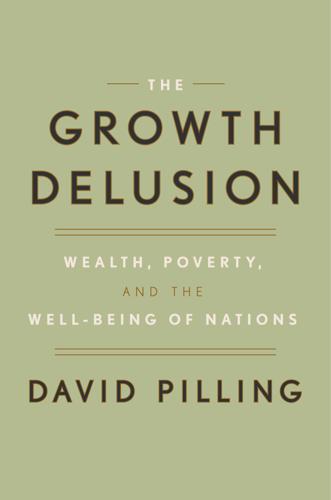
The Growth Delusion: Wealth, Poverty, and the Well-Being of Nations
by
David Pilling
Published 30 Jan 2018
Instead, it would have happened gradually, like the proverbial frog being boiled alive in an imperceptibly warming bath. Easter Island’s civilization collapsed not with a bang—or the strike of the last ax on the last tree trunk—but with a resigned croak. By the time Roggeveen arrived, its population had fallen to between a quarter and a tenth of its peak, the flora and fauna had been all but destroyed, and the civilization mangled. The islanders, who once feasted on a rich diet of porpoises, shellfish, and seafood, had apparently sunk into cannibalism. Their most “inflammatory taunt” was “The flesh of your mother sticks between my teeth.”8 Easter Island is the earth writ small, a parable of what can happen to societies if they neglect the wealth on which their livelihood depends.
…
Yet, without the acceptance of the science or the political will to act, all the data in the world is not enough to make societies adjust. Who knows whether the Easter Islanders, had they been in possession of sophisticated wealth accounts showing their practices were unsustainable, would have changed course and saved themselves? And yet measuring must be the starting point. Without that, as a species we may be doomed to repeat the Easter Islanders’ collective suicide. * * * — Dasgupta thinks of it like fish in a giant pond. “If the size of the fish population is low, then there is plenty of food in the pond and the fish population grows.
…
Getting a handle on wealth would give present generations the chance to see more clearly what sort of future they were leaving their children and grandchildren. The third, closely related, reason for considering wealth is sustainability. Put starkly, measuring wealth could help societies avoid collapse. Easter Island, 2,000 miles off the coast of South America, is a well-known example of a once-flourishing civilization that imploded. It is famous for its mysterious stone-head carvings, which now lie abandoned and desecrated.7 When the island was “discovered” by Dutch explorer Jacob Roggeveen on Easter day in 1722 it was already a barren grassland without a single tree or bush over ten feet tall.
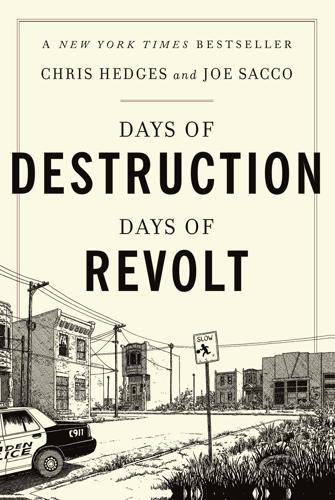
Days of Destruction, Days of Revolt
by
Chris Hedges
and
Joe Sacco
Published 7 Apr 2014
The House, in April 2011, voted 184 to 240 against legislation asserting that global warming was real.30 The same happened on Easter Island. The inhabitants, when they first settled the sixty-four-square-mile island during the fifth century, found abundant freshwater and woods. Seafood was plentiful. Within five or six centuries, Easter Island’s population swelled to some ten thousand people. The natural resources were depleted. “Forest clearance for the growing of crops would have led to population increase, but also to soil erosion and decline of soil fertility,” Paul Bahn and John Flenley write in Easter Island, Earth Island: Progressively more land would have had to be cleared.
…
See West Virginia Department of Environmental Protection Department of Social Services, 6 Deportations, 223, 227 DeSersa, Byron, 16 Developing Nations, The (Gamer), 38 Dienstbier, Jiří, 230 Dimon, Jamie, 233 Disability, 153, 157 Division of Air Quality, coal dust and, 162 Division of Criminal Justice, 89 Doria, Joe, 89 Douglass, Frederick: on struggle/progress, 160 Doyle, Michael, 76, 109 Heart of Camden project and, 102 on poverty, 110–111 on Virgilio, 112–113 Drug abuse, 99, 100, 102, 149, 154, 156–157, 158, 204 Drug trade, 8, 68, 73, 97, 102, 132, 154, 158 Due process, denial of, 263 Dumpeadores, 186–187 Dust containment dome, illustration of, 165 Dylan, Bob, 237 East German government, 227 dialogue with, 228–229 Easter Island, 150, 151 Easter Island, Earth Island (Bahn and Flenley), 151 Economic collapse, 151, 185, 231 Ecosystem, 245, 265, 266 destruction of, 237, 242, 260 Edgar (Guatemalan), 221 Education, 239 disemboweling, 265 El labor, 179, 187, 223 Elk Run Coal Company, 159, 161, 162, 164 dust containment dome by, 165 (illus.)
…
The soil had eroded and washed into the sea. The islanders began to fight over old timbers and were reduced to eating their dogs and the last nesting birds. “Are the events of three hundred years ago on a small remote island of any significance to the world at large?” Bahn and Flenley ask. “Like the Earth, Easter Island was an isolated system. . . . They carried out for us the experiment of permitting unrestricted population growth, profligate use of resources, destruction of the environment, and boundless confidence in their religion to take care of the future. The result was an ecological disaster leading to a population crash. . . .
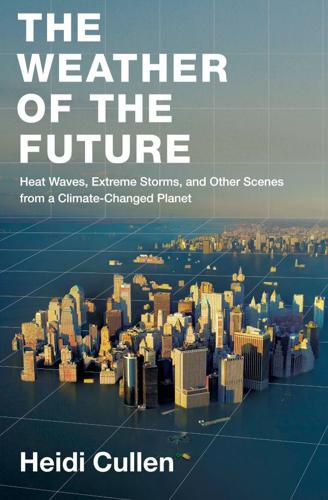
The Weather of the Future
by
Heidi Cullen
Published 2 Aug 2010
History has not been kind to those who have failed to understand the physics of the irreversible. Just look at a symbol of irreversibility, Easter Island. Settled by Polynesians sometime around a.d. 900, Easter Island is an isolated 66-square-mile chunk of volcanic land situated in the middle of the Pacific Ocean between Peru and Australia. The volcanic tuff was carved to create the enormous stone statues, called maoi, that made Easter Island famous. The Polynesians used tree trunks to transport and erect the maoi. In fact, trees made much of life on the remote island possible. And archaeological evidence suggests that at one time Easter Island had a diverse forest. The bark of certain trees was used to make rope or beaten into cloth; other trees were used to build canoes, or to make harpoons.
…
The fronds were ideal for thatching houses, and for making baskets, mats, and boat sails. It would seem as if the only things not made of wood on Easter Island were the maoi, which are thought to represent high-ranking ancestors. Wood was used for so many aspects of life on the island that by 1722, when the Dutch explorer Jacob Rogeveen arrived on the island, he saw no trees more than 10 feet tall. The gradual deforestation was nearly complete. Today, Easter Island serves as one of the most extreme examples of forest destruction in all of history. Deforestation made it impossible for the Polynesians to build the canoes that allowed them to catch porpoises.
…
It is believed that deforestation set off a chain of events that eventually led to collapse. The population dropped sharply and the construction of the maoi ceased. The only things left to eat on the island were rats and people. In his book Collapse, Jared Diamond says: I have often asked myself, “What did the Easter Islander who cut down the last palm tree say while he was doing it?” Like modern loggers, did he shout “Jobs, not trees!”? Or: “Technology will solve our problems, never fear, we’ll find a substitute for wood”? Or: “We don’t have proof that there aren’t palms somewhere else on Easter, we need more research, your proposed ban on logging is premature and driven by fear mongering”?

Ageless: The New Science of Getting Older Without Getting Old
by
Andrew Steele
Published 24 Dec 2020
However, it would be even better if we could find some way to mimic the biological effects of restricting diet, but with less of the tedious abstinence. Enter ‘DR mimetics’: drugs which activate many of the same mechanisms as DR itself (including autophagy) without the need to eat less. The story of DR mimetics begins over half a century ago, in November 1964, as the Canadian naval vessel Cape Scott left port in Canada bound for Easter Island. Easter Island is one of the most remote inhabited places on Earth, deep in the Pacific Ocean, some 3,500 kilometres from the coast of Chile. Known as Rapa Nui in the native Polynesian, it’s most famous for its monolithic moai: gigantic human-like stone statues with enormous heads. Prompted by plans from the Chilean government to build an international airport, intruding on centuries of almost complete isolation, the Cape Scott carried a 38-strong expedition team whose job it was to scientifically document the pristine island environment and its 949 native inhabitants before it was lost forever.
…
You’ve probably realised by now that rapamycin isn’t just an immune suppressant and anti-cancer drug (though Sehgal was right, and it is now licensed for use as both) – its biggest contribution to human health could be as anti-ageing medicine. And, if you one day take rapamycin or one of its derivatives to stave off old age, you have that ludicrous chain of events to thank. The Chilean government’s decision to build an airport on Easter Island in the 1960s has already saved millions of lives – and, if it works against ageing, it could rack up billions more. Scientists trying to work out how rapamycin actually works discovered that it interacts with a protein which was named after the drug: ‘target of rapamycin’, or TOR. TOR is a nexus in cellular metabolism, critical to some of the most fundamental processes in life.
…
While it’s still a useful drug for transplant patients and cancer sufferers, people with no pre-existing conditions are far less likely to want to run that gauntlet for the chance of a modest reduction in the rate of ageing. However, treatments for our anti-ageing arsenal may yet result from that expedition to Easter Island. Firstly, those side effects are observed at far higher doses of rapamycin than are needed for its use as an anti-ageing medication. In fact, some of them are even entirely reversed when it’s given at lower doses – counter-intuitively, while a high dose of rapamycin will suppress the immune system, a low dose doesn’t suppress it a bit as you might expect, but seems to enhance its performance.
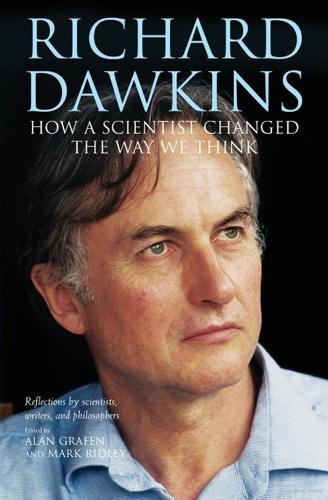
Richard Dawkins: How a Scientist Changed the Way We Think
by
Alan Grafen; Mark Ridley
Published 1 Jan 2006
A freeloader makes the world worse for everyone, but he makes it especially bad for those who are not freeloaders. And thus selection favours freeload-ing. The Easter Islander who pushed the Easter Island palm into extinction was relatively better off than those who had no access to that wood, and that is true even if everyone would have been advantaged by tree conservation. Much that is irrational in human worlds is the result of a conflict between what is good for a society as a whole, and what is good for specific individuals within society. Before the final ecological collapse on Easter Island, that society expended a huge chunk of its surplus in erecting huge stone statues (up to 75 tons), in a status competition between the chiefs of the competing clans.
…
The (apparently) irrational is sometimes a side effect of conflicts of interest. Individual rationality sometimes sums to collective idiocy. Easter Island is a famous example of humans at their most (self-) destructive: an island paradise reduced to an eroded barren wasteland, littered with broken statues and warring clans. In his book Collapse, Jared Diamond wonders about the psychology of over-exploitation, imagining it as self-deceptive wishful thinking: I have often asked myself, ‘What did the Easter Islander who cut down the last palm tree say while he was doing it?’. Like modern loggers, did he shout ‘Jobs, not trees’?
…
M., 28 cultural evolution, 50, 58, 60, 62, iii-12, 140, 146, 176-87, 219, 228, 229 cultural relativism, 27, 240 Daly, Martin, 199-200 Darwin, Charles, 40, 66, 148, 270 animal altruism and, 76-7 natural selection, 165-6 progressionism, 149, 152, 156-7, 158, 161 n. 39 religious views, 141, 237 Darwin, Erasmus, 146 Darwinism, 14-15, 68, 69, 71-2, 73, 102, 103-4, 231-2, 250 Davies, Nick, 8, 195 Dawkins, Richard algorithmic biology, 30, 118-23 animal welfare, 252 at Berkeley in the 60s, 30-1, 252-3 criticism of, 85-9, 96 n. 37, 101 criticism of postmodernism, 240 humanism, 249-50 at ‘Humanity 3000’ conference, 228-30 impersonation of, 47 memes theory, 186 personality, 243-4,272-4 political opinions of, 248-53, 257 progressionist position of, 149-59 readership appeal of, 270-6 scepticism, 230-4 sense of wonder, 234, 238-40, 243 use of language, 107-8, 132-7, 150-1, 155-8, 167-72, 195, 203, 236, 239, 266, 269, 27I-2 views on religion, I4I, I78, 219-21, 232-3, 244-7, 273-4 writing skill, 266-7, 269 see also under individual titles Day, Karen, 9, 10 de Waal, Frans, 248, 250 DeBruine, Lisa, 193 deception, 18, 110-11, 183, 184, 195-7 Dennett, Daniel C., 127 design, 36-40, 126, 127-8, 140-1, 186-7, 215, 231-3, 244, 248, 258, 259, 267 Devil’s Chaplain, A (Dawkins), 219, 237, 269 Diamond, Jared, 217 Dickens, Charles, 272 Diderot, Denis, 146 disease, 4, 8-12, 154, 261 DNA, 53, 56, 61, 66, 109, 117, 134, 180-1, 182, 256, 258 Dobzhansky, Theodosius, 147 Easter Islanders, 217, 218 Eddington, Arthur, 265 Edwards, A. W. F., 70 Einstein, Albert, 14 Eldredge, Niles, 90 Encephalization Quotient (EQ), I49-5° environmental interaction, 40-1, 48, 54-5, 126, 127, 168, 170, I74 -5 ESS (Evolutionary Stable Strategy), 82, 84, 86, 94-5 n. 21 ethology, 28-9, 79, 80, 87, 88, 96 n. 27, 110-11 evolution, 87, 255-6, 275-6 biomorphs, II8 evidence for, 232 evolvability of, 119, 150, 151, I58 Orgel’s Second Rule of, 109 progression, 145-59 religion and, 237-8 social, 76, 81-2, 153, 210-11 see also cultural evolution evolutionary psychology, 54, 75, 90, 173, 187, 210, 214, 215-16, 250, see also sociobiology Ewald, Paul, 8 existentialism, 257, 258, 260-2 Extended Phenotype, The (Dawkins), 15, 32-41, 47, 87-8, I04^ 13^ I34, I55, 167, 182, 194, 213, 267 facial resemblance, 192, 193, 196 faith, 178, 233, 237, 241 n. 5, 244-7, 256, 274 family studies, 191-200 Farrer, Austin, 237, 238, 241 n. 5 fecundity, 66, I77-8 Fehr, Ernest, 210 fidelity, 66, 177, 183 Fisher, R.
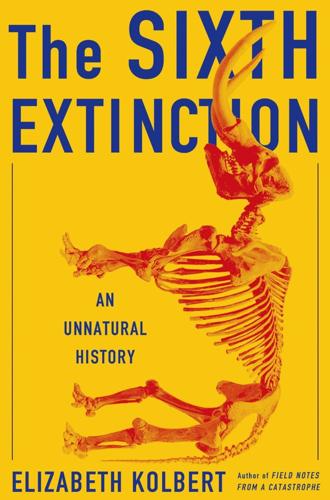
The Sixth Extinction: An Unnatural History
by
Elizabeth Kolbert
Published 11 Feb 2014
The Pacific rat, Rattus exulans, a native of southeast Asia, traveled with Polynesian seafarers to, among many other places, Hawaii, Fiji, Tahiti, Tonga, Samoa, Easter Island, and New Zealand. Encountering few predators, stowaway Rattus exulans multiplied into what the New Zealand paleontologist Richard Holdaway has described as “a grey tide” that turned “everything edible into rat protein.” (A recent study of pollen and animal remains on Easter Island concluded that it wasn’t humans who deforested the landscape; rather, it was the rats that came along for the ride and then bred unchecked. The native palms couldn’t produce seeds fast enough to keep up with their appetites.)
…
It’s only fully modern humans who start this thing of venturing out on the ocean where you don’t see land. Part of that is technology, of course; you have to have ships to do it. But there is also, I like to think or say, some madness there. You know? How many people must have sailed out and vanished on the Pacific before you found Easter Island? I mean, it’s ridiculous. And why do you do that? Is it for the glory? For immortality? For curiosity? And now we go to Mars. We never stop.” The same stretch of chromosome 5 from the human, Neanderthal, and chimp genomes. If Faustian restlessness is one of the defining characteristics of modern humans, then, by Pääbo’s account, there must be some sort of Faustian gene.
…
(Oxford: Oxford University Press, 2008), 89. “We have already left a record”: Ibid., 240. “a grey tide”: Quoted in William Stolzenburg, Rat Island: Predators in Paradise and the World’s Greatest Wildlife Rescue (New York: Bloomsbury, 2011), 21. A recent study of pollen: Terry L. Hunt, “Rethinking Easter Island’s Ecological Catastrophe,” Journal of Archaeological Science 34 (2007): 485–502. “a species or two of large naked rodent”: Zalasiewicz, The Earth After Us, 9. “Because of these anthropogenic emissions”: Paul J. Crutzen, “Geology of Mankind,” Nature 415 (2002): 23. “as future evolution”: Jan Zalasiewicz et al., “Are We Now Living in the Anthropocene?”

Model Thinker: What You Need to Know to Make Data Work for You
by
Scott E. Page
Published 27 Nov 2018
Among the most famous is the collapse of the Polynesians on Easter Island, described by Jared Diamond.2 Easter Island lies over two thousand miles west of Chile in the South Pacific, with no other inhabitable island within a thousand miles in any direction. Given that location, Easter Islanders have always had to manage for themselves. For over a thousand years they lived well. Some estimate that by the early seventeenth century, Easter Island’s population exceeded fifteen thousand people. In the sixteenth century, the Easter Islanders marshaled sufficient resources to free up labor to build giant stone heads, called maoi, that weigh up to eighty tons.
…
While the Easter Islanders were busy constructing maoi, they were not cooperating in the management of their forests. By 1722, when Europeans first landed on the island, food was relatively scarce and the population had dropped to around two thousand. Few trees over ten feet tall remained. Many species of birds and animals had gone extinct. To use Diamond’s phrasing, the civilization collapsed. The collapse became complete when viruses carried by the Europeans killed nearly all of the remaining population. According to Diamond’s account, the collapse of the civilization on Easter Island, as well as the collapses of the Mayans in Central America, the Anasazi in the American Southwest, and the Vinlanders on Greenland, resulted from a combination of overharvesting of natural resources (caused by institutional and cultural failures) and climatic changes.
…
According to Diamond’s account, the collapse of the civilization on Easter Island, as well as the collapses of the Mayans in Central America, the Anasazi in the American Southwest, and the Vinlanders on Greenland, resulted from a combination of overharvesting of natural resources (caused by institutional and cultural failures) and climatic changes. The Vinlanders grazed animals on marginal land and tore up fragile sod to make houses. In short order, the land became barren from overuse, and the Vinlanders starved. Like the Easter Islanders, the Vinlanders had failed to manage a common pool resource. By chopping down too many trees and using up too much turf, they produced a collapse. Though evocative and compelling, these examples lead many to see collective action problems as something of relevance only in the past. That framing is unfortunate.
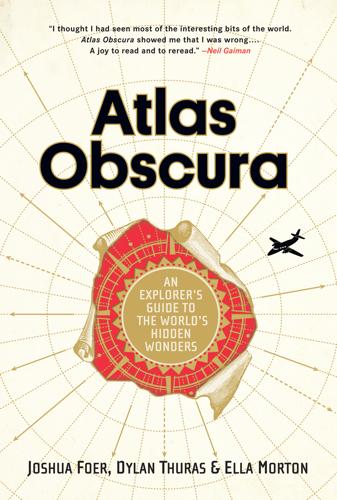
Atlas Obscura: An Explorer's Guide to the World's Hidden Wonders
by
Joshua Foer
,
Dylan Thuras
and
Ella Morton
Published 19 Sep 2016
What were the plans for El Gigante and the rest of the moai? Why carve so many and just leave them in a pile? It may have been a case of ambition eclipsing resources. Anthropologists have argued that the Easter Islanders used up all of their island’s resources in the process of building their society. The two major tribes of Easter Island lived in a tropical rain forest, a paradise of food and fishing, with plenty of time to put into the “great work” of statues. According to Easter Island’s resident archaeologist, Edmundo Edwards, the Polynesians used to sail back and forth across great distances among the Pacific islands, but eventually they used up all the large trees, thereby losing the ability to build large canoes.
…
Now home to a few hundred people, it is a place of extreme beauty, with coral reefs, white-sand beaches, blue lagoons, and abundant tropical fruits—not a bad place to be stranded. Two-hour flights from Santiago depart several times per week. Hike to Selkirk’s Lookout—a 3-hour trek that the marooned sailor made daily to watch for rescue ships. 33.636666 78.849588 The Unfinished Giant of Easter Island ISLA DE PASCUA, VALPARAÍSO Between 1400 and 1600 CE, the Polynesian inhabitants of Easter Island carved 288 stone statues, or moai, and hauled them across the island, where they were installed on ceremonial pedestals. These representations were erected between the village and “chaos”—the ocean—as a wall of protection. Remarkably, the 288 figures represent less than a third of the statues that were created.
…
According to Easter Island’s resident archaeologist, Edmundo Edwards, the Polynesians used to sail back and forth across great distances among the Pacific islands, but eventually they used up all the large trees, thereby losing the ability to build large canoes. At this point, they became effectively trapped. The old middens (a dump for domestic waste) show that fish bones got progressively smaller, as the Polynesians could no longer sail out to deep fisheries. Flights to Easter Island leave from Santiago. The trip takes about 5 hours. 27.121191 109.366423 Easter Island’s greatest statue was never erected. Weighing more than two 737s, it’s unclear how the islanders ever planned to move it. Also in Chile El Tatio Geysers Antofagasta · With over 80 active geysers, some of which you can bathe in, El Tatio is the third-largest geyser field in the world.
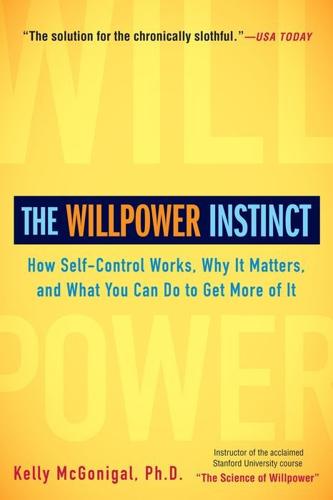
The Willpower Instinct: How Self-Control Works, Why It Matters, and What You Can Doto Get More of It
by
Kelly McGonigal
Published 1 Dec 2011
Presented at the 2008 World Meeting of the International Association for Research in Economic Psychology and the Society for Advancement of Behavioral Economics, Rome. Page 77—For a dramatic telling of the Easter Island tragedy, see Diamond, J. Collapse: How Societies Choose to Fail or Succeed. New York: Viking, 2004. For an economic model, see Bologna, M., and J. C. Flores. “A Simple Mathematical Model of Society Collapse Applied to Easter Island.” EPL (Europhysics Letters) 81 (2008): 480–86. Page 78—“Choice architecture”: Thaler, R. H., and C. R. Sunstein. Nudge: Improving Decisions About Health, Wealth, and Happiness. New York: Knopf, 2008.
…
In contrast, players who had not performed the distraction task still had a forest when the simulation ended at twenty-five years, and they had made more money while saving a few trees. Cooperation, economic success, environmental stewardship—I don’t know about you, but I know which players I’d put in charge of my forest, business, or country. The Forest Game is just a simulation, but one cannot help being reminded of the eerily similar demise of the Easter Island forest. For centuries, the lush, densely forested island in the Pacific Ocean supported a thriving civilization. But as the population grew, the island’s inhabitants started cutting down trees for more land and wood. By the year 800 C.E., they were cutting down trees faster than the forest could regenerate.
…
By the 1500s, the forest was wiped out, along with many species the inhabitants depended on for food. Starvation and cannibalism became widespread. By the late 1800s, 97 percent of the population had died or left the barren island. Since then, many people have wondered, what were the residents of Easter Island thinking as they destroyed their forests and society? Couldn’t they see the long-term consequences of what they were doing? We can’t imagine ourselves making such obviously shortsighted decisions, but we shouldn’t be so sure. Humans have a natural tendency to focus on immediate gains, and changing course to prevent future disaster takes enormous self-discipline from all members of a society.

The Wood Age: How One Material Shaped the Whole of Human History
by
Roland Ennos
Published 18 Feb 2021
This means that thin shell blades can withstand bending forces and can perform almost as well as metal ones. Several lines of evidence back up the idea that the techniques used to build plank boats were passed on to the coastal American tribes by the Polynesians. For a start, these parts of the Americas are closest to the most easterly Polynesian islands—Hawaii and Easter Island. The boatbuilding tradition of the Chumash also dates to around thirteen hundred years ago, the time when the Polynesians first reached Hawaii. There certainly seems to have been contact as the Polynesians were raising sweet potatoes, which they must have obtained from the American continent, some thousand years ago, while the Chumash started to use complex fishhooks like those used by the Polynesians at around the same time.
…
These deforestation myths have cropped up again and again throughout history; deforestation has been blamed for the fall of several ancient Mesopotamian empires, Mycenaean Greece, the Mayan Empire, the Venetian Republic, and, most devastatingly, the collapse of civilization itself among the Rapa Nui of Easter Island. Perhaps the most frequently cited example of all is the foundation myth of the British Empire: that the construction of the Royal Navy destroyed the country’s great primeval oak forests. The truth is very different. We have certainly had a huge effect on the world’s forests: reducing forest cover and changing the composition of the forests that do remain.
…
In the last two centuries farmers have abandoned their small farms on the unproductive soils of Connecticut and Surrey, letting them revert to the secondary woodland that now covers the land around the commuters’ dormitory villages. And the deforestation myths themselves do not stand up to closer examination. Take one of the most cited myths, the environmental destruction of Easter Island. The Rapa Nui did indeed clear the island of its forest cover, but this was a perfectly rational thing to do. The palms that dominated the forest could not have produced useful timber, since palms are monocotyledonous plants that do not make proper wood. And the shed fronds of palms smother the forest floor, forming an infertile blanket that prevents the growth of any understory plants.
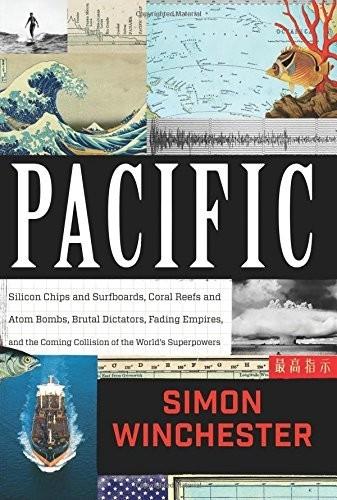
Pacific: Silicon Chips and Surfboards, Coral Reefs and Atom Bombs, Brutal Dictators, Fading Empires, and the Coming Collision of the World's Superpowers
by
Simon Winchester
Published 27 Oct 2015
Hawaii’s shopping malls and warplanes and mountaintop telescopes and aircraft carriers and its legions of resident oceanographers and meteorologists may give the impression that the islands have fully entered and embraced the modern era. Yet, culturally, Hawaii is still Polynesia, linked firmly to Easter Island and the Cook Islands and Aotearoa (“the Land of the Long White Cloud”), New Zealand. Hawaii, for all its apparent intimacy with the American mainland, still resonates with the old Pacific stories of Herman Melville, of Robert Louis Stevenson. It is still emotionally connected to the Pacific that so enchanted poets such as Rupert Brooke, who spent seven idyllic months two thousand miles farther south, in Tahiti, and memorialized it in lines that, once heard, are long remembered: Taü here, Mamua, Crown the hair, and come away!
…
Five thousand years BP (using the new dating convention with which I began this book; 3000 BC as it used to be), islanders from the archipelagos of the Philippines and in the South China Sea had started moving both westward and eastward in canoes, populating as they did islands in the Indian Ocean as far away as Madagascar, and in the Pacific Ocean as distant as Easter Island. The evidence for their having done so is overwhelming: pottery shards, imported animal types, and words of common origin, together with the kinds of boats they used, of which images appear in ancient pictographs. They sailed, they paddled, they established communities, they planned return voyages, they traded, they planted gardens, and they fished.
…
Rather, we see them as they see themselves: as a landed people separated by expanses of sea. But the achievements of the early people of Polynesia are quite different, and are such as to set them very much aside. The distances for them were truly prodigious. Their present-day homeland, roughly a triangle bounded by Hawaii in the north, Easter Island to the east, and the hulking mass of New Zealand to the west (or, to use the Polynesians’ names for these last two, Rapa Nui and Aotearoa), is almost entirely marine, nearly all aqueous. Perhaps a new word should be coined for where such people live: they inhabit not a homeland but a home sea, in this case an expanse of fourteen million square miles of ocean, dusted with islands that are few and almost all far between.
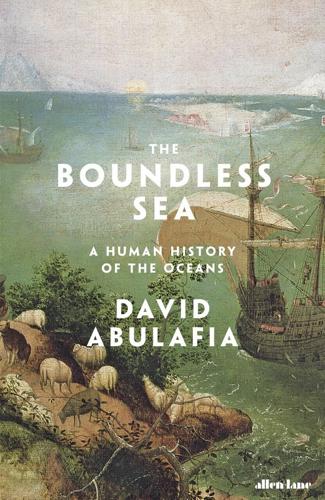
The Boundless Sea: A Human History of the Oceans
by
David Abulafia
Published 2 Oct 2019
Skjølsvold, Archeological Evidence of Pre-Spanish Visits to the Galápagos Islands (Oslo, 1990; originally published in American Antiquity , vol. 22 (1956), no. 2, part 3). 20. Flenley and Bahn, Enigmas of Easter Island , p. 34. 21. Irwin, ‘Voyaging and Settlement’, p. 85. 22. Flenley and Bahn, Enigmas of Easter Island , p. 40. 23. Lewis, We, the Navigators , p. 353; Sharp, Ancient Voyagers , pp. 153–5. 24. Flenley and Bahn, Enigmas of Easter Island , pp. 54–5, 75–7, 184–5. 25. Ibid., p. 68. 26. A. Di Piazza and E. Pearthree, ‘A New Reading of Tupaia’s Chart’, Journal of the Polynesian Society, vol. 116 (2007), pp. 321–40; Thompson, Sea Peoples , pp. 88–98. 27.
…
The word used by the Quechua Indians in South America for the sweet potato, kamote , has been imaginatively compared to Easter Island kumara and Polynesian kuumala .20 Seasonal winds made journeys to South America possible, but there is no evidence for any attempt to settle there and no evidence for active commerce between South America and any part of Polynesia.21 It might be argued that the sweet potato was diffused by the Spaniards when they gained control over trans-Pacific trade routes in the sixteenth century. However, the places where they were most actively cultivated lay some way from the Spanish trade routes – Hawai’i, New Zealand and Easter Island – and carbonized tubers of sweet potato excavated by archaeologists in New Zealand, Hawai’i and Mangaia can all be dated to the period before the arrival of the Europeans.
…
Even more remarkable than possible contact with the admittedly vast landmass of South America, impossible to miss if you go far enough eastwards, is the settlement of Rapa Nui, or Easter Island, in the middle of nowhere. And yet, by contrast with Hawai’i, it at least lies on the plane of Polynesia, and reaching Rapa Nui posed less of a challenge in dealing with the winds. There are probably as many theories about the significance of the island’s enigmatic giant statues as there are statues. The question here is, rather, by what means navigators reached Rapa Nui and what sort of outside contacts the islanders maintained after its discovery and settlement. Heyerdahl, naturally, saw Easter Island as one of the first bases of his pioneering Peruvian sailors; the locals obliged him by offering him pieces of South American pottery, but they were just modern Chilean ceramics (the island is governed by Chile) – they wanted to keep the eccentric Norwegian gentleman happy.
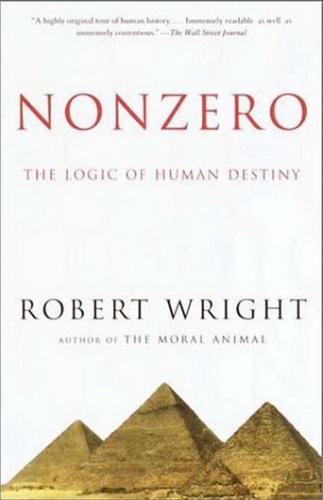
The Moral Animal: Evolutionary Psychology and Everyday Life
by
Robert Wright
Published 1 Jan 1994
But other common forms of chiefly self-advertisement are more enduring, such as monumental architecture, often built in tribute to (and as a reminder of ) the chief ’s distinguished lineage. Hence the huge mounds built in North America as tombs for past chiefs. Or the pyramid-like temples on Tahiti, or the earliest ziggurats in Mesopotamia. The giant stone heads on Easter Island, up to ten meters tall, also suggest social organization beyond the Big Man level. Using these and other hallmarks† of a chiefdom, archaeologists have found a clear pattern: After agriculture first spreads across a region, chiefdoms tend to follow. This doesn’t mean that farming is a prerequisite for a chiefdom.
…
The same pattern—first farming, then chiefdoms—is found earlier in continental Europe. (Julius Caesar would happen upon chiefdoms when he ventured into Germany and Gaul.) In Mesoamerica—Central America and the south of modern Mexico—farming villages were common by 2000 B.C., and within a thousand years, immense stone heads, in the Easter Island genre, had been carved. And so on. Chiefdoms, the scholar Randolph Widmer has written, “were at various times the most common form of society found throughout Europe, Africa, the Americas, Melanesia, Polynesia, the Near East, and Asia.” Around the world, with the multiple invention and rapid spread of agriculture, cultural evolution marched on.
…
And within the Old World, the origin of writing in China after 2000 B.C. was probably independent of its origin in the Near East around 3000 B.C. The academic consensus is that writing arose at least three times independently. And, just as there are “proto-agricultural” and “horticultural” societies—illustrating agriculture in the process of evolving—there are examples of writing in mid-evolution. Easter Island featured a primitive and apparently indigenous script called rongorongo. Some scholar talk as if writing arose in the Near East, the New World, and China for very different purposes. The simplest version of the stereotypes runs something like this: The Sumerian script of the Near East was heavily economic in function; the Maya were more inclined to history, politics, and religion (including an elaborate astronomy-cum-astrology); the Chinese used their script to tell fortunes.
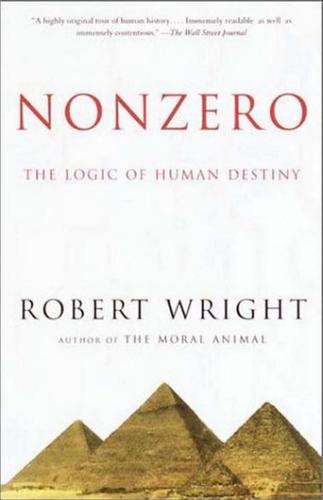
Nonzero: The Logic of Human Destiny
by
Robert Wright
Published 28 Dec 2010
But other common forms of chiefly self-advertisement are more enduring, such as monumental architecture, often built in tribute to (and as a reminder of ) the chief ’s distinguished lineage. Hence the huge mounds built in North America as tombs for past chiefs. Or the pyramid-like temples on Tahiti, or the earliest ziggurats in Mesopotamia. The giant stone heads on Easter Island, up to ten meters tall, also suggest social organization beyond the Big Man level. Using these and other hallmarks† of a chiefdom, archaeologists have found a clear pattern: After agriculture first spreads across a region, chiefdoms tend to follow. This doesn’t mean that farming is a prerequisite for a chiefdom.
…
The same pattern—first farming, then chiefdoms—is found earlier in continental Europe. (Julius Caesar would happen upon chiefdoms when he ventured into Germany and Gaul.) In Mesoamerica—Central America and the south of modern Mexico—farming villages were common by 2000 B.C., and within a thousand years, immense stone heads, in the Easter Island genre, had been carved. And so on. Chiefdoms, the scholar Randolph Widmer has written, “were at various times the most common form of society found throughout Europe, Africa, the Americas, Melanesia, Polynesia, the Near East, and Asia.” Around the world, with the multiple invention and rapid spread of agriculture, cultural evolution marched on.
…
And within the Old World, the origin of writing in China after 2000 B.C. was probably independent of its origin in the Near East around 3000 B.C. The academic consensus is that writing arose at least three times independently. And, just as there are “proto-agricultural” and “horticultural” societies—illustrating agriculture in the process of evolving—there are examples of writing in mid-evolution. Easter Island featured a primitive and apparently indigenous script called rongorongo. Some scholar talk as if writing arose in the Near East, the New World, and China for very different purposes. The simplest version of the stereotypes runs something like this: The Sumerian script of the Near East was heavily economic in function; the Maya were more inclined to history, politics, and religion (including an elaborate astronomy-cum-astrology); the Chinese used their script to tell fortunes.
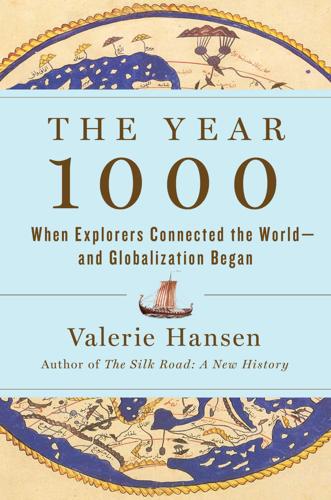
The Year 1000: When Explorers Connected the World―and Globalization Began
by
Valerie Hansen
Published 13 Apr 2020
In around 800 BC the ancient Polynesians departed from Micronesia, to the east of the Philippines, and reached Samoa. There they stayed 1,800 years before, in AD 1025–1120, they sailed to the Society Islands, located at the center of the Pacific Triangle, which connects Hawaii, Easter Island, and New Zealand. And between 1190 and 1290 they moved simultaneously in three directions: north to Hawaii, southwest to New Zealand, and east to Easter Island, or Rapa Nui. Each of these journeys is more than 2,500 miles (4,000 km) long. Why did the Polynesians decide to explore the entire Pacific just after 1000? Possible answers include an environmental crisis, a sudden breakthrough in technology (perhaps the invention of the double canoe), or even an El Niño event, such as increased winds, which would have facilitated travel to more distant islands.
…
Early sailors took advantage of the North Pacific Gyre to continue their expansion across the Pacific in double canoes bearing sails; like the Vikings, they did not use any navigational instruments. Departing from Samoa, they reached the Society Islands in around 1025, and it took them two and a half centuries longer to reach Hawaii, Easter Island, and New Zealand. In fact, if the conditions are right, one can cross the Pacific drifting on ocean currents with no sail at all, as fourteen unfortunate Japanese sailors discovered. On December 2, 1832, their wooden fishing vessel, some 50 feet (15 m) long, set off from Nagoya on the east coast of Japan and headed for Tokyo.
…
At present we have no way of knowing whether these early sailors used double canoes or larger boats with multiple sails. We are certain that Polynesian navigators ventured east into the Pacific at the same time as the Malay voyages to Madagascar. Starting from Micronesia, the Polynesians gradually fanned out, reaching Fiji, Samoa, Hawaii, Easter Island (Rapa Nui), and New Zealand, the last place on earth to be occupied by humans, in around AD 1300. The settlers left behind shards of distinctive pottery, which make it possible to trace their route, though controversy still surrounds the exact date when each island was settled. There are always two camps: the proponents of a long chronology who see the settlement of a given place as occurring earlier, and those in favor of a short chronology who believe in more recent occupation.
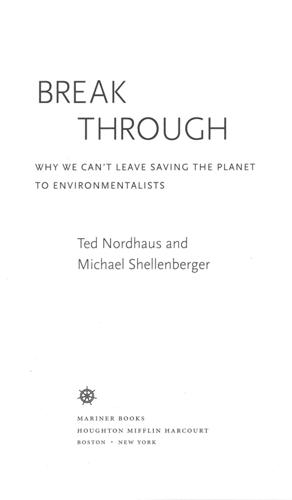
Break Through: Why We Can't Leave Saving the Planet to Environmentalists
by
Michael Shellenberger
and
Ted Nordhaus
Published 10 Mar 2009
But Diamond ignores several decades’worth of research into political psychology and social values, which offers far more clues to understanding today’s ecological crises than the collapse of relatively tiny premodern societies. Diamond gave Collapse the subtitle How Societies Choose to Fail or Succeed, in the belief that societies choose how and whether to adapt to changing circumstances. But neither the Easter Islanders nor the Greenland Norse ever convened tribal councils to choose collective suicide. The Easter Islanders, whom Diamond describes as having logged all of their trees in order to erect massive stone faces on their hillsides, and the Greenland Norse, who chose starvation over eating fish, were indeed behaving in ways that were perfectly rational, given their values, their cultures, and their belief systems.
…
“I decided to devote most of my career efforts at this stage of my life to convincing people that our problems have to be taken seriously and won’t go away otherwise,” he wrote. But in the end, Collapse is an argument against human attempts to control, ignore, or live out of balance with Nature. The stories that Diamond tells—of Greenlanders overgrazing their land and refusing to eat plentiful fish, of Easter Islanders and Maya kings deforesting their landscape in service of false idols—are tales of human hubris, of societies that neglected the laws of Nature in pursuit of human follies and were punished accordingly. One of the primary cautionary tales in Diamond’s book is of the Greenland Norse, whose civilization collapsed when irrational taboos triumphed over survival needs in a steadily worsening food crisis.
…
The Easter Islanders, whom Diamond describes as having logged all of their trees in order to erect massive stone faces on their hillsides, and the Greenland Norse, who chose starvation over eating fish, were indeed behaving in ways that were perfectly rational, given their values, their cultures, and their belief systems. In the end, Diamond projects the theological narrative of humanity’s fall from Nature onto the societies that he writes about, asserting that “[as] a result of lust for power, Easter Island chiefs and Maya kings acted so as to accelerate deforestation rather than to prevent it.”12 In so doing, Diamond is unaware that he has told a biblical rather than a scientific story, a theological cautionary tale wrapped in the white laboratory coat of Science. 4. For years, environmentalists have credited their strict and literal adherence to science for their successes, though not, notably, their failures.

Supertall: How the World's Tallest Buildings Are Reshaping Our Cities and Our Lives
by
Stefan Al
Published 11 Apr 2022
Yet this global and historic effort required an accumulation of inventions from all over the world—Roman engineering, American rebar, and a German pump—all in the Arabian Desert. HUMANS ARE NO strangers to shortsightedness in building. Easter Island was once a thriving civilization, until the natives wasted natural resources on creating enormous statues. Several anthropologists believe the Easter Islanders cleared trees to make logs to roll the statues. One tree at a time, they eventually wiped the island clean. The deforestation caused erosion, which led to food shortages, creating conflict, internal violence, and eventually, societal collapse.
…
Projects like this have led to the coining of the “Skyscraper Curse,” an assumption that the tallest towers signal economic decline.44 In tandem with the Metropolitan Life Insurance Building, the building of the Chrysler Building and the Empire State Building closely preceded the Great Depression. The Burj Khalifa was completed in 2009 just as the Dubai property market collapsed. Throughout history, the hubris of tall structures, like the Tower of Babel or the Easter Island moai, have seemed to tempt the gods, leading to societal breakdown. In 2020, with a wave of new supertalls in New York still under construction, COVID-19 hit. The pandemic brought the city to an abrupt halt, including its feverish construction activity. Was the curse striking again, with New York’s record-breaking skyscrapers the latest symptoms of excess, and looming economic decline?
…
See also glass Debord, Guy, 171 de Botton, Alain, 164, 165–66 de Mestral, George, 82–83 Deng Xiaoping, 101 density, and human behavior, 228–29 de Portzamparc, Christian, 195 design computational methods, 9, 84 principles broken by super slenders, 178 structural efficiency and, 81–82 sustainable ratings of, 137 DeWitt Chestnut Apartments, Chicago, 61 digital twin, 140, 264 Diller Scofidio + Renfro, 201 domes, 27–28, 32, 56, 82, 130–31 Dubai, 3, 13, 36, 37. See also Burj Khalifa, Dubai Easter Island, 41, 207 Eastgate Centre, Zimbabwe, 140–41 economic growth, 12–13, 239 economic height, 188 Eiffel Tower, 6, 7, 88, 89, 145–46, 167, 169 electric lighting, 12, 115, 121, 133, 218 elevator cable, 108–9 elevator consultant, 97 elevator music, 95 elevator operators, 94–95, 107 elevators accidents with, 92, 94–95, 106–7 advances in, 5, 87, 99–100, 104–6, 107, 109–11 air pressure in, 106, 107–8 as an attraction, 97–99 in China, 85, 87, 101, 103, 107 COVID-related changes to, 210 energy consumption by, 109–10 Futurists’ vision for, 96–97 history of, 89–93 howling of, 95, 105, 106 human psychology and, 95–96 partial vacuum in shaft, 105–6 safety and, 11, 87–88, 91–92, 95, 106–7 on side of HSBC Building, 132 sideways, 110–11 speed of, 5, 87, 92, 93, 99, 100–101, 104, 107–8 stacked, 5, 99 of super slenders, 178 wind forces and, 104–5, 106 elevator-testing towers, 104–5, 110 Elzner, A.

The Future Is Faster Than You Think: How Converging Technologies Are Transforming Business, Industries, and Our Lives
by
Peter H. Diamandis
and
Steven Kotler
Published 28 Jan 2020
Aubrey de Grey: Kira Peikoff, “Anti-Aging Pioneer Aubrey de Grey: ‘People in Middle Age Now Have a Fair Chance,’ ” Leapsmag, January 30, 2018. See: https://leapsmag.com/anti-aging-pioneer-aubrey-de-grey-people-middle-age-now-fair-chance/. The Anti-Aging Pharmacy Easter Island is remote: Joe Schwarz, “The Right Chemistry: Easter Island Might Just Hold the Key to Fighting Aging,” Montreal Gazette, March 5, 2019. rapamycin: Bethany Halford, “Rapamycin’s Secrets Unearthed,” C&EN, July 18, 2016. See also: Bill Gifford, “Does a Real Anti-Aging Pill Already Exist?” Bloomberg, July 12, 2015. coating heart stents: P.
…
And this means that possibly you, and definitely your children, will have the potential to tack decades onto your lives, simply because, as time passes, all of us will intercept a gaggle of anti-aging technologies along the way. Let’s turn our attention to a few of the most promising ones. The Anti-Aging Pharmacy Easter Island is remote. It’s exotic. It’s home to strange rumors and stone heads and sometimes strange rumors about stone heads. Some say the elders, with the right spells, can wake the heads from their slumber, controlling them like a giant stone army. Others say the heads themselves have the control—over your life force, with both the ability to steal it, bringing on an early death, or amplify it, conferring virility and strength on a chosen few.
…
Others say the heads themselves have the control—over your life force, with both the ability to steal it, bringing on an early death, or amplify it, conferring virility and strength on a chosen few. Then, in the mid-1960s, a small team of researchers discovered that this last bit, that conferring of strength and virility part, might be more than a rumor. It started when the very small and very isolated community living on Easter Island decided they’d had enough. Enough smallness. Enough isolation. It was time, they decided, to build an airport. Scientists freaked out. One of the most ecologically untainted regions of the world was about to lose its purity. In an emergency effort, an international team was rushed in to collect flora, fauna, and microbial samples, including—most critically for this story—dirt excavated from beneath one of the island’s mysterious heads.

Human Frontiers: The Future of Big Ideas in an Age of Small Thinking
by
Michael Bhaskar
Published 2 Nov 2021
We are different to those peoples in every respect bar one; on the grandest level we too are an island. This is what remains so haunting about those collapsed civilisations: in cosmic terms, planet Earth is just a much larger version of Easter Island. Sure, we have more awareness, resource, technology and knowledge, but as on Easter Island no one is coming to save us. It's not hard to imagine the long-emptied skyscrapers of New York or Hong Kong piercing the lapping ocean like so many Mayan temples over the jungle canopy. Nor are Easter Island style ‘ecocides’ the only means of civilisational collapse: disease, wars, raids, elite ossification can all do the same. In 146 bce the Romans utterly obliterated Carthage, even salting the ground to ensure it would never come back.
…
From our earliest days we have been captivated by the search for deep explanations, for mastery of our physical environment. It is part of who we are. Humanity also needs big ideas. In his book Collapse, Jared Diamond narrates how a series of island peoples saw their civilisation fall apart, ultimately to be extinguished for ever.36 Stuck on their own, the people of Easter Island or tiny Pitcairn Island, or the Norse in Greenland, found what they thought was a sustainable lifestyle, often for hundreds of years at a stretch, and managed to thrive at the very margins of human life. But problems accumulated. Weather changed for the worse. Crops failed. Violence spiked. Soil was degraded and eroded; resources were exploited to the point of diminishing returns before falling apart.
…
utm_source=twitterShare White, Curtis (2003), The Middle Mind: Why Americans Don't Think for Themselves, San Francisco: HarperSanFrancisco White, Curtis (2014), The Science Delusion: Asking the Big Questions in a Culture of Easy Answers, New York: Melville House Whitehead, A.N. (1925), Science and the Modern World, London: Macmillan Williams, Jeffrey J. (2018), ‘The Rise of the Promotional Intellectual’, The Chronicle of Higher Education, accessed 22 August 2018, available at https://www.chronicle.com/article/the-rise-of-the-promotional-intellectual/ Wilson, Edward O. (2017), The Origins of Creativity, London: Allen Lane Winchester, Simon (2008), The Man Who Loved China: The Fantastic Story of the Eccentric Scientist Who Unlocked the Mysteries of the Middle Kingdom, New York: HarperCollins Wolf, Martin (2019), ‘On the Technological Slowdown’, Foreign Affairs, accessed 14 July 2019, available at https://www.foreignaffairs.com/articles/2015-11-19/martin-wolf-innovation-slowdown Wong, May (2017), ‘Scholars say big ideas are getting harder to find’, Phys.org, accessed 10 October 2018, available at https://phys.org/news/2017-09-scholars-big-ideas-harder.html Wootton, David (2015), The Invention of Science: A New History of the Scientific Revolution, London: Allen Lane Wright, Robert (2000), Nonzero: History, Evolution and Human Cooperation, New York: Pantheon Books Wright, Ronald (2006), A Short History of Progress, Edinburgh: Canongate Wu, L., Wang, D., and Evans, J.A. (2019), ‘Large teams develop and small teams disrupt science and technology’, Nature 566, pp. 378–82 Wuchty, Stefan, Jones, Benjamin F., and Uzzi, Brian (2007), ‘The Increasing Dominance of Teams in Production of Knowledge’, Science, Vol. 316 No. 5827, pp. 1036–9 Xinhua (2019), ‘China to build scientific research station on Moon's south pole’, Xinhua, accessed 18 January 2021, available at http://www.xinhuanet.com/english/2019-04/24/c_138004666.htm Yueh, Linda (2018), The Great Economists: How Their Ideas Can Help Us Today, London: Penguin Viking Index ‘0,10’ exhibition 103 ‘0-I’ ideas 31 Aadhaar 265 abstraction 103 AC motor 287, 288 academia 209 Académie des sciences 47 Adam (robot) 235–6 Adams, John 211 Adler, Alfred 188 Adobe 265 Advanced Research Projects Agency (ARPA) 180, 247, 253, 296, 317 AEG 34 aeroplanes 62–6, 68–70, 71, 219 Aeschylus 3 Africa 267, 279–80, 295 age/ageing 122, 158–60, 193 AGI see artificial general intelligence Agrarian Revolution 252 agricultural production 92–3 AI see artificial intelligence Akcigit, Ufuk 193 Alexander the Great 159 Alexander, Albert 52 Alexandrian Library 4, 295, 304 algorithms 175, 185, 196, 224, 235, 245 aliens 240–1, 306, 308–9, 337 Allison, Jim 58 Alphabet 193, 225, 265, 294, 295 AlphaFold software 225–6, 227, 228–9, 233 AlphaGo software 226–7, 228, 233 AlQuraishi, Mohammed 225, 226, 229 Amazon 84–5, 214, 272 Amazon Prime Air 71 American Revolution 139 amino acids 223, 226 Ampère, André-Marie 74–5 Anaximander 35 ancestors 10–12 ancient Greeks 1–6, 7–8, 291, 303–4 Anderson, Kurt 106 Angkor Wat 43 anthrax 47–8, 51 Anthropocene 14–15 anti-reason 211–12 anti-science 211–12 antibacterials 234 antibiotics 38, 52–3, 124, 125, 217, 315 resistance to 235 Apollo missions 70, 315, 316, 317, 318 Apple 33, 85, 159, 185, 186, 193, 272, 296, 312 Aquinas, Thomas 36 AR see augmented reality archaeology 153–4 Archimedes 1–6, 7–8, 19, 27, 32, 37, 39, 291, 304 architecture 103, 115, 188 ARIA 297 Aristarchus 5 Aristotle 24, 108, 282, 304 Arkwright, Richard 25, 26, 34, 253 Armstrong, Louis 103 ARPA see Advanced Research Projects Agency art 99–104, 107–8, 176–7, 236, 321, 339 Artemis (Moon mission) 71, 218 artificial general intelligence (AGI) 226, 237–8, 249, 250, 310, 313, 330, 341 artificial intelligence (AI) 225–9, 233–41, 246–7, 248, 249–52, 262, 266, 300, 310, 312–13, 323, 329, 330, 331, 338 arts 152, 293 see also specific arts Artsimovich, Lev 147 arXiv 116 Asia 264, 267–8, 273, 275 Asimov, Isaac, Foundation 45 Astor, John Jacob 288 astronomy 30, 231, 232 AT&T 85, 181, 183, 185, 197 Ates, Sina T. 193 Athens 24, 295 Atlantis 154 augmented reality (AR) 241–2, 338 authoritarianism 112–13, 284 autonomous vehicles 71, 72, 219 ‘Axial Age’ 108 Azoulay, Pierre 317–18 Bach, J.S. 236 bacillus 46 Bacon, Francis 25, 259 bacteria 38, 46, 53 Bahcall, Safi 31 Ballets Russes 99–100 Baltimore and Ohio railway 67 Banks, Iain M. 310 Bardeen, John 182 BASF 289 Batchelor, Charles 286 Bates, Paul 226 Bayes, Thomas 289 Beagle (ship) 36 Beethoven, Ludwig van 26 Beijing Genomics Institute 257, 294–5 Bell Labs 180–4, 186–8, 190, 206, 214, 217, 289, 296, 322 Benz, Karl 68, 219, 330 Bergson, Henri 109 Bessemer process 80 Bezos, Jeff 71, 326 Bhattacharya, Jay 201, 202, 321 Biden, Joe 59 Big Bang 117, 174, 181 Big Big Ideas 79–80 big ideas 5, 8, 11, 13–19 adoption 28 and an uncertain future 302–36 and art 99–103 artificial 223–38 and the Big Ideas Famine 13 and bisociation 36 blockers to 17–18 and breakthrough problems 46–73, 77, 86, 98, 222, 250, 301 and the ‘burden of knowledge’ effect 154–65, 175, 178, 235, 338 and business formation 95 ceiling 18 conception 37 definition 27–8, 40–1 Enlightenment 132–40, 136–40 era of 109–10 erroneous 176 evidence for 222, 223–54 execution 37 ‘fishing out’ mechanism 152 future of 45, 98, 302–36, 337–43 harmful nature 41–2 how they work 23–45 and the Idea Paradox 178–9, 187, 191, 217, 226, 250, 254, 283–4, 301, 312, 342 and the Kardashev Scale 337–43 long and winding course of 4, 5, 35–8, 136 and the low-hanging fruit paradox 149–54, 167, 178 and luck 38–9 moral 136, 138 nature of 169–72 necessity of 41–3 need for 42–3 normalisation of 171–5, 178 originality of 28 paradox of 143–79 and patents 97 process of 37–8 purchase 37–8 and resources 128 and rights 132–40 and ‘ripeness’ 39 and short-termism 192 slow death of 106–7 slowdown of 98 society's reaction to 216 and specialisation 156, 157–8 today 21–140 tomorrow 141–343 big pharma 31, 60, 185, 217–18, 226 Big Science 118–19 Bill of Rights 137 Bingham, Hiram 153 biology 243–8, 300 synthetic 245–6, 251, 310, 329 BioNTech 218, 298 biotech 195–6, 240, 246, 255–8, 262, 266, 307 bisociation 36 Björk 104 Black, Joseph 26 ‘black swan’ events 307, 310 Bletchley Park 180, 296 Bloom, Nick 91, 92, 93 Boeing 69, 72, 162, 165, 192, 238 Bohr, Niels 104, 118, 159 Boltsmann, Ludwig 188 Boston Consulting Group 204 Botha, P.W. 114 Bowie, David 107 Boyer, Herbert 243 Boyle, Robert 232 Brahe, Tycho 36, 229, 292 brain 166, 246–8, 299–300 collective 299, 300–1 whole brain emulations (‘ems’) 248–9, 341 brain drains 197 brain-to-machine interfaces 247–8 Branson, Richard 71 Brattain, Walter 182 Brazil 266–7, 268, 279 breakthrough organisations 294–9 breakthrough problems 46–73, 77, 86, 98, 222, 234, 250, 301 breakthroughs 2–5, 27–8, 32–7, 41, 129, 152, 156 and expedition novelty 333 hostility to 187 medical 58–60 missing 175 near-misses 160 nuclear power 145 price of 87–98 and short-termism 192 slowdown of 87, 94 society's reaction to 216 and universities 204 see also ‘Eureka’ moments breast cancer 94 Brexit referendum 2016: 208 Brin, Sergey 319, 326 Britain 24, 146, 259, 283, 297 see also United Kingdom British Telecom 196 Brunel, Isambard Kingdom 67 Brunelleschi 232 Bruno, Giordano 216 Buddhism 108, 175, 264–5, 340 Buhler, Charlotte 188–9 Buhler, Karl 188–9 ‘burden of knowledge’ effect 154–65, 175, 178, 235, 338 bureaucracy 198–87, 280–1 Bush, George W. 211 Bush, Vannevar 168, 314–15, 317 business start-ups 95–6 Cage, John 104 Callard, Agnes 111 Caltech 184 Cambridge University 75, 76, 124, 235–6, 257, 294–6 canals 67 cancer 57–61, 76, 93–4, 131, 234, 245, 318 research 59–61 capital and economic growth 88 gray 192, 196 human 275, 277 capitalism 36, 111–13, 186, 189, 191–8 CAR-Ts see chimeric antigen receptor T-cells carbon dioxide emissions 220–1 Cardwell's Law 283 Carey, Nessa 244 Carnap, Rudolf 189 Carnarvon, Lord 153 cars 289 electric 71 flying 71 Carter, Howard 153 Carter, Jimmy 58 Carthage 3, 43 Cartright, Mary 163 CASP see Critical Assessment of Protein Structure Prediction Cassin, René 135 Catholic Church 206, 230 Cavendish Laboratory 76, 294 Cell (journal) 234 censorship 210–11 Census Bureau (US) 78 Centers for Disease Control 212 Cerf, Vint 253 CERN 118, 233, 239, 252, 296 Chain, Ernst 52, 60, 124 Champollion, Jean-François 155 Chang, Peng Chun 135 change 10–13, 18–19, 24 rapid 30, 32 resistance to 222 slowdown 85 chaos theory 163 Chaplin, Charlie 104 Chardin, Pierre Teilhard de 300 Charpentier, Emmanuelle 244, 256 chemistry 49, 56, 104, 117, 118, 124, 149–50, 159, 241, 244 chemotherapy 57 Chicago 10 chicken cholera 46 chimeric antigen receptor T-cells (CAR-Ts) 58, 61 China 15, 25, 71–2, 111, 112, 138, 208, 213, 216, 255–64, 265, 266, 267, 268, 275, 277, 279, 280, 283, 284–5, 312, 313, 314, 319, 328 Han 259, 260 Ming 284, 308, 309 Qing 260 Song 24, 259–60, 306 Tang 259–60 Zhou 259 Christianity 108, 303–4, 340 Church, George 245 cities 270–2, 308–9, 340 civilisation collapse 42–4 decay 187 cleantech 195 climate change 219–21, 284, 313–14, 338 clinical trials 218 cliodynamics 339 coal 23, 24, 26, 80, 220 Cocteau, Jean 101 cognitive complexity, high 332–3 cognitive diversity 281–3 Cognitive Revolution 252 Cohen, Stanley N. 243, 244 collective intelligence 339 collectivism 282 Collison, Patrick 117, 272 colour 75 Coltrane, John 104 Columbian Exchange 177 Columbus 38 comfort zones, stepping outside of 334 communism 111, 133, 134, 173, 217, 284 companies creation 95–6 numbers 96–7 competition 87, 283 complacency 221–2 complexity 161–7, 178, 204, 208, 298, 302, 329 high cognitive 332–3 compliance 205–6 computational power 128–9, 168, 234, 250 computer games 107 computers 166–7, 240, 253 computing 254 see also quantum computing Confucianism 133, 259 Confucius 24, 108, 109, 282 Congressional Budget Office 82 connectivity 272 Conon of Samos 4 consciousness 248, 340 consequences 328–9 consolidation, age of 86 Constantine 303 convergence 174, 311–12 Copernicus 29, 30, 41, 152, 171, 229, 232, 292 copyright 195 corporations 204–5 cosmic background microwave radiation 117, 181 cotton weaving, flying shuttle 24–5 Coulomb, Charles-Augustin de 74–5 counterculture 106 Covid-19 (coronavirus) pandemic 13, 14, 15, 55, 86, 113–14, 193, 202, 208, 212, 218, 251–2, 263, 283–4, 297–8, 309, 318, 327 vaccine 125, 245 Cowen, Tyler 13, 82, 94–5, 221 cowpox 47 creativity 188, 283 and artificial intelligence 236 crisis in 108 decrease 106–8 and universities 203 Crete 43 Crick, Francis 119, 296 CRISPR 243, 244, 251, 255–8, 299 Critical Assessment of Protein Structure Prediction (CASP) 224–6, 228 Cronin, Lee 242 crop yields 92–3 cultural diversity 281–3 cultural homogenisation 177 cultural rebellion 106–7 Cultural Revolution 114, 305 culture, stuck 106 Cunard 67 Curie, Marie 104, 144, 203, 289–90, 332 Daniels, John T. 62–3 Daoism 259 dark matter/energy/force 338 DARPA see Defense Advanced Research Projects Agency Darwin, Charles 34, 35–6, 37–8, 41, 77, 109, 118, 171, 289 Darwin, Erasmus 35 data 233 datasets, large 28 Davy, Sir Humphrey 149, 150 Debussy, Claude 100–1 decision-making, bad 43–4 Declaration of Independence 1776: 137 Declaration of the Rights of Man and Citizen 1789: 137 DeepMind 225–9, 296 Defense Advanced Research Projects Agency (DARPA) 315 democracy 111–12 Deng Xiaoping 261 deoxyribonucleic acid (DNA) 119, 223–4, 243, 251, 255, 339 DNA sequencing 56 Derrida, Jacques 109 Deutsch, David 126, 203 Diaghilev, Sergei 99–101 Diamond, Jared 42 Digital Age 180 digital technology 241–2, 243 diminishing returns 87, 91, 94, 97, 118, 123, 126, 130–1, 150, 161, 169, 173, 222, 250, 276, 285, 301 Dirac, Paul 159–60 disruption 34, 96, 109, 119, 157 diversity, cultural 281–3 DNA see deoxyribonucleic acid Dorling, Danny 171 Doudna, Jennifer 244, 251, 256 Douglas, Mary 290 Douthat, Ross 14, 106 drag 65 Drake equation 306 Drezner, Daniel 214 drones, delivery 71, 72 Drucker, Peter 189 drugs 55–7, 124, 235 Eroom's Law 55, 57, 61, 92–3, 119, 161, 234, 245, 338 and machine learning 234 research and development 55–7, 61, 92–4, 119, 161, 172–3, 217–18, 234, 245, 315, 338 see also pharmaceutical industry Duchamp, Marcel 103, 171 DuPont 184 Dutch East India Company 34 Dyson, Freeman 120 dystopias 305–8 East India Company 34 Easter Island 42–3 Eastern Europe 138 ecocides 42–3 economic growth 240, 272, 273, 316 endogenous 94 and ideas 88, 89–92, 95 process of 87–8 slowdown 82, 83, 84, 85, 178 economics 87–9, 98, 339, 340 contradictions of 87 Economist, The (magazine) 188 Edelman annual trust barometer 209 Edison, Thomas 183–4, 286–9, 290, 293 education 127, 277, 324–8 Einstein, Albert 11, 29, 74, 77, 104, 109, 117, 119, 124, 159–60, 203, 332 Eisenstein, Elizabeth 231 Eldredge, Niles 30 electric cars 71 electricity 11, 74–7, 81, 286–7, 289 electromagnetic fields 76 electromagnetic waves 75, 76 elements (chemical) 149–50 Elizabeth II 144–5 employment 204–5 Encyclopædia Britannica 97, 128, 155 ‘End of History’ 112 energy 337–8, 341–2 availability 85 use per capita 85 see also nuclear power engineering 243 England 25, 144–5, 309 Englert, François 118 Enlightenment 130, 136–40, 252 see also Industrial Enlightenment; neo-Enlightenment Eno, Brian 295 entrepreneurship, decline 96 epigenetics 164 epigraphy 236–7 epistemic polarisation 210 Epstein, David 334 Eratosthenes 5 Eroom's Law 55, 57, 61, 92–3, 119, 161, 234, 245, 338 ethical issues 256–7 Euclid 3, 304 ‘Eureka’ moments 2–5, 35, 36–7, 129, 163 Europe 95, 247, 258–60, 268, 268, 271, 283, 304, 308 European Space Agency 71 European Union (EU) 206, 216, 262, 266 Evans, Arthur 153 evolutionary theory 30, 35–6 expedition novelty 333 experimental spaces 296–8 Expressionism 104 Facebook 34, 159, 170, 197 Fahrenheit 232 failure, fear of 335 Faraday, Michael 75 FCC see Future Circular Collider FDA see Food and Drug Administration Federal Reserve (US) 82 Feigenbaum, Mitchell 163 fermentation 49 Fermi, Enrico 143, 159, 306 Fermi Paradox 306 Fernández-Armesto, Felipe 109 fertility rates 269 Feynman, Richard 77, 166, 332 film 104, 106–7, 108, 115 financialism 191–8, 206–7, 214, 217, 219 Firebird, The (ballet) 99–100 ‘first knowledge economy’ 25–6 First World War 54, 99, 104, 187, 188–9 Fisk, James 182 Fleming, Alexander 38, 52, 60, 332 flight 36, 62–6, 68–70, 71, 335 Flint & Company 64 flooding 220, 284 Florey, Howard 52, 60, 124, 332 Flyer, the 62–4, 66, 72 Foldit software 225 Food and Drug Administration (FDA) 55, 60, 93, 212 food supply 81 Ford 34, 253 Ford, Henry 68, 104, 219 Fordism 81 Foucault, Michel 110 Fraenkel, Eduard 124 France 49–51, 54, 64, 67, 95, 279, 309, 332 franchises 31 Franklin, Benjamin 119, 211 Frederick the Great 292 French Revolution 137, 275 Freud, Sigmund 34, 36, 77, 104, 171, 188, 190, 216 frontier 278–9, 283–4, 302, 310–11 Fukuyama, Francis 111–12 fundamentalism 213 Future Circular Collider (FCC) 239 futurology 44 Gagarin, Yuri 70 Galen 303 Galileo 206, 231, 232, 291, 322 Galois, Évariste 159 GDPR see General Data Protection Regulation Gell-Mann, Murray 77 gene editing 243–4, 251, 255–8 General Data Protection Regulation (GDPR) 206 General Electric (GE) 33, 184, 265, 288, 333 General Motors 289 Generation Z 86 genes 223–4 genetic engineering 243–4, 251, 253, 255–8 genetic science 163–4, 202 genius 26 genome, human 119, 202, 244, 255–7, 296, 313 genome sequencing 243–4 germ theory of disease 50–1, 53 Germany 54, 95, 96, 279, 283, 292, 332 Gesamtkunstwerk 99 Gibson, William 241 Glendon, Mary Ann 135 global warming 147 globalisation 177 Go 226–7 Gödel, Kurt 41, 168 Goldman Sachs 197 Goodhart's Law 199 Google 34, 85, 185, 197, 240, 272, 318 20 per cent time 319–20 Google Glass 241 Google Maps 86 Google Scholar 116 Google X 294 Gordon, Robert 13, 83, 94–5 Gouges, Olympe de 137 Gould, Stephen Jay 30 Gove, Michael 208 government 205, 207, 214, 216, 252, 267–8, 297 funding 185–6, 249, 252, 314–19, 321 GPT language prediction 234, 236 Graeber, David 13–14, 111 grants 120, 185–6, 195, 202, 316, 317, 319, 321–3 gravitational waves 117–18, 119 Great Acceleration 309–10 Great Convergence 255–301, 339 Great Disruption 96 Great Enrichment (Great Divergence) 23, 26, 258 Great Exhibition 1851: 293, 309 Great Stagnation Debate 13–14, 16, 17, 45, 72, 82–3, 87, 94–6, 129, 150, 240, 279, 338 Greenland 42 Gropius, Walter 103 Gross Domestic Product (GDP) 82, 90, 128, 278, 318 GDP per capita 23, 78, 82 growth cultures 25 growth theory, endogenous 88–9, 94 Gutenberg, Johannes 36 Guzey, Alexey 200, 322 Haber, Fritz 332 Haber-Bosch process 289 Hadid, Zaha 152 Hahn, Otto 144 Hamilton, Margaret 316 Harari, Yuval Noah 114–15, 236 Harris, Robert 307 Harvard Fellows 200 Harvard, John 156 Harvey, William 34, 291–2 Hassabis, Demis 229, 233 Hayek, Friedrich 189 Hegel, Georg Wilhelm Friedrich 36 Heisenberg, Werner 41, 159, 168, 332 heliocentric theory 5, 29, 118, 232, 304 helium 145 Hendrix, Jimi 105 Henry Adams curve 85 Hero of Alexandria 39 Herper, Matthew 55 Hertz, Heinrich 76 Herzl, Theodor 188 Hesse, Herman 307 Hieron II, king of Syracuse 1–2 Higgs, Peter 118 Higgs boson 117–18, 119, 239 Hinduism 133 Hiroshima 144 Hitler, Adolf 138, 188 Hodgkin, Dorothy 124, 332 Hollingsworth, J.
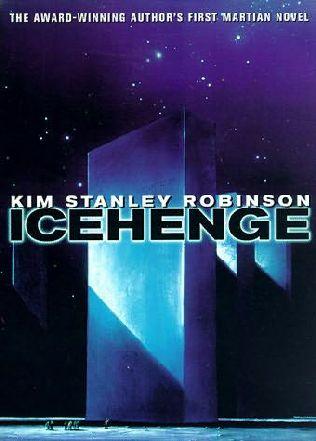
Icehenge
by
Kim Stanley Robinson
Published 29 May 1994
Despite my workouts I felt heavy, and the blazing sun stunned me. It seemed the sky burned. And the blue — that color doesn’t exist on Mars, but I felt that there was a part of my brain that was made to recognize sky blue. Brief images of our tour: Madeleine led me up trails from Macchu Pichu; we laughed at the solemn statues of Easter Island; a tour guide deferred to my knowledge of some site or other. Though I felt a dreamlike recognition for Earth’s ruins from my years of study, I still clumped around as wide-eyed and rubber-necked as the rest of our group. We looked like asteroid miners in Burroughs, I am sure. Bigger diatom: at Angkor Wat one evening, Madeleine and I crawled over the crumbling temples under smeary twinkling stars.
…
“The academic scientists have also ignored all signs indicating Icehenge’s extreme age, so that they may explain it as an artifact of modern civilization. They find these explanations preferable to the one most clearly indicated by the facts — for all that we find points to the existence of a prehistoric space technology; evidence of it lies scattered over the Earth from Stonehenge to Easter Island. Icehenge was built by that antediluvean culture, whose language was Sanskrit, and whose spaceship designs can be found on Mayan temple walls. Over the years the ice liths have become pitted with age (see photos), and one has even been struck by a meteorite, an event that almost defies probability, and indicates the passing of eons.”
…
Forty-five years of learning to gauge how fast the ship is moving by watching coconuts pass by; memorizing the distances between islands; reading the stars, and the weather; lying at the bottom of the ship during cloudy nights, and feeling the pattern of the swells to determine the ship’s direction… I think back to the hand to mouth times of our brief partnership, and I see that he has, perhaps, found what he wants to do. Occasionally I get a note from Fiji, Samoa, Oahu. Once I got one from Easter Island, with a picture of one of the statues included. The note said, “And this one’s not a fake!” That’s the only clue I’ve gotten that he knows what I’m doing. So I stayed on Ganymede and lived in dormitories, and worked at the atmosphere station. My way of life had been learned in the years with my father; it was all I knew, and I kept to the pattern.
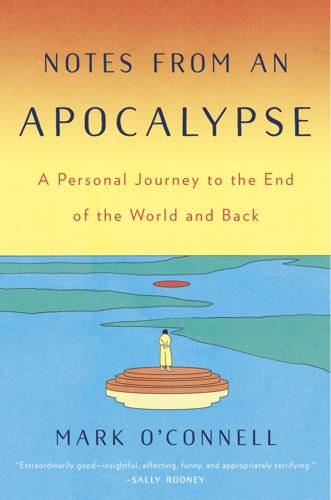
Notes From an Apocalypse: A Personal Journey to the End of the World and Back
by
Mark O'Connell
Published 13 Apr 2020
By the time the first Europeans arrived in 1722, soil degradation and deforestation had caused a total collapse, and the population of the island was down from its peak of ten thousand to a few hundred. Caroline was convinced, she said, that what had happened on Easter Island was what was happening right now, what we were doing to ourselves. Our whole planet, she said, was Easter Island. Here we were, she said, doggedly persisting in the practice of our idolatrous consumerism, heedlessly continuing in the way of life we knew to be causing total ecological collapse, knowing full well the gravity of its consequences, persisting until the last tree was gone, until the soil could no longer support life.
…
She had made it, she said, using the materials and techniques that would have been employed by a Neolithic craftsperson, had there been any requirement for smartphone cases in the Neolithic era. One evening, Caroline told me about how she’d recently become preoccupied to the point of obsession with Easter Island. She was fascinated in particular, she said, with the idea that the demise of the once-thriving island civilization formed an uncanny reflection of our own particular impasse. There was a theory, she said—albeit one that had been fiercely contested by many historians—that the heads themselves, the giant humanoid constructions known as moai for which the island was primarily known, had been a major cause of the civilization’s collapse.

The Switch: How Solar, Storage and New Tech Means Cheap Power for All
by
Chris Goodall
Published 6 Jul 2016
Nevertheless we could, at least in theory, get a substantial fraction of the world’s total energy need from biomass, either by burning it for electricity or by turning it into combustible gas for heating. But should we do this? Most experts are strongly opposed to increased use of plant matter and food for energy. The serious risk is that humankind would simply do what the Easter Islanders appear to have done, chopping down all the trees on the island for fuel and for other purposes, leaving a barren, unproductive landscape. Rich tropical rainforests are particularly good at capturing solar energy through photosynthesis. But if we cut trees down, and do not replace them, not only will we eventually run out of fuel but we will also have reduced the planet’s ability to store the carbon dioxide produced by the burning of fossil fuels.
…
But if we cut trees down, and do not replace them, not only will we eventually run out of fuel but we will also have reduced the planet’s ability to store the carbon dioxide produced by the burning of fossil fuels. One of the side benefits of photosynthesis, of course, is ‘carbon capture’ as plants consume the CO2 to help build their branches and leaves. We don’t have to make the same mistake as on Easter Island; we can carefully manage plantations so that we sow plants and trees to replace the amount cut down. We could start to farm the forests of the world on an unprecedented scale. It might be sustainable, at least in theory. Virtually nobody wants to do this. Our global experience has been that trying to use the products of photosynthesis for energy causes serious problems.
…
Index A Abramovitz, Yosef 64 absorption chilling 146 acetogens 242–3 Actinomyces 215 Africa food production 134 solar power 60–4 see also individual countries AGL 7 agriculture pumping operations 56–7 UK 226–7 Ainsworth, David 197–8, 199 air, carbon capture 249–54 air travel 224–5 algae 244–5 Algenol 245–6 alkanes 223 aluminium 108 American Physical Society 252 amine absorption 250 ammonia 229–30 anaerobic digestion (AD) 5, 131, 132, 135–41 Andasol 117 Andhra Pradesh 54 Apple 66, 67, 108 Arcelor Mittal 155, 243 archaea 234–5 Argonne National Laboratory 194 Arriba 154 artificial photosynthesis 246–9 asphalt 153 Atacama desert 59 Audi 232 Austin, Texas 53 Australia domestic electricity consumption 260 tracking 96 B bacteria 247–9 Bangladesh 16–17 banks funding solar 105, 106–7 interest rates 98–100 solar power predictions 50–1 batteries 5–6, 173, 240 car batteries 190–2 cost declines 44, 173, 176–9, 256 and demand charges 192–3 domestic 57, 171, 181–5 drones 185–7 flow batteries 174, 201–3, 206 grid storage 44, 187–90, 206–7, 219–20 lithium air 198–9 lithium ion 173–96, 199–201, 210 lithium sulphur 197–8 long term targets 194–5 PV plus battery 199–201 and time-of-use-pricing 162 24M 179–80 zinc-air batteries 201, 203–4 Becquerel, Edmond 74 behind the meter schemes 107, 108 Belgium demand response 152 liquid hydrocarbons 243 Bickl, Thomas 85, 86–90 biochar 225 biofuels see liquid fuels biogas Electrochaea 233–6 Tropical Power 134–41 see also carbon dioxide; methane biological methanation 233–8 biomass 13, 14, 15, 131–4, 142–6, 256 power to gas 233–8, 240 storing liquid hydrocarbons 220, 221–7 Tropical Power 135–42 Bishop, Pete 185–9 Bissell, David 200 Bloch, Mathias 181–2 Bloomberg 35, 42, 53, 60, 178 blue-green algae 244–5 Boardman, Brenda 164–5 Boston Consulting Group (BCG) 18, 19, 20, 176, 177, 178–9 BP 12–13 Bradford, Travis 22, 48–50 Brandao, Rafael 60 Brazil biofuels 223 pylon lines 120 solar electricity prices 3, 60 Breakthrough Energy Coalition 214, 244 Britwind 130–1 Bruce, Peter 198–9 Buffett, Warren 177 Burundi 64 Butler, Nick 41–2, 44 BYD 176–7 C Calgary 253 California demand response 156–8 domestic electricity storage 184 grid storage 201 power to gas 233 renewable energy 35 solar power cost 3 time-of-use-pricing 162, 163 CAM (Crassulacean Acid Metabolism) plants 135–41, 142–5 Cambridge Architectural Research 166 Canada air capture of CO2 253 demand response 154 grid batteries 202 time-of-use-pricing 159 carbon dioxide (CO2) air capture 213, 249–54 artificial photosynthesis 248 cement plants 238–40 diesel generators 149 and microbes 213, 215 plants 133, 135, 137 power to gas 232, 233 using to make liquid hydrocarbons 241, 243, 244–5, 246, 256 Carbon Engineering 253 carbon monoxide 241–2, 243 carbon tax 239, 253 cars component manufacturers 127–8 energy usage 11 hydrogen 228 PV film 89–90 see also electric cars Case, Chris 68–71, 73–4, 79–83 cement factories 238–40, 245 Chiang, Yet-Ming 179–80 Chile concentrating solar power 119 pylon lines 120 solar electricity prices 3 solar power 59–60 China coal-fired power stations 35 energy demand 11, 12 liquid hydrocarbons 243 solar power 24, 53–4, 66 and Zimbabwe 64 Chu, Steven 230 CIGS (copper indium gallium selenide) 90 Citibank 51 Climeworks 250–3 Clinton, Hillary 54 Clostridium Autoethanogenum 242–3 coal 40 Germany 46 Nigeria 60–1 coal-fired power stations Chile 59 China 11, 35 cost 122 demand 36–7 in developing world 58 India 55, 56, 58 move away from 7 Coal India Limited 58 Combined Cycle Gas Turbine (CCGT) plants 34–5, 37, 39, 40, 236 Committee on Climate Change (CCC) 47–8 compound growth 30–1 compressed air storage 207–8 concentrating solar power (CSP) 116, 117–21, 256 Connolly, Steve 154 conversion efficiency 73, 76–7, 78–9, 80 Cook, Tim 67 Cool Planet 225–6, 241 Cornwall 104–5, 206 cows 139–40 Crabtree, George 194, 195 Crescent Dunes 118 cyanobacteria 244–5 D demand charges 192–3 demand response 149–55, 166, 232, 237–8 and energy efficiency 163 in the home 156–8 what happens next 158–63 Denmark power to gas 233–4, 235 solar electricity costs 45 wind power 116, 124, 234 Deutsche Bank 51, 59, 176 diesel generators 57, 60, 121, 185, 199 demand response 148–9, 151 Hawaii 161, 199 Dinorwig 205 dispatchable power 199–200 Drax power station 131, 132 drones 185–7 Dubai 52 E Easter Island 133 Easton, Roger L 2 Einstein, Albert 75 Eisenberger, Peter 3, 19–20 electric cars 12, 156, 158, 224–5 batteries 173–8, 195 as grid backup 190–2 electricity 255 cutting power demand in the home 156–8 demand and supply 4, 5, 37–9, 147, 150–1, 215, 216–20 demand charges 192–3 demand response 149–55, 158–63, 166, 232, 237–8 distribution costs 55 domestic consumption 259–60 lighting 164–6 microgrids 62–3 power to gas 231–40 prices 37–8, 107, 257 storage 4–6, 43, 44, 173–254 time-of-use-pricing 158–63 transmission networks 58, 59, 61 see also solar power Electrochaea 233–40 electrolysis 220, 227–30, 231–40, 252–3 electrons 74–6, 78–9, 201 Enbala 154 Energiesprong 167–71 energy demand for 9–13, 144 and power 259–60 energy efficiency and demand response 163 insulation 167–72 lighting 165–6 Engie 7 Enterococcus 215 Entrade 145–6 Eos 203–4 EPR 15 ethanol 223, 243–5 Euphorbia Tirucalli 135, 137 experience curve 18–19, 33 batteries 175, 176–9, 187, 210 inverters 97 photovoltaics 22, 26, 30–1, 33 transistors 31–2 wind power 123 Exxon 3, 19–20 F Facebook 185–7 Farmer, Doyne 33 Fischer-Tropsch process 223, 252 Florida 245–6 flow batteries 174, 201–3, 206 food 132–4 Food and Agricultural Organisation (FAO) 142–3 fossil fuels 27–9, 33–40 see also coal; gas; oil France demand response 152, 155 gas grid 231–2 nuclear power 23 Fraunhofer Institute 3–4, 46–7, 104 Fritts, Charles 74 fullerene 72 G gas 7, 40 grid 231–2 power to gas 6, 213–15, 231–40 see also biogas; methane; syngas gas-fired power stations 150–1 ammonia 229 cost 4, 122 financing 34–5, 36–7, 39, 40, 99 power to gas 236, 238 US 35 gasification 132, 145–6 Gates, Bill 1, 6, 208, 214–15, 244, 255 Gebald, Christoph 252, 253 gene sequencing 18–19 geothermal 59, 108 Germany domestic electricity storage 181–5 electricity demand and supply 215, 217, 218–20, 229–30, 237 electricity price 101, 260 electricity production 260 gas grid 228–9, 231–2 hydrogen 228–9 oil storage 230 power to gas 232 solar power cost 3–4, 46–7 solar power funding 104, 106, 107 wind power 124 Ghent 243 gigawatt hours 260 gigawatts 259, 260 GM 176–7, 198 Google 66, 225 governments 6, 189 solar power tenders 51–3, 54–5, 59, 60 subsidies 50, 107–8, 126 GranBio 223 graphene 187 Greencoat Capital 109 grid integration costs 55–6 grid storage flow and zinc-air batteries 201–4 pumped hydro 205–7 PV plus battery 199–201 South Korea 204 GTM Research 96–7, 193, 201 H Haber Bosch process 229 Hafenbradl, Doris 238–9 Handelsbanken 105 Hawaii 161–2, 184, 199–201 heat pumps 12, 167 heating 12, 167 Heliatek 84–90 Helio100 120–1 heliostats 117–18 Henderson, Bruce 18, 20 Highview Power 208–10 Hinwil 250–1 Hinkley Point 15 Hofstetter, Dominic 233–6 hospitals 148, 149 houses batteries 57, 181–5 heating 12, 167 insulation 167–72 lighting 12, 164–6, 169 Solar House 57–8 see also residential PV installations Hutcheson, Dan 32 hydro-electric power 14, 15, 141–2, 159 pumped hydro 204–7 hydrogen 5, 213–15 conversion to methane 221, 231–40, 256 using electrolysis to generate 212, 220, 227–31, 252–3, 256 Hydrogenics 235 Hymind floating turbines 125–6 I Ibbenbeuren 229 Iceland 108 IKEA 19, 66, 166 Imergy 202 India coal-fired power stations 55–6, 58 solar electricity prices 3 Solar Houses 57–8 solar power 24, 53–8 insulation 167–72 Intel 20 interest rates 98–100, 101–2 International Energy Agency (IEA) 42–3, 45–6 inverters 91–5, 96, 97 investment 4, 100–14, 115, 214 corporate 66–7, 108 Investment and Pensions Europe 102 ITM Power 228–9 J Jelley, Nick 25 Joule Unlimited 244–5 K Kaua’i 199–200 Keith, David 253 Kennedy, Danny 42 Kenya 62–4, 145 Tropical Power 134–42 kilowatt hours 259 kilowatts 259–60 Kisii 62–3 Kiwi Power 149 Klein, Nina 71–3, 74, 85–6 Kohn, Rick 213, 215, 246 KPMG 54–7 L Lafond, Francois 33 Laikipia 135–41 Lancashire County Council 102, 103 Lanzatech 241–4 Lawrence Berkeley Laboratory (LBL) 46, 65 lead 83 learning curve 19, 23 LEDs 165–6, 169 Leggett, Jeremy 50 Lemnacae 139 levelised cost 98–101 LeVine, Steve 180 Liebreich, Michael 178 lighting 12, 164–6, 169 Lightsail 207–8 lignite 46 liquid air storage 208–10 liquid fuels 5, 6, 213–15 from biomass 220, 221–7 using microbes 221, 240–6, 256–7 lithium air batteries 198–9 lithium ion batteries 173–6, 192–5, 210 car batteries 190–2 cost declines 176–9 domestic 181–5 energy density 195 large-scale 185–90, 199–201 lithium supply 195–6 recycling 195, 196 24M 179–80 lithium sulphur batteries 197–8 Louisiana 226 M M-Pesa 63 MacKay, David 259 Madhya Pradesh 54 Manchester 39, 209 Mason, Mike 137–42, 143, 144 megawatts 259 Mermans, Pieter-Jan 38, 149–53, 155 Meteo 91 methane 131, 135, 137, 213–16 power to gas 221, 231–40, 256 methyl ammonium lead halides 80 microbes 212–15 artificial photosynthesis 247–9 making liquid hydrocarbons 221, 240–6, 256 power to gas 233–40 microgrids 62–3 mobile phones 61–2, 63–4, 185 Modi, Narendra 53 Monbiot, George 226 Moody’s 173, 193 Moore, Gordon 20 Moore’s Law 20–1, 32 Morocco 116, 119–20 Moylan, Andy 111–13 multi-junction cells 76–7 Musk, Elon 175 N Naam, Ramez 49–50 Nelson, Jenny 75 Netherlands home improvements 169, 170–1 storage in car batteries 191 Nevada 53, 118 New Mexico 244–5 NexWafe 78, 79 Nigeria 60–2 Nissan 176 Nissan LEAF 156 Nourse, Richard 109, 122 nuclear power stations 6, 15 costs 22–3, 48, 122 O Oahu 161–2 O’Dea, Christopher 103 offshore wind turbines 15, 124–6 Ohl, Russell 75 OhmConnect 156–8 oil, storage 230, 240–1 oil companies 6, 7–8 oligomer cells 84–90 onshore wind turbines 22, 122–5 Ontario 159, 202 Open Energi 153 Opuntia ficus-indica 135, 136, 138 Oregon 7, 223–4, 225 organic molecules 71–3, 74 organic photovoltaics 84–90 Osinbajo, Yemi 60–1 Ouarzazate 119 oversizing 91–5 Oxford Photovoltaics 68, 79–84 Oxis 197–8, 240 oxygen 234 P Palmer, Jason 166 Panasonic 175, 187–9 paper mills 152 passivation 78–9 Peabody Energy 40 peak shaving 193 see also time-of-use-pricing Pencil Cactus 135, 137 pension funds 4, 101–4, 106–7, 109–11, 112 pentacene 71 perovskites 68, 79–84 Peterhead 125–6 petrol 240 photons 74–5 photosynthesis artificial 246–9 CAM plants 135–7 photovoltaics, electricity prices 3, 45, 46, 51–3, 59, 60 photovoltaics (PV) 5–6, 8, 42–3, 74–6, 116, 255–8 and alternative sources of energy 33–40 availability 34, 55–6, 94–5, 211–12 Brazil 60 Burundi 64 capital and levelised costs 98–101 Chile 59–60 corporate investment 65–7 cost declines 1, 2–4, 21–33, 42, 45, 46–51, 123–4, 254 daily curve 90–6, 147, 260–1 experience curve 22, 26, 30–33 films 84–90 financing 4, 98–114 Germany 217, 218–20 grid integration costs 56 India 53–8 Kenya 62–4 Nigeria 60–2 oversizing 91–5 and pension funds 101–4 predictions 41–51 PV plus battery 199–201 S curve 25–6 system costs 96–7 and time-of-use-pricing 160–3 UK 215, 216–17 USA 65 Vanguard 1 2 Zimbabwe 64 see also solar cells; solar farms; solar panels PJM 155, 200–1 plants see biomass potassium hydroxide 253 power 259–60 power purchase agreements (PPAs) 51–3, 65, 101 power to gas (P2G) 231–40, 256 Powerhive East Africa Ltd 62–3 PowerOasis 185–90 Preqin 111–13 Prickly Pear 135, 136, 138 Primus Power 199 private electricity generators 148–9 pumped hydro 204–7 Punjab 54 pyrolysis 225–6 Q quantum dots 73 Quarry Battery 205–7 R Raizen 223 Red Rock Biofuels 223–4, 225, 241 renewable energy 13–15 see also geothermal; hydro-electric power; solar power; wind power residential PV installations investment 66, 100–1, 107, 110–11 PV film 89 storage 181–5 system costs 96–7 REstore 38–9, 149–55, 158 Robertson, Andrew 103, 112 Rombouts, Jan-Willem 151, 152 Roulstone, Tony 23 Rudd, Amber 40 Russia 226 S S curve 25–6 Sabatier reaction 231 Sainsbury’s 66 Schellnhuber, John 41 Schmickler, Arno 168, 170, 171 Schneider Electric 157–8 Scotland carbon-neutral housing 171 drones 186–7 wind power 122 seawater 245–6 second glass problem 43 second half of the chessboard problem 30–1 semiconductors 18 Sermol, Peter 110–11 sewage farms 154 Shao, Vic 193 Shell 7–8, 41, 43, 223 Siemens 235, 243 silicon 68, 73, 75, 76, 84, 87–8, 195 efficiency 78–9 manufacturing techniques 77–9 tandem cells 81–4 Silicor 108 smart meters 157, 159 Smil, Vaclav 255, 257 Snaith, Henry 80, 81 SoCalGas 233 solar cells 69–70 efficiency 74–7, 78–9 from organic molecules 71–3 history 74–6 multi-junction 76–7 oligomers 84–90 passivation 78–9 perovskite 79–84 silicon 76 solar energy 9–10 solar farms Brazil 60 China 66 costs 48–51, 97 electricity prices 3, 45, 46, 51–3, 54, 55, 59, 60 financing 4, 66, 98–114 and hydro-electric dams 141–2 India 54, 55, 57 land needed for 15–18 oversizing 91–5 shading 141 tracking 95–6 US 3 Zimbabwe 64 solar fuels 213–15 Solar Houses 57–8 solar panels Chris Case 68–71, 73–4 cost declines 4, 21–2, 23–4, 49, 73–4, 77–9 daily curve 260–1 efficiency 76–7 history 74–6 lifetime of 114–15 manufacturing volumes 24 organic molecules 71–3 oversizing 91–5 perovskites 68, 79–84 technology improvements 68–97 tracking 91, 95–6 see also solar cells solar power 1–8, 13–14 concentrating solar power 117–21 see also photovoltaics SolarCity 66, 199 SolarReserve 119 Solexel 78, 79 Sonnen 181–5 Sony 179 South Africa blackouts 183 concentrating solar power 119–21 Fischer-Tropsch refineries 223 tracking 96 South Korea 204 Spain 117, 120 Spinetic 127–30 Sporomusa Ovata 247–8 Statoil 125–6 steelworks 242, 243–4, 245 Stellenbosch University 120 storage 4–6, 13, 43, 44, 94, 104, 116, 173, 210 air capture of CO2 249–54 artificial photosynthesis 246–9 compressed and liquid air storage 207–10 concentrating solar power 117–19, 121 as gas or liquids 220–54, 256–7 methane 135 need for long-term storage 216–20 pumped hydro 204–7 and time-of-use-pricing 162 see also batteries subsidies 50, 107–8, 126 SunEdison 54 SunShot 65 Swanson’s Law 21–2, 23–4 Switzerland 250–1 syngas 145, 223–4, 225, 252 system costs 96–7 T Taiwan 243 tandem cells 81–4 Tarmac 153 Telangana 54 terawatt hours 259, 260 terawatts 259 Tesla 127, 175 batteries 5, 176, 177, 178 Gigafactory 175–6, 177, 180 Powerall 162, 175, 181 Texas 123 Thiel, Peter 8, 208 time-of-use-pricing 158–63 tracking 91, 95–6 transistors 20–1, 31–2 trees see biomass Trina Solar 79, 115 Tropical Power 134–42, 145 24M 179–80 U UK biogas 236 biomass 145–6 daily solar power curve 260–1 demand response 152, 153, 154 electricity demand and supply 148, 164–5, 215, 216–18, 237 electricity price 4, 37–8, 101, 260 Energiesprong 170, 171 energy use 11–12 fossil fuel generation demand 36–7 funding 102–7, 108–10 gas-fired power stations 39 government bonds 101–2 insulation 167 land use 16, 17, 226–7 liquid air storage 208–10 nuclear power stations 23 oil storage 230, 240–1 pension funds 102–4, 106–7, 108–10 pumped hydro 205–7 seasonal deficit 211–12 solar costs 45, 47–8, 52 solar power 24, 36 subsidies 50, 108 time-of-use-pricing 159–60, 162 utility companies 7 willow coppicing 136 wind power 4, 15, 122–3, 124, 125–6, 130 Unilever 66, 108 United States (US) batteries 194, 240 biomass refining 223–4, 225–6 blackouts 183 demand charges 193 demand response 155, 156–8 domestic electricity consumption 260 domestic electricity storage 184 electricity price 3, 52–3 energy demand 11 gas-fired power stations 35, 40 government bonds 101–2 land use 17–18 large-scale grid storage 199–201 power to gas 232–3 solar power 24, 33, 54, 65 system costs 97 time-of-use-pricing 161–2 tracking 96 utility companies 7 wind power 33, 122, 123 United States Geological Service (USGS) 196 University of California, Berkeley 247–8 University of Dresden 84 University of New South Wales 79 utility companies 6, 7, 34–6 Utrecht 191 V van Beurden, Ben 41, 43, 258 vanadium 202–3 Vanguard 1 2 vertical wind turbines 127–30 W Wadebridge 160–1 Wales 226–7 Walmart 66, 67, 108 waste water treatment plants demand response 154 power to gas 233, 234–5 wave power 13, 14 weather forecasting 91, 141, 183 Weil, Bill 105–9 Werlte 232 West Country Renewables 104–5 Westmill Solar 102, 103 Williams, Gage 104–5, 106 Willis, Kathy 142 willow coppicing 136 wind power 5, 13, 14–15, 53, 116, 122–6, 256 Chile 59 cost declines 22 Denmark 116, 124, 234 Germany 124, 217, 218–20 UK 215, 216–17, 237 US 33 wind turbines 4, 123–5 Britwind 130–1 Hymind floating turbine 125–6 Spinetic 126–31 vertical turbines 127–30 wood 131, 132 see also biomass Wright, T.P. 19 Y Yang, Peidong 248–9 Z Zimbabwe, solar power 64 zinc-air batteries 201, 203–4 Zurich Federal Institute of Technology 250 ALSO AVAILABLE FROM PROFILE BOOKS Where Do Camels Belong?
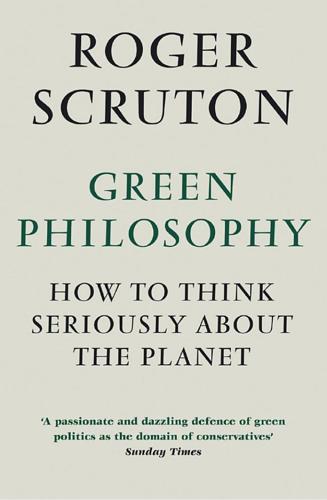
Green Philosophy: How to Think Seriously About the Planet
by
Roger Scruton
Published 30 Apr 2014
However, it has been suggested that without a well-articulated temporal plan, or a satisfactory set of forward markets, market prices may not provide the correct signals and incentives.167 For market prices are fixed by what is currently available and by current demand for it, and they will not prevent a resource from being exhausted before a substitute has been found. For all we know there was a thriving market in trees on Easter Island. Optimists tell us that things are better for us now than they were for the people on Easter Island. For we do not merely find substitutes for scarce resources; we create them. Thus John V. Krutilla has argued that in the modern economy it is rare to find a direct substitute for some depleted resource, and far more normal to find an alternative to the process that required it.
…
Indeed, according to the theory of evolution, it is precisely the mistakes that cause the adaptation – only too late for those who make them. Jared Diamond has vividly described societies that have depleted their environmental resources and then, not slowly or gently, but suddenly and catastrophically, collapsed.68 Thus the Easter Islanders ignored the progressive deforestation of their island until it was impossible to survive there. Many people fear that we are all about to follow their example. The publicity release for Al Gore’s propaganda film An Inconvenient Truth began thus: ‘Humanity is sitting on a ticking time bomb. If the vast majority of the world’s scientists are right, we have just ten years to avert a major catastrophe that could send our entire planet into a tail-spin of epic destruction involving extreme weather, floods, droughts, epidemics and killer heatwaves beyond anything we have ever experienced.’
…
George, ref1 Crome, John, ref1, ref2, ref3 Crouch, David, ref1n cultural theory, ref1, ref2f culture, ref1 Curzon Price, Tony, ref1, ref2 Daly, Herman, ref1 Darwall, Stephen, ref1, ref2, ref3, ref4n Darwin, Charles, ref1 Dasgupta, P., ref1n David, Paul A., ref1 Davies, Brian, ref1 Dawidoff, Nicholas, ref1n Dawkins, Richard, ref1 death taxes, ref1 deep ecology, ref1, ref2, ref3 Deleuze, Gilles, ref1 democracy, ref1, ref2, ref3, ref4, ref5, ref6 DeMuth, Christopher C., ref1, ref2n, ref3n, ref4n Denmark, ref1, ref2, ref3, ref4 Diamond, Jared, ref1, ref2 Dickens, Charles, ref1, ref2 discount rates, ref1 Dobson, Andrew, ref1n doomsday literature, ref1, ref2, ref3 Douglas-Home, Jessica, ref1 Douglas, Mary, ref1 Drucker, Peter, ref1n Durkheim, Émile, ref1, ref2 Durodié, Bill, ref1n Dutilleux, Henri, ref1 Dworkin, Ronald, ref1 Dyson, Freeman, ref1n Earth First!, ref1, ref2, ref3 Easter Island, ref1, ref2 Eastwood, John, ref1 Ebbesmeyer, Curtis, ref1n ecofascism, ref1 economic growth, see growth economics and the environment, ref1, ref2, ref3, ref4, ref5n economics of climate change, ref1, ref2 egalitarianism, ref1, ref2, ref3, ref4 Ehrlich, Anne, ref1 Ehrlich, Paul, ref1, ref2, ref3 Eliot, T.
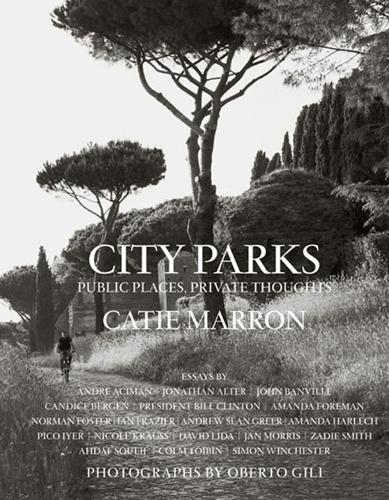
City Parks
by
Catie Marron
Drop your chocolate wrapper on the grass, and be sure it has not escaped the notice of a Worthy. Sometimes they suggest to me miniature Easter Island figures, but they are really Trieste entablatured. There are perhaps two score of them, by my last befuddled count, including one woman, and they are placed there to commemorate, in particular, their contributions to the cultural and intellectual distinction of their city. As it happens they do not look like a very merry lot. I smile hard at them often, but like their Easter Island confreres they seldom smile back. They include musicians, artists, poets, scholars, educationalists, a botanist (Tommasini himself, in a place of honor), Italo Svevo, and James Joyce (portrayed within a sort of bronze picture frame, perhaps to show that he was only a visitor with a passport . . .).
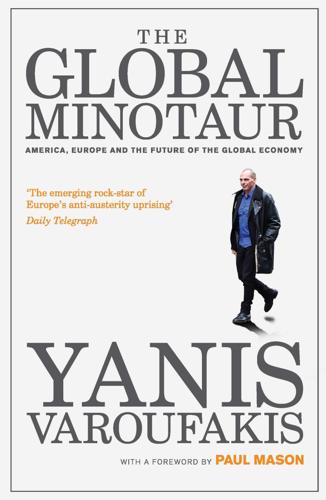
The Global Minotaur
by
Yanis Varoufakis
and
Paul Mason
Published 4 Jul 2015
Undoubtedly, both nature and history are replete with such cycles. But not all crises can be understood as the passing phase of a regular cycle. Once in a while, a Crisis with a capital C strikes. And then the cycle ends, at least in its existing form. Take, for instance, the Easter Island civilization. Archaeologists tell us that it experienced many cyclical crises in its history. But alas, one big, whopping Crisis wiped it out: once Easter Islanders had chopped down their last tree, the ecological cum economic cycle that their activities had been subject to reached a tragic end. All that was left were the magnificent statues as constant reminders of the destructive and disruptive power of Crises.
…
However, in this tale, the crisis plays its usual redemptive role: once risk aversion has set in, only ‘good’ investment projects seek finance. This steadies the financiers’ nerves, confidence is restored and the cycle is given another whirl. However, once in a while the financial bubble inflates so much that its bursting leads to the cycle’s collapse – pretty much as the Easter Islanders’ volatile economic activity came to a crashing halt when the last tree was felled. When the dust settles, the whole economy lies in ruin, often unable to pick itself up, dust itself down and begin rebuilding.3 A well-used metaphor is apt: think of what happens as cars get safer: we tend to speed more.
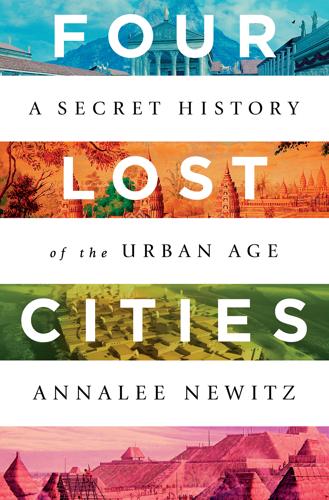
Four Lost Cities: A Secret History of the Urban Age
by
Annalee Newitz
Published 2 Feb 2021
Civilizations might cycle through a number of high-density urban phases and dispersal phases over the course of centuries. The collapse hypothesis was nearly dead when Jared Diamond published his popular book Collapse in 2005. Based mostly on anecdotal evidence from cultures like the Maya and Polynesians on Easter Island, he argues that societies “collapse,” or fail, when they engage in environmentally unsound practices. His argument played into a lot of myths about how cities work, including the idea that cultures are wiped out when their high-density settlements disappear. As we’ve seen with the cities in this book, urban abandonment does not mean some kind of cultural death.
…
Immediately after Collapse came out, many archaeologists and anthropologists scrambled to correct misconceptions and errors in Diamond’s account. Anthropologists Patricia McAnany and Norman Yoffee published a volume called Questioning Collapse, an anthology of scholars who present hard data showing that Diamond’s idea of “collapse” was scientifically unsound. They argue that civilizations like the one on Easter Island were decimated by the political process of colonialism, not poor environmental practices. And when it comes to Mayan “collapse,” they point out that there are still millions of Mayans living in Mexico. Can a culture that still thrives really be said to have collapsed? Guy D. Middleton, an anthropologist who has spent his career studying social transformation, chimed in with a book called Understanding Collapse, in which he argued that there is never a single reason for abandonment.
…
See also food dogs, 27 domestication, 26–33 as filtering process, 30–31 as self-reinforcing process, 29 symbolic structures and, 29 domesticity, 30–31, 40, 42, 51–58 domestic labor, women and, 51–58 domestic technologies, women and, 51–58 Domitian, 7, 136 Domuztepe, 73–75, 137, 216, 260 doorways, 31–32 drought, 6, 21, 64, 250, 258 Du Pratz, Le Page, 221 earthworks, 211 East Baray (reservoir), 162–63, 166, 168, 192, 197 Easter Island, 237 Eastern Woodlands tribes, 211 East Mound, 19–20, 22, 60, 62–63, 64, 65, 66–68, 74, 246 East St. Louis, Illinois, 9, 10, 207, 212, 228–33 Ebusus, 86 École française d’Extrême-Orient (EFEO), 168, 184–85 Edwardsville, Illinois, 222 egalitarianism, 75 Egyptians, 86 Ellis, Steven, 105–6, 108–10 Emerald site, 222–23 Emerson, Tom, 244–45 engineering, 52 environmental crises, 5, 238, 239–40, 257–58 ancient, 256 fragmentation and, 249–50 modern, 256, 257 Envisioning Cahokia, 234 erect knotweed, 220 Eumachia, 95 Europe, executions in, 216–17 European colonialism, 217, 253 European Research Council, 152 Evans, Damian, 2–3, 160, 169, 178–79, 196–97, 200 city grids and, 155 lidar mapping and, 151–53, 167, 181, 185 excavation blocks, 229–32, 246–47 executions, 216–17 expansion, 256, 257 famine, 64 Fargher, Lane, 236 farming, 51, 54–55, 62, 72–73, 222 agricultural complexity, 73 in Angkor, 146–61 in Cahokia, 218–24, 251 in Çatalhöyük, 61, 73 development of, 27 harvesting, 219–22, 223 men and, 222 shock of agricultural life, 35 urbanism and, 54–55, 73 feasts, 221, 227 Ferguson, Missouri, 254 fertility, 215–16 fertility rituals, 244, 245 fertility symbols, 46–51 festivals, 157, 174, 215–16 in Angkor, 157, 174 figurines, 46–51, 56, 213, 214, 219, 220–21, 251 Fiorelli, Giuseppe, 129 fire, 246–47.
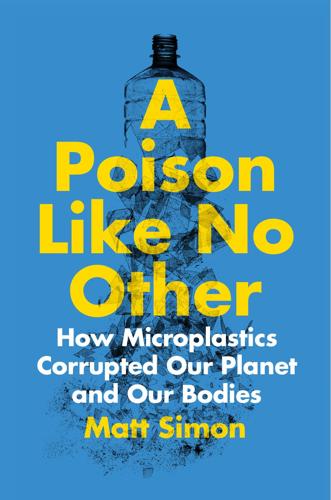
A Poison Like No Other: How Microplastics Corrupted Our Planet and Our Bodies
by
Matt Simon
Published 24 Jun 2022
Like astronomers can only estimate how many stars are in the sky, so too can oceanographers only estimate how many microplastics are in the sea— except the universe is mostly done making new stars, and humanity has just begun making microplastics. Oodles of particles are washing ashore too. A sampling of six beaches on Oahu found up to 160 microplastics per square foot of sand.10 They’re on the beaches of remote Easter Island and the Galapagos too.11 In the sands of even-more-remote Henderson Island, smack dab between New Zealand and South America, scientists found over 400 pieces of plastic debris per square foot.12 They also discovered that the particles are absorbing the sun’s energy and raising the temperature of the sand by more than four degrees Fahrenheit.13 This could have two huge consequences.
…
Scientists have analyzed a trove of stashed-away plankton samples, collected off the coast of Scotland since the 1960s, and found a significant rise in microfiber contamination over the decades—a sad echo of Jennifer Brandon’s sediment samples.53 Others have taken water samples off Antarctica and found zooplankton tangled up in microfibers.54 Biologists not only find petroplankton and biological plankton mingling together in water samples taken from different depths but also find the particles mingling in the stomachs of captured zooplankton: baby salmon that (eventually) feed bears and humans, the crustaceans that feed fish and birds, the krill that feed whales.55 A survey in the South China Sea tested fish larvae, jellyfish, shrimp, and predatory worms and found microplastics in them all.56 Adult fish that feed on zooplankton, or on smaller fish that feed on zooplankton, then assume the particles: a sampling in the remote South Pacific turned up microplastics in 97 percent of fish species, including mahi-mahi, red snapper, and barracuda57—one foot-long Pacific chub was burdened with 104 pieces of plastic in its gut. It’s worth noting that the most contaminated fish were in the most remote waters, around Easter Island, where the South Pacific Gyre—the counterpart of the a v o ya g e o n t h e s y n t h e t i c s e a s North Pacific Gyre, which creates the Great Pacific Garbage Patch—accumulates plastic. Any size and shape and color of microplastic you can dream of, it’s out there, so a speck too big for one hunter becomes easy pickings for the next.
…
See diethylstilbestrol detergents, 34 Díaz Sánchez, Laura, 159 DiBenedetto, Michelle, 43 diethylstilbestrol (DES), 143 digestive tract, 150–151 dinoflagellates, 60 dirt, 93–98 dispersing agents, detergents as, 34 drinking water, 105–110, 158 Dris, Rachid, 126, 128 drought, 89 dryers, 129 Dusza, Hanna, 145–146 earthworms, 93–94, 100 Easter Island, 56–57 economics, 17, 157–162 Ecuador, 104 EDC. See endocrine-disrupting chemicals egestion, 60 elections, 166–167 emissions, 17–18 Emmert, Emery, 90–91 Enck, Judith, 18, 167 endocrine-disrupting chemicals (EDC), 6, 137–147. See also bisphenols; PFAS; phthalates epichlorohydrin, 133 equity, 165–166 Erdle, Lisa, 32, 50 Eriksen, Marcus, 13, 156 ethylene, 16, 19 exposure, 134 face masks, 128 farm animals, 103–105 fashion industry, 32, 158–159 fast fashion, 32, 158–159 fecal express, 60–63 Feit, Steven, 162 fertility, 140 fertilizers, 85–88, 87–90 fibrillation, 124 field greenhouses, 90–91 filament yarns, 37 film, 10 filter feeders, 5, 49, 74 filtration, 25–26, 33, 36, 157 fish animal feeds containing, 103 aquaculture and, 73–74 food chain and, 64–67 tires and, 77–80 translocation and, 70–74 fishing vessels, 46–48 fishmeal, 73–74 fissures, 95 flagella, 60 Flaws, Jodi, 138–144 fleece, 32–38, 124, 129 flock workers lung, 132 flooring, 126, 141 Flury, Markus, 100–102 flushable products, 39 Foley, Carolyn, 69 food chain/ food web, 53–54, 63–64 food deserts, 165–166 food dilution, 65–68 foods, estimates of consumption in, 109–110 formaldehyde, 22 Formosa Plastics, 29 fossil fuels, 7–8, 17 Fourier transform infrared spectroscopy (FTIR), 26 free radicals, 23 Frontier Logistics, 29 fungi, 99, 149–150 gastrointestinal issues, 150–151 Germany, 47, 86 237 238 index ghost netting, 46 Gilbreath, Alicia, 84 gills, 66–67 Gkoutselis, Gerasimos, 149–150 Glasgow, Scotland, 35 global plastic toxicity debt, 21 global warming, 44–45, 51, 61–62, 84–85 granulomas, 151–152 grasses, 98–99 gravity, 115 Great Lakes, 50, 107 Great Pacific Garbage Patch, 4, 45–46, 54, 155–156 Green, Dannielle, 82, 98–99 Green, Michael, 164 green spaces, 84 greenhouse gases, 17–18, 162 greenhouses, 90–91 groundwater, 4, 107 hair follicles, 151 HDPE.
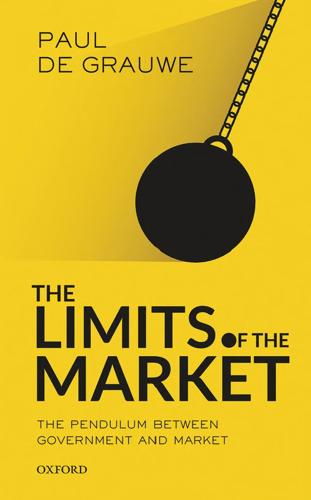
The Limits of the Market: The Pendulum Between Government and Market
by
Paul de Grauwe
and
Anna Asbury
Published 12 Mar 2017
When there was a minor change in climate, the environment in which the Mayans lived was no longer capable of producing resources to sustain the population. This led to famine and wars between the different areas of the Mayan kingdom. The chaos and indiscriminate violence which ensued led to the collapse of their entire civilization in a relatively short period. The same pattern can be observed in the collapse of other civilizations, such as Easter Island. The question is whether such scenarios can repeat themselves on a worldwide scale.* At the moment we do not know the answer. It is certain, though, that the phenomenal material growth made possible by the market system leads to growing external costs in large areas of the world. So far we have not developed a mechanism to rein in that growth, so the distance between individual and collective rationality is continually growing worldwide.
…
n debt ratios (ratio of government debt to GDP) decentralized system –, , democracy/democratic institutions –, , , Denmark employer contribution and labour costs labour costs, gross hourly f Diamond, J. distribution/distribution problems , , –, see also income distribution double-dip recession Draghi, M. East Asia Easter Island Eastern Europe, stagnation – East Germany technological stagnation economic growth , f and equality trade-off education , –, , b efficiency , and equality relationship f, loss of of production redistribution at expense of –, f emission standards, negotiable – emotional and spiritual needs employer contributions and labour costs in European Union f, f Engels, F. , environment (external limit) –, environmental costs, external environmental damage , , and emissions taxes –, free markets and internalization of external costs – see also carbon dioxide emissions; global warming; pollution equality and efficiency trade-off f, see also income equality and economic growth trade-off equilibrium –, , , , , Estonia labour costs, gross hourly f euphoria in the market –, Europe , continental b, , Eastern – emissions taxation – real wages increase and economic wellbeing see also European Union; Northern Europe; Western Europe European Central Bank (ECB) , –, b European Commission – European Court of Justice European Union employer contributions and labour costs f, f labour costs, gross hourly f productivity, labour costs and public sector Eurostar –b eurozone gross domestic product (GDP) in constant prices , f, labour costs, gross hourly f social security external costs –, , , , , , external effects external limits of capitalism –, – banking system and external risk effects INDEX environment (external limit) – financial markets (external limit) – global warming – herd effects in financial markets – public goods (external limit) – external limits of government – democracy – government action – externalities , , herd effects in financial markets global warming –, f, , , Gordon, R. – government bonds , , f, b debt , f, , – debt/GDP increase f deficit investment , , f, and public goods – spending , see also governments, role of; internal limits of government governments, role of – external limits of government externalities – public goods, supply of – redistribution – regulation Great Britain see United Kingdom Great Depression (s) , –, –, f Greece eurozone government bond spreads, ten-year f global financial crisis () government bonds labour costs, gross hourly f Greenspan, A. – gross domestic product (GDP) in constant prices , f cumulative growth and budgetary austerity f in developed countries and developing countries , f per capita in Soviet Union and United States real per capita, North Korea and South Korea , f fairness, sense of , , financial markets (external limit) – Finland eurozone government bond spreads, ten-year f labour costs, gross hourly f social security spending as percentage of government spending f France eurozone government bond spreads, ten-year f gross domestic product (GDP) per capita f labour costs, gross hourly f personal income tax rates f, f public and private capital f social security f, taxation policies capping top incomes free market system , , –, competition and cooperation , external limits , internal limits –, , , free-rider problem –, , , Freud, S.
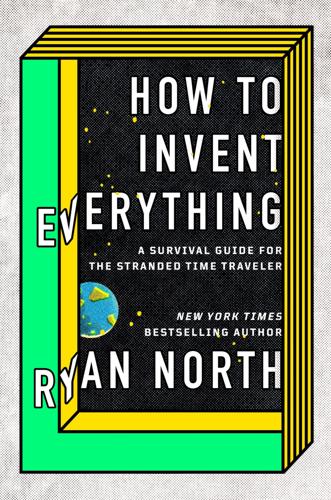
How to Invent Everything: A Survival Guide for the Stranded Time Traveler
by
Ryan North
Published 17 Sep 2018
That could’ve introduced the concept of writing to the island, which then quickly evolved into Rongorongo. There is a dark note here: early visitors to Easter Island were told reading and writing was a skill reserved for a privileged few among the ruling elites. And if Rongorongo script is writing—if the Rapa Nui did come up with the idea of turning invisible ideas into visible shapes, an idea so groundbreaking that it had only ever occurred twice before in human history—then they also forgot it. Within the space of a century—a century, it should be noted, defined on Easter Island by European diseases, catastrophic slaver raids, a smallpox epidemic, deforestation, and cultural collapse—the island population had been reduced from thousands to just two hundred individuals, and none of those survivors had ever been taught to read their island’s script.
…
Writing shows up in other locations, such as China in 1200 BCE, but this is a result of the Egyptians culturally contaminating the Chinese.4 Similarly, Egyptian and Sumerian script developed at very close to the same time, and while visually quite distinct, they share many of the same influences. One of these cultures invented writing while the other just lifted the idea, probably after seeing what a super useful invention it was. There are two other times when writing may have been invented: in India around 2600 BCE, and on Easter Island after 1200 CE but before 1864 CE. (We say “may” because this is one of several historical mysteries still unresolved. Confirmation could easily be obtained with an incident-free visit to the times and places in question, but for some reason most time travelers have historically been more interested in “experiencing the colossal breadth of human experience” rather than “settling obscure linguistic debates by running controlled temporal observation with an eye to publishing peer-reviewed research.”)
…
In contrast, the sentence “Cynthia waved, her hair catching in the warm ocean breeze, and in her sunglasses I saw reflected a horrible, monstrous giant peach: it was my body, forever transformed by those hateful scientists I’d once cut off in traffic” has a meaning that’s much more clearly defined. While there is ambiguity in any language,* the non-ideographic version has a much more particular and specific meaning than the alternative. The Easter Island script, called “Rongorongo,” has also never been deciphered. It’s a pictorial language, comprised of stylized images of animals, plants, humans, and other shapes. It was written by the Rapa Nui people who inhabited their island, and it looks like this: Figure 5: Possibly language, possibly cool pictures, possibly . . . both?
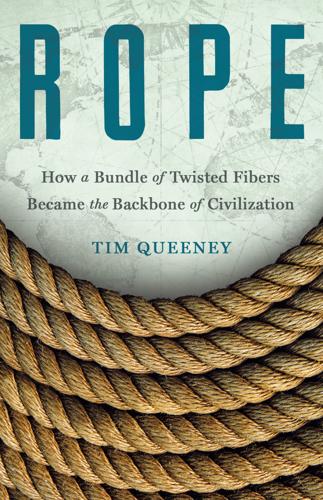
Rope: How a Bundle of Twisted Fibers Became the Backbone of Civilization
by
Tim Queeney
Published 11 Aug 2025
In addition to the pyramids and obelisks of Egypt and the ring of stones at Stonehenge, there are many others. Göbekli Tepe in Turkey is an ancient building site with massive T-shaped stelae stones arranged in multiple circles that, likely built in 9500 BCE, is much older than the Egyptian pyramids. In Central America there are the Mayan and Aztec pyramids and on Easter Island in the Pacific the fascinating moai. One of the greatest human building projects was the Great Wall of China. The name is something of a misnomer; as Chinese and East Asian historian Arthur Waldron wrote, “no single Great Wall ever existed in China.”25 The Great Wall is not one wall, but comprises various lengths of walls built over many centuries, some constructed of rammed earth, some with brick and stone.
…
In his book Guns, Germs, and Steel, Jared Diamond noted: “One specific type of artifact linking Taiwan’s Ta-p’en-k’eng [Dapenkeng] culture to later Pacific island cultures is a bark beater, a stone implement used for pounding the fibrous bark of a certain tree species into rope.”5 This outward movement across hundreds of miles of open ocean at a time started in Taiwan in the fourth century BCE and ended when voyagers reached Easter Island/Rapa Nui between 500 and 1000 CE. In the process, Austronesians planted settlements on every island that could maintain a human population. They also sailed west into the Indian Ocean, reaching Madagascar, plus there is archaeological evidence of a settlement on Enderby Island in the Auckland Archipelago off Antarctica, 290 miles south of New Zealand.
…
See punishment and torture Curiosity rover da Gama, Vasco Dana, Richard Henry, Jr., Two Years Before the Mast Danza de los Voladores Dark and Dashing Horseman (Steiner) D-Day invasion deadeyes deus ex machina Devil in the White City, The (Larson) Diamond, Jared Dias, Bartolomeu Dickens, Charles Double Dutch Douglass, Frederick Drama on Stage (Goodman) Droms, Yvonne DuPont Company Dyer, Martin P. Easter Island Egypt boats in lifting cranes in obelisks in pyramids in rope in Einstein, Albert Ellzey, Bill el-Mallakh, Kamal Encyclopedia of Islam, The (Gibb, ed.) England clandestine marriages in executions in entanglement Equal Justice Initiative Erickson, John R. Erickson, Kris Erikson, Leif Erik the Red Euripides exploration, voyages of Falconer, William Farrington, E.
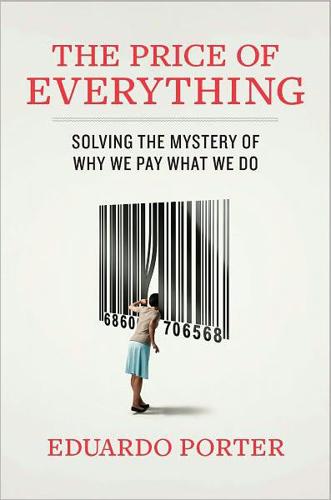
The Price of Everything: And the Hidden Logic of Value
by
Eduardo Porter
Published 4 Jan 2011
His brand of catastrophe had visited other corners of the world. The classical Mayan civilization collapsed around the ninth century of the Christian era, tearing itself apart in myriad wars over exhausted natural resources in the lowlands of what is now Guatemala, Honduras, Belize, and south-eastern Mexico. The Rapa Nui of Easter Island, famed carvers of huge monolithic heads called Moai, also collapsed after it exhausted its physical limits. A population that reached a peak of ten thousand in the early fifteenth century had withered to about two thousand when Captain James Cook visited the island in 1774. The surviving civilization had no idea how the monumental stone heads had come to be there.
…
Carlyle’s quote is in Thomas Carlyle, Chartism (New York: Wiley and Putnam, 1847), p. 383. The description of the collapse of ancient civilizations draws from Jared Diamond, “The Last Americans: Environmental Collapse and the End of Civilization,” Harper’s, June 2003; and James Brander and M. Scott Taylor, “The Simple Economics of Easter Island: A Ricardo-Malthus Model of Renewable Resource Use,” American Economic Review, Vol. 88, No. 1, March 1998, pp. 119-138. The description of the world in the centuries up to Malthus’s day and the economic transformation experienced since then draws from J. Bradford Delong, “Estimating World GDP, One Million B.C.
…
demand democracy Deng Xiaoping Denmark, Danes Denver shoppers deregulation Descartes, René Desperate Housewives (TV show) developing world climate change in garbage dumps in sex in Dickens, Charles Digital Rights Management technologies (DRM) discount rate discrimination divorce finances and dogs, as food dot.com bubble dowries drivers drugs abuse of Duke University Dunkin’ Donuts dwarf tossing Easter Island Easterlin, Richard Eastern Europe, former Soviet satellites in Eastman, George Eastman Kodak Company economic growth happiness and economics for a new world “Economics of Superstars, The” (Rosen) education of children wages and of women efficient markets eggs Egypt, Egyptians Ehrlich, Paul R.

Sextant: A Young Man's Daring Sea Voyage and the Men Who ...
by
David Barrie
Published 12 May 2014
In the course of his three great voyages of discovery, Cook, with sextant in hand, added more to European knowledge of the Pacific Ocean than any other single person. It was he who first recognized the kinship of the peoples inhabiting the so-called Polynesian Triangle—the vast area of sea that embraces at its extremities Hawaii, New Zealand, and Easter Island.9 On his first voyage (1768–71), he put many islands on the map for the first time, circumnavigated New Zealand (of which, until then, only parts of the west coast were known), and went on to explore most of the east coast of what we now know as Australia. On his second voyage (1772–75), Cook sailed farther south than anyone before—on one occasion coming almost within sight of Antarctica itself—in his determined effort to prove that no habitable landmass lay in that region.
…
So if—as seems quite possible—the young Napoleon had wanted to join La Pérouse, she would probably not have allowed him to do so.11 Who knows what the consequences for the world might have been if she had not been such a formidable woman? The orders given to La Pérouse were extraordinarily—almost absurdly—detailed and precise both as to the itinerary and the timetable.12 The expedition was to take him around Cape Horn, to Easter Island, Hawaii, Alaska, and down the American coast to California, then across the Pacific to China, the Philippines, Taiwan, Korea, Japan, Sakhalin, and Kamchatka. In addition to making accurate charts of the places they visited, La Pérouse and his colleagues were required to gather every kind of information that might conceivably be useful—meteorological, botanical, social, anthropological, economic, political, military, and much more besides.
…
See tides and tidal currents Daedalus, 152 Dagelet, Joseph Lepaute, 126, 128–29 Dalrymple, Alexander, 88, 88n, 92 Darwin, Charles, 195, 210–11, 217, 231–32 Davis, John, 30 De Caen, Charles, 182–83, 185 dead reckoning (DR) author’s experience with, 5 and Batavia wreck, 51 and the Battle of Jutland, 302n2 compared with lunar-distance method, 76 described, 33–34 and determining longitude, 53–54 and line of equal altitude, 220 and Saecwen’s Atlantic crossing, 36, 225 and the Shackleton expedition, 249, 254, 262 and Slocum’s circumnavigation, 230, 233, 236 unreliability of, 213–14 and Vancouver’s explorations, 144 declination of sun, 20, 20–21, 26, 300n6 Defoe, Daniel, 159, 232 Deneb, 16, 275 Denmark Strait, 301n1 Departures, 12, 229 Dépôt des Cartes et Plans de la Marine, 86 Derwent River, 162 DesBarres, Joseph, 11, 15 Diana’s Bank, 119 Diderot, Denis, 114 Diego Ramírez Islands, 209, 240 Dillon, Peter, 134–36 dipping needles, 125 disciplinary issues on ships, 142–43 Discovery, 94, 138–39, 143–44, 151, 153 disease and illnesses and Bligh’s explorations, 43 and Cook’s explorations, 103, 264–65 dysentery, 43, 52, 103, 175 impact on native populations, 95 and La Pérouse’s explorations, 133 malaria, 43, 103 and Mendaña’s explorations, xiv and native populations, xiv, 95–96 scurvy, xv, 52, 54, 121, 127, 131–33, 172, 175, 302n10 and sedentary lifestyle, 285 sexually transmitted disease, 95–96, 158, 188–89 and Vancouver’s explorations, 154 dividing engine, 75 Dixon, Jeremiah, 106 Doe, Nicholas A., 308n18 dolphins, 22, 137, 193, 218, 267, 275 Donkin Cove, 203 double-reflection principle, 30, 31 Drake, Francis, 194 Du Vivier, Alexa and arrival in England, 269 and departure from Halifax, 13 and food on board Saecwen, 193 and music on board Saecwen, 193, 219 and North Atlantic weather, 111–13 and preparations for Atlantic crossing, 8, 10 and routine at sea, 17, 22, 48, 239 and sail repairs, 137 and watch schedule, 48, 85, 218 dung beetles, 23 Dunn, Richard, 108n Dutch East Indies, 43, 51 Dutch States General, 64–65 dysentery, 43, 52, 103, 175 early humans, 23–24, 284–85 Earnshaw, Thomas, 68 East India Company, 76, 82, 88, 168 East Indies, 120 Easter Island, 90, 126 echo sounders, 5, 46 eclipses, 169 electronic chart display and information systems (ECDIS), 282 electronic navigation aids, 265, 286 Elephant Island, 247, 249, 251, 256, 261 Emergency Position-Indicating Radio Beacon (EPIRB), 302n3 emperor penguins, 245–46 Endeavour, 88–89, 96–97, 98–101, 103, 107, 167, 264 Endurance, 241–50 England, 2–3 English Channel, 5, 32–33, 50, 51, 166–67 Entrecasteaux, Joseph-Antoine Bruny d’, xvi–xvii, 133–34 ephemeris tables, 60, 63, 219 equal altitude circles, 220–23, 222, 280, 311n6 Eratosthenes, 4 Escures, Charles d’, 127–28 Euler, Leonhard, 73 Europa, 138 European Union, 280 evolution, 212, 217 Falkland Islands, 114–15, 210 Falmouth, Maine, 8 Fame, 138 Far East, 168 Fidget, 6 Fiji, 40, 134 Fitz Hugh Sound, 152 FitzRoy, Robert on “Breaker Bay,” 206–7, 232 on natural navigation methods, 262 navigational skills, 219 and timekeeping challenges, 225–26 and voyage of the Beagle, 200–210, 210–17 and weather prediction, 170, 206 Flinders, Matthew and Bligh, 157–59, 162 captivity, 182–85 chart-making skills, 185–88 explorations with Bass, 159–63, 170–71 financial difficulties, 188–89 and meteorology, 215 personal papers, 189n and Phillip King, 195 and place-names, 189–90 shipwreck, 177–82 survey of Australian coast, 163–76 and Trim (cat), 190–92, 277 and weather prediction, 206 Flinders, Samuel, 167, 174, 187 Flinders bars, 170 Flinders-Petrie, William, 189, 189n Forster, Johann, 91, 93, 106 fothering, 97 France, 85 Francis, 181 Franklin, John, 167–68 French Frigate Shoal, 129 French Revolution, 133, 142, 183 Frisius, Gemma, 59 fur trade, 139 Fury Island, 231 Galapagos Islands, 211 Galiano, Dionisio Alcalá, 147, 147n Galileo Galilei, 59, 64–65 Gamboa, Pedro Sarmiento de, 196–97n Ganges, 200 geography, 60–61 geometry, 69 George III, 68, 155 George’s Island, 229 George’s River, 160 Gilbert, Humphrey, 14 Gillray, James, 155 Gladwin, Thomas, 263 glass fiber-reinforced plastic (GRP), 46 Global Navigation Satellite Systems (GNSS), 299n11 Global Positioning System (GPS), xix–xx, 265, 279–83, 313n27 global warming, 87n GLONASS (Russian satellite navigation system), 280 Glorious First of June (1794), 159 Gloucester, Massachusetts, 8 Godfrey, Thomas, 32 Godin, Louis, 60–61 Gooch, William, 146, 152 Grand Banks, 14, 22, 22n Grand Manan Island, 9, 227 Grand Tour, 142 gravitational field of earth, 303n6 Great Barrier Reef and Bligh’s explorations, 39, 41, 43–44 and Cook’s explorations, 96–97, 98–102, 104 and Flinders’s explorations, 173 Great Britain, xvii Great Circle route, 33 Greek culture, 58, 303n1 Green, Charles, 102–3, 103–4 Greenwich Hour Angle (GHA), 69 Greenwich meridian, 15, 59, 80 Greenwich Time chronometers synchronized with, 70, 104, 144, 251 and “clearing the distance,” 77 and determining longitude, 59–60, 64, 69, 70, 186–87, 220 Grenville, William, 1st Baron, 155 growlers, 11 Guadalcanal, xv Guadeloupe, 65 Gulf of Carpentaria, 120, 173–74 Gulf of Peñas, 198 Gulf Stream, 18 Gulliver’s Travels (Swift), 168–69n H4 watch, 66–67, 78–80, 102, 104 Hadley, John, 31–32, 74 Hadley’s quadrant, 31, 31–32, 82, 89, 114, 299n8 Hakluyt, Richard, 14 Halifax, Nova Scotia, 10, 11, 229 Harbor of Mercy, 196–98 Harrison, John, 66–68, 68n, 72, 77–80, 82 Harrison, William, 67–68, 78 Hawaiian Islands, 90, 94, 140, 143–44, 152, 154 heaving to, 171, 214–15, 241, 256–57 Heelstone (at Stonehenge), 24 heliocentric view of the universe, 17 Hermite Island, 208 Heywood, Peter (“Pip”), 44 Hicks, Lieutenant (Cook expedition), 100 Hilleret, Paul-Gustave-Eugène, 222 Hipparchus, 4 Hiva Oa, 236n Hobart, Tasmania, 135, 162–63 Hogarth, William, 66 Hōkūle’a (double canoe), 263 Holland, Samuel, 10 Homer, 16–17 homing pigeons, 23 honeybees, 23 Hood, 36, 45, 301n1 Hook, Robert, 300n12 Hope, 180 horizontal sextant angles, 147, 239 Horror Rock, 257n hourglasses, xv Houtman, Frederick de, 51 Howard, Trevor, 1, 37 hurricanes, xv Huygens, Christiaan, 59 hydrography, xvii, 61, 85, 108, 166, 185–88.

The Rational Optimist: How Prosperity Evolves
by
Matt Ridley
Published 17 May 2010
p. 82 ‘The success of human beings depends crucially, but precariously, on numbers and connections.’ Incidentally, the story of the Greenland Norse, or of the inhabitants of Easter Island, told so eloquently as tales of ecological exhaustion in Jared Diamond’s book Collapse, probably say as much about isolation as ecology. Isolated from Scandinavia by a combination of the Black Death and the worsening climate, the Greenland Norse could not sustain their lifestyles; like the Tasmanians, they forgot how to fish. Easter Island Diamond may have partly misread: some argue that its society was possibly still flourishing, despite deforestation, when a holocaust of slave traders arrived in the 1860s – see Peiser, B. 2005.
…
After a successful battle against the Midianites and a massacre of the adult males, he told them to finish the job by raping the virgins: ‘Now therefore kill every male among the little ones, and kill every woman that hath known man by lying with him. But all the women children, that have not known a man by lying with him, keep alive for yourselves.’ (Numbers 31) Likewise, wherever anthropologists look, from New Guinea to the Amazon and Easter Island, they find chronic warfare among today’s subsistence farmers. Pre-emptively raiding your neighbours lest they raid you is routine human behaviour. As Paul Seabright has written: ‘Where there are no institutional restraints on such behaviour, systematic killing of unrelated individuals is so common among human beings that, awful though it is, it cannot be described as exceptional, pathological or disturbed.’
…
Abbasids 161, 178 Abelard, Peter 358 aborigines (Australian): division of labour 62, 63, 76; farming 127; technological regress 78–84; trade 90–91, 92 abortion, compulsory 203 Abu Hureyra 127 Acapulco 184 accounting systems 160, 168, 196 Accra 189 Acemoglu, Daron 321 Ache people 61 Acheulean tools 48–9, 50, 275, 373 Achuar people 87 acid rain 280, 281, 304–6, 329, 339 acidification of oceans 280, 340–41 Adams, Henry 289 Aden 177 Adenauer, Konrad 289 Aegean sea 168, 170–71 Afghanistan 14, 208–9, 315, 353 Africa: agriculture 145, 148, 154–5, 326; AIDS epidemic 14, 307–8, 316, 319, 320, 322; colonialism 319–20, 321–2; demographic transition 210, 316, 328; economic growth 315, 326–8, 332, 347; international aid 317–19, 322, 328; lawlessness 293, 320; life expectancy 14, 316, 422; per capita income 14, 315, 317, 320; poverty 314–17, 319–20, 322, 325–6, 327–8; prehistoric 52–5, 65–6, 83, 123, 350; property rights 320, 321, 323–5; trade 187–8, 320, 322–3, 325, 326, 327–8; see also individual countries African-Americans 108 agricultural employment: decline in 42–3; hardships of 13, 219–20, 285–6 agriculture: early development of 122–30, 135–9, 352, 387, 388; fertilisers, development of 135, 139–41, 142, 146, 147, 337; genetically modified (GM) crops 28, 32, 148, 151–6, 283, 358; hybrids, development of 141–2, 146, 153; and trade 123, 126, 127–33, 159, 163–4; and urbanisation 128, 158–9, 163–4, 215; see also farming; food supply Agta people 61–2 aid, international 28, 141, 154, 203, 317–19, 328 AIDS 8, 14, 307–8, 310, 316, 319, 320, 322, 331, 353 AIG (insurance corporation) 115 air conditioning 17 air pollution 304–5 air travel: costs of 24, 37, 252, 253; speed of 253 aircraft 257, 261, 264, 266 Akkadian empire 161, 164–5 Al-Ghazali 357 Al-Khwarizmi, Muhammad ibn Musa 115 Al-Qaeda 296 Albania 187 Alcoa (corporation) 24 Alexander the Great 169, 171 Alexander, Gary 295 Alexandria 171, 175, 270 Algeria 53, 246, 345 alphabet, invention of 166, 396 Alps 122, 178 altruism 93–4, 97 aluminium 24, 213, 237, 303 Alyawarre aborigines 63 Amalfi 178 Amazon (corporation) 21, 259, 261 Amazonia 76, 138, 145, 250–51 amber 71, 92 ambition 45–6, 351 Ames, Bruce 298–9 Amish people 211 ammonia 140, 146 Amsterdam 115–16, 169, 259, 368 Amsterdam Exchange Bank 251 Anabaptists 211 Anatolia 127, 128, 164, 165, 166, 167 Ancoats, Manchester 214 Andaman islands 66–7, 78 Andes 123, 140, 163 Andrew, Deroi Kwesi 189 Angkor Wat 330 Angola 316 animal welfare 104, 145–6 animals: conservation 324, 339; extinctions 17, 43, 64, 68, 69–70, 243, 293, 302, 338–9; humans’ differences from other 1, 2–4, 6, 56, 58, 64 Annan, Kofi 337 Antarctica 334 anti-corporatism 110–111, 114 anti-slavery 104, 105–6, 214 antibiotics 6, 258, 271, 307 antimony 213 ants 75–6, 87–8, 192 apartheid 108 apes 56–7, 59–60, 62, 65, 88; see also chimpanzees; orang-utans ‘apocaholics’ 295, 301 Appalachia 239 Apple (corporation) 260, 261, 268 Aquinas, St Thomas 102 Arabia 66, 159, 176, 179 Arabian Sea 174 Arabs 89, 175, 176–7, 180, 209, 357 Aral Sea 240 Arcadia Biosciences (company) 31–2 Archimedes 256 Arctic Ocean 125, 130, 185, 334, 338–9 Argentina 15, 186, 187 Arikamedu 174 Aristotle 115, 250 Arizona 152, 246, 345 Arkwright, Sir Richard 227 Armenians 89 Arnolfini, Giovanni 179 art: cave paintings 2, 68, 73, 76–7; and commerce 115–16; symbolism in 136; as unique human trait 4 Ashur, Assyria 165 Asimov, Isaac 354 Asoka the Great 172–3 aspirin 258 asset price inflation 24, 30 Assyrian empire 161, 165–6, 167 asteroid impacts, risk of 280, 333 astronomy 221, 270, 357 Athabasca tar sands, Canada 238 Athens 115, 170, 171 Atlantic Monthly 293 Atlantic Ocean 125, 170 Attica 171 Augustus, Roman emperor 174 Augustus the Strong, Elector of Saxony 184–5 Australia: climate 127, 241, 300, 334; prehistoric 66, 67, 69–70, 127; trade 187; see also aborigines (Australian); Tasmania Austria 132 Ausubel, Jesse 239, 346, 409 automobiles see cars axes: copper 123, 131, 132, 136, 271; stone 2, 5, 48–9, 50, 51, 71, 81, 90–91, 92, 118–19, 271 Babylon 21, 161, 166, 240, 254, 289 Bacon, Francis 255 bacteria: cross fertilisation 271; and pest control 151; resistance to antibiotics 6, 258, 271, 307; symbiosis 75 Baghdad 115, 177, 178, 357 Baines, Edward 227 Baird, John Logie 38 baking 124, 130 ‘balance of nature’, belief in 250–51 Balazs, Etienne 183 bald eagles 17, 299 Bali 66 Baltic Sea 71, 128–9, 180, 185 Bamako 326 bananas 92, 126, 149, 154, 392 Bangladesh 204, 210, 426 Banks, Sir Joseph 221 Barigaza (Bharuch) 174 barley 32, 124, 151 barrels 176 bartering vii, 56–60, 65, 84, 91–2, 163, 356 Basalla, George 272 Basra 177 battery farming 104, 145–6 BBC 295 beads 53, 70, 71, 73, 81, 93, 162 beef 186, 224, 308; see also cattle bees, killer 280 Beijing 17 Beinhocker, Eric 112 Bell, Alexander Graham 38 Bengal famine (1943) 141 benzene 257 Berlin 299 Berlin, Sir Isaiah 288 Bernard of Clairvaux, St 358 Berners-Lee, Sir Tim 38, 273 Berra, Yogi 354 Besant, Annie 208 Bhutan 25–6 Bible 138, 168, 396 bicycles 248–9, 263, 269–70 bin Laden, Osama 110 biofuels 149, 236, 238, 239, 240–43, 246, 300, 339, 343, 344, 346, 393 Bird, Isabella 197–8 birds: effects of pollution on 17, 299; killed by wind turbines 239, 409; nests 51; sexual differences 64; songbirds 55; see also individual species bireme galleys 167 Birmingham 223 birth control see contraception birth rates: declining 204–212; and food supply 192, 208–9; and industrialisation 202; measurement of 205, 403; population control policies 202–4, 208; pre-industrial societies 135, 137; and television 234; and wealth 200–201, 204, 205–6, 209, 211, 212; see also population growth Black Death 181, 195–6, 197, 380 Black Sea 71, 128, 129, 170, 176, 180 blogging 257 Blombos Cave, South Africa 53, 83 blood circulation, discovery of 258 Blunt, John 29 boat-building 167, 168, 177; see also canoes; ship-building Boers 321, 322 Bohemia 222 Bolivia 315, 324 Bolsheviks 324 Borlaug, Norman 142–3, 146 Borneo 339 Bosch, Carl 140, 412 Botswana 15, 316, 320–22, 326 Bottger, Johann Friedrich 184–5 Boudreaux, Don 21, 214 Boulton, Matthew 221, 256, 413–14 bows and arrows 43, 62, 70, 82, 137, 251, 274 Boxgrove hominids 48, 50 Boyer, Stanley 222, 405 Boyle, Robert 256 Bradlaugh, Charles 208 brain size 3–4, 48–9, 51, 55 Bramah, Joseph 221 Branc, Slovakia 136 Brand, Stewart 154, 189, 205 Brando, Marlon 110 brass 223 Brazil 38, 87, 123, 190, 240, 242, 315, 358 bread 38, 124, 140, 158, 224, 286, 392 bridges, suspension 283 Brin, Sergey 221, 405 Britain: affluence 12, 16, 224–5, 236, 296–7; birth rates 195, 200–201, 206, 208, 227; British exceptionalism 200–202, 221–2; climate change policy 330–31; consumer prices 24, 224–5, 227, 228; copyright system 267; enclosure acts 226, 323, 406; energy use 22, 231–2, 232–3, 342–3, 368, 430; ‘glorious revolution’ (1688) 223; income equality 18–19, 218; industrial revolution 201–2, 216–17, 220–32, 255–6, 258–9; life expectancy 15, 17–18; National Food Service 268; National Health Service 111, 261; parliamentary reform 107; per capita income 16, 218, 227, 285, 404–5; productivity 112; property rights 223, 226, 323–4; state benefits 16; tariffs 185–6, 186–7, 223; see also England; Scotland; Wales British Empire 161, 322 bronze 164, 168, 177 Brosnan, Sarah 59 Brown, Lester 147–8, 281–2, 300–301 Brown, Louise 306 Bruges 179 Brunel, Sir Marc 221 Buddhism 2, 172, 357 Buddle, John 412 Buffett, Warren 106, 268 Bulgaria 320 Burkina Faso 154 Burma 66, 67, 209, 335 Bush, George W. 161 Butler, Eamonn 105, 249 Byblos 167 Byzantium 176, 177, 179 cabbages 298 ‘Caesarism’ 289 Cairo 323 Calcutta 190, 315 Calico Act (1722) 226 Califano, Joseph 202–3 California: agriculture 150; Chumash people 62, 92–3; development of credit card 251, 254; Mojave Desert 69; Silicon Valley 221–2, 224, 257, 258, 259, 268 Cambodia 14, 315 camels 135, 176–7 camera pills 270–71 Cameroon 57 Campania 174, 175 Canaanites 166, 396 Canada 141, 169, 202, 238, 304, 305 Canal du Midi 251 cancer 14, 18, 293, 297–9, 302, 308, 329 Cannae, battle of 170 canning 186, 258 canoes 66, 67, 79, 82 capitalism 23–4, 101–4, 110, 115, 133, 214, 258–62, 291–2, 311; see also corporations; markets ‘Captain Swing’ 283 capuchin monkeys 96–7, 375 Caral, Peru 162–3 carbon dioxide emissions 340–47; absorption of 217; and agriculture 130, 337–8; and biofuels 242; costs of 331; and economic growth 315, 332; and fossil fuels 237, 315; and local sourcing of goods 41–2; taxes 346, 356 Cardwell’s Law 411 Caribbean see West Indies Carnegie, Andrew 23 Carney, Thomas 173 carnivorism 51, 60, 62, 68–9, 147, 156, 241, 376 carrots 153, 156 cars: biofuel for 240, 241; costs of 24, 252; efficiency of 252; future production 282, 355; hybrid 245; invention of 189, 270, 271; pollution from 17, 242; sport-utility vehicles 45 The Rational Optimist 424 Carson, Rachel 152, 297–8 Carter, Jimmy 238 Carthage 169, 170, 173 Cartwright, Edmund 221, 263 Castro, Fidel 187 Catalhoyuk 127 catallaxy 56, 355–9 Catholicism 105, 208, 306 cattle 122, 132, 145, 147, 148, 150, 197, 321, 336; see also beef Caucasus 237 cave paintings 2, 68, 73, 76–7 Cavendish, Henry 221 cement 283 central heating 16, 37 cereals 124–5, 125–6, 130–31, 143–4, 146–7, 158, 163; global harvests 121 Champlain, Samuel 138–9 charcoal 131, 216, 229, 230, 346 charitable giving 92, 105, 106, 295, 318–19, 356 Charles V: king of Spain 30–31; Holy Roman Emperor 184 Charles, Prince of Wales 291, 332 Chauvet Cave, France 2, 68, 73, 76–7 Chernobyl 283, 308, 345, 421 Chicago World Fair (1893) 346 chickens 122–3, 145–6, 147, 148, 408 chickpeas 125 Childe, Gordon 162 children: child labour 104, 188, 218, 220, 292; child molestation 104; childcare 2, 62–3; childhood diseases 310; mortality rates 14, 15, 16, 208–9, 284 Chile 187 chimpanzees 2, 3, 4, 6, 29, 59–60, 87, 88, 97 China: agriculture 123, 126, 148, 152, 220; birth rate 15, 200–201; coal supplies 229–30; Cultural Revolution 14, 201; diet 241; economic growth and industrialisation 17, 109, 180–81, 187, 201, 219, 220, 281–2, 300, 322, 324–5, 328, 358; economic and technological regression 180, 181–2, 193, 229–30, 255, 321, 357–8; energy use 245; income equality 19; innovations 181, 251; life expectancy 15; Longshan culture 397; Maoism 16, 187, 296, 311; Ming empire 117, 181–4, 260, 311; per capita income 15, 180; prehistoric 68, 123, 126; serfdom 181–2; Shang dynasty 166; Song dynasty 180–81; trade 172, 174–5, 177, 179, 183–4, 187, 225, 228 chlorine 296 cholera 40, 310 Chomsky, Noam 291 Christianity 172, 357, 358, 396; see also Catholicism; Church of England; monasteries Christmas 134 Chumash people 62, 92–3 Church of England 194 Churchill, Sir Winston 288 Cicero 173 Cilicia 173 Cisco Systems (corporation) 268 Cistercians 215 civil rights movement 108, 109 Clairvaux Abbey 215 Clark, Colin 146, 227 Clark, Gregory 193, 201, 401, 404 Clarke, Arthur C. 354 climate change 328–47, 426–30; costs of mitigation measures 330–32, 333, 338, 342–4; death rates associated with 335–7; and ecological dynamism 250, 329–30, 335, 339; and economic growth 315, 331–3, 341–3, 347; effects on ecosystems 338–41; and food supply 337–8; and fossil fuels 243, 314, 342, 346, 426; historic 194, 195, 329, 334, 426–7; pessimism about 280, 281, 314–15, 328–9; prehistoric 54, 65, 125, 127, 130, 160, 329, 334, 339, 340, 352; scepticism about 111, 329–30, 426; solutions to 8, 315, 345–7 Clinton, Bill 341 Clippinger, John 99 cloth trade 75, 159, 160, 165, 172, 177, 180, 194, 196, 225, 225–9, 232 clothes: Britain 224, 225, 227; early homo sapiens 71, 73; Inuits 64; metal age 122; Tasmanian natives 78 clothing prices 20, 34, 37, 40, 227, 228 ‘Club of Rome’ 302–3 coal: and economic take-off 201, 202, 213, 214, 216–17; and generation of electricity 233, 237, 239, 240, 304, 344; and industrialisation 229–33, 236, 407; prices 230, 232, 237; supplies 302–3 coal mining 132, 230–31, 237, 239, 257, 343 Coalbrookdale 407 Cobb, Kelly 35 Coca-Cola (corporation) 111, 263 coffee 298–9, 392 Cohen, Mark 135 Cold War 299 collective intelligence 5, 38–9, 46, 56, 83, 350–52, 355–6 Collier, Paul 315, 316–17 colonialism 160, 161, 187, 321–2; see also imperialism Colorado 324 Columbus, Christopher 91, 184 combine harvesters 158, 392 combined-cycle turbines 244, 410 commerce see trade Commoner, Barry 402 communism 106, 336 Compaq (corporation) 259 computer games 273, 292 computers 2, 3, 5, 211, 252, 260, 261, 263–4, 268, 282; computing power costs 24; information storage capacities 276; silicon chips 245, 263, 267–8; software 99, 257, 272–3, 304, 356; Y2K bug 280, 290, 341; see also internet Confucius 2, 181 Congo 14–15, 28, 307, 316 Congreve, Sir William 221 Connelly, Matthew 204 conservation, nature 324, 339; see also wilderness land, expansion of conservatism 109 Constantinople 175, 177 consumer spending, average 39–40 containerisation 113, 253, 386 continental drift 274 contraception 208, 210; coerced 203–4 Cook, Captain James 91 cooking 4, 29, 38, 50, 51, 52, 55, 60–61, 64, 163, 337 copper 122, 123, 131–2, 160, 162, 164, 165, 168, 213, 223, 302, 303 copyright 264, 266–7, 326 coral reefs 250, 339–40, 429–30 Cordoba 177 corn laws 185–6 Cornwall 132 corporations 110–116, 355; research and development budgets 260, 262, 269 Cosmides, Leda 57 Costa Rica 338 cotton 37, 108, 149, 151–2, 162, 163, 171, 172, 202, 225–9, 230, 407; calico 225–6, 232; spinning and weaving 184, 214, 217, 219–20, 227–8, 232, 256, 258, 263, 283 Coughlin, Father Charles 109 Craigslist (website) 273, 356 Crapper, Thomas 38 Crathis river 171 creationists 358 creative destruction 114, 356 credit cards 251, 254 credit crunch (2008) 8–10, 28–9, 31, 100, 102, 316, 355, 399, 411 Cree Indians 62 Crete 167, 169 Crichton, Michael 254 Crick, Francis 412 crime: cyber-crime 99–100, 357; falling rates 106, 201; false convictions 19–20; homicide 14, 20, 85, 88, 106, 118, 201; illegal drugs 106, 186; pessimism about 288, 293 Crimea 171 crocodiles, deaths by 40 Crompton, Samuel 227 Crookes, Sir William 140, 141 cruelty 104, 106, 138–9, 146 crusades 358 Cuba 187, 299 ‘curse of resources’ 31, 320 cyber-crime 99–100, 357 Cyprus 132, 148, 167, 168 Cyrus the Great 169 Dalkon Shield (contraceptive device) 203 Dalton, John 221 Damascus 127 Damerham, Wiltshire 194 Danube, River 128, 132 Darby, Abraham 407 Darfur 302, 353 Dark Ages 164, 175–6, 215 Darwin, Charles 77, 81, 91–2, 105, 116, 350, 415 Darwin, Erasmus 256 Darwinism 5 Davy, Sir Humphry 221, 412 Dawkins, Richard 5, 51 DDT (pesticide) 297–8, 299 de Geer, Louis 184 de Soto, Hernando 323, 324, 325 de Waal, Frans 88 Dean, James 110 decimal system 173, 178 deer 32–3, 122 deflation 24 Defoe, Daniel 224 deforestation, predictions of 304–5, 339 Delhi 189 Dell (corporation) 268 Dell, Michael 264 demographic transition 206–212, 316, 328, 402 Denmark 200, 344, 366; National Academy of Sciences 280 Dennett, Dan 350 dentistry 45 depression (psychological) 8, 156 depressions (economic) 3, 31, 32, 186–7, 192, 289; see also economic crashes deserts, expanding 28, 280 Detroit 315, 355 Dhaka 189 diabetes 156, 274, 306 Diamond, Jared 293–4, 380 diamonds 320, 322 Dickens, Charles 220 Diesel, Rudolf 146 Digital Equipment Corporation 260, 282 digital photography 114, 386 Dimawe, battle of (1852) 321 Diocletian, Roman emperor 175, 184 Diodorus 169 diprotodons 69 discount merchandising 112–14 division of labour: Adam Smith on vii, 80; and catallaxy 56; and fragmented government 172; in insects 75–6, 87–8; and population growth 211; by sex 61–5, 136, 376; and specialisation 7, 33, 38, 46, 61, 76–7, 175; among strangers and enemies 87–9; and trust 100; and urbanisation 164 DNA: forensic use 20; gene transfer 153 dogs 43, 56, 61, 84, 125 Doll, Richard 298 Dolphin, HMS 169 dolphins 3, 87 Domesday Book 215 Doriot, Georges 261 ‘dot-communism’ 356 Dover Castle 197 droughts: modern 241, 300, 334; prehistoric 54, 65, 334 drug crime 106, 186 DuPont (corporation) 31 dyes 167, 225, 257, 263 dynamos 217, 233–4, 271–2, 289 dysentery 157, 353 eagles 17, 239, 299, 409 East India Company 225, 226 Easter Island 380 Easterbrook, Greg 294, 300, 370 Easterlin, Richard 26 Easterly, William 318, 411 eBay (corporation) 21, 99, 100, 114, 115 Ebla, Syria 164 Ebola virus 307 economic booms 9, 29, 216 economic crashes 7–8, 9, 193; credit crunch (2008) 8–10, 28–9, 31, 100, 102, 316, 355, 399, 411; see also depressions (economic) ecosystems, dynamism of 250–51, 303, 410 Ecuador 87 Edinburgh Review 285 Edison, Thomas 234, 246, 272, 412 education: Africa 320; Japan 16; measuring value of 117; and population control 209, 210; universal access 106, 235; women and 209, 210 Edwards, Robert 306 Eemian interglacial period 52–3 Egypt: ancient 161, 166, 167, 170, 171, 192, 193, 197, 270, 334; Mamluk 182; modern 142, 154, 192, 301, 323; prehistoric 44, 45, 125, 126; Roman 174, 175, 178 Ehrenreich, Barbara 291 Ehrlich, Anne 203, 301–2 Ehrlich, Paul 143, 190, 203, 207, 301–2, 303 electric motors 271–2, 283 electricity 233–5, 236, 237, 245–6, 337, 343–4; costs 23; dynamos 217, 233–4, 271–2, 289 elephants 51, 54, 69, 303, 321 Eliot, T.S. 289 email 292 emigration 199–200, 202; see also migrations empathy 94–8 empires, trading 160–61; see also imperialism enclosure acts 226, 323, 406 endocrine disruptors 293 Engels, Friedrich 107–8, 136 England: agriculture 194–6, 215; infant mortality 284; law 118; life expectancy 13, 284; medieval population 194–7; per capita income 196; scientific revolution 255–7; trade 75, 89, 104, 106, 118, 169, 194; see also Britain Enron (corporation) 29, 111, 385 Erie, Lake 17 Erie Canal 139, 283 ethanol 240–42, 300 Ethiopia 14, 316, 319; prehistoric 52, 53, 129 eugenics 288, 329 Euphrates river 127, 158, 161, 167, 177 evolution, biological 5, 6, 7, 49–50, 55–6, 75, 271, 350 Ewald, Paul 309 exchange: etiquette and ritual of 133–4; and innovation 71–2, 76, 119, 167–8, 251, 269–74; and pre-industrial economies 133–4; and property rights 324–5; and rule of law 116, 117–18; and sexual division of labour 65; and specialisation 7, 10, 33, 35, 37–8, 46, 56, 58, 75, 90, 132–3, 350–52, 355, 358–9; and trust 98–100, 103, 104; as unique human trait 56–60; and virtue 100–104; see also bartering; markets; trade executions 104 extinctions 17, 43, 64, 68, 69–70, 243, 293, 302, 338–9 Exxon (corporation) 111, 115 eye colour 129 Ezekiel 167, 168 Facebook (website) 262, 268, 356 factories 160, 214, 218, 219–20, 221, 223, 256, 258–9, 284–5 falcons 299 family formation 195, 209–210, 211, 227 famines: modern 141, 143, 154, 199, 203, 302; pessimism about 280, 281, 284, 290, 300–302, 314; pre-industrial 45, 139, 195, 197 Faraday, Michael 271–2 Fargione, Joseph 242 farming: battery 104, 145–6; free-range 146, 308; intensive 143–9; organic 147, 149–52, 393; slash-and-burn 87, 129, 130; subsidies 188, 328; subsistence 87, 138, 175–6, 189, 192, 199–200; see also agriculture; food supply fascism 289 Fauchart, Emmanuelle 264 fax machines 252 Feering, Essex 195 Fehr, Ernst 94–6 female emancipation 107, 108–9, 209 feminism 109 Ferguson, Adam 1 Ferguson, Niall 85 Fermat’s Last Theorem 275 fermenting 130, 241 Ferranti, Sebastian de 234 Fertile Crescent 126, 251 fertilisation, in-vitro 306 fertilisers 32, 129, 135, 139–41, 142, 143, 145, 146, 147, 148, 149–50, 152, 155, 200, 337 Fibonacci 178 figs 125, 129 filariasis 310 Finland 15, 35, 261 fire, invention of 4, 50, 51, 52, 60, 274 First World War 289, 309 fish, sex-change 280, 293 fish farming 148, 155 fishing 62, 63–4, 71, 78–9, 81–2, 125, 127, 129, 136, 159, 162, 163, 327 Fishman, Charles 113 Flanders 179, 181, 194 flight, powered 257, 261, 264, 266 Flinders Island 81, 84 floods 128, 250, 329, 331, 334, 335, 426 Florence 89, 103, 115, 178 flowers, cut 42, 327, 328 flu, pandemic 28, 145–6, 308–310 Flynn, James 19 Fontaine, Hippolyte 233–4 food aid 28, 141, 154, 203 food miles 41–2, 353, 392; see also local sourcing food preservation 139, 145, 258 food prices 20, 22, 23, 34, 39, 40, 42, 240, 241, 300 food processing 29–30, 60–61, 145; see also baking; cooking food retailing 36, 112, 148, 268; see also supermarkets food sharing 56, 59–60, 64 food supply: and biofuels 240–41, 243, 300; and climate change 337–8; and industrialisation 139, 201–2; pessimism about 280, 281, 284, 290, 300–302; and population growth 139, 141, 143–4, 146–7, 192, 206, 208–9, 300–302 Ford, Ford Maddox 188 Ford, Henry 24, 114, 189, 271 Forester, Jay 303 forests, fears of depletion 304–5, 339 fossil fuels: and ecology 237, 240, 304, 315, 342–3, 345–6; fertilisers 143, 150, 155, 237; and industrialisation 214, 216–17, 229–33, 352; and labour saving 236–7; and productivity 244–5; supplies 216–17, 229–30, 237–8, 245, 302–3; see also charcoal; coal; gas, natural; oil; peat Fourier analysis 283 FOXP2 (gene) 55, 375 fragmentation, political 170–73, 180–81, 184, 185 France: capital markets 259; famine 197; infant mortality 16; population growth 206, 208; revolution 324; trade 184, 186, 222 Franco, Francisco 186 Frank, Robert 95–6 Franken, Al 291 Franklin, Benjamin 107, 256 Franks 176 Fray Bentos 186 free choice 27–8, 107–110, 291–2 free-range farming 146, 308 French Revolution 324 Friedel, Robert 224 Friedman, Milton 111 Friend, Sir Richard 257 Friends of the Earth 154, 155 Fry, Art 261 Fuji (corporation) 114, 386 Fujian, China 89, 183 fur trade 169, 180 futurology 354–5 Gadir (Cadiz) 168–9, 170 Gaelic language 129 Galbraith, J.K. 16 Galdikas, Birute 60 Galilee, Sea of 124 Galileo 115 Gandhi, Indira 203, 204 Gandhi, Sanjay 203–4 Ganges, River 147, 172 gas, natural 235, 236, 237, 240, 302, 303, 337 Gates, Bill 106, 264, 268 GDP per capita (world), increases in 11, 349 Genentech (corporation) 259, 405 General Electric Company 261, 264 General Motors (corporation) 115 generosity 86–7, 94–5 genetic research 54, 151, 265, 306–7, 310, 356, 358 genetically modified (GM) crops 28, 32, 148, 151–6, 283, 358 Genghis Khan 182 Genoa 89, 169, 178, 180 genome sequencing 265 geothermal power 246, 344 Germany: Great Depression (1930s) 31; industrialisation 202; infant mortality 16; Nazism 109, 289; population growth 202; predicted deforestation 304, 305; prehistoric 70, 138; trade 179–80, 187; see also West Germany Ghana 187, 189, 316, 326 Gibraltar, Strait of 180 gift giving 87, 92, 133, 134 Gilbert, Daniel 4 Gilgamesh, King 159 Ginsberg, Allen 110 Gintis, Herb 86 Gladstone, William 237 Glaeser, Edward 190 Glasgow 315 glass 166, 174–5, 177, 259 glass fibre 303 Global Humanitarian Forum 337 global warming see climate change globalisation 290, 358 ‘glorious revolution’ (1688) 223 GM (genetically modified) crops 28, 148, 151–6, 283, 358 goats 122, 126, 144, 145, 197, 320 Goethe, Johann von 104 Goklany, Indur 143–4, 341, 426 gold 165, 177, 303 golden eagles 239, 409 golden toads 338 Goldsmith, Edward 291 Google (corporation) 21, 100, 114, 259, 260, 268, 355 Gore, Al 233, 291 Goths 175 Gott, Richard 294 Gramme, Zénobe Théophile 233–4 Grantham, George 401 gravity, discovery of 258 Gray, John 285, 291 Great Barrier Reef 250 Greece: ancient 115, 128, 161, 170–71, 173–4; modern 186 greenhouse gases 152, 155, 242, 329; see also carbon dioxide emissions Greenland: ice cap 125, 130, 313, 334, 339, 426; Inuits 61; Norse 380 Greenpeace 154, 155, 281, 385 Grottes des Pigeons, Morocco 53 Groves, Leslie 412 Growth is Good for the Poor (World Bank study) 317 guano 139–40, 302 Guatemala 209 Gujarat 162, 174 Gujaratis 89 Gustavus Adolphus, King of Sweden 184 Gutenberg, Johann 184, 253 Guth, Werner 86 habeas corpus 358 Haber, Fritz 140, 412 Hadza people 61, 63, 87 Haiti 14, 301, 315 Halaf people 130 Hall, Charles Martin 24 Halley, Edmond 256 HANPP (human appropriation of net primary productivity) number 144–5 Hanseatic merchants 89, 179–80, 196 Hansen, James 426 hanta virus 307 happiness 25–8, 191 Harappa, Indus valley 161–2 Hardin, Garrett 203 harems 136 Hargreaves, James 227, 256 Harlem, Holland 215–16 Harper’s Weekly 23 Harvey, William 256 hay 214–15, 216, 239, 408–9 Hayek, Friedrich 5, 19, 38, 56, 250, 280, 355 heart disease 18, 156, 295 ‘hedonic treadmill’ 27 height, average human 16, 18 Heller, Michael 265–6 Hellespont 128, 170 Henrich, Joe 77, 377 Henry II, King of England 118 Henry, Joseph 271, 272 Henry, William 221 Heraclitus 251 herbicides 145, 152, 153–4 herding 130–31 Hero of Alexandria 270 Herschel, Sir William 221 Hesiod 292 Hippel, Eric von 273 hippies 26, 110, 175 Hiroshima 283 Hitler, Adolf 16, 184, 296 Hittites 166, 167 HIV/AIDS 8, 14, 307–8, 310, 316, 319, 320, 322, 331, 353 Hiwi people 61 Hobbes, Thomas 96 Hock, Dee 254 Hohle Fels, Germany 70 Holdren, John 203, 207, 311 Holland: agriculture 153; golden age 185, 201, 215–16, 223; horticulture 42; industrialisation 215–16, 226; innovations 264; trade 31, 89, 104, 106, 185, 223, 328 Holy Roman Empire 178, 265–6 Homer 2, 102, 168 Homestead Act (1862) 323 homicide 14, 20, 85, 88, 106, 118, 201 Homo erectus 49, 68, 71, 373 Homo heidelbergensis 49, 50–52, 373 Homo sapiens, emergence of 52–3 Hong Kong 31, 83, 158, 169, 187, 219, 328 Hongwu, Chinese emperor 183 Hood, Leroy 222, 405 Hooke, Robert 256 horses 48, 68, 69, 129, 140, 197, 215, 282, 408–9; shoes and harnesses 176, 215 housing costs 20, 25, 34, 39–40, 234, 368 Hoxha, Enver 187 Hrdy, Sarah 88 Huber, Peter 244, 344 Hueper, Wilhelm 297 Huguenots 184 Huia (birds) 64 human sacrifice 104 Hume, David 96, 103, 104, 170 humour 2 Hunan 177 Hungary 222 Huns 175 hunter-gatherers: consumption and production patterns 29–30, 123; division of labour 61–5, 76, 136; famines 45, 139; limitations of band size 77; modern societies 66–7, 76, 77–8, 80, 87, 135–6, 136–7; nomadism 130; nostalgia for life of 43–5, 135, 137; permanent settlements 128; processing of food 29, 38, 61; technological regress 78–84; trade 72, 77–8, 81, 92–3, 123, 136–7; violence and warfare 27, 44–5, 136, 137 hunting 61–4, 68–70, 125–6, 130, 339 Huron Indians 138–9 hurricanes 329, 335, 337 Hurst, Blake 152 Hutterites 211 Huxley, Aldous 289, 354 hydroelectric power 236, 239, 343, 344, 409 hyenas 43, 50, 54 IBM (corporation) 260, 261, 282 Ibn Khaldun 182 ice ages 52, 127, 329, 335, 340, 388 ice caps 125, 130, 313, 314, 334, 338–9, 426 Iceland 324 Ichaboe island 140 ‘idea-agora’ 262 imitation 4, 5, 6, 50, 77, 80 imperialism 104, 162, 164, 166, 172, 182, 319–20, 357; see also colonialism in-vitro fertilisation 306 income, per capita: and economic freedom 117; equality 18–19, 218–19; increases in 14, 15, 16–17, 218–19, 285, 331–2 India: agriculture 126, 129, 141, 142–3, 147, 151–2, 156, 301; British rule 160; caste system 173; economic growth 187, 358; energy use 245; income equality 19; infant mortality 16; innovations 172–3, 251; Mauryan empire 172–3, 201, 357; mobile phone use 327; population growth 202, 203–4; prehistoric 66, 126, 129; trade 174–5, 175, 179, 186–7, 225, 228, 232; urbanisation 189 Indian Ocean 174, 175 Indonesia 66, 87, 89, 177 Indus river 167 Indus valley civilisation 161–2, 164 industrialisation: and capital investment 258–9; and end of slavery 197, 214; and food production 139, 201–2; and fossil fuels 214, 216–17, 229–33, 352; and innovation 38, 220–24, 227–8; and living standards 217–20, 226–7, 258; pessimistic views of 42, 102–3, 217–18, 284–5; and productivity 227–8, 230–31, 232, 235–6, 244–5; and science 255–8; and trade 224–6; and urbanisation 188, 226–7 infant mortality 14, 15, 16, 208–9, 284 inflation 24, 30, 169, 289 influenza see flu, pandemic Ingleheart, Ronald 27 innovation: and capital investment 258–62, 269; and exchange 71–2, 76, 119, 167–8, 251, 269–74; and government spending programmes 267–9; increasing returns of 248–55, 274–7, 346, 354, 358–9; and industrialisation 38, 220–24, 227–8; and intellectual property 262–7, 269; limitlessness 374–7; and population growth 252; and productivity 227–8; and science 255–8, 412; and specialisation 56, 71–2, 73–4, 76–7, 119, 251; and trade 168, 171 insect-resistant crops 154–5 insecticides 151–2 insects 75–6, 87–8 insulin 156, 274 Intel (corporation) 263, 268 intellectual property 262–7; see also copyright; patents intensive farming 143–9 Intergovernmental Panel on Climate Change (IPCC) 330, 331, 332, 333–4, 338, 342, 347, 425, 426, 427, 428 internal combustion engine 140, 146, 244 International Planned Parenthood Foundation 203 internet: access to 253, 268; blogging 257; and charitable giving 318–19, 356; cyber-crime 99–100, 357; development of 263, 268, 270, 356; email 292; free exchange 105, 272–3, 356; packet switching 263; problem-solving applications 261–2; search engines 245, 256, 267; shopping 37, 99, 107, 261; social networking websites 262, 268, 356; speed of 252, 253; trust among users 99–100, 356; World Wide Web 273, 356 Inuits 44, 61, 64, 126 IPCC (Intergovernmental Panel on Climate Change) 330, 331, 332, 333–4, 338, 342, 347, 349, 425, 426, 427, 428 IQ levels 19 Iran 162 Iraq 31, 158, 161 Ireland 24, 129, 199, 227 iron 166, 167, 169, 181, 184, 223, 229, 230, 302, 407 irradiated food 150–51 irrigation 136, 147–8, 159, 161, 163, 198, 242, 281 Isaac, Glyn 64 Isaiah 102, 168 Islam 176, 357, 358 Israel 53, 69, 124, 148 Israelites 168 Italy: birth rate 208; city states 178–9, 181, 196; fascism 289; Greek settlements 170–71, 173–4; infant mortality 15; innovations 196, 251; mercantilism 89, 103, 178–9, 180, 196; prehistoric 69 ivory 70, 71, 73, 167 Jacob, François 7 Jacobs, Jane 128 Jamaica 149 James II, King 223 Japan: agriculture 197–8; birth rates 212; dictatorship 109; economic development 103, 322, 332; economic and technological regression 193, 197–9, 202; education 16; happiness 27; industrialisation 219; life expectancy 17, 31; trade 31, 183, 184, 187, 197 Jarawa tribe 67 Java 187 jealousy 2, 351 Jebel Sahaba cemeteries, Egypt 44, 45 Jefferson, Thomas 247, 249, 269 Jenner, Edward 221 Jensen, Robert 327 Jericho 127, 138 Jevons, Stanley 213, 237, 245 Jews 89, 108, 177–8, 184 Jigme Singye Wangchuck, King of Bhutan 25–6 Jobs, Steve 221, 264, 405 John, King of England 118 Johnson, Lyndon 202–3 Jones, Rhys 79 Jordan 148, 167 Jordan river 127 Joyce, James 289 justice 19–20, 116, 320, 358 Kalahari desert 44, 61, 76 Kalkadoon aborigines 91 Kanesh, Anatolia 165 Kangaroo Island 81 kangaroos 62, 63, 69–70, 84, 127 Kant, Immanuel 96 Kaplan, Robert 293 Kay, John 184, 227 Kazakhstan 206 Kealey, Terence 172, 255, 411 Kelly, Kevin 356 Kelvin, William Thomson, 1st Baron 412 Kenya 42, 87, 155, 209, 316, 326, 336, 353 Kerala 327 Kerouac, Jack 110 Khoisan people 54, 61, 62, 67, 116, 321 Kim Il Sung 187 King, Gregory 218 Kingdon, Jonathan 67 Kinneret, Lake 124 Klasies River 83 Klein, Naomi 291 Kleiner Perkins Caufield & Byers (venture capitalists) 259 knowledge, increasing returns of 248–50, 274–7 Kodak (corporation) 114, 386 Kohler, Hans-Peter 212 Korea 184, 197, 300; see also North Korea; South Korea Kuhn, Steven 64, 69 kula (exchange system) 134 !

Lifespan: Why We Age—and Why We Don't Have To
by
David A. Sinclair
and
Matthew D. Laplante
Published 9 Sep 2019
Now that we know how life works and have the tools to change it at a genetic and epigenetic level, we can build upon this very old wisdom. And when it comes to the goal of extending healthy lifespans, the easiest measures to use are the various drugs that we already know can impact human aging. THE WORLD’S GREATEST EASTER EGG Rapa Nui, a remote volcanic island 2,300 miles west of Chile, is commonly known as Easter Island and even better known for the nearly nine hundred giant stone heads that line the island’s perimeter. What should be just as well known—and perhaps one day will be—is the story of how the island came to be the source of the world’s most effective lifespan-extending molecule. Back in the mid-1960s, a team of scientists traveled to the island.
…
If senolytics work, you could take a course of a medicine for a week, be rejuvenated, and come back ten years later for another course. Meanwhile, the same medicines could be injected into an osteoarthritic joint or an eye going blind, or inhaled into lungs made fibrotic and inflexible by chemotherapy, to give them an age-reversal boost, too. (Rapamycin, the Easter Island longevity molecule, is what’s known as a “senomorphic” molecule, in that it doesn’t kill senescent cells but does prevent them from releasing inflammatory molecules, which may be almost as good.5) The first human trials of senolytics were started in 2018 to treat osteoarthritis and glaucoma, conditions in which senescent cells can accumulate.
…
Blythe, “Professor Frank Fenner, Microbiologist and Virologist,” Australian Academy of Science, 1992 and 1993, https://www.science.org.au/learning/general-audience/history/interviews-australian-scientists/professor-frank-fenner. 10. Fenner contrasted the fate of humanity with that of the residents of Easter Island, who were decimated in the 1600s by their reliance on the forests they themselves had cut down. Dwindling food sources, followed by civil war and the arrival of foreign sailors who brought violence and disease, made its population plunge to 111 individuals by 1872. Though the numbers have since rebounded, Fenner’s views on humanity’s future did not hold up such a generous possibility, he told a reporter from the Australian.
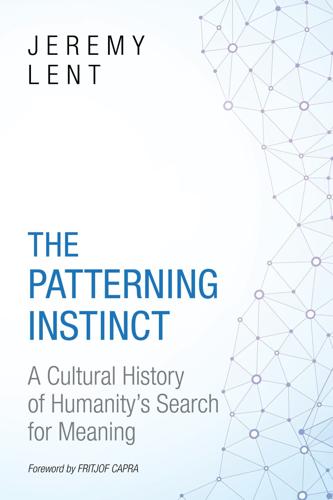
The Patterning Instinct: A Cultural History of Humanity's Search for Meaning
by
Jeremy Lent
Published 22 May 2017
The Maya, too, were brought down not just by drought but by overexploitation of their land, and the same seems to have been true for the Anasazi civilization of the American Southwest. In his book Collapse: How Societies Choose to Fail or Survive, Jared Diamond describes the poignant example of Easter Island, where the first human arrivals colonized a fertile, forested haven and then proceeded, over centuries, to destroy every tree on the entire island. He asks the harrowing question, “What did the Easter Islander who cut down the last palm tree say while he was doing it?” Later in this section, we can perhaps conjecture an answer to this.16 The implications for our current civilization are immediately apparent.
…
In Collapse: How Societies Choose to Fail or Survive, Jared Diamond concludes that the collapse stemmed from the basic fact that “too many farmers grew too many crops on too much of the landscape,” leading to deforestation and depletion of soil nutrients.8 Similar stories of devastation can be found across the world, such as the collapse of the Anasazi civilization of the American Southwest, and the inhabitants of Easter Island who first colonized the forested, fertile island around 900 CE and then, over centuries, destroyed every single tree on the island, leaving their descendants with a legacy of misery and starvation. When Captain Cook discovered them in 1774, he described the few remaining cave-dwelling islanders as “small, lean, timid, and miserable.”9 Frequently, environmental degradation would be gradual, leading over generations to cycles of famine and hardship, with inexorable decline in the soil's productivity.
…
A modern version of this process has occurred in the overexploitation of fisheries, where stocks decline as a result of being overfished from one generation to the next, but people forget how things used to be and consider the situation to be normal, until the next decline. The term “shifting baseline syndrome” has been coined to describe how people get used to each new level. This, perhaps, offers an answer to Jared Diamond's question of what that Easter Islander was thinking when he cut down the last tree. Most likely, he didn't think anything of it at all because, by then, the only trees left would have been little more than weeds, good for nothing more than weaving a mat.22 Will Our Society Collapse Like Rome? It's difficult to consider the collapse of the Roman Empire without drawing parallels to our own civilization.
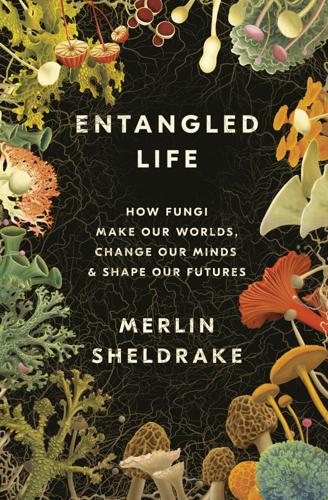
Entangled Life: How Fungi Make Our Worlds, Change Our Minds & Shape Our Futures
by
Merlin Sheldrake
Published 11 May 2020
“look like fairy tales”: For the eight percent estimate see Ahmadjian (1995); for a greater area than tropical forests see Moore (2013a), ch. 1; for “hung in hashtags” see Hillman (2018); for the diversity of lichen habitats, including erratics and lichens that live on insects, see Seaward (2008); for the interview with Knudsen see aeon.co/videos/how-lsd-helped-a-scientist-find-beauty-in-a-peculiar-and-overlooked-form-of-life [accessed October 29, 2019]. a “clay-like” consistency: For “every monument” quote see twitter.com/GlamFuzz [accessed October 29, 2019]; for Mount Rushmore see Perrottet (2006); for Easter Island heads see www.theguardian.com/world/2019/mar/01/easter-island-statues-leprosy [accessed October 29, 2019]. been able to form: For lichens’ approach to weathering see Chen et al. (2000), Seaward (2008), and Porada et al. (2014); for lichens and soil formation see Burford et al. (2003). to make a life: For the history of panspermia and related ideas see Temple (2007) and Steele et al. (2018).
…
In 2006, the faces of the presidents carved into Mount Rushmore were pressure hosed, removing more than sixty years of lichenous growth in the hope of extending the lifetime of the memorial. The presidents aren’t alone. “Every monument,” writes the poet Drew Milne, “has a lichen lining.” In 2019, the residents of Easter Island launched a campaign to scrub lichens off hundreds of monumental stone heads, or moai. Described by locals as “leprosy,” lichens are deforming the features of the statues and softening the rock to a “clay-like” consistency. Lichens mine minerals from rock in a twofold process known as “weathering.”
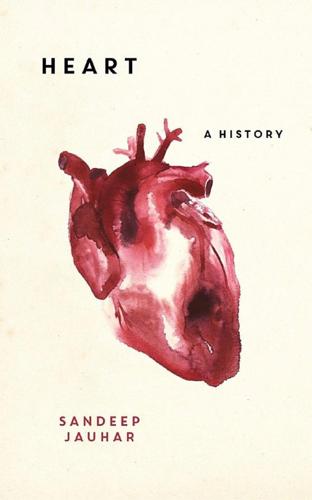
Heart: A History
by
Sandeep Jauhar
Published 17 Sep 2018
In 1994, the Food and Drug Administration (FDA) approved the release of coronary stents, tiny metallic coils that are used in the clear majority of angioplasties today to keep ballooned arteries open. In the early years of the twenty-first century, stents began to be coated with chemicals that prevent scar tissue from forming. The first drug that was used was rapamycin, an antibiotic discovered in a soil mold on Easter Island that stops cell division. Nowadays, most stents used in the United States are coated with rapamycin or a similar drug, which has nearly eliminated in-stent scarring. From a self-surgery in a tiny operating room in Eberswalde, Germany, cardiac catheterization has been transformed into a hugely profitable, multibillion-dollar industry.
…
Montague, 64 cognitive-behavioral therapy, 215 cognitive impairment, 96, 221 collateral circulation, 134n Columbia-Presbyterian Medical Center, 109 community-based emergency rescue programs, 157 compensatory pause, 233 congenital heart abnormalities, 73, 75, 78–81, 85–86, 96, 109, 145 congestive heart failure, 13, 25, 34, 75, 115, 150, 184–86; end-stage, 22, 36, 184, 186, 190–91, 196 Congress, U.S., 115 consent, 80, 100, 164, 188, 194 continuous-flow devices, 195 Cooley, Denton, 190–91 Cornish, James, 61–62, 64–65 coronary artery calcifications, see atherosclerosis; plaque coronary bypass surgery, see bypass surgery coronary thrombosis, 37, 97, 114, 129, 232, 239 cortisol, 124 Cosmopolitan magazine, 85 Cournand, André, 99, 109–10 CPR, see cardiopulmonary resuscitation Crandall (high school science teacher), 17, 18, 20 Cro-Magnons, 38 cross-circulation, 74–75, 77, 79–80, 83, 84–86, 168 CT scans, 3–4, 121, 232, 234–35, 241, 242 Dalton, Henry, 62n Damascus, 41 Dante Alighieri, 145 Darwin, Charles, 201 DeBakey, Michael, 190 defibrillators, 10, 136–38, 157, 171–76, 180, 215, 238; implantable, 53, 149–50, 163–65, 173–80, 190, 205, 207–16 De humani corporis fabrica (Vesalius), 42–43 delirium cordis, 158 dementia, 25 De motu cordis (Harvey), 44–46, 113 Dennis, Clarence, 94 depression, 24, 127–28, 215, 237 Detroit, 94 DeVries, William, 192, 193 DeWood, Marcus, 143 diabetes, 4, 24, 53, 120, 121, 132, 234, 238–40 dialysis, 196, 212 diet, 115, 118, 121–23, 127–28, 231–32, 236–37 Diseases of the Circulatory System (Osler), 131 Ditzen, Gerda, 102, 103, 105, 106 diuretics, 180, 186 Dodrill, Forest, 94 Dominican order, 22 do-not-resuscitate orders, 197, 224 Dotter, Charles, 138–41, 144 Douglass, Frederick, 62 Down syndrome, 75 dreams, 210, 220–21, 223–24 drug abuse and addiction, 28, 77n, 131 earthquakes, 25–26, 145 Easter Island, 144 Ebers Papyrus, 38 echocardiograms, 24, 52, 55–61, 71, 132, 184, 203, 233; see also ultrasound edema, 34, 82, 146, 180 Effler, Donald, 127 Egypt, 41; ancient, 11, 38 electrocardiograms (EKGs), 53–54, 73, 133, 137–38, 173, 180; in animal studies, 30, 167, 175 electrodes, 17, 19, 30, 158, 167–68, 172, 174–76, 179 electrophysiology, cardiac, 52, 153–55, 157, 161, 166, 171, 177–78, 205 Edler, Inge, 61 England, 43, 81, 87, 105, 109n, 115, 153, 166 endocarditis, 69–70, 98 endothelin blockers, 239 end-stage heart failure, 22, 36, 184, 186, 190–91, 196 enlarged heart, 77, 146 enzymes, 57, 132, 134 epidemiology, 115–16, 128; see also Framingham Heart Study Equal Rights League, 62 evolution, 18, 93, 195 exercise, 122, 232, 234, 236–37, 241, 242 experimental physiology, 104 Expression of Emotion in Man and Animals, The (Darwin), 201 exsanguination, 26, 89–90 Fabric of the Human Body, The (Vesalius), 42–43 facial deformities, 75 Falloppio, Gabriele, 51 falsifiability, 40, 148 family history, 4, 9, 96, 119, 121 Fargo (North Dakota), 69, 88, 97 fatigue, 70, 150, 166, 184, 192 Favaloro, René, 97 Fear Heart (Barr), 6 Feigenbaum, Harvey, 61 femoral artery, 83, 101, 142 fight-or-flight reaction, 23, 30, 40, 124 Fischer, Georg, 63n Flood, Lorraine, 207–209, 212–13, 215–16 Florence (Italy), 42 fludrocortisone, 223 fluid dynamics, 160n “foam” cells, 134 Fogarty, John, 190 Food and Drug Administration (FDA), 143, 177, 194, 196 Forssmann, Walter, 103, 109 Forssmann, Werner, 102, 102–111, 134–35, 140, 141, 161 fosinopril, 180 Framingham Heart Study, 113, 116–23, 125, 133; risk factors determined in, 4, 117–18, 120–22, 132, 237, 240 France, 153, 174 Frankfurt State Hospital, 65–66, 66 Freedmen’s Hospital (Washington, D.C.), 65 free radicals, 133 Friedman, Meyer, 126–27 Friedreich’s ataxia, 184 Friesinger, Gottlieb, 172 Galen, 40–43, 45, 63 gap junctions, 10 Garfinkel, Alan, 160 General Motors, 94 genetic heart abnormalities, 212; see also congenital heart abnormalities genetics, 35, 69, 123–24, 221, 234 Geneva, University of, 171 George III, King of England, 105 Georgia, 144 Germany, 65–68, 90, 102, 107–109, 140; in World War II, 173 Getting Over Garrett Delaney (McDonald), 17 Ghazali, al-, 41 Gibbon, John Heysham, 73, 86, 89–96 Glidden, Frances, 84, 85 Glidden, Gregory, 79–85 Glidden, Lyman, 80, 82, 85 gonorrhea, 105 grave robbing, 42 great arteries, transposition of, 81 Greatbatch, Wilson, 169–71, 174 Great Depression, 73 Greece, ancient, 38, 40 Green, Henry, 100 Groote Schuur Hospital (Cape Town), 186 Ground Zero, 201–205, 207, 210, 213 Gruentzig, Andreas, 140–44, 239 Guy’s Hospital (London), 87 Haecker, Rudolf, 68 Hahnemann Medical College, 163 Hall, Joan Lord, 21 hallucinations, 213, 223 Hamlet (Shakespeare), 23 hardening of the arteries, see atherosclerosis Harvard University, 27, 117, 172, 173 Harvey, William, 14, 43, 43–47, 63, 113 Hawaii, 123 heart attacks/myocardial infarctions, 7, 37–38, 96, 110, 114, 153–54, 185, 190; risk factors for, 4, 23–24, 118, 120–22, 127–28, 133, 231–32, 237; sudden death resulting from, see sudden cardiac death; survival of, 137–44, 169, 172, 196, 207, 211, 221, 239; symptoms of, 24–25, 74, 120, 224; see also cardiac arrest heart block, 166–71 heart cells, 10, 24, 37n, 150–51, 160 heart failure, 9, 24, 94, 148–50, 157, 163, 240; end-stage, 22, 184, 186, 190–91, 196; transplants for, 185, 189, 191; treatments for, 191–92, 196, 239; see also congestive heart failure heart-healthy lifestyle, 13, 121–22, 231–32 heart-lung machines, 70–73, 86, 88–97, 89, 95, 113, 187, 190; surgical alternatives prior to invention of, 74–75, 79–80, 83, 84–86, 168 heart transplantation, 163, 183, 186–89, 191, 192, 195, 238 heparin, 91n herbal supplements, 148, 163, 181 hereditary disorders, 184, 212 Hertz, Carl Helmuth, 61 high blood pressure, see hypertension/high blood pressure Hildegard of Bingen, 14 Hill, Luther, 68 Hinduism, 28–29, 185, 226–29, 234 HIV, 165 homeostasis, 125n Honshu (Japan), 25 hopelessness, 30–31, 163, 214, 237 Hopkinson, Mary, 91–93 hormones, 124, 185–86 hospice, 164 House Appropriations Health Subcommittee, 190 Houston, 189–91 Howard University, 64 Hugo, Victor, 186 Hunter, John, 105 hypertension/high blood pressure, 37, 115, 125n, 238; as cardiovascular risk factor, 24, 54, 120–21, 129, 132, 137, 237, 240; emotional/psychosocial factors in, 23–29, 31, 124–28, 206, 220–21; methods for control of, 139–43, 231–32, 236–238, 240 hypothermia, 77–79, 82 IBM Corporation, 93 iliac artery, 140 Illness as Metaphor (Sontag), 7 immigrants, 48, 122–24, 234 immune system, 188 India, 7–9, 26, 35–36, 122, 227, 234, 243; partition of, 28–29, 129 infections, 75, 105, 139, 148, 189, 191, 194–95, 212; postsurgical, 84, 88, 168–69, 177; of transplant patients, 186, 188 infectious diseases, 29, 37, 62, 115–17 inferior vena cava, 63 inflammation, 96, 128, 132, 168 insulin resistance, 234 International Physicians for the Prevention of Nuclear War, 205 ischemia, 137 Israel, 174 Italy, 153, 195; Renaissance, 42 Ithaca (New York), 169 Jalife, José, 159 Japan, 24, 25, 188n; immigrants in U.S. from, 123–24; in World War II, 114 Jarvik, Robert, 192, 194 Jarvik-7 artificial heart, 192–94 Jauhar, Mohan, 10, 184 Jauhar, Pia, 241 Jauhar, Rajiv, 4, 221–24, 226–29 Jauhar, Sonia, 57, 235 Jefferson Medical College, 88–89 Jesus, Sacred Heart of, 22 Jewish Hospital (Louisville), 195 Johns Hopkins University, 30, 70, 91n, 118, 172, 176 Johnson, Jacqueline, 77–78 Journal of the American Medical Association, 187 Journal of Thoracic Surgery, 99 Joyce, James, 140 Jude, James, 173 Julian, Desmond, 137 Justus, Wilhelm, 65–67 Kanpur (India), 7–9, 29, 242 Kanpur Agricultural College, 7, 20 Karp, Haskell, 190–91 Kent (England), 43 Kentucky, 195 kidney failure, 53, 193 kidneys, 11n, 59, 125n, 185–86; artificial, 73, 189 King of Hearts (Miller), 68 Kirklin, John, 94 Klinische Wochenschrift, 107–108 Knickerbocker, Guy, 172–73 Koch, Robert, 116n Kolff, Willem, 189–90, 192 Kölliker, Rudolf Von, 19 Kouwenhoven, William, 172–73 Lancet, The, 114, 231 language problems, 96 learned helplessness, 214 Le Fanu, James, 73 left anterior descending (LAD) artery, 133, 142 Leonardo da Vinci, 41–42 leprosy, 117 leukemia, 77n Lewis, John, 77–78 lidocaine, 60, 101 Life magazine, 139 lifestyle, 13, 121–23, 231–32, 234, 241 Lifestyle Heart Trial, 231 “Life You Save May Be Your Own, The” (O’Connor), 69 Lillehei, C.
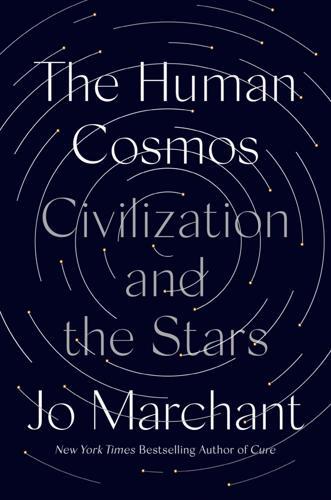
The Human Cosmos: A Secret History of the Stars
by
Jo Marchant
Published 15 Jan 2020
.* Over the course of his career, Cook was amazed to find that this shared heritage stretched even further. As one anthropologist puts it, Cook essentially “discovered Polynesia,” realizing that all of the peoples on the islands in the ocean triangle bounded by Hawaii, Easter Island and New Zealand—specks in a vast six million square miles of sea—had the same language and culture: the same stone adzes, fishhooks, thatched houses and canoes. “It is extraordinary,” Cook wrote when he visited remote Easter Island in 1774, “that the same Nation should have spread themselves over all the isles in this vast Ocean . . . which is almost a fourth of the circumference of the Globe.” Other European explorers had also been astounded by the presence of thriving communities on the tiny, scattered islands of the Pacific, separated by hundreds if not thousands of miles.
…
But the map he left has fascinated scholars ever since. * * * Archaeologists now agree that the inhabitants of the Pacific did migrate by sea as Cook suggested, moving eastward from Southeast Asia from the second millennium BC, and fanning out in several stages to Tonga, Hawaii and Easter Island before eventually reaching New Zealand, perhaps as late as AD 1200. But although stories brought home by Cook and other explorers initially inspired romantic ideas about the Polynesians being expert ocean navigators guided by the stars, by the 1950s this was replaced by skepticism. Tupaia’s chart looked all wrong, for example.
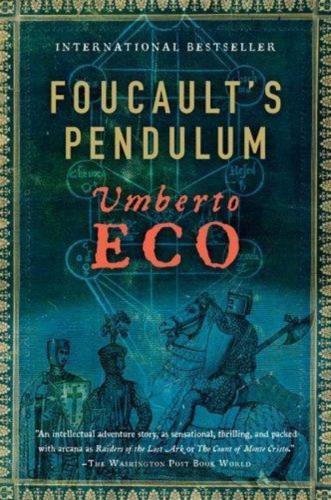
Foucault's Pendulum
by
Umberto Eco
Published 15 Dec 1990
The Tetrapyloctomy department has a preparatory function; its purpose is to inculcate a sense of irrelevance. Another important department is Adynata, or Impossibilia. Like Urban Planning for Gypsies. The essence of the discipline is the comprehension of the underlying reasons for a thing’s absurdity. We have courses in Morse syntax, the history of antarctic agriculture, the history of Easter Island painting, contemporary Sumerian literature, Montessori grading, Assyrio-Babylonian philately, the technology of the wheel in pre-Columbian empires, and the phonetics of the silent film.” “How about crowd psychology in the Sahara?” “Wonderful,” Belbo said. Diotallevi nodded. “You should join us.
…
They had gleaming white covers sheathed in elegant transparent plastic, with handsome rice paper and clean print. Whereas the Garamond catalog contained such scholarly series as Humanist Studies and Philosophia, the Manutius series were delicately, poetically named: The Flower Unplucked (poetry), Terra Incognita (fiction), The Hour of the Oleander (including Diary of a Young Girl’s Illness), Easter Island (assorted nonfiction, I believe), New Atlantis (the most recent release being Kdnigsberg Revisited: Prolegomena to Any Future Metaphysics Presented as Both a Transcendental System and a Science of the Phenomenal Noumenon). On every cover there was the firm’s logo: a pelican under a palm tree, with the D’Annunzian motto “I have what I have given.”
…
That Egypt possessed two plumed serpents, one on the throne of Tutankhamen and the other on the pyramid of Saqqara, and the latter serpent points to Quetzalcoatl?” “What does Quetzalcoatl have to do with Amazonia, if he’s part of the Mexican pantheon?” I asked. “Well, maybe I missed a connection. But for that matter, how do you explain the fact that the statues of Easter Island are megaliths exactly like the Celtic ones? Or that a Polynesian god called Ya is clearly the Yod of the Jews, as is the ancient Hungarian Io-v’, the great and good god? Or that an ancient Mexican manuscript shows the earth as a square surrounded by sea, and in its center is a pyramid that has on its base the inscription Aztlan, which is close to Atlas and Atlantis?
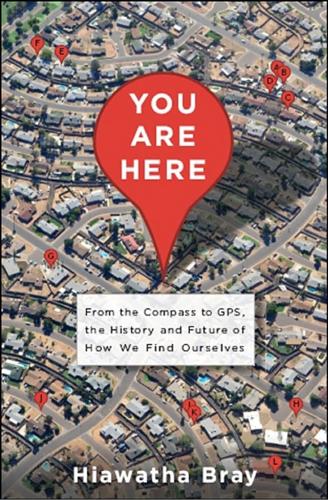
You Are Here: From the Compass to GPS, the History and Future of How We Find Ourselves
by
Hiawatha Bray
Published 31 Mar 2014
Beginning in Southeast Asia, the Lapita people island-hopped their way to Taiwan, the Philippines, and the Bismarck Archipelago. By 1000 BC, Lapita voyagers had traveled as far east as Fiji and Samoa. Their descendants, the Polynesians, continued the oceangoing tradition, gradually finding their way across the Pacific. By the first millennium AD, the Polynesians had settled in New Zealand, Easter Island, Hawaii, and other islands, separated from one another by thousands of miles of blank blue water. These voyages, unrecorded and unrecalled, rank among the greatest of human explorations. How did they manage such remarkable journeys without so much as a compass? Sailors relied on nature, reading the subtle but plentiful signs of wind, waves, and wildlife.
…
See Advanced Research Projects Agency Darwin, Charles, 62–63 De Forest, Lee, 24 Dead reckoning, 9–10, 25, 27, 62, 69 Declination, 6, 12–14 Defense Department, US, 84, 87, 99–101 Delco Electronics, 72 Dell, Michael, 127 Delta Air Lines, 34 Desert Storm, 91 Deutschland, 53 DigitalGlobe, 167, 168 Diller, Barry, 179–180 Distortion, 36, 38, 78, 83, 107, 111 Dodgeball, 197–198, 200 Doolittle, James, 61–62, 63 Doppler effect, 72, 77–78, 83, 86, 105, 106 Draper, Charles Stark, 68, 69–70 Earth celestial navigation and, 5, 6 circumference of, 7 curvature of, 11–12 gravity field of, 84, 101 magnetic field of, 10–11, 12, 13–14 rotation of, 48, 49, 50 Earth Resources Technology Satellite (ERTS-1), 164–165 Easter Island, 3 Easton, Roger, 94, 97–98, 100, 118–119 Efratom Elektronik, 100 Egypt, 4–5, 147 Einstein, Albert, 55, 67, 69, 101–102 Eisenhower, Dwight, 76, 79, 154, 156, 157–158, 159, 160, 161 Electricity, 20–21, 24 Electromagnetic spectrum, 21, 36, 123 Electronic Frontier Foundation, 225 Electronic Privacy Information Center, 225 Emergency services, 89–91, 113–115, 134–135, 204 England.
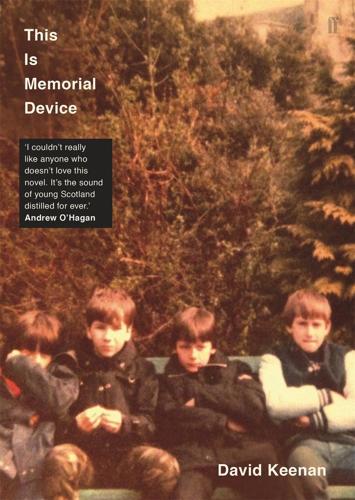
This Is Memorial Device
by
David Keenan
Published 15 Feb 2017
I would bump into her in Glasgow, say walking down Queen Street, and her new boyfriend would walk on and not even stop so she would be left to say hurried hellos and then tear off after him and I would see the two of them shaking their heads as they crossed into George Square like I was just so much rubbish to be shot of. RR: You were going to tell us what happened to Dark Bathroom. I had that demo tape they made, June 1941, and it was amazing, songs like ‘Easter Island’ and ‘Harm That Foot Down’, stuff like that. SH: Yeah, okay. You know, I always wondered about that title. That was another summer, I suppose. When I get my shit together I’m going to get another band going as well. Plus I want to write a novel, a ghost story, probably. One morning I woke up really early and couldn’t get back to sleep and it was one of those weird really foggy autumn mornings and I opened the curtains and looked out the window and across the road in Katherine Park I could make out all these figures dotted about across the park, stock-still, motionless, just standing there, not looking at me but like looking away into the distance or just staring down at the ground, not even looking at each other.
…
, 1 dolls (see also: mannequins; dummies), 1, 2, 3, 4, 5, 6 dolmen, 1 dominatrix(es), 1, 2 doppelgängers, 1 Doray, Philippe, 1 Dors, Diana, 1 dosshouse, 1 Dostoevsky, Fyodor, 1, 2, 3 dotty old dears, 1 double-mindedness (of dreams), 1 doughnut, 1 dove with a leaf between its beak (still missing), 1 Dover, 1 Downie’s Department Store, Baillieston Road, Shettleston, 1 Dr Martens (boots), 1 drag, 1 drama teacher, 1 dream, as a computation, 1 dream bride, 1, 2 dream lover, 1 dream role, 1 dream within a dream, 1 dreaming the entire thing, 1 dreams, as the language of the organs, 1 dreams of hotels, of left luggage, 1 dressed to kill, 1, 2 drinkers, heaviest, 1 driveways, red-chipped, 1 drone, 1, 2, 3, 4 drug use, indiscriminate, 1 drum machines, primitive, 1 drum stool, still vacant, 1 drums, 1, 2, 3, 4, 5 drunk, again, 1, 2, 3, 4, 5, 6, 7, 8, 9, 10, 11, 12, 13, 14, 15, 16 drunk, pretending to be, 1 drunk and disorderly, repeated, 1 dry ice, 1 duck or emu = emu, 1 dull lefties, 1 Dumbarton Road, Partick, Glasgow, 1 dummies (see also: mannequins; dolls), 1 Dunbeth Public Park, Coatdyke, 1 dungeons, interconnecting, 1 Dungheap of the Living Flesh, 1 Dunoon, 1 dying alone, 1 Dylan, Bob, 1, 2, 3, 4 Dylan, Bob (female), 1 Dylan, Bob, ’ 1, 2 Earnest, 1 East End (of Glasgow), 1, 2, 3, 4, 5, 6 Easter Everywhere, 1 ‘Easter Island’, 1 Easter Moffat Golf Club, Plains, 1, 2 eccentric characters, escaped from some kind of novel, 1 eccentricity, 1 ectoplasm, 1 Edinburgh, 1, 2, 3, 4 eggs, tortured, 1 eggs and salsa, possibility of, 1 Egyptology, 1 eighteen (inches of shared dildo), 1 ejaculate, 1, 2, 3 electromagnetic radiation, 1 electronics, home-made, 1 elegant kitten heels, 1 eleven (o’clock in the morning drinking a can), 1 Éluard, Paul, 1 empty (like a tomb), 1 empty space, 1, 2 encounters, dedication to, 1 end credits on a romance, 1 end of the world, 1, 2, 3, 4, 5 endings, invented, 1, 2 endless loop, 1 endless sexy moan, 1 entry-level shit, 1, 2 Erotica, holidaying in, 1 eternity, 1, 2 Etruscan tomb, 1 eunuch, 1 Europe, 1, 2, 3 Everly Brothers, The, 1 everything is fixed, 1 Ex+ (condition), 1, 2 ex-girlfriend, 1, 2 exclamation marks, 1 excuse, lame, 1 exhibit an uncommon degree of zeal, 1 exhibition, 1, 2, 3, 4, 5 existence, inexplicably mundane, 1 experimental, 1, 2 exploitation, accusations of, 1 expression, 1, 2, 3, 4, 5 eye infirmary, the (Glasgow), 1 eye make-up, dramatic, 1 eye make-up, like an Egyptian goddess, 1 eye make-up, smeared, 1 eye make-up, turquoise, 1 eyebrow, weird thing with, 1 Eyeless in Gaza, 1 eyeless sockets, 1 eyelids, bulbous, 1 eyepatch, 1 eyes, big Bambi, 1 eyes, big blue, 1 eyes, dark, 1, 2, 3, 4 eyes, green, 1 eyes, like a tightrope walker over a deep dark lake, 1 eyes, like blank diamonds, 1 eyes, owl-like, staring out of the past, 1 eyes, red, 1 eyes, scientific, 1 eyes, silent, 1 eyes, sparkling, 1 eyes, with cataracts like strawberries, 1 facts, very few, 1 Fahey, John, 1, 2 failures, greatest, fairyland, 1 falling in love in slow motion, 1 family (what do I know about), 1 fantasy, 1, 2, 3, 4, 5, 6, 7, 8 fanzine, 1, 2, 3, 4, 5, 6, 7 ‘Fate is Only Once’, 1 father(s), drunk but loving, 1 favourite record of all time (cards on the table), 1 feather boas (as lava), 1, 2 feelings (carefree) (post-alcohol), 1 feelings (cheap), 1 feelings (shop-soiled), 1 feet, big white, 1 feet, enormous, 1, 2, 3, 4, 5, 6 feet, like flippers, 1 Feldman, Morton, 1 feline women, sex with (kidneys talking), 1 fellow hobbyists, 1, 2 Fenric Wolves, The, 1 feral child, 1 Ferris wheel, 1 fifteen (minutes), 1 fifty (per cent), 1 fifty-nine, 1 figure of the writer, the, 1 final recording, the, 1 Finlay, Ian Hamilton, 1 Finsbury Park, London, 1 Fire Engines, The, 1 fireflies (in Airdrie), 1 First Hegemony of the Pussying Father, 1 first morning on earth, resemblance to, 1, 2 first summer after high school, the, 1 fish hooks, 1 fish out of water, 1 fishers of men, 1 five (-foot-high black hole), 1 five (foot one), 1 five (hours), 1 five (pounds), 1, 2 Five Keys, The, 1 flashbacks, 1 flat(s), abandoned, 1 flat(s), grim, 1 flat(s), modern, 1, 2 ‘Flood Water Blues’, 1 Fluxus, 1 flyers, wad of, 1 Flying V (guitar), 1 foetus, 1 fog, 1, 2, 3, 4 foibles, zero, 1 footnote (now), 1 footprints, enormous, 1 ‘For the Good Times’, 1 forehead (regal), 1 forever, 1, 2, 3, 4, 5, 6, 7, 8, 9, 10, 11 formal European romance, 1 Forrest Street, Airdrie, 1, 2, 3, 4 forty-five (degrees), 1, 2 forty-five (minutes), 1, 2 foul bread and beer (presiding demons of the east), 1 fountain in Kelvingrove Park (fucked for years), 1 fourteen (years old), 1, 2 Frankenstein, 1 freakbeat, 1 freaks, 1, 2 freckly complexion, 1 free jazz, 1, 2, 3 free jazz (German), 1 free vegetables, 1 French new wave movies, 1 fried breakfast (stale), 1 Fripp & Eno, 1 frog, leaping mechanical, 1 frog face, 1 frog torturers, 1 from out of no history, 1 fuck knows, 1 fuck off, you geek, 1 fuck off, you loser, 1 Fucked in no way, 1 fucking Atlas come to smother the world, 1 fucking barbarians, 1 fucking black box, 1 fucking cannibals, 1 fucking choirboys, 1 fucking concrete house with four windows, 1 fucking decapitate me, man, 1 fucking Dion and the Belmonts, 1 fucking Holocaust memorial, 1 fucking inflatable nightmare, 1 fucking instant hamburgers, 1 fucking job like a jail sentence, 1 fucking National Lampoon, 1 fucking skint, 1 fucking slugs, 1 fucking social experiment, 1 fucking Space Invader, 1 fucking think about it, 1 fucking top hat, 1 fucking Watts Towers, 1 fucking white leather trousers, 1 Fun House, 1, 2 funeral pace, 1 furnishings, drab, 1 Futura, 1 future, chosen representative of, 1 gah, gah, gah …, 1 Gala Day, 1, 2 Gallic tongue, 1 game of moments, 1 Gamma Productions, 1 Gang of Four, 1 gangsters (see also: toughs; hoods), 1 gaps in continuity, 1 garden, back, 1, 2, 3, 4 garden, rock, 1 gardening, 1, 2, 3 gardens, overgrown, 1 Gare de Lyon, Paris, France, 1 Gare du Nord, Paris, France, 1 garrotte, 1 Gartlea, Airdrie, 1, 2, 3 Gartlea Gallery of Geomancy and Geographic Speculation (G.G.G.G.S.), 1 garlic, romantic and sophisticated, 1 Gartness, Airdrie, 1, 2 gay magazine, 1 gay speculation, 1, 2, 3, 4, 5, 6, 7 gays, subterranean, 1 Gaza Strip, the, 1 GBH, 1 genitals = beasts of burden with heavy eyes, 1 genitals = circus animals, 1 genitals = elephants, 1 genius, as accidental, 1 genius, as plain fucking wrong, 1 genocidal conflict (phantom), 1 George Square, Glasgow, 1, 2, 3 German history, 1 ghost(s), come back to the scene of their own murder, 1 ghost galleon, 1 ghost movie, 1 ghost story, 1, 2 ghoul, would-be, 1 Gibson, Mel, 1 giggling (over a sandwich), 1 gin, 1 Ginsberg, Allen, 1, 2, 3 girlfriend, bitchy, 1 girls, walking past, 1 giro, 1 Giuffre, Jimmy, 1 Give Us Sorrow/Give Us Rope, 1 glacier water (as blue as), 1 Glasgow, 1, 2, 3, 4, 5, 6, 7, 8, 9, 10, 11, 12, 13, 14, 15, 16, 17, 18, 19, 20, 21, 22, 23, 24, 25, 26, 27, 28, 29, 30, 31, 32 Glasgow Green, 1, 2 Glasgow Technical College, 1 Glasgow University, 1 Glasgow University Union, 1 glass bottle (up the ass), 1 glutinous, 1 go-go dress (short black-and-white), 1 ‘God Moves On the Water’, 1 godforsaken hellhole, 1 gods, the inscrutable way of, 1 Gogol, Nikolai, 1, 2 ‘Goin’ Down to the River’, 1 going nowhere, 1 Golden Dawn, 1 Gor (books), 1 Gorgon (in a snooker club), 1 Gothic fantasies, 1 grace, definition of, 1 grace, suspended, 1 Grahamshill Avenue, Airdrie, 1, 2 Grahamshill Street, Airdrie, 1 Granada, Spain, 1 Grant, Kenneth, 1 grass (see also: marijuana), 1, 2 grass bags, 1 Grateful Dead, The, 1 gratitude, importance of, 1 gravedigger, 1 gravestone, as a memorial device, 1 graveyard, at the bottom of the sea, 1, 2 gravitas, 1 gravity, 1, 2, 3 great gift, the, 1 Great Society, The, 1 Greek baby, the (with the big eyes), 1 Greek myth, some kind of, 1 Greengairs, 1, 2, 3, 4, 5, 6, 7, 8 Griffin, Glasgow, The, 1 groover, 1, 2, 3, 4, 5 guardian angel (holy), 1 guilt, 1, 2, 3, 4, 5, 6 guitar, played with a bow, 1 guitar, slide, 1, 2, 3 guitar chord, most beautiful of all, the, 1 guitar chord, one, 1, 2 Gulag Archipelago, The, 1 Gully, The, 1 Gun Club, The, 1 gunrunners, 1 guy, creepy-looking, 1 gymnastic displays, 1 gypsy, 1, 2, 3, 4 hacksaw (between the legs) (really gently), 1 hagiographers, 1 hair, artificial, 1 hair, blue, 1, 2, 3 hair, classic bowl cuts, 1 hair, dark, 1, 2, 3, 4, 5 hair, ejaculated in (like), 1 hair, greasy, 1, 2, 3, 4 hair, greasy curly, 1 hair, like a dark silent river, 1 hair, on fire, 1, 2 hair, silver, 1, 2 hair, synthetic, long, black, 1 half Japanese, 1 half Swedish, 1 Halhul, Palestine, 1 halo, bendy, 1 hamburger patties, 1 Hamilton services, 1 Hamlet, 1 hammock, 1, 2 hand, like a flatfish from the bottom of the ocean, 1 handbag(s), tiny, 1, 2 hands, enormous, 1, 2, 3, 4, 5 hands, like shovels, 1 hands, like tennis rackets, 1 hands, lily-white, made for slow strangulation, 1 hands, tied, 1 hands, tiny, 1 hangman knots, 1 hangover (daytime), 1, 2 Hansel & Gretel, 1 Happy Sad, 1 hard cases, 1 ‘Harm That Foot Down’, 1 Harvest, 1 hat, tight woolly, 1 hateful wives, 1 Hatfield and The North, 1 headcase(s), in Airdrie, in Scotland, 1 heart, as hotel, 1 heart, as left luggage, 1 heart, broken, 1 heart, failure, 1 heart, faithful, 1 heart, stalked, weighed, examined by night, 1 heart of the wood, the, 1 heartbeat, 1, 2, 3 heaven, 1, 2, 3, 4, 5, 6, 7, 8, 9, 10 Heaven, London (nightclub), 1 heavy metal, 1 Hebron, Palestine, 1, 2 heels, black strappy, 1 heels, delicate buckle on, wounds inflicted by, 1 heels, held in hand, 1 heels, smacked in the head with, 1 heels, stiletto, 1 hegemony, banging on about, 1 helter-skelter, 1 Hercules (constellation), 1 hermeticists, the, 1 hermits in the desert, like, 1 Hesse, Hermann fucking, 1 Hickory Wind, 1 hieroglyphics, 1 ‘High Water Everywhere’, 1 Hindu, 1 hip flask, 1 hippies, 1, 2, 3 Hirsch, Shelley, 1 hissing of the earth, the, 1 historical gambits, 1 historical shit, 1 history buff, 1 history of drug use (implications of), 1 Hitchcock, Alfred, 1, 2 Hitler, Adolf, 1 Holehills, Airdrie, 1, 2 Holehills, Airdrie, philosophy of, 1 Hollywood Hills, the, 1 Holytown, 1 homosexual(s), strange, reclusive, 1 hoods (see also: toughs; gangsters), 1, 2 Hooker, D.

Falter: Has the Human Game Begun to Play Itself Out?
by
Bill McKibben
Published 15 Apr 2019
And now we see shifts (the development of nuclear weapons, the rise of the internet) that change many of our assumptions in real time. So, the fact that even over this short span we’ve seen the routine and often sudden collapse of one civilization after another might give us pause. And in some ways, it does—books such as Jared Diamond’s Collapse intrigue us with their stories of past calamities, from Greenland to Easter Island. But these warnings also somehow seem to give us confidence, because, after all, things continued. Rome fell, and something else rose. The Fertile Crescent turned to desert, but we found other places to grow our food. The cautionary tales about transcending our limits (the apple in Eden, the Tower of Babel, Icarus) seem silly to us because we’re still here, and we keep transcending one limit after another.
…
See also genetic engineering dopamine receptor D4 Doudna, Jennifer Dougie mice Dr. No (submarine) Dropbox drought Duchenne muscular dystrophy Dune Vulnerability Team (DVT) Dust Bowl Duterte, Rodrigo Dyson, Freeman Eagle Glacier Earth crust of degradation of habitability of hydrology of finite nature of great disruptions in Earth Day earthquakes Easter Island Ebell, Myron Ebola Economics of Smoking, The (Tollison and Wagner) Economist ecosystem services Eden Edison, Thomas efficiency Egypt elections 2010 2012 2016 2018 electricity, new access El Niño Emerson, Ralph Waldo employment Endangered Species Act End of Nature, The (McKibben) Ends of the World, The (Brannen) “Energy and Man” (API symposium) Energy Department energy efficiency energy poverty Enlightenment Now (Pinker) Enough (McKibben) environmentalism Environmental Protection Agency (EPA) environmental regulation Environmental Research Equal Employment Opportunity Commission (EEOC) Erdogan, Recep Tayyip erythropoietin (EPO) Esso Atlantic (oil tanker) estuaries ethics Ettinger, Robert Europe evolution experience sampling Extinction Rebellion Exxon Facebook facial recognition software Falcon 9 rocket famine Farmerline Fate of the Earth, The (Schell) Fauci, Anthony Federalist Society Federal Reserve feedback loops fertilizer fiberglass net Finding Nemo (film) Finland fires First Amendment fish Fisher Body floods Florida flow Flynn effect Food and Drug Administration (FDA) food supply Forbes Ford, Gerald forests Forest Service Fort McMurray, Canada Fortune 500 CEOs fossil fuels.
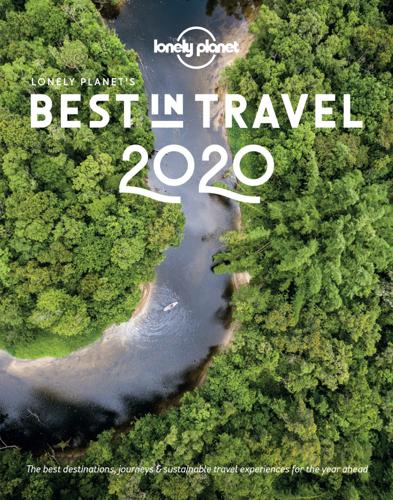
Lonely Planet's Best in Travel 2020
by
Lonely Planet
Published 21 Oct 2019
• Sarah Stocking Before landing her dream job at Lonely Planet, Sarah spent many years travelling to the farthest places she could think of in search of the greatest adventures. From kayaking with humpbacks in Antarctica to making her own costume out of a banana tree to dance in the Tapati Rapa Nui on Easter Island, she never says ‘no’ to a new experience. In addition to her work as a digital editor in Lonely Planet’s Tennessee office, Sarah has become Lonely Planet’s resident family travel expert and loves the challenge of coming up with fantastic trips for her own family and others to enjoy. • Kia Abdullah Kia Abdullah is an author and travel writer based in London, UK.
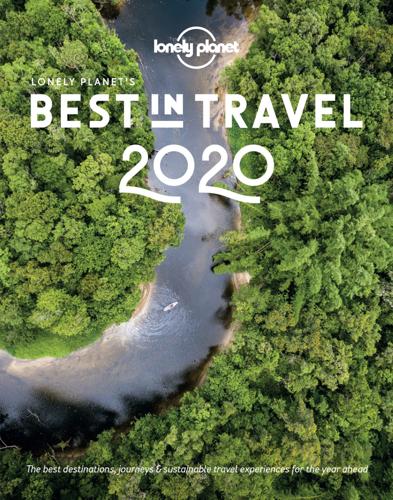
Lonely Planet Lonely Planet's Best in Travel 2022
by
Lonely Planet
Published 26 Oct 2021
• Sarah Stocking Before landing her dream job at Lonely Planet, Sarah spent many years travelling to the farthest places she could think of in search of the greatest adventures. From kayaking with humpbacks in Antarctica to making her own costume out of a banana tree to dance in the Tapati Rapa Nui on Easter Island, she never says ‘no’ to a new experience. In addition to her work as a digital editor in Lonely Planet’s Tennessee office, Sarah has become Lonely Planet’s resident family travel expert and loves the challenge of coming up with fantastic trips for her own family and others to enjoy. • Kia Abdullah Kia Abdullah is an author and travel writer based in London, UK.
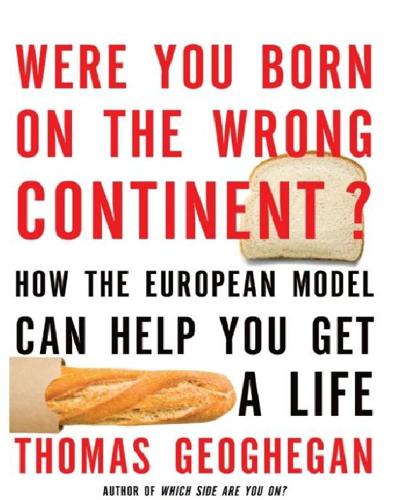
Were You Born on the Wrong Continent?
by
Thomas Geoghegan
Published 20 Sep 2011
In his 2005 book, Collapse, the anthropologist Jared Diamond has a long section on Montana. He goes into the toxic waste, the runoff, and all the other environmental evils. Ecologically, Montana is a candidate for “collapse,” a place like Easter Island or Greenland that people one day may evacuate. Why is Germany so much less likely a candidate for collapse? I think in part it’s because it went through a version of an Easter Island–type collapse, namely, the destruction of World War II. Arguably, they had it coming, but its collapse was still fairly gruesome. In some way or other, there is an unconscious memory of this trauma, which now comes out as a horror of “Collapse,” or as a fanatic determination to be “Green.”
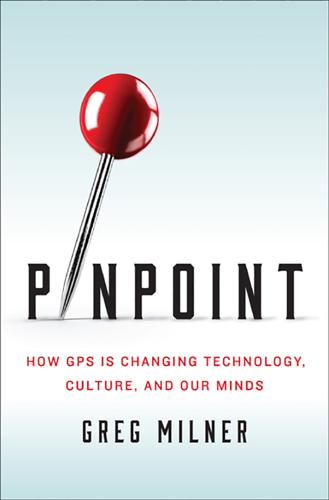
Pinpoint: How GPS Is Changing Our World
by
Greg Milner
Published 4 May 2016
The Polynesians learned more about oceangoing, and extended their reach to even remoter Oceania, locating the Cook Islands and the Marquesas. Further out, the Pacific really opens up. Land is even scarcer, but the Polynesians found much of it. The islands of Polynesia—not unified politically, but closely related culturally and linguistically— eventually formed a triangle in the Pacific, with points marked by Rapa Nui (Easter Island) to the east, Aotearoa (New Zealand) to the west, and way up north, Hawai‘i, among the most isolated archipelagos on the planet, with no further land for 2,400 miles to the east and more than twice that to the west. It is difficult to overstate the immensity of this accomplishment. On the grandest scale, the establishment of Polynesia was but part of the larger Austronesian conquest of the planet.
…
consciousness, 117, 118 Constitution, U.S., Fourth Amendment to, 177–80, 188, 189, 191 Continental Airlines, 171–72 continental drift theory, 205–7, 216, 233 Cook, James, 7–12, 269 astronomical observations of, 24 journal of, 10 murder of, 106–7 Pacific voyages of, 7–10, 26, 27, 106–7, 263–64, 266 Tupaia and, 7–10, 21–24, 26, 263–64, 266 cooking oil, 183 Cook Islands, 4, 106 Coordinated Universal Time (UTC), 154 Cornell University, 129, 149, 150 Counselman, Charles “Chuck,” 210, 211, 212–14 criminal justice system, 177–79, 194–99 see also police Croatian language, 114 Curiosity Mars rover, 258–59, 262 Currie, Malcolm, 53–54 DAGR receiver, 72 Dangermond, Jack, 239 Darwin, Charles, evolutionary theory of, 116 data collecting companies, 242–44 Datum company, 88 DC-3 aircraft, 51 dead reckoning, 16, 17, 18, 25, 82n, 121, 122 Deep Space Network (DSN), 259, 261 DEFCON hacker convention of 2015, 153 Defense Department, U.S., xviii, 28, 44–47, 53–54, 56, 60–62, 69, 75, 82–83, 91, 93–95, 97–98, 100, 140, 149, 152, 157, 212–13 Defense Mapping Agency of, 253, 254, 255; see also National Geospatial-Intelligence Agency Delaware Office of Management and Budget, 184 Delaware River, 249 Delhi, 183 Delta-Differential One-Way Ranging (Delta-DOR), 260, 261, 287 democracies, 140 Denali National Park, 216–17, 218 Dennison, Lyle, 190 Denver, Colo., 75 Descartes, René, 9, 248 Detroit, Mich., 122 developmental topographical disorientation (DTD), 118 Dewey, John, 116 DGPS positioning technique, 99 Dirks, Stephen, xv Disney, Walt, 86 distance calculation, 16, 24–27 Dog of the South, The (Portis), 3 Doppler effect, 36–38, 40, 43, 44, 51, 259 Douglas Island, 138 Dover Strait, 166–67 Draper, Charles Stark “Doc,” 48 Driscoll, Ryan, 183, 184 drones, 67, 151–53, 168, 184–85 Dulles Airport, 155 Dunkirk, 246 Earth, 24, 53, 55, 262 apparent swelling (Palmdale Bulge) of, 210–11 atmosphere on, 227–30 center of, 253 compiling and sharing data on, 28 distribution of water on, 257 equatorial axis of, 246 equator of, 259 fastest circumnavigation of, 17, 126 gravitational field of, 131, 231–32, 245, 247, 250–51, 257 interior of, 206–7 latitude and longitude of, 24–27, 241, 245, 252, 253, 265 lithosphere (outer shell) of, 207 magnetism of, 27–28 measurement of, 253–54 measuring positioning, velocity, and acceleration of points on, 208–9 movement of, 202–8, 217–20 oblate spheroid shape of, 246 as only home for the human race, 209 orbiting of the sun by, 41, 228 polar regions of, 28 rotation of, 25, 43, 154, 202, 257, 261 75th meridian of, 30, 32 subduction zone of, 208 tectonic plate movement on, 3–4, 202–8, 209 topography of, 204–5 wobbling of, 257 earth-centered reference system, 253 Earth Day, 208 earthquakes, 202–4, 208–27, 232 casualties of, 215 land displacement in, 217–20, 224 magnitude of, 216–17, 219, 221–26 monitoring of, 203, 214–20, 223–24 prediction and warning of, 203, 210, 216, 224, 226 P-waves in, 223, 225 ShakeOut study of, 226–27 structural damage in, 215, 220, 221, 222, 225 S-waves in, 223 Easter Island, 4 Eastern Oblique Arc, 249 Easton, Roger, 31, 35, 39–40, 42–45, 47, 56–58, 153, 252 egalitarianism, 199 Egypt, 245 Einstein, Albert, xix, 267 Eisenhower, Dwight D., 29–30 electrical engineering, 48 electrical transmission, 158–61, 163–64 costs of, 241 disruption of, 158–59, 160 energy sources for, 160, 241 monitoring of, 159–61 electronic distance measurement (EDM), 251, 253 electronic monitoring systems, 175–77, 194–200 Electronic Route Guidance System (ERGS), 121 electronics, 85, 127 Elgin Air Force Base, 70 Elizabeth, N.J., 249 Elko County, Idaho, 136 ellipsoids, 247–49 Ellis, Roland, 63 eLoran, 166 El Segundo Air Force Base, 53 Endeavour, HMS, 7, 8–10 Enge, Per, 142, 171 England, xiv, 25–27, 104, 153 Hertfordshire County in, 197 Yorkshire County in, 113 English Channel, 166–67, 246 Enlightenment, 26 Eratosthenes, 245 Eschenbach, Ralph, 78–81, 83, 85, 87, 93 espionage, 55 Esri software company, 239 etak, 18–22, 118, 240, 262, 263, 265–66 definitions of, 18–19 Etak company, 122–23 Eurasia, 3 European Convention on Human Rights, 187 European Court of Human Rights, 187–88 European Datum 1952, 250 European Geostationary Navigation Overlay Service (EGNOS), 142 European Parliament, 104 European Space Agency, xvii European Union (EU), xvii, 144 Everest, Mount, 90 Eyjafjallajökull volcano, 230 F-4 aircraft, 59–60 Facebook, 194 Falcon Air Force Base, 62–63 Fallen Man photograph, 235–39, 235, 241–42, 248 GPS coordinates linked to, 238 location depicted in, 236, 245, 256 people and shops in, 236–38 time stamp on, 238 fascism, 177 Federal Aviation Administration (FAA), 140–41, 142, 151, 171 safety requirements of, 141 Federal Bureau of Investigation (FBI), 170, 178 Federal Communications Commission (FCC), 200, 201 Federal Express, 143 Federal Highway Administration, U.S., Electronic Route Guidance System (ERGS) of, 121 fertilizer, 102, 103 Fiji, 4, 10 financial services industry, 161–64 Finney, Ben, 264–65 fixed-wing gunships, 50–51 fleet management industry, 183–84, 201, 282 Florida, 30, 31, 70, 90, 195–96 Fontainebleau, 246 Forbes, 127 Forlander, Abraham, 12 Fort Carson, xiii Fort Collins, Colo., 74, 75, 101 Fort Davis, Tex., 214 Fort Walton Beach, Fla., 70–71 fossils, 205 France, 158, 252, 263 Frankenstein, Julia, 130, 132 Freiburg, University of, Center for Cognitive Science at, 130 Freundschuh, Scott, 125 Fukushima Daiichi nuclear power plant, 222, 225 Fulton, Steve, 139, 279 Gable, Ralph, see Schwitzgebel, Ralph Gable, Robert, see Schwitzgebel, Robert Galileo Galilei, 29 Galileo system, xvii–xviii, 144 Gambale, Nunzio, 164–66 Garmin C550 receivers, 126 Garmin GPS Systems, 100, 126–27, 242 consumer electronics segment of, 127 Gastineau Channel, 138 Gatty, Harry, 17 General Accounting Office, 60 General Electric, 44 General Motors, 120 geochronology technologies, 207 geodesy, 245–48, 250–55, 286 geographic information systems (GIS), 239–42 GPS linked to, 239–40, 245 perception of the world shaped by, 241–42 geography, 3–4, 19, 118, 125 geoids, 247, 256 Geological Survey, U.S.
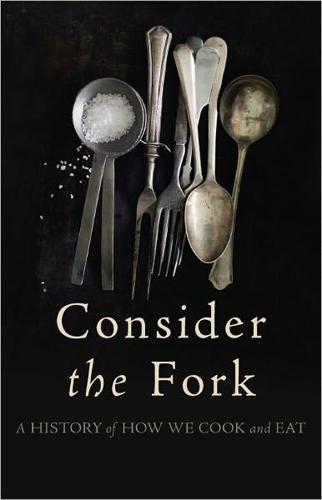
Consider the Fork: A History of How We Cook and Eat
by
Bee Wilson
Published 14 Sep 2012
A pleasant side effect was that the long, moist cooking made unpromising wild bulbs taste fantastically sweet. Some people were so attached to earth ovens and pit boiling that they did not see pots as superior or even necessary. The Polynesians of the early Christian era—the people who traveled to the eastern Pacific islands in the first millennium AD, arriving in Hawaii, New Zealand, and Easter Island from Samoa and Tonga—present the fascinating spectacle of people who had known pots for a thousand years, only to abandon them. From around 800 BC, Polynesians made a range of pottery, typically earthenware fired at low heat, tempered with shell or sand. Yet when they arrived in the Marquesas Islands, around 100 AD, they abruptly gave up pottery making and chose to cook once again without pots.
…
See Ovens Coal Codrington, Florence Coffee Colanders Collins, Shirley Common Sense in the Household Communism Conduction Confucius Convection Convenience food Cookbooks measurement and Cooking fire and frying gas geyser grinding and home hot-stone kitchen utensils and kitchens and knives and measurement and meat modernist one-pot open-hearth pit pottery and stone technology of See also Food The Cook’s Oracle (Kitchiner) Cooper, Joseph Copper heat conduction and pots and pans and Cordon Bleu Coryate, Thomas Cowan, Ruth Schwartz Cromwell, Oliver Cromwell, Richard Cryovac Cuisinart Culinary Innovation Culture chopsticks and forks and kitchen utensils and knives and pottery and science and technology and Darwin, Charles David, Elizabeth Day, Ivan De Groot, Roy Andries De la Reyniere, Grimod Dehillerin, E. Dehydrators Desaegher, Armand Disease Dishwashing Dixon, Tom Dolsot Domestic Encyclopedia (Webster) Doner, H. Albert Creston Donkin, Brian Donne, John The Dover Dowayo DuPont Durand, Peter Easter Island Eating chopsticks and with fingers forks and spoons and sporks and Eaton, Mary Edison, Thomas Edwardian era Eggbeaters Egg-Per’fect Eggs Egyptians Einstein, Albert Eintopf El Bulli, Spain Electric juicers Electricity blenders and cooking and food processors and ovens and refrigeration and Electrolux-Servel Elias, Norbert Elizabeth I, Queen Elizabethan Age Elizabethans Emery, John Enameled cast iron An Encyclopaedia of Domestic Economy (Webster) English cuisine knives and roasting and spoons in Environmental Protection Agency (EPA) EPA.
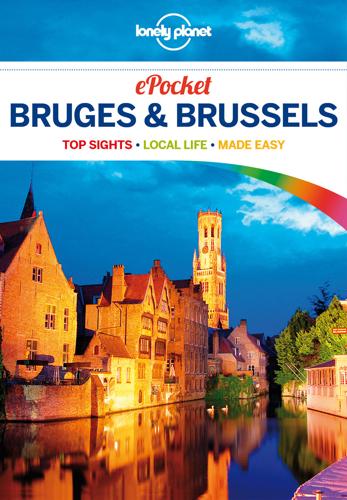
Lonely Planet Pocket Bruges & Brussels
by
Lonely Planet
and
Helena Smith
Published 1 Nov 2012
Non-European Civilisations The scope of this section is impressive, taking in pre-Colombian art, American Indian headdresses, Jainist, Hindu and Buddhist deities, Chinese ceramics, rare Islamic textiles, Byzantine art and Coptic fabrics. Perhaps the most startling exhibit, though, is the woefully displaced Easter Island sculpture, a six-tonne stone giant collected on a Franco-Belgian expedition in the 1930s. Tintin Trail The museum is a must for those on the Tintin trail: a goulish skeleton mummy inspired The Seven Crystal Balls , while the Arumba fetish in The Broken Ear was based on a wooden votive figure displayed in the galleries.

Pocket Bruges & Brussels Travel Guide
by
Lonely Planet
Non-European Civilisations The scope of this section is impressive, taking in pre-Columbian art; Native American headdresses; Jainist, Hindu and Buddhist deities; Chinese ceramics; rare Islamic textiles; Byzantine art; and Coptic fabrics. Perhaps the most startling exhibit, though, is the woefully displaced Easter Island sculpture, a 6-tonne stone giant collected on a Franco-Belgian expedition in the 1930s. Tintin Trail The museum is a must for those on the Tintin trail: a goulish skeleton mummy inspired The Seven Crystal Balls, while the Arumba fetish in The Broken Ear was based on a wooden votive figure displayed in the galleries. 1Top Sights Parc du CinquantenaireE3 Musée du CinquantenaireD3 1Sights 1Musée des Sciences NaturellesB4 2EU ParliamentB3 3Square Marie-LouiseB1 4Parc LéopoldB3 5Berlaymont BuildingC2 5Eating 6L'Atelier EuropéenC2 7StirwenC4 8Au Bain MarieC3 9CapoueE3 6Drinking 10Café de l'AutobusC4 11Chez BernardC4 12Piola LibriD1 13La TerrasseE3 3Entertainment 14Arcade du CinquantenaireD3 7Shopping 15Crush WineA3 16Place Jourdan MarketC4 Sights 1Musée des Sciences NaturellesMUSEUM MAP GOOGLE MAP Thought-provoking and highly interactive, this museum has far more than the usual selection of stuffed animals.
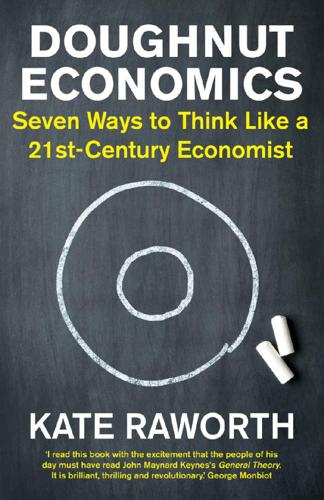
Doughnut Economics: Seven Ways to Think Like a 21st-Century Economist
by
Kate Raworth
Published 22 Mar 2017
Avoiding collapse A systems perspective makes clear that the prevailing direction of global economic development is caught in the twin dynamics of growing social inequality and deepening ecological degradation. To put it bluntly, these trends echo the conditions under which earlier civilisations – from the Easter Islanders to the Greenland Norse – have collapsed. When a society starts to destroy the resource base on which it depends, argues the environmental historian Jared Diamond, it is going to be far less adept at changing its ways if it is also stratified, with a small elite that is quite separate from the masses.
…
Page numbers in italics denote illustrations A Aalborg, Denmark, 290 Abbott, Anthony ‘Tony’, 31 ABCD group, 148 Abramovitz, Moses, 262 absolute decoupling, 260–61 Acemoglu, Daron, 86 advertising, 58, 106–7, 112, 281 Agbodjinou, Sénamé, 231 agriculture, 5, 46, 72–3, 148, 155, 178, 181, 183 Alaska, 9 Alaska Permanent Fund, 194 Alperovitz, Gar, 177 alternative enterprise designs, 190–91 altruism, 100, 104 Amazon, 192, 196, 276 Amazon rainforest, 105–6, 253 American Economic Association, 3 American Enterprise Institute, 67 American Tobacco Corporation, 107 Andes, 54 animal spirits, 110 Anthropocene epoch, 48, 253 anthropocentrism, 115 Apertuso, 230 Apple, 85, 192 Archer Daniels Midland (ADM), 148 Arendt, Hannah, 115–16 Argentina, 55, 274 Aristotle, 32, 272 Arrow, Kenneth, 134 Articles of Association and Memoranda, 233 Arusha, Tanzania, 202 Asia Wage Floor Alliance, 177 Asian financial crisis (1997), 90 Asknature.org, 232 Athens, 57 austerity, 163 Australia, 31, 103, 177, 180, 211, 224–6, 255, 260 Austria, 263, 274 availability bias, 112 AXIOM, 230 Axtell, Robert, 150 Ayres, Robert, 263 B B Corp, 241 Babylon, 13 Baker, Josephine, 157 balancing feedback loops, 138–41, 155, 271 Ballmer, Steve, 231 Bangla Pesa, 185–6, 293 Bangladesh, 10, 226 Bank for International Settlements, 256 Bank of America, 149 Bank of England, 145, 147, 256 banking, see under finance Barnes, Peter, 201 Barroso, José Manuel, 41 Bartlett, Albert Allen ‘Al’, 247 basic income, 177, 194, 199–201 basic personal values, 107–9 Basle, Switzerland, 80 Bauwens, Michel, 197 Beckerman, Wilfred, 258 Beckham, David, 171 Beech-Nut Packing Company, 107 behavioural economics, 11, 111–14 behavioural psychology, 103, 128 Beinhocker, Eric, 158 Belgium, 236, 252 Bentham, Jeremy, 98 Benyus, Janine, 116, 218, 223–4, 227, 232, 237, 241 Berger, John, 12, 281 Berlin Wall, 141 Bermuda, 277 Bernanke, Ben, 146 Bernays, Edward, 107, 112, 281–3 Bhopal gas disaster (1984), 9 Bible, 19, 114, 151 Big Bang (1986), 87 billionaires, 171, 200, 289 biodiversity, 10, 46, 48–9, 52, 85, 115, 155, 208, 210, 242, 299 as common pool resource, 201 and land conversion, 49 and inequality, 172 and reforesting, 50 biomass, 73, 118, 210, 212, 221 biomimicry, 116, 218, 227, 229 bioplastic, 224, 293 Birmingham, West Midlands, 10 Black, Fischer, 100–101 Blair, Anthony ‘Tony’, 171 Blockchain, 187, 192 blood donation, 104, 118 Body Shop, The, 232–4 Bogotá, Colombia, 119 Bolivia, 54 Boston, Massachusetts, 3 Bowen, Alex, 261 Bowles, Sam, 104 Box, George, 22 Boyce, James, 209 Brasselberg, Jacob, 187 Brazil, 124, 226, 281, 290 bread riots, 89 Brisbane, Australia, 31 Brown, Gordon, 146 Brynjolfsson, Erik, 193, 194, 258 Buddhism, 54 buen vivir, 54 Bullitt Center, Seattle, 217 Bunge, 148 Burkina Faso, 89 Burmark, Lynell, 13 business, 36, 43, 68, 88–9 automation, 191–5, 237, 258, 278 boom and bust, 246 and circular economy, 212, 215–19, 220, 224, 227–30, 232–4, 292 and complementary currencies, 184–5, 292 and core economy, 80 and creative destruction, 142 and feedback loops, 148 and finance, 183, 184 and green growth, 261, 265, 269 and households, 63, 68 living metrics, 241 and market, 68, 88 micro-businesses, 9 and neoliberalism, 67, 87 ownership, 190–91 and political funding, 91–2, 171–2 and taxation, 23, 276–7 workers’ rights, 88, 91, 269 butterfly economy, 220–42 C C–ROADS (Climate Rapid Overview and Decision Support), 153 C40 network, 280 calculating man, 98 California, United States, 213, 224, 293 Cambodia, 254 Cameron, David, 41 Canada, 196, 255, 260, 281, 282 cancer, 124, 159, 196 Capital Institute, 236 carbon emissions, 49–50, 59, 75 and decoupling, 260, 266 and forests, 50, 52 and inequality, 58 reduction of, 184, 201, 213, 216–18, 223–7, 239–41, 260, 266 stock–flow dynamics, 152–4 taxation, 201, 213 Cargill, 148 Carney, Mark, 256 Caterpillar, 228 Catholic Church, 15, 19 Cato Institute, 67 Celts, 54 central banks, 6, 87, 145, 146, 147, 183, 184, 256 Chang, Ha-Joon, 82, 86, 90 Chaplin, Charlie, 157 Chiapas, Mexico, 121–2 Chicago Board Options Exchange (CBOE), 100–101 Chicago School, 34, 99 Chile, 7, 42 China, 1, 7, 48, 154, 289–90 automation, 193 billionaires, 200, 289 greenhouse gas emissions, 153 inequality, 164 Lake Erhai doughnut analysis, 56 open-source design, 196 poverty reduction, 151, 198 renewable energy, 239 tiered pricing, 213 Chinese Development Bank, 239 chrematistics, 32, 273 Christianity, 15, 19, 114, 151 cigarettes, 107, 124 circular economy, 220–42, 257 Circular Flow diagram, 19–20, 28, 62–7, 64, 70, 78, 87, 91, 92, 93, 262 Citigroup, 149 Citizen Reaction Study, 102 civil rights movement, 77 Cleveland, Ohio, 190 climate change, 1, 3, 5, 29, 41, 45–53, 63, 74, 75–6, 91, 141, 144, 201 circular economy, 239, 241–2 dynamics of, 152–5 and G20, 31 and GDP growth, 255, 256, 260, 280 and heuristics, 114 and human rights, 10 and values, 126 climate positive cities, 239 closed systems, 74 coffee, 221 cognitive bias, 112–14 Colander, David, 137 Colombia, 119 common-pool resources, 82–3, 181, 201–2 commons, 69, 82–4, 287 collaborative, 78, 83, 191, 195, 196, 264, 292 cultural, 83 digital, 82, 83, 192, 197, 281 and distribution, 164, 180, 181–2, 205, 267 Embedded Economy, 71, 73, 77–8, 82–4, 85, 92 knowledge, 197, 201–2, 204, 229, 231, 292 commons and money creation, see complementary currencies natural, 82, 83, 180, 181–2, 201, 265 and regeneration, 229, 242, 267, 292 and state, 85, 93, 197, 237 and systems, 160 tragedy of, 28, 62, 69, 82, 181 triumph of, 83 and values, 106, 108 Commons Trusts, 201 complementary currencies, 158, 182–8, 236, 292 complex systems, 28, 129–62 complexity science, 136–7 Consumer Reaction Study, 102 consumerism, 58, 102, 121, 280–84 cooking, 45, 80, 186 Coote, Anna, 278 Copenhagen, Denmark, 124 Copernicus, Nicolaus, 14–15 copyright, 195, 197, 204 core economy, 79–80 Corporate To Do List, 215–19 Costa Rica, 172 Council of Economic Advisers, US, 6, 37 Cox, Jo, 117 cradle to cradle, 224 creative destruction, 142 Cree, 282 Crompton, Tom, 125–6 cross-border flows, 89–90 crowdsourcing, 204 cuckoos, 32, 35, 36, 38, 40, 54, 60, 159, 244, 256, 271 currencies, 182–8, 236, 274, 292 D da Vinci, Leonardo, 13, 94–5 Dallas, Texas, 120 Daly, Herman, 74, 143, 271 Danish Nudging Network, 124 Darwin, Charles, 14 Debreu, Gerard, 134 debt, 37, 146–7, 172–3, 182–5, 247, 255, 269 decoupling, 193, 210, 258–62, 273 defeat device software, 216 deforestation, 49–50, 74, 208, 210 degenerative linear economy, 211–19, 222–3, 237 degrowth, 244 DeMartino, George, 161 democracy, 77, 171–2, 258 demurrage, 274 Denmark, 180, 275, 290 deregulation, 82, 87, 269 derivatives, 100–101, 149 Devas, Charles Stanton, 97 Dey, Suchitra, 178 Diamond, Jared, 154 diarrhoea, 5 differential calculus, 131, 132 digital revolution, 191–2, 264 diversify–select–amplify, 158 double spiral, 54 Doughnut model, 10–11, 11, 23–5, 44, 51 and aspiration, 58–9, 280–84 big picture, 28, 42, 61–93 distribution, 29, 52, 57, 58, 76, 93, 158, 163–205 ecological ceiling, 10, 11, 44, 45, 46, 49, 51, 218, 254, 295, 298 goal, 25–8, 31–60 and governance, 57, 59 growth agnosticism, 29–30, 243–85 human nature, 28–9, 94–128 and population, 57–8 regeneration, 29, 158, 206–42 social foundation, 10, 11, 44, 45, 49, 51, 58, 77, 174, 200, 254, 295–6 systems, 28, 129–62 and technology, 57, 59 Douglas, Margaret, 78–9 Dreyfus, Louis, 148 ‘Dumb and Dumber in Macroeconomics’ (Solow), 135 Durban, South Africa, 214 E Earning by Learning, 120 Earth-system science, 44–53, 115, 216, 288, 298 Easter Island, 154 Easterlin, Richard, 265–6 eBay, 105, 192 eco-literacy, 115 ecological ceiling, 10, 11, 44, 45, 46, 49, 51, 218, 254, 295, 298 Ecological Performance Standards, 241 Econ 101 course, 8, 77 Economics (Lewis), 114 Economics (Samuelson), 19–20, 63–7, 70, 74, 78, 86, 91, 92, 93, 262 Economy for the Common Good, 241 ecosystem services, 7, 116, 269 Ecuador, 54 education, 9, 43, 45, 50–52, 85, 169–70, 176, 200, 249, 279 economic, 8, 11, 18, 22, 24, 36, 287–93 environmental, 115, 239–40 girls’, 57, 124, 178, 198 online, 83, 197, 264, 290 pricing, 118–19 efficient market hypothesis, 28, 62, 68, 87 Egypt, 48, 89 Eisenstein, Charles, 116 electricity, 9, 45, 236, 240 and Bangla Pesa, 186 cars, 231 Ethereum, 187–8 and MONIAC, 75, 262 pricing, 118, 213 see also renewable energy Elizabeth II, Queen of the United Kingdom, 145 Ellen MacArthur Foundation, 220 Embedded Economy, 71–93, 263 business, 88–9 commons, 82–4 Earth, 72–6 economy, 77–8 finance, 86–8 household, 78–81 market, 81–2 power, 91–92 society, 76–7 state, 84–6 trade, 89–90 employment, 36, 37, 51, 142, 176 automation, 191–5, 237, 258, 278 labour ownership, 188–91 workers’ rights, 88, 90, 269 Empty World, 74 Engels, Friedrich, 88 environment and circular economy, 220–42, 257 conservation, 121–2 and degenerative linear economy, 211–19, 222–3 degradation, 5, 9, 10, 29, 44–53, 74, 154, 172, 196, 206–42 education on, 115, 239–40 externalities, 152 fair share, 216–17 and finance, 234–7 generosity, 218–19, 223–7 green growth, 41, 210, 243–85 nudging, 123–5 taxation and quotas, 213–14, 215 zero impact, 217–18, 238, 241 Environmental Dashboard, 240–41 environmental economics, 7, 11, 114–16 Environmental Kuznets Curve, 207–11, 241 environmental space, 54 Epstein, Joshua, 150 equilibrium theory, 134–62 Ethereum, 187–8 ethics, 160–62 Ethiopia, 9, 226, 254 Etsy, 105 Euclid, 13, 15 European Central Bank, 145, 275 European Commission, 41 European Union (EU), 92, 153, 210, 222, 255, 258 Evergreen Cooperatives, 190 Evergreen Direct Investing (EDI), 273 exogenous shocks, 141 exponential growth, 39, 246–85 externalities, 143, 152, 213 Exxon Valdez oil spill (1989), 9 F Facebook, 192 fair share, 216–17 Fama, Eugene, 68, 87 fascism, 234, 277 Federal Reserve, US, 87, 145, 146, 271, 282 feedback loops, 138–41, 143, 148, 155, 250, 271 feminist economics, 11, 78–81, 160 Ferguson, Thomas, 91–2 finance animal spirits, 110 bank runs, 139 Black–Scholes model, 100–101 boom and bust, 28–9, 110, 144–7 and Circular Flow, 63–4, 87 and complex systems, 134, 138, 139, 140, 141, 145–7 cross-border flows, 89 deregulation, 87 derivatives, 100–101, 149 and distribution, 169, 170, 173, 182–4, 198–9, 201 and efficient market hypothesis, 63, 68 and Embedded Economy, 71, 86–8 and financial-instability hypothesis, 87, 146 and GDP growth, 38 and media, 7–8 mobile banking, 199–200 and money creation, 87, 182–5 and regeneration, 227, 229, 234–7 in service to life, 159, 234–7 stakeholder finance, 190 and sustainability, 216, 235–6, 239 financial crisis (2008), 1–4, 5, 40, 63, 86, 141, 144, 278, 290 and efficient market hypothesis, 87 and equilibrium theory, 134, 145 and financial-instability hypothesis, 87 and inequality, 90, 170, 172, 175 and money creation, 182 and worker’s rights, 278 financial flows, 89 Financial Times, 183, 266, 289 financial-instability hypothesis, 87, 146 First Green Bank, 236 First World War (1914–18), 166, 170 Fisher, Irving, 183 fluid values, 102, 106–9 food, 3, 43, 45, 50, 54, 58, 59, 89, 198 food banks, 165 food price crisis (2007–8), 89, 90, 180 Ford, 277–8 foreign direct investment, 89 forest conservation, 121–2 fossil fuels, 59, 73, 75, 92, 212, 260, 263 Foundations of Economic Analysis (Samuelson), 17–18 Foxconn, 193 framing, 22–3 France, 43, 165, 196, 238, 254, 256, 281, 290 Frank, Robert, 100 free market, 33, 37, 67, 68, 70, 81–2, 86, 90 free open-source hardware (FOSH), 196–7 free open-source software (FOSS), 196 free trade, 70, 90 Freeman, Ralph, 18–19 freshwater cycle, 48–9 Freud, Sigmund, 107, 281 Friedman, Benjamin, 258 Friedman, Milton, 34, 62, 66–9, 84–5, 88, 99, 183, 232 Friends of the Earth, 54 Full World, 75 Fuller, Buckminster, 4 Fullerton, John, 234–6, 273 G G20, 31, 56, 276, 279–80 G77, 55 Gal, Orit, 141 Gandhi, Mohandas, 42, 293 Gangnam Style, 145 Gardens of Democracy, The (Liu & Hanauer), 158 gender equality, 45, 51–2, 57, 78–9, 85, 88, 118–19, 124, 171, 198 generosity, 218–19, 223–9 geometry, 13, 15 George, Henry, 149, 179 Georgescu-Roegen, Nicholas, 252 geothermal energy, 221 Gerhardt, Sue, 283 Germany, 2, 41, 100, 118, 165, 189, 211, 213, 254, 256, 260, 274 Gessel, Silvio, 274 Ghent, Belgium, 236 Gift Relationship, The (Titmuss), 118–19 Gigerenzer, Gerd, 112–14 Gintis, Herb, 104 GiveDirectly, 200 Glass–Steagall Act (1933), 87 Glennon, Roger, 214 Global Alliance for Tax Justice, 277 global material footprints, 210–11 Global Village Construction Set, 196 globalisation, 89 Goerner, Sally, 175–6 Goffmann, Erving, 22 Going for Growth, 255 golden rule, 91 Goldman Sachs, 149, 170 Gómez-Baggethun, Erik, 122 Goodall, Chris, 211 Goodwin, Neva, 79 Goody, Jade, 124 Google, 192 Gore, Albert ‘Al’, 172 Gorgons, 244, 256, 257, 266 graffiti, 15, 25, 287 Great Acceleration, 46, 253–4 Great Depression (1929–39), 37, 70, 170, 173, 183, 275, 277, 278 Great Moderation, 146 Greece, Ancient, 4, 13, 32, 48, 54, 56–7, 160, 244 green growth, 41, 210, 243–85 Greenham, Tony, 185 greenhouse gas emissions, 31, 46, 50, 75–6, 141, 152–4 and decoupling, 260, 266 and Environmental Kuznets Curve, 208, 210 and forests, 50, 52 and G20, 31 and inequality, 58 reduction of, 184, 201–2, 213, 216–18, 223–7, 239–41, 256, 259–60, 266, 298 stock–flow dynamics, 152–4 and taxation, 201, 213 Greenland, 141, 154 Greenpeace, 9 Greenspan, Alan, 87 Greenwich, London, 290 Grenoble, France, 281 Griffiths, Brian, 170 gross domestic product (GDP), 25, 31–2, 35–43, 57, 60, 84, 164 as cuckoo, 32, 35, 36, 38, 40, 54, 60, 159, 244, 256, 271 and Environmental Kuznets Curve, 207–11 and exponential growth, 39, 53, 246–85 and growth agnosticism, 29–30, 240, 243–85 and inequality, 173 and Kuznets Curve, 167, 173, 188–9 gross national product (GNP), 36–40 Gross World Product, 248 Grossman, Gene, 207–8, 210 ‘grow now, clean up later’, 207 Guatemala, 196 H Haifa, Israel, 120 Haldane, Andrew, 146 Han Dynasty, 154 Hanauer, Nick, 158 Hansen, Pelle, 124 Happy Planet Index, 280 Hardin, Garrett, 69, 83, 181 Harvard University, 2, 271, 290 von Hayek, Friedrich, 7–8, 62, 66, 67, 143, 156, 158 healthcare, 43, 50, 57, 85, 123, 125, 170, 176, 200, 269, 279 Heilbroner, Robert, 53 Henry VIII, King of England and Ireland, 180 Hepburn, Cameron, 261 Herbert Simon, 111 heuristics, 113–14, 118, 123 high-income countries growth, 30, 244–5, 254–72, 282 inequality, 165, 168, 169, 171 labour, 177, 188–9, 278 overseas development assistance (ODA), 198–9 resource intensive lifestyles, 46, 210–11 trade, 90 Hippocrates, 160 History of Economic Analysis (Schumpeter), 21 HIV/AIDS, 123 Holocene epoch, 46–8, 75, 115, 253 Homo economicus, 94–103, 109, 127–8 Homo sapiens, 38, 104, 130 Hong Kong, 180 household, 78 housing, 45, 59, 176, 182–3, 269 Howe, Geoffrey, 67 Hudson, Michael, 183 Human Development Index, 9, 279 human nature, 28 human rights, 10, 25, 45, 49, 50, 95, 214, 233 humanistic economics, 42 hydropower, 118, 260, 263 I Illinois, United States, 179–80 Imago Mundi, 13 immigration, 82, 199, 236, 266 In Defense of Economic Growth (Beckerman), 258 Inclusive Wealth Index, 280 income, 51, 79–80, 82, 88, 176–8, 188–91, 194, 199–201 India, 2, 9, 10, 42, 124, 164, 178, 196, 206–7, 242, 290 Indonesia, 90, 105–6, 164, 168, 200 Indus Valley civilisation, 48 inequality, 1, 5, 25, 41, 63, 81, 88, 91, 148–52, 209 and consumerism, 111 and democracy, 171 and digital revolution, 191–5 and distribution, 163–205 and environmental degradation, 172 and GDP growth, 173 and greenhouse gas emissions, 58 and intellectual property, 195–8 and Kuznets Curve, 29, 166–70, 173–4 and labour ownership, 188–91 and land ownership, 178–82 and money creation, 182–8 and social welfare, 171 Success to the Successful, 148, 149, 151, 166 inflation, 36, 248, 256, 275 insect pollination services, 7 Institute of Economic Affairs, 67 institutional economics, 11 intellectual property rights, 195–8, 204 interest, 36, 177, 182, 184, 275–6 Intergovernmental Panel on Climate Change, 25 International Monetary Fund (IMF), 170, 172, 173, 183, 255, 258, 271 Internet, 83–4, 89, 105, 192, 202, 264 Ireland, 277 Iroquois Onondaga Nation, 116 Israel, 100, 103, 120 Italy, 165, 196, 254 J Jackson, Tim, 58 Jakubowski, Marcin, 196 Jalisco, Mexico, 217 Japan, 168, 180, 211, 222, 254, 256, 263, 275 Jevons, William Stanley, 16, 97–8, 131, 132, 137, 142 John Lewis Partnership, 190 Johnson, Lyndon Baines, 37 Johnson, Mark, 38 Johnson, Todd, 191 JPMorgan Chase, 149, 234 K Kahneman, Daniel, 111 Kamkwamba, William, 202, 204 Kasser, Tim, 125–6 Keen, Steve, 146, 147 Kelly, Marjorie, 190–91, 233 Kennedy, John Fitzgerald, 37, 250 Kennedy, Paul, 279 Kenya, 118, 123, 180, 185–6, 199–200, 226, 292 Keynes, John Maynard, 7–8, 22, 66, 69, 134, 184, 251, 277–8, 284, 288 Kick It Over movement, 3, 289 Kingston, London, 290 Knight, Frank, 66, 99 knowledge commons, 202–4, 229, 292 Kokstad, South Africa, 56 Kondratieff waves, 246 Korzybski, Alfred, 22 Krueger, Alan, 207–8, 210 Kuhn, Thomas, 22 Kumhof, Michael, 172 Kuwait, 255 Kuznets, Simon, 29, 36, 39–40, 166–70, 173, 174, 175, 204, 207 KwaZulu Natal, South Africa, 56 L labour ownership, 188–91 Lake Erhai, Yunnan, 56 Lakoff, George, 23, 38, 276 Lamelara, Indonesia, 105–6 land conversion, 49, 52, 299 land ownership, 178–82 land-value tax, 73, 149, 180 Landesa, 178 Landlord’s Game, The, 149 law of demand, 16 laws of motion, 13, 16–17, 34, 129, 131 Lehman Brothers, 141 Leopold, Aldo, 115 Lesotho, 118, 199 leverage points, 159 Lewis, Fay, 178 Lewis, Justin, 102 Lewis, William Arthur, 114, 167 Lietaer, Bernard, 175, 236 Limits to Growth, 40, 154, 258 Linux, 231 Liu, Eric, 158 living metrics, 240–42 living purpose, 233–4 Lomé, Togo, 231 London School of Economics (LSE), 2, 34, 65, 290 London Underground, 12 loss aversion, 112 low-income countries, 90, 164–5, 168, 173, 180, 199, 201, 209, 226, 254, 259 Lucas, Robert, 171 Lula da Silva, Luiz Inácio, 124 Luxembourg, 277 Lyle, John Tillman, 214 Lyons, Oren, 116 M M–PESA, 199–200 MacDonald, Tim, 273 Machiguenga, 105–6 MacKenzie, Donald, 101 macroeconomics, 36, 62–6, 76, 80, 134–5, 145, 147, 150, 244, 280 Magie, Elizabeth, 149, 153 Malala effect, 124 malaria, 5 Malawi, 118, 202, 204 Malaysia, 168 Mali, Taylor, 243 Malthus, Thomas, 252 Mamsera Rural Cooperative, 190 Manhattan, New York, 9, 41 Mani, Muthukumara, 206 Manitoba, 282 Mankiw, Gregory, 2, 34 Mannheim, Karl, 22 Maoris, 54 market, 81–2 and business, 88 circular flow, 64 and commons, 83, 93, 181, 200–201 efficiency of, 28, 62, 68, 87, 148, 181 and equilibrium theory, 131–5, 137, 143–7, 155, 156 free market, 33, 37, 67–70, 90, 208 and households, 63, 69, 78, 79 and maxi-max rule, 161 and pricing, 117–23, 131, 160 and rational economic man, 96, 100–101, 103, 104 and reciprocity, 105, 106 reflexivity of, 144–7 and society, 69–70 and state, 84–6, 200, 281 Marshall, Alfred, 17, 98, 133, 165, 253, 282 Marx, Karl, 88, 142, 165, 272 Massachusetts Institute of Technology (MIT), 17–20, 152–5 massive open online courses (MOOCs), 290 Matthew Effect, 151 Max-Neef, Manfred, 42 maxi-max rule, 161 maximum wage, 177 Maya civilisation, 48, 154 Mazzucato, Mariana, 85, 195, 238 McAfee, Andrew, 194, 258 McDonough, William, 217 Meadows, Donella, 40, 141, 159, 271, 292 Medusa, 244, 257, 266 Merkel, Angela, 41 Messerli, Elspeth, 187 Metaphors We Live By (Lakoff & Johnson), 38 Mexico, 121–2, 217 Michaels, Flora S., 6 micro-businesses, 9, 173, 178 microeconomics, 132–4 microgrids, 187–8 Micronesia, 153 Microsoft, 231 middle class, 6, 46, 58 middle-income countries, 90, 164, 168, 173, 180, 226, 254 migration, 82, 89–90, 166, 195, 199, 236, 266, 286 Milanovic, Branko, 171 Mill, John Stuart, 33–4, 73, 97, 250, 251, 283, 284, 288 Millo, Yuval, 101 minimum wage, 82, 88, 176 Minsky, Hyman, 87, 146 Mises, Ludwig von, 66 mission zero, 217 mobile banking, 199–200 mobile phones, 222 Model T revolution, 277–8 Moldova, 199 Mombasa, Kenya, 185–6 Mona Lisa (da Vinci), 94 money creation, 87, 164, 177, 182–8, 205 MONIAC (Monetary National Income Analogue Computer), 64–5, 75, 142, 262 Monoculture (Michaels), 6 Monopoly, 149 Mont Pelerin Society, 67, 93 Moral Consequences of Economic Growth, The (Friedman), 258 moral vacancy, 41 Morgan, Mary, 99 Morogoro, Tanzania, 121 Moyo, Dambisa, 258 Muirhead, Sam, 230, 231 MultiCapital Scorecard, 241 Murphy, David, 264 Murphy, Richard, 185 musical tastes, 110 Myriad Genetics, 196 N national basic income, 177 Native Americans, 115, 116, 282 natural capital, 7, 116, 269 Natural Economic Order, The (Gessel), 274 Nedbank, 216 negative externalities, 213 negative interest rates, 275–6 neoclassical economics, 134, 135 neoliberalism, 7, 62–3, 67–70, 81, 83, 84, 88, 93, 143, 170, 176 Nepal, 181, 199 Nestlé, 217 Netherlands, 211, 235, 224, 226, 238, 277 networks, 110–11, 117, 118, 123, 124–6, 174–6 neuroscience, 12–13 New Deal, 37 New Economics Foundation, 278, 283 New Year’s Day, 124 New York, United States, 9, 41, 55 Newlight Technologies, 224, 226, 293 Newton, Isaac, 13, 15–17, 32–3, 95, 97, 129, 131, 135–7, 142, 145, 162 Nicaragua, 196 Nigeria, 164 nitrogen, 49, 52, 212–13, 216, 218, 221, 226, 298 ‘no pain, no gain’, 163, 167, 173, 204, 209 Nobel Prize, 6–7, 43, 83, 101, 167 Norway, 281 nudging, 112, 113, 114, 123–6 O Obama, Barack, 41, 92 Oberlin, Ohio, 239, 240–41 Occupy movement, 40, 91 ocean acidification, 45, 46, 52, 155, 242, 298 Ohio, United States, 190, 239 Okun, Arthur, 37 onwards and upwards, 53 Open Building Institute, 196 Open Source Circular Economy (OSCE), 229–32 open systems, 74 open-source design, 158, 196–8, 265 open-source licensing, 204 Organisation for Economic Co-operation and Development (OECD), 38, 210, 255–6, 258 Origin of Species, The (Darwin), 14 Ormerod, Paul, 110, 111 Orr, David, 239 Ostrom, Elinor, 83, 84, 158, 160, 181–2 Ostry, Jonathan, 173 OSVehicle, 231 overseas development assistance (ODA), 198–200 ownership of wealth, 177–82 Oxfam, 9, 44 Oxford University, 1, 36 ozone layer, 9, 50, 115 P Pachamama, 54, 55 Pakistan, 124 Pareto, Vilfredo, 165–6, 175 Paris, France, 290 Park 20|20, Netherlands, 224, 226 Parker Brothers, 149 Patagonia, 56 patents, 195–6, 197, 204 patient capital, 235 Paypal, 192 Pearce, Joshua, 197, 203–4 peer-to-peer networks, 187, 192, 198, 203, 292 People’s QE, 184–5 Perseus, 244 Persia, 13 Peru, 2, 105–6 Phillips, Adam, 283 Phillips, William ‘Bill’, 64–6, 75, 142, 262 phosphorus, 49, 52, 212–13, 218, 298 Physiocrats, 73 Pickett, Kate, 171 pictures, 12–25 Piketty, Thomas, 169 Playfair, William, 16 Poincaré, Henri, 109, 127–8 Polanyi, Karl, 82, 272 political economy, 33–4, 42 political funding, 91–2, 171–2 political voice, 43, 45, 51–2, 77, 117 pollution, 29, 45, 52, 85, 143, 155, 206–17, 226, 238, 242, 254, 298 population, 5, 46, 57, 155, 199, 250, 252, 254 Portugal, 211 post-growth society, 250 poverty, 5, 9, 37, 41, 50, 88, 118, 148, 151 emotional, 283 and inequality, 164–5, 168–9, 178 and overseas development assistance (ODA), 198–200 and taxation, 277 power, 91–92 pre-analytic vision, 21–2 prescription medicines, 123 price-takers, 132 prices, 81, 118–23, 131, 160 Principles of Economics (Mankiw), 34 Principles of Economics (Marshall), 17, 98 Principles of Political Economy (Mill), 288 ProComposto, 226 Propaganda (Bernays), 107 public relations, 107, 281 public spending v. investment, 276 public–private patents, 195 Putnam, Robert, 76–7 Q quantitative easing (QE), 184–5 Quebec, 281 Quesnay, François, 16, 73 R Rabot, Ghent, 236 Rancière, Romain, 172 rating and review systems, 105 rational economic man, 94–103, 109, 111, 112, 126, 282 Reagan, Ronald, 67 reciprocity, 103–6, 117, 118, 123 reflexivity of markets, 144 reinforcing feedback loops, 138–41, 148, 250, 271 relative decoupling, 259 renewable energy biomass energy, 118, 221 and circular economy, 221, 224, 226, 235, 238–9, 274 and commons, 83, 85, 185, 187–8, 192, 203, 264 geothermal energy, 221 and green growth, 257, 260, 263, 264, 267 hydropower, 118, 260, 263 pricing, 118 solar energy, see solar energy wave energy, 221 wind energy, 75, 118, 196, 202–3, 221, 233, 239, 260, 263 rentier sector, 180, 183, 184 reregulation, 82, 87, 269 resource flows, 175 resource-intensive lifestyles, 46 Rethinking Economics, 289 Reynebeau, Guy, 237 Ricardo, David, 67, 68, 73, 89, 250 Richardson, Katherine, 53 Rifkin, Jeremy, 83, 264–5 Rise and Fall of the Great Powers, The (Kennedy), 279 risk, 112, 113–14 Robbins, Lionel, 34 Robinson, James, 86 Robinson, Joan, 142 robots, 191–5, 237, 258, 278 Rockefeller Foundation, 135 Rockford, Illinois, 179–80 Rockström, Johan, 48, 55 Roddick, Anita, 232–4 Rogoff, Kenneth, 271, 280 Roman Catholic Church, 15, 19 Rombo, Tanzania, 190 Rome, Ancient, 13, 48, 154 Romney, Mitt, 92 Roosevelt, Franklin Delano, 37 rooted membership, 190 Rostow, Walt, 248–50, 254, 257, 267–70, 284 Ruddick, Will, 185 rule of thumb, 113–14 Ruskin, John, 42, 223 Russia, 200 rust belt, 90, 239 S S curve, 251–6 Sainsbury’s, 56 Samuelson, Paul, 17–21, 24–5, 38, 62–7, 70, 74, 84, 91, 92, 93, 262, 290–91 Sandel, Michael, 41, 120–21 Sanergy, 226 sanitation, 5, 51, 59 Santa Fe, California, 213 Santinagar, West Bengal, 178 São Paolo, Brazil, 281 Sarkozy, Nicolas, 43 Saumweder, Philipp, 226 Scharmer, Otto, 115 Scholes, Myron, 100–101 Schumacher, Ernst Friedrich, 42, 142 Schumpeter, Joseph, 21 Schwartz, Shalom, 107–9 Schwarzenegger, Arnold, 163, 167, 204 ‘Science and Complexity’ (Weaver), 136 Scotland, 57 Seaman, David, 187 Seattle, Washington, 217 second machine age, 258 Second World War (1939–45), 18, 37, 70, 170 secular stagnation, 256 self-interest, 28, 68, 96–7, 99–100, 102–3 Selfish Society, The (Gerhardt), 283 Sen, Amartya, 43 Shakespeare, William, 61–3, 67, 93 shale gas, 264, 269 Shang Dynasty, 48 shareholders, 82, 88, 189, 191, 227, 234, 273, 292 sharing economy, 264 Sheraton Hotel, Boston, 3 Siegen, Germany, 290 Silicon Valley, 231 Simon, Julian, 70 Sinclair, Upton, 255 Sismondi, Jean, 42 slavery, 33, 77, 161 Slovenia, 177 Small Is Beautiful (Schumacher), 42 smart phones, 85 Smith, Adam, 33, 57, 67, 68, 73, 78–9, 81, 96–7, 103–4, 128, 133, 160, 181, 250 social capital, 76–7, 122, 125, 172 social contract, 120, 125 social foundation, 10, 11, 44, 45, 49, 51, 58, 77, 174, 200, 254, 295–6 social media, 83, 281 Social Progress Index, 280 social pyramid, 166 society, 76–7 solar energy, 59, 75, 111, 118, 187–8, 190 circular economy, 221, 222, 223, 224, 226–7, 239 commons, 203 zero-energy buildings, 217 zero-marginal-cost revolution, 84 Solow, Robert, 135, 150, 262–3 Soros, George, 144 South Africa, 56, 177, 214, 216 South Korea, 90, 168 South Sea Bubble (1720), 145 Soviet Union (1922–91), 37, 67, 161, 279 Spain, 211, 238, 256 Spirit Level, The (Wilkinson & Pickett), 171 Sraffa, Piero, 148 St Gallen, Switzerland, 186 Stages of Economic Growth, The (Rostow), 248–50, 254 stakeholder finance, 190 Standish, Russell, 147 state, 28, 33, 69–70, 78, 82, 160, 176, 180, 182–4, 188 and commons, 85, 93, 197, 237 and market, 84–6, 200, 281 partner state, 197, 237–9 and robots, 195 stationary state, 250 Steffen, Will, 46, 48 Sterman, John, 66, 143, 152–4 Steuart, James, 33 Stiglitz, Joseph, 43, 111, 196 stocks and flows, 138–41, 143, 144, 152 sub-prime mortgages, 141 Success to the Successful, 148, 149, 151, 166 Sugarscape, 150–51 Summers, Larry, 256 Sumner, Andy, 165 Sundrop Farms, 224–6 Sunstein, Cass, 112 supply and demand, 28, 132–6, 143, 253 supply chains, 10 Sweden, 6, 255, 275, 281 swishing, 264 Switzerland, 42, 66, 80, 131, 186–7, 275 T Tableau économique (Quesnay), 16 tabula rasa, 20, 25, 63, 291 takarangi, 54 Tanzania, 121, 190, 202 tar sands, 264, 269 taxation, 78, 111, 165, 170, 176, 177, 237–8, 276–9 annual wealth tax, 200 environment, 213–14, 215 global carbon tax, 201 global financial transactions tax, 201, 235 land-value tax, 73, 149, 180 non-renewable resources, 193, 237–8, 278–9 People’s QE, 185 tax relief v. tax justice, 23, 276–7 TED (Technology, Entertainment, Design), 202, 258 Tempest, The (Shakespeare), 61, 63, 93 Texas, United States, 120 Thailand, 90, 200 Thaler, Richard, 112 Thatcher, Margaret, 67, 69, 76 Theory of Moral Sentiments (Smith), 96 Thompson, Edward Palmer, 180 3D printing, 83–4, 192, 198, 231, 264 thriving-in-balance, 54–7, 62 tiered pricing, 213–14 Tigray, Ethiopia, 226 time banking, 186 Titmuss, Richard, 118–19 Toffler, Alvin, 12, 80 Togo, 231, 292 Torekes, 236–7 Torras, Mariano, 209 Torvalds, Linus, 231 trade, 62, 68–9, 70, 89–90 trade unions, 82, 176, 189 trademarks, 195, 204 Transatlantic Trade and Investment Partnership (TTIP), 92 transport, 59 trickle-down economics, 111, 170 Triodos, 235 Turkey, 200 Tversky, Amos, 111 Twain, Mark, 178–9 U Uganda, 118, 125 Ulanowicz, Robert, 175 Ultimatum Game, 105, 117 unemployment, 36, 37, 276, 277–9 United Kingdom Big Bang (1986), 87 blood donation, 118 carbon dioxide emissions, 260 free trade, 90 global material footprints, 211 money creation, 182 MONIAC (Monetary National Income Analogue Computer), 64–5, 75, 142, 262 New Economics Foundation, 278, 283 poverty, 165, 166 prescription medicines, 123 wages, 188 United Nations, 55, 198, 204, 255, 258, 279 G77 bloc, 55 Human Development Index, 9, 279 Sustainable Development Goals, 24, 45 United States American Economic Association meeting (2015), 3 blood donation, 118 carbon dioxide emissions, 260 Congress, 36 Council of Economic Advisers, 6, 37 Earning by Learning, 120 Econ 101 course, 8, 77 Exxon Valdez oil spill (1989), 9 Federal Reserve, 87, 145, 146, 271, 282 free trade, 90 Glass–Steagall Act (1933), 87 greenhouse gas emissions, 153 global material footprint, 211 gross national product (GNP), 36–40 inequality, 170, 171 land-value tax, 73, 149, 180 political funding, 91–2, 171 poverty, 165, 166 productivity and employment, 193 rust belt, 90, 239 Transatlantic Trade and Investment Partnership (TTIP), 92 wages, 188 universal basic income, 200 University of Berkeley, 116 University of Denver, 160 urbanisation, 58–9 utility, 35, 98, 133 V values, 6, 23, 34, 35, 42, 117, 118, 121, 123–6 altruism, 100, 104 anthropocentric, 115 extrinsic, 115 fluid, 28, 102, 106–9 and networks, 110–11, 117, 118, 123, 124–6 and nudging, 112, 113, 114, 123–6 and pricing, 81, 120–23 Veblen, Thorstein, 82, 109, 111, 142 Venice, 195 verbal framing, 23 Verhulst, Pierre, 252 Victor, Peter, 270 Viner, Jacob, 34 virtuous cycles, 138, 148 visual framing, 23 Vitruvian Man, 13–14 Volkswagen, 215–16 W Wacharia, John, 186 Wall Street, 149, 234, 273 Wallich, Henry, 282 Walras, Léon, 131, 132, 133–4, 137 Ward, Barbara, 53 Warr, Benjamin, 263 water, 5, 9, 45, 46, 51, 54, 59, 79, 213–14 wave energy, 221 Ways of Seeing (Berger), 12, 281 Wealth of Nations, The (Smith), 74, 78, 96, 104 wealth ownership, 177–82 Weaver, Warren, 135–6 weightless economy, 261–2 WEIRD (Western, educated, industrialised, rich, democratic), 103–5, 110, 112, 115, 117, 282 West Bengal, India, 124, 178 West, Darrell, 171–2 wetlands, 7 whale hunting, 106 Wiedmann, Tommy, 210 Wikipedia, 82, 223 Wilkinson, Richard, 171 win–win trade, 62, 68, 89 wind energy, 75, 118, 196, 202–3, 221, 233, 239, 260, 263 Wizard of Oz, The, 241 Woelab, 231, 293 Wolf, Martin, 183, 266 women’s rights, 33, 57, 107, 160, 201 and core economy, 69, 79–81 education, 57, 124, 178, 198 and land ownership, 178 see also gender equality workers’ rights, 88, 91, 269 World 3 model, 154–5 World Bank, 6, 41, 119, 164, 168, 171, 206, 255, 258 World No Tobacco Day, 124 World Trade Organization, 6, 89 worldview, 22, 54, 115 X xenophobia, 266, 277, 286 Xenophon, 4, 32, 56–7, 160 Y Yandle, Bruce, 208 Yang, Yuan, 1–3, 289–90 yin yang, 54 Yousafzai, Malala, 124 YouTube, 192 Yunnan, China, 56 Z Zambia, 10 Zanzibar, 9 Zara, 276 Zeitvorsoge, 186–7 zero environmental impact, 217–18, 238, 241 zero-hour contracts, 88 zero-humans-required production, 192 zero-interest loans, 183 zero-marginal-cost revolution, 84, 191, 264 zero-waste manufacturing, 227 Zinn, Howard, 77 PICTURE ACKNOWLEDGEMENTS Illustrations are reproduced by kind permission of: archive.org
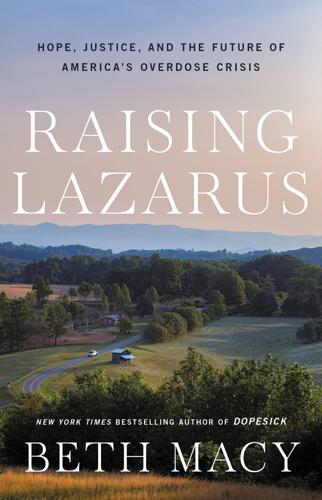
Raising Lazarus: Hope, Justice, and the Future of America’s Overdose Crisis
by
Beth Macy
Published 15 Aug 2022
How dare a lowly journalist question the judgment of an Ivy League–trained federal judge? If public shaming didn’t sit so well with the prickly judge, Quinn predicted it would at least impact the Sacklers. “By 2023, how are the Sacklers going to hide from what they’ve done?” he said. “They’re gonna be next to Easter Island, in a small boat. They’ll have different names. It’ll be like, ‘Table for three, Seckler.’” The eight Sacklers named in the litigation were estimated to be worth $13 billion—investigators were still trying to tally the family’s offshore assets. They owned multiple homes on multiple continents, including a sprawling $7.4 million Florida mansion where David Sackler had recently retreated, knowing that the state constitution allows families to retain a principal residence (and up to 160 acres of property) against creditors’ claims.
…
their wealth intact: Posner and Brubaker, “The Sacklers Could Get Away With It.” calling Posner a “numbskull”: Aaron Keller, “Purdue Pharma Judge Throttles ‘Misinformed,’ ‘Numbskull’ New York Times Opinion Writers,” Law & Crime, July 29, 2020, https://lawandcrime.com/federal-court/purdue-pharma-judge-throttles-misinformed-numbskull-new-york-times-opinion-writers/. “Easter Island”: Mike Quinn, author interview, February 17, 2021. against creditors’ claims: Alexandra Clough, “EXCLUSIVE: Sackler family company pays $7 million for mansion near Boca Raton,” Palm Beach Post, October 25, 2019, https://www.palmbeachpost.com/news/20191025/exclusive-sackler-family-company-pays-7-million-for-mansion-near-boca-raton.
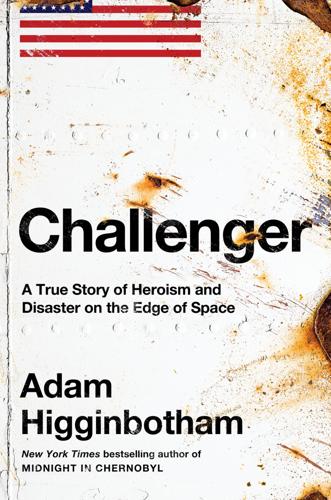
Challenger: A True Story of Heroism and Disaster on the Edge of Space
by
Adam Higginbotham
Published 14 May 2024
In the first two of these scenarios, the astronauts were trained to drop the massive external fuel tank and then turn back for either a glide landing at Cape Canaveral or at a handful of sites scattered around the globe where there were airstrips long enough to accommodate the orbiter’s high-speed touchdown; for the projected military launches over the Pacific, the only available emergency runway was on Easter Island. John Young believed that one plan was so perilous that for the crew to survive would require “ten consecutive miracles followed by an act of God.” If, for some reason, no landing strip was available, the procedures called for a water landing; it was recognized by both astronauts and engineers alike that this option—known as a “contingency abort”—would result in the immediate disintegration of the shuttle.
…
Jane Smith ran to retrieve their things from the Launch Director’s office, where the welcome banner still hung from the ceiling, but agency staff now hurried to switch off the television sets. Erin screamed in anguish: “Daddy! I want you, Daddy! You always promised nothing would happen.” Alison, although still holding on to the idea that her father might somehow have flown his spacecraft out of the fireball—and landed safely in Spain, or in Morocco, or Easter Island—was in tears. As the doors of the elevator closed on Abbey and the small group of astronauts’ families, the cabin filled with the sound of sobbing. “Stop crying,” one of the other women told Alison. “You’re upsetting everyone.” As the NASA vans carried them across the Space Center campus toward the Operations and Checkout Building, June Scobee looked from the windows at the strangers streaming from the viewing areas, or gathering on the shoulders of State Road 3; sagging into one another’s arms or pointing out to the east, where the contrails of the lost spacecraft still hung in the sky.
…
W., 237, 260, 298, 305–6, 366, 370, 371 Butterworth, Bill, 209–11, 225–27 Butterworth, Jenny, 225 Cain, LeRoy, 448 CapCom (Capsule Communicator), 94, 116, 130, 138, 139, 151, 346, 352, 443 Cape Canaveral, 16, 53, 54, 155, 156, 189, 203, 211, 231–34, 243, 256, 257, 273, 284, 295, 299, 340, 347, 379, 390, 404, 426, 444 Astronaut Candidates at, 108 Challenger and, 143, 183–84, 227 STS-51-L mission, 238, 293, 294, 295, 304, 307, 308, 310, 323, 325, 330, 331, 340, 356, 360, 367 Columbia and, 113, 116, 118, 119, 127–30, 173 Launch Control Center at, 16, 129, 130, 183, 198, 200, 236, 289, 290, 292, 294 Challenger STS-51-L and, 299, 303, 304, 307, 308–10, 335, 337, 338, 341, 343, 344, 346–47, 350, 354, 356, 361, 363, 364 Nelson and, 276 solid rocket booster assembly at, 159, 162, 163, 166, 168–72 Vehicle Assembly Building at, 123, 159, 169, 170, 172, 247, 270, 286, 305, 306, 347, 399 weather at, 247, 303, 305, 307, 310–13 see also Kennedy Space Center Carbonated Beverage Dispenser Evaluation, 238 Carson, Johnny, 216–17, 243 Carter, Jimmy, 78, 94, 100–102, 119–21, 123, 124, 128 Iran hostage crisis and, 121, 128 Carter, Sonny, 340, 362, 427, 437, 439 CBS, 4, 28, 31–32, 317, 360 CBS Evening News, 13 Central Intelligence Agency (CIA), 44, 59 Cernan, Gene, 23, 27–28, 31–32, 66, 76, 229, 237 Cernan, Teresa Dawn, 28 Chaffee, Martha, 7, 8, 15–16, 22, 23 Chaffee, Roger, 7–8, 15–16 on Apollo 1 mission, 7–13, 15–21 death in, 7, 20–21, 22–27, 29, 30, 60, 94, 369, 377, 426 burial of, 23 Chaffee, Sheryl, 23 Chaffee, Stephen, 23 Chaikin, Andrew, 190 Challenger Center for Space Science Education, 443 Church of Latter Day Saints, 160, 247 CIA, 44, 59 Citizens in Space Task Force, 217–19 civil rights movement, 29, 30, 71, 74 Clear Lake, 63, 91, 94, 102, 111, 112, 115, 135, 145, 146, 148, 150, 215, 244, 274, 280, 370–71, 374, 379 Clear Lake High School, 145 Cleveland Call and Post, 74 clevis-and-tang joints, 163, 164, 166, 167, 170, 255, 381, 392 Clifford, Sophia, 230 Clinton, Bill, 456 CNN, 2, 343, 348, 352, 355, 360, 366, 385 Coast Guard, 400–402, 425 Cobb, Geraldyn “Jerrie,” 67–69, 71 Coca-Cola, 238 Cochran, Jacqueline, 67, 69 Cold War, 29, 32, 41, 43–44, 160, 231–32, 444 cold weather, 321 Challenger STS-51-L launch and, 337, 367, 368, 385, 386, 388, 389 booster rocket temperature, 337–38, 345 launchpad ice, 311, 325, 333–34, 337–41, 343, 345, 349 O-rings and, 253–57, 259, 262, 392, 393 Challenger STS-51-L disaster and, 349–51, 381, 384 Challenger STS-51-L launch concerns about, 297, 300–301, 303–7, 310–20, 321–32, 335–36, 430, 436 Discovery STS-51-C and, 247, 253–55, 303–4, 311, 313, 324, 329 Feynman’s ice water demonstration on, 393–94 Collins, Michael, 7, 22, 55, 90, 281–82 Collins, Pat, 281 Columbia Accident Investigation Board, 449 Concord High School, 223, 350 Concord Monitor, 221 Congress, 105, 115, 376, 380 Apollo program hearings of, 25–27 NASA budget cut by, 52, 53 Space Shuttle funding and, 57–58, 61 Congressional Committee on Science and Astronautics, 69 Constitution, US, 418 contingency abort, 155 Corlew, Johnny, 309, 310, 317, 339, 340 Corrigan, Ed and Grace, 222, 297, 299, 302, 342, 350, 354, 357, 358, 362, 375–76 Covey, Dick, 3, 103, 346 Crippen, Bob, 105, 116, 122, 123, 127, 129–39, 141, 151, 183, 236, 378, 399–402, 412, 420, 436, 444, 446 post-Challenger life of, 451 Crippen, Ginny, 225 Cronkite, Walter, 13, 219, 291 Culbertson, Frank, 286, 362 Cunningham, Stephen, 209–11 Daily Defender, 75 Dallas, 149 Dallas Morning News, 285 Dawber, Pam, 229 Defense Department, 44, 72 Discovery and, 244–45, 268 DeLorean, John, 282 Denver, John, 219 Devlin, Jim, 318–19 Devlin, John, 412–13, 418, 420 Dornberger, Walter, 40–42, 55 Dover Air Force Base, 428 Drake, Francis, 369–70 Dream Is Alive, The, 228 Dribin, Lee, 387 Dwight, Edward Joseph, 73–77 Dyna-Soar, 41–43, 60 Dyson, Freeman, 218 Easterbrook, Gregg, 122 Easter Island, 155 Ebeling, Bob, 272–73, 312–14, 347, 349, 350, 430, 432 post-Challenger life of, 451 Ebony, 83 Edwards Air Force Base, 47, 48, 50, 73, 74, 79, 80, 82, 184, 204, 376, 443 Columbia and, 138, 140, 142 Eglin Air Force Base, 401 Eisenhower, Dwight, 43 Elizabeth II, Queen, 23 Ellington Field, 93, 102, 145, 372, 375 Empire State Building, 374 Enterprise (originally Constitution), 62, 95–96 Equal Employment Opportunity Act, 65 Essence, 83 Ethiopia, 276–77 European Space Agency, 114, 232 F-1 engine, 159 Faget, Max, 11, 34–38, 42, 61, 156, 158 capsules designed by, 35–37, 43, 60 Columbia and, 130, 132, 134, 137, 138 family background and early life of, 35 Lee and, 56 in Space Shuttle design and development, 34, 37–38, 57, 60–62, 98, 130, 137, 447 Fairchild Industries, 158 Federal Aviation Administration (FAA), 248–49 Federal Bureau of Investigation (FBI), 282, 410, 434 Feynman, Richard, 391–92 cancer and death of, 391, 420, 449 engine presentation requested by, 421–22 on Rogers Commission, 382, 389, 391–94, 396, 408, 420–22, 433 Appendix F for, 433, 449–50 ice water demonstration in, 393–94 Fisher, Anna, 92, 93, 103, 117, 151, 213, 267 Fisher, Bill, 92 Fixed-Base Simulator, 109 Fixed Service Structure, 325 Fletcher, James, 32–33, 65, 95, 96, 431 Flight 981 crash, 249–50, 261 Flight Control Room, 1, 2, 137, 139, 140, 236, 345, 351, 371 Flight Dynamics Officer, 130–31, 139, 345–46, 351, 356 Flight Readiness Reviews, 175–79, 202–4, 207–8, 230, 251, 417 solid rocket boosters and, 178–79, 208, 254, 255, 257, 260 for Space Shuttle Challenger STS-51-L, 300–301, 303, 322–32, 393, 430 Florida Today, 212 Fonda, Jane, 231, 298 Ford, Gerald, 65, 78 Ford Foundation, 87 Fox, Michael J., 279 Frank, Richard, 101 Freedom of Information Act, 427 Freedom Star, 245, 319, 321 Frenchie’s, 280 Frosch, Robert, 100–101, 113, 115, 121, 123–24, 128, 218 Funk, Scott, 303 Fuqua, Don, 95, 298, 306 Gaddafi, Muammar, 374 Gagarin, Yuri, 9, 42–43, 71 Gallup poll, 55 Gardner, Dale, 151, 214, 215 Garn, Jake, 227, 298, 370 Garrison, Ed, 395 Gemini program, 8, 9, 11, 14, 15, 26, 33, 43, 46, 82, 104, 189, 281 unmanned tests in, 122 General Dynamics, 141, 282, 283 General Electric (GE), 14, 54, 168–69 Germany, 40–41, 158 Gibson, Robert “Hoot,” 148, 189, 190, 276, 284, 289 Gilruth, Robert, 37 Girl Scouts, 222, 224 Glenn, John, 9, 46, 70, 71, 76, 90, 147, 221, 243, 370 Graham, Bill, 283–84, 290, 291, 298, 301, 303, 304, 306, 360, 366–68, 370, 376, 380–82, 384–85, 387, 388, 391, 431 gravity, zero, 78, 110, 187, 275 Great Salt Lake, 160 Greene, Jay, 345–46, 351, 353, 355–56, 358 Gregory, Fred, 145, 152, 375, 415 Grissom, Betty, 436, 440 Grissom, Gus, 8 on Apollo 1 mission, 8–10, 12–21 death in, 20–21, 22–27, 29, 30, 60, 94, 369, 377, 426, 436 burial of, 23 Grissom, Mark, 10 Grumman Corporation, 52 Hall, Bruce, 317 Halley’s Comet, 277, 290, 293 Hardy, George, 159, 172, 173, 271, 315, 322, 323, 327, 330, 451 Harris, Hugh, 347, 349 Hart, Jane B., 68–69 Hartsfield, Henry “Hank,” 197–200, 416 Hauck, Rick, 108, 116, 148, 151, 212–15 Hawley, Steve, 148, 150 Heisig, Kurt, 185, 186, 191 Henize, Karl, 241–42 Hercules, Inc., 181 Hetzel Shoal, 411, 412, 415, 420 Hexagon, 59 “High Flight” (Magee), 281, 282, 366, 370 Hitler, Adolf, 40, 158 Hollings, Ernest, 434 Holz, Robert, 444 Homestead Air Force Base, 107 Houston, Cecil, 314–15, 321–22, 328, 331–32 Houston Chronicle, 112 Houston Post, 416 Howard, Jenny, 239–42, 261 Hubble Space Telescope, 290–91 Hughes Aircraft Company, 193–96, 209–11, 225–26, 275–76, 300, 337 Hughes Research Labs, 84, 88–89 Huntsville, AL, 53–54, 157, 159, 166, 171–73, 178, 179, 182, 208, 224, 272, 300, 378, 379, 381, 384, 387, 404, 417, 432 see also Marshall Space Flight Center Hurricane Alicia, 267 Husband, Rick, 446–48 Hutchinson, Neil, 130–32, 134 hydrogen, 96–98, 168, 333 hypersonic planes, 35, 42–46, 56, 81, 98 X-15, 45–46, 47–52, 101, 140 hypoxia, 236 Inconel X, 45 intercontinental ballistic missiles, 35–36, 41, 160 Titan, 41, 59, 161, 163, 164, 165, 204 International Space Station, 445, 449 Iran, 119, 121, 128 Jack and Jill of America, 146 Jarre, Jean-Michel, 278–79, 285, 452 Jarvis, Greg, 193–96, 209–11, 225–28, 275–77, 452 on Challenger mission, 277, 294, 295, 300, 302, 306, 316, 419 death in, 355, 368, 369, 373, 378, 384, 401, 437 experiments planned, 277, 285 on launch day, 337, 339, 340, 344 media junket for, 285 recovery of remains and burial, 419–20, 426–28, 435–36, 438 at Hughes, 193–96, 275–76, 300 Jarvis, Marcia, 194–96, 211, 225, 228, 294, 300, 302, 371, 420, 435, 441 post-Challenger life of, 452 Jet, 75, 83, 191 Jet Propulsion Laboratory (JPL), 392 Jetty Rats, 405, 414 John Paul II, Pope, 374 Johnson, Caldwell, 35 Johnson, Frank, 229–30 Johnson, Lyndon, 23, 24, 31, 52, 53, 68–69, 72, 141 Johnson Sea Link II, 403 Johnson Space Center (Manned Spacecraft Center), 53, 63, 101, 156, 211, 225, 226, 236, 242, 267, 268, 274, 278, 280, 284, 378 Apollo 1 fire and, 22 Columbia and, 115, 119, 128, 134, 135 Space Shuttle astronaut recruitment and, 78, 84, 91, 93, 103, 104, 111, 144–46, 148–50, 152, 154 Space Shuttle Challenger STS-51-L and, 301, 310, 331 memorial for astronauts lost in disaster, 376–77, 406 Space Shuttle development and, 34, 37, 56, 61 see also Mission Control Justice Department, 31 Kansas City Call, 73 Karman Line, 46, 132, 229 Keel, Alton, 398, 454 Kelly Air Force Base, 79 Kennedy, John F., 43, 160 assassination of, 76, 373 moon landing deadline of, 8, 9, 32, 52, 70 racial equality and, 71, 72, 74 Kennedy, Robert F., 29, 75 Kennedy Space Center, 174, 177, 209, 233, 254, 290, 394, 399, 416–17, 426 Challenger STS-51-L mission at, 295, 303, 304, 313, 321, 333, 335, 349, 361, 362, 370 Columbia missions at, 112, 113, 130, 291–93 construction of, 16–17 employee workloads at, 234 gift shop at, 299 solid rocket boosters and, 159 Kerwin, Joe, 426, 438–40 KH-11 Keyhole spy satellite, 136–37 Kilminster, Joe, 182, 320, 322, 324, 327–31, 395, 407, 432 King, Martin Luther, 29 Kingsbury, Jim, 317 Kitty Hawk, USS, 264 Kleinknecht, Kenny, 114–15, 119, 123 Knight, Pete, 48–50 Konrad, John, 209–11, 276 Kraft, Chris, 11, 64, 66, 83, 101, 115, 119, 130, 132, 137, 138, 151, 156, 212, 215, 226 Kranz, Gene, 64, 136–37 Krist, Ronald, 436, 441 Ku Klux Klan, 85, 147 Kutyna, Don, 382, 389, 394, 408, 409, 421, 433 Kuznetz, Larry, 112–15, 118, 123 Ladies’ Home Journal, 279 Lake City, SC, 84–85, 191–92 Langley Research Center, 35, 53, 154, 239 Launch Control Center, 16, 129, 130, 183, 198, 200, 236, 289, 290, 292, 294 Challenger STS-51-L and, 299, 303, 304, 307, 308–10, 335, 337, 338, 341, 343, 344, 346–47, 350, 354, 356, 361, 363, 364 Lawrence, Robert H., 77 Lee, Chester, 230 Lee, Dottie, 56, 60, 134–35, 137 LeMay, Curtis, 75 Liberty Star, 245, 318–19, 321 Life, 31, 46, 67, 291 Lincoln, Abraham, 376 Live Aid, 276 Lloyd’s of London, 214 Lockheed Corporation, 99–100, 114, 115, 233 Long, Linda, 304 Los Alamos National Laboratory, 54 Los Angeles Times, 79, 82 Love, Mike, 81 Lovelace, Randy, 66–68 Lovell, Jim, 266 Lovingood, Jud, 317, 322, 385–87 Lucas, Bill, 157–58, 176, 177, 179, 180, 291, 300, 317–18, 332, 335–36, 348, 386, 417–18, 432, 434 post-Challenger life of, 452–53 Lucid, Shannon, 93 Lucy, 411, 412, 424 Lund, Bob, 250–51, 261, 271–72, 313–15, 319, 320, 324, 326, 328–31, 394–96, 407, 408, 432, 451 Luz, 83 Magee, John Gillespie, Jr., 281–82, 366, 370 Magellan, Ferdinand, 38 Mailer, Norman, 218 Management Information Center (MIC), 246 Manned Maneuvering Unit, 110, 186, 188, 212, 213 Manned Orbiting Laboratory (MOL), 43–44, 48, 59, 77, 105, 114 Manned Spacecraft Center, see Johnson Space Center Maready, Bill, 307, 437 Maribelle’s, 111, 267 Mark, Hans, 206–7 Markey, Ed, 441–42 Mars, 29, 32, 54, 55, 157 Marshall Space Flight Center, 53, 62, 157, 202–3, 207, 240, 251, 260, 291, 417, 432 engine presentation for Feynman at, 421–22 Science and Engineering Directorate, 178-179 solid rocket booster project and O-ring concerns at, 143, 164, 166–68, 172, 173, 178–80, 182, 206, 253, 2525–56, 259, 262, 269, 271, 272, 311, 416, 423, 430 Space Shuttle Challenger STS-51-L and, 300, 301, 314–15, 317–18, 322–24, 327, 328, 330, 378, 384, 385, 387, 395, 403, 408 Space Shuttle design and, 158–59 Martin, Roy, 82, 93 Martin Marietta, 62, 117 Mason, Jerry, 319–20, 322, 327–30, 387, 390, 394–96, 398, 404, 406–8, 432 Mathematica Inc., 58 McAllister, Mike, 411–12 McAuliffe, Caroline, 223, 238, 274, 280, 282, 297, 308, 343 McAuliffe, Christa, 222–25, 280, 373 birth of, 222 on Challenger mission, 294, 295, 297, 302, 304–6, 316, 359, 449 death in, 355, 368, 369, 373–74, 378, 384, 401, 414 on launch day, 339, 340, 342–44, 348, 350 media and, 216–17, 236–38, 242–43, 274, 275, 279, 284–85, 294–96 personal items packed for, 282, 418 recovery of remains and burial, 419, 426–28, 435–36, 438 science demonstration plans, 275 Teacher in Space program, 219–22, 224–25, 228–30, 234–38, 268–69, 274–75, 279, 285, 291, 296, 298–99, 316, 344, 365, 434 training for, 274, 275, 279–80 early life of, 222 education of, 222–23 marriage of, 222, 223 parents of, 222, 297, 299, 302, 342, 350, 354, 357, 358, 362, 375–76 politics and, 279 Resnik and, 274–75, 339 Scobee and, 280 teaching career of, 217, 223–24, 237 Tonight Show appearance of, 216–17, 242–43, 279 McAuliffe, Scott, 223, 238, 280, 282, 297–98, 342 McAuliffe, Steven, 220–24, 228, 274, 280, 282, 297, 299, 302, 343, 371, 376, 418, 441 post-Challenger life of, 453 McCandless, Bruce, 187–90 McConnell, Malcolm, 232 McDonald, Allan, 179–83, 202–4, 207–9, 254, 255, 257, 259–62, 269–71, 273, 313–15, 322, 326–28, 330–31, 348, 349, 364, 378–79, 381, 383–84, 454 post-Challenger life of, 453–54 Rogers Commission testimony of, 387–90, 392, 395, 397–98, 404, 407, 430 Thiokol and, 432, 441–42 McDonald, Linda, 181 McDonnell Douglas DC-10, 248–49 Flight 981 crash and, 249–50, 261 McNair, Carl, 85–87, 192, 296, 342 McNair, Cheryl Moore, 87–89, 146, 296, 299, 306, 371, 375, 441 post-Challenger life of, 454 McNair, Eric, 342 McNair, Joy, 296, 343, 375, 376, 454 McNair, Mary, 296, 342 McNair, Reggie, 186, 296, 308, 343, 375, 454 McNair, Ron, 84–89, 111, 146, 151, 205, 209, 454 astronaut application of, 89 on Challenger STS-41-B mission, 185–88, 190–92, 276 on Challenger STS-51-L mission, 229, 268, 295, 296, 299, 306, 308, 418 death in, 355, 362, 368, 369, 373, 375, 378, 384, 401, 414 on launch day, 340, 344 media junket for, 285 recovery of remains and burial, 419, 426–28, 435–36, 438 saxophone playing plans, 278–79, 285, 286, 452 training for, 277, 279 in college, 86–87 early life of, 84–86 in high school, 85–86, 186, 191 hometown visited by, 191–92 at Hughes, 84, 88–89 as karate master, 86, 87, 186, 418 marriage of, 88 at MIT, 84, 87, 88, 191 as musician, 86, 185–87, 190–91, 278–79, 285, 286, 452 PhD research of, 88, 191 racism experienced by, 85, 87 McNamara, Robert, 43 medicine, 46 Meese, Ed, 450 Memorial Coliseum, 374 Mercury program, 9, 11, 12, 14, 15, 26, 33, 46, 67, 83, 114–15, 147, 154, 341 capsules in, 35–37, 46 Mercury Seven in, 65, 66, 102, 147, 266 unmanned tests in, 122 Merritt Island, 20, 23, 113, 184, 247, 293, 295–96, 302, 304, 306, 314, 315, 321, 340, 347, 370, 399, 429 Michener, James, 218, 267–68 Michoud Assembly Facility, 62 Mintier, Tom, 343, 352–53 missiles, 35–36, 41, 59, 62, 160, 403 Titan, 41, 59, 161, 163, 164, 165, 204 Mission Control, 53, 94, 112, 162–63, 187, 226, 239–42, 261, 350, 353, 358, 360, 419, 420 CapCom in, 94, 116, 130, 138, 139, 151, 346, 352, 443 Columbia and, 130–34, 136, 139 communications satellite and, 278 Discovery STS-51-C and, 244 Nesbitt as chief commentator for, 1–4 Mission Management Team, 303, 316, 341 Mission Specialists, 65, 66, 78–79, 89, 90, 92, 106, 229, 275, 277 Mission Watch, 298 MIT, 84, 87, 88, 191 Mobile Launcher Platform, 325, 337 Moeller, Walter H., 70 Mondale, Walter, 25 Montgomery, Mable, 191 Moody Air Force Base, 79 moon bases, 54–55, 57, 157 moon landing, 444 Apollo 11, 28–30, 38, 54, 55, 64, 112, 119, 121, 139, 156, 187, 194, 223, 243, 340 Kennedy’s deadline for, 8, 9, 32, 52, 70 risk assessment of, 168–69 Moore, Jesse, 269, 271, 276, 301, 303, 304, 341, 346, 348, 367–68, 377–78, 381, 385–87, 399, 409, 417, 431 Morgan, Barbara, 237, 274, 279, 280, 294, 298, 350, 354, 357, 449 Mork & Mindy, 229 Mormons, 160, 247 Morton Norwich Company, 161 Morton Thiokol, Inc., 161 see also Thiokol Chemical Corporation Moser, Tom, 115, 117, 119, 136, 211, 212, 214 Motion Base Simulator, 109 Mousetrap, 108 Mullane, Mike, 103, 200 Mulloy, Larry, 172, 206–9, 255, 256, 262, 269, 270, 291, 314, 317–18, 322–24, 326–28, 330–32, 335–36, 341, 348, 364, 430, 432, 434, 437 post-Challenger life of, 454–55 Rogers Commission testimony of, 387–89, 393, 394, 395, 397, 406, 407–9 Smith’s lawsuit against, 439–40 Murrow, Edward R., 71, 72, 75 Musgrave, Story, 241–42 NAACP (National Association for the Advancement of Colored People), 85, 174 NACA (National Advisory Committee for Aeronautics), 35, 37, 56 NASA (National Aeronautics and Space Administration), 119, 156–57, 290 bureaucracy in, 64, 154, 156, 167, 177, 325, 410, 446 centers of, 53 Challenger disaster investigation by, 368, 378–82 Challenger disaster statement of, 364–65, 367–68 creation of, 37, 43 criticism of, 25 funding for, 29, 32, 40, 52, 53, 156, 157, 159, 276 goals of, 43, 44, 52, 231 militarization of, 43–44, 231–32, 282–83 Rogers Commission and, 382, 383, 409, 410, 415–17, 429–31, 433, 434, 443–44 Smith’s lawsuit against, 439–40 in space race with Soviet Union, 8–9, 32, 42–43, 52, 83 National Academy of Sciences, 384 National Aeronautics and Space Act, 43 National Aeronautics and Space Council, 68, 72 National Enquirer, 376 National Geographic, 128, 218 National Institutes of Health, 89 National Oceanic and Atmospheric Administration (NOAA), 101, 232 National Reconnaissance Office (NRO), 59, 136 National Space Club, 242 National Transportation Safety Board, 401, 410, 424 Navy, US, 45, 100, 141, 400, 412, 425 Smith in, 263–67 Nazi Germany, 40–41, 158 NBC, 31–32, 360, 380 Nelson, Bill, 276–77, 284, 298, 374, 444 post-Challenger life of, 455 Nelson, George “Pinky,” 92, 130, 140, 316 Nesbitt, Steve, 1–4, 351, 354–58, 360, 371–72 post-Challenger life of, 455 Newsweek, 55, 141, 235, 279 New York Times, 51, 214, 377, 381, 385–87, 404 New York Times Magazine, 122, 279 New York Yacht Club, 219 Nichols, Nichelle, 84 9/11 attacks, 444 nitrogen, 12, 129 Nixon, Richard, 29, 31–33, 54, 55, 57–59, 62, 96, 104, 141, 298, 379, 382, 431 Noonan, Peggy, 366, 367 North American Aviation, 52 Apollo 1 and, 9–14, 17, 24, 26 X-15, 45–46, 47–52, 101, 140 North American Rockwell, 62, 440 see also Rockwell International North Carolina A&T State University, 86–87 nuclear weapons, 36, 41, 43, 160, 283 SALT and, 101–2 Nygren, Rick, 362 Oakbrook, TX, 102 Obama, Barack, 451 Office of Management and Budget, 58, 102 O’Hara, Eileen, 316 oil shocks and gasoline prices, 119, 120 Onizuka, Claude, 334–35 Onizuka, Darien, 245, 455 Onizuka, Ellison, 82–83, 145, 455–56 astronaut application of, 83, 92–93 on Challenger mission, 229, 268, 295, 296, 316, 418 death in, 355, 368, 369, 373, 378, 384, 401, 414, 439 on launch day, 334–35, 339, 344, 348 media junket for, 285 recovery of remains and burial, 419, 426–28, 435–36, 438 training for, 277 Columbia and, 116, 129–30 on Discovery STS-51-C mission, 244–45, 247, 253–55, 268, 303–4 early life of, 82–83 family background of, 82 Onizuka, Janelle, 245, 418, 455 Onizuka, Lorna, 82, 83, 92–93, 145, 244, 245, 343, 361, 371, 414, 441 post-Challenger life of, 455 Operation Paperclip, 40–41 Orbital Maneuvering System, 134, 137 Orbiter Processing Facility, 112, 114, 115, 118, 123, 233 Order of the Palmetto, 191 Oregon Trail, 376 O-rings, 164–73 “Apocalypse” letter about, 417–18, 457 cold temperatures and, 253–57, 259, 262, 392, 393 Challenger STS-51-L disaster and, 349–51, 381, 384 Challenger STS-51-L launch concerns about, 297, 300–301, 303–7, 310–20, 321–32, 335–36, 430, 436 Discovery STS-51-C and, 247, 253–55, 303–4, 311, 313, 324, 329 Feynman’s ice water demonstration on, 393–94 damage found in, 143, 166–68, 170, 171, 173, 204–9, 385–86, 416, 417, 430, 433 as acceptable risk, 208, 256, 270, 393 anomaly team investigation of, 259 Boisjoly’s concerns about, 251–62, 271–72, 311–13, 319, 323–29, 331, 408, 430 on Challenger STS-51-B, 258 on Columbia, 143, 170, 171, 173 escalation of, 323 Feynman’s study of, 392, 421 Hardy and, 271 McDonald and, 270 as self-limiting, 206, 208 manufacturing process for, 169–70 secondary, 164, 169, 172, 206–8, 252, 253, 258–60, 270, 323, 329, 350, 386 squeeze in, 164, 166, 255, 257, 323 tests of, 166–68, 171–72, 205–6, 256–57, 259 Orlando Sentinel, 305 O’Shaughnessy, Tam, 456 Outpost Tavern, 111, 267 Overmyer, Bob, 114 oxygen, 129, 168, 236, 292, 333, 338 in Apollo 1 cockpit, 12–14, 17, 19, 24 in shuttle engines, 96–98 Paige, Hilliard, 14 Paine, Thomas, 30–31, 54–55, 57, 169 Pan Am, 223 Parker Seal Company, 167, 179 Patrick Air Force Base, 302, 426 Paul VI, Pope, 23 payload specialists, 193, 209, 225–27, 276 People, 216, 279 Pepsi, 238 Personal Egress Air Packs, 438–39 Pe-Te’s Cajun BBQ House, 111 Petrone, Rocco, 340, 341 Pipeline computer program, 115, 118 Poindexter, John, 381 Point Roberts, 400 Port Canaveral, 400, 401, 403, 405, 414, 418, 420, 426 Preserver, 412–14, 418–20 Press, Frank, 101 Promontory plant, 160–62, 165, 167, 171, 180, 207, 246, 247, 250, 252, 256, 315, 319, 331, 359, 405, 432, 441 see also Wasatch plant proximity operations, 211–13 Purdue University, 239 Quiñones, John, 317 Ragland, Dayton “Rags,” 73 Rather, Dan, 4, 317, 339, 360 RCA, 90 Reader’s Digest, 42, 232 Reagan, Nancy, 142–43, 344, 376 Reagan, Ronald, 79, 128, 140–43, 204, 214, 218, 231, 247, 267–68, 279, 282, 283, 380, 410, 445 assassination attempt on, 4 Challenger disaster and, 359, 365–66, 368–70, 376, 377 Rogers Commission and, 380–83, 398, 429 State of the Union addresses of, 343–44, 365, 366, 369, 434 Teacher in Space program and, 220–21, 344, 369, 434 reconnaissance missions, 43–44, 101–2 Redstone Arsenal, 53, 157, 300 Reedy, George, 72 Regan, Donald, 380–81 Reinartz, Stan, 317–18, 322, 331–32, 335, 341, 397 Remote Manipulator System (robot arm), 110, 116, 149–51, 188, 277 Resnik, Charles, 89 Resnik, Judy, 89–90, 111, 147–52, 209, 236, 280, 286, 416 amateur astronauts as viewed by, 274–75 astronaut application and acceptance of, 89–93 astronaut training of, 102 on Challenger mission, 229, 268, 274, 295, 299–300, 316, 419 death in, 355, 368, 369, 373, 378, 384, 401, 414, 439, 441 on launch day, 339, 344, 350, 351 media junket for, 285–86 recovery of remains and burial, 419, 426–28, 435–36, 438 training for, 277 Columbia and, 116, 129 Culbertson and, 286, 362 on Discovery mission, 196–201, 207, 221 early life of, 89 education of, 89–90 “J.R.” nickname of, 149 McAuliffe and, 274–75, 339 robot arm operations of, 116, 149–51, 277 Resnik, Marvin, 299–300, 350, 371, 414, 435 post-Challenger life of, 456 Ride, Sally, 93, 107, 147, 148, 150, 151, 153, 174, 221, 231 media attention to, 153 post-Challenger life of, 456 robot arm operations of, 150, 151 on Rogers Commission, 382, 398, 408, 436 Right Stuff, The (Wolfe), 74 Riley, Dick, 191 robot arm, 110, 116, 149–51, 188, 277 Rocketdyne, 52, 62, 97, 98, 240 rocket engines, 38–39, 54, 96–98, 134, 157–58 F-1, 159 liquid-fueled, 61–62 solid, 61–62 see also Space Shuttle solid rocket boosters rocket planes, 81 X-15, 45–46, 47–52, 101, 140 rocket-powered escape systems, 60 Rocket Propulsion Test Complex, 98 rockets, 36, 53, 58, 232 Saturn, 9, 18, 39, 40, 58 V-2, 40, 41 Rockwell International, 62, 95, 108, 113, 114, 119, 129, 135, 217, 248–50, 310 Challenger launch and, 334, 337, 338, 340–42, 381, 406 Rodgers, Don, 456 Rogers, William, 382, 383, 385–90, 393–99, 404, 406, 407, 409–10, 429–31, 433–34, 436, 453 Rogers Commission, 384–90, 391–99, 404–10, 391–99, 404–10, 416–17, 420–22, 453, 454 Boisjoly’s testimony to, 395, 396, 398, 404, 408, 430 Thiokol and, 432, 441–42 creation of, 380–83 criminal prosecution and, 434 Feynman on, 382, 389, 391–94, 396, 408, 420–22, 433 Appendix F for, 433, 449–50 ice water demonstration in, 393–94 launch decision examined by, 385–89, 395–99, 404, 406–10, 420, 430 McDonald’s testimony to, 387–90, 392, 395, 397–98, 404, 407, 430 Thiokol and, 432, 441–42 Mulloy’s testimony to, 387–89, 393, 394, 395, 397, 406, 407–9 NASA and, 382, 383, 409, 410, 415–17, 429–31, 433, 434, 443–44 press and, 404, 406 Reagan and, 380–83, 398, 429 report of, 382, 429–37, 443 astronauts’ families and, 436–37 concluding statement of, 431, 433 recommendations in, 431 specialized teams on, 420–21 Thiokol and, 385, 387–90, 394–98, 404–9 Rogers Dry Lake, 81 Rotating Service Structure, 304, 305 Royal Navy, 143 Rumsfeld, Donald, 25 Russell, Brian, 319, 322–24, 359, 432 Russia, 445 Sacramento Bee, 51 Safire, William, 33 Sakata, Norman, 83, 335 Salinas, Sylvia, 149, 197, 286, 316 SALT (Strategic Arms Limitation Talks), 101–2 Salt Lake City, UT, 169 Salyut 5, 78 San Francisco Examiner, 120 Sänger, Eugen, 40, 41 satellites, 42, 161, 194–96, 209, 434 communications, 278, 290 European Space Agency, 232 lost, 187 recovery of, 211–15 Space Shuttle and, 186, 187, 211–15, 225, 226, 232, 276–78, 290, 445 Sputnik, 41 spy, 43–44, 59, 446 Tracking and Data Relay, 277–78 Saturn V, 159 Saturn rockets, 9, 18, 39, 40, 58 Schmitt, Harrison “Jack,” 28 Scientific American, 87 Scobee, Dick, 79–82, 103, 108, 145–46, 206, 209, 280–81 astronaut application and acceptance of, 82, 93 astronaut training of, 102 on Challenger STS-41-C mission, 183–84 on Challenger STS-51-L mission, 229, 268, 274, 280–81, 293, 295, 299, 306, 310, 316–17, 418 death in, 355, 362, 363, 368, 369, 373, 375, 378, 384, 401, 406, 414–15 in launch, 350–52 on launch day, 334, 336, 338–39, 344, 345, 348, 349 media junket for, 284, 286 recovery of remains and burial, 419, 426–28, 435–36, 438 training for, 277 Columbia and, 116, 129, 130 McAuliffe and, 280 Scobee, June, 79–81, 102, 103, 145–46, 280, 286, 294, 299, 302, 316, 361, 363, 371, 374–76, 406, 414–15, 435–37, 441, 443 post-Challenger life of, 456 Scobee, Kathie, 80, 102, 184, 280 Scobee, Rich, 80–81, 102, 145, 184, 299, 436 post-Challenger life of, 456 Scott, Walter, 85 Scott-Heron, Gil, 31 Second World War, 40, 67, 281, 295 Seddon, Rhea, 93, 147, 148 Columbia and, 116 training of, 105–7 Senate and House Committee on Space, 68 Sepia, 75 Shea, Joe, 10, 11, 13–14, 17, 23–24, 27 Shepard, Alan, 10, 46, 53, 68, 217, 222 Sherr, Lynn, 213 Shuttle Landing Facility, 295, 300 Shuttle Training Aircraft, 277, 306, 338 Sieck, Bob, 303, 355 Silbervogel, 40, 41 Skylab, 103, 119–20 slavery, 191 Slayton, Deke, 22, 65–66, 76, 229, 243 Smith, Alison, 263, 265–69, 308, 309, 335, 343, 350, 354, 356–57, 361–63, 370–72, 406, 435, 457 Smith, Erin, 266, 308, 350, 361, 372, 435 Smith, Jane Jarrell, 264, 265, 268, 302, 316, 343, 350, 356, 363, 371, 372, 375, 406, 414, 427, 435, 437, 439 lawsuits filed by, 439–41 post-Challenger life of, 457 Smith, Mike, 263–69, 427, 457 Abbey and, 267–68 on Challenger mission, 229, 268–69, 295, 297, 302, 305–7, 308, 315–16, 419 death in, 355, 361–63, 368, 369, 373, 375, 378, 384, 401, 414, 438–40 on launch day, 335, 339, 344, 348, 350, 352 media junket for, 286 recovery of remains and burial, 419, 426–28, 435–36, 438 training for, 277 early life of, 263–64 marriage of, 264 NASA joined by, 266 Navy career of, 263–67 Smith, Scott, 263, 264, 266, 267, 308, 343, 350, 356, 372, 435, 457 Soviet space program, 8–9, 32, 41–43, 52, 83, 290, 369 Buran, 102 female cosmonauts in, 66, 69, 70 Gagarin in, 9, 42–43, 71 Salyut 5, 78 Sputnik, 41 Vostok 1, 43 Vostok 6, 70 Soviet Union, 41, 42, 402, 444 Challenger disaster and, 374 Cold War with, 29, 32, 41, 43–44, 160, 231–32, 444 nuclear arms of, 101–2, 160 reconnaissance satellites and, 44, 59 Space Shuttle and, 60 Strategic Defense Initiative (Star Wars program) and, 232, 282 Space and Naval Medicine Congress, 67 Space Camp, 224 Space Communications Group, 193 Space Flight Participant Program, 217–20, 235, 243, 274–75, 291, 445 Teacher in Space, 219–22, 224–25, 228–30, 234–38, 260, 268–69, 274–75, 279, 285, 291, 296, 298–99, 316, 344, 365, 369, 434 space flight simulation facilities, 443 spaceplanes, 38, 40, 81, 98 Dyna-Soar, 41–43, 60 X-15, 45–46, 47–52, 101, 140 Space Shuttle “anomalies” in, 176, 177, 203, 208 cockpit of, 109 computers of, 131, 137–40, 155, 162–63, 241, 242, 292 cross-range ability of, 59–60 design and development of, 33, 37–38, 55–62, 81, 94, 96–100, 107 Faget’s work in, 34, 37–38, 57, 60–62, 98, 130, 137, 447 engines of, 96–98, 123, 134, 154–55, 240–42, 260–61, 364 Feynman and, 421–22 Enterprise (originally Constitution) test vehicle, 62, 95–96 heat-insulating tiles on, 98–100, 113–15, 117–19, 121–23, 129, 133–38, 141, 226, 227, 334, 411, 446 lack of crew escape system on, 154, 164 Main Propulsion System of, 239 mission simulators, 109–10, 117 post-flight examinations of, 233 safety concerns about, 154–55 solid rocket boosters of, see Space Shuttle solid rocket boosters spare parts for, 233 toilets on, 78, 275 Space Shuttle astronauts African American, 64–66, 71–77, 78, 79, 83–84, 92, 93, 144–46, 151–53, 174, 191 civilian, 216–19, 285, 365, 369, 370 Hughes Aircraft employees, 193–96, 209–11, 225–26, 275–76 journalists, 291, 445 politicians, 227, 275–77, 284 Space Flight Participant Program, 217–20, 235, 243, 274–75, 291, 445 Teacher in Space program, 219–22, 224–25, 228–30, 234–38, 260, 268–69, 274–75, 279, 285, 291, 296, 298–99, 316, 344, 365, 369, 434 first group of, 144–48, 236 as Astronaut Candidates, 102–11, 115–16, 150 competition and jealousy among, 152, 153 flight assignments of, 144, 148, 150–54 recruitment of, 62, 63–79, 82–84, 89–94, 154 Red and Blue teams of, 108, 116, 148 relationships among, 144–46, 148 “TFNGs” acronym for, 94 training of, 94, 102, 105–11, 115–16, 144 female, 64–71, 76, 78, 79, 83–84, 90, 92, 93, 107, 144, 150–53, 174, 200, 221, 231 Mission Specialists, 65, 66, 78–79, 89, 90, 92, 106, 229, 275, 277 payload specialists, 193, 209, 225–27, 276 Space Shuttle Atlantis, 232–33, 449 Space Shuttle Challenger, 143, 174, 210, 227, 232, 234, 256 burned rocket nozzles in, 175, 179, 182 on launchpad, diagram of, 458 space walks from, 174, 186, 188–90, 277 STS-7 mission, 151, 153 STS-8 mission, 144, 151, 153, 174–75 STS-41-B mission, 185–92, 276 STS-41-C mission, 183–84 STS-51-B mission, 258 Space Shuttle Challenger STS-51-F aborted launch of, 236, 238, 261, 269 beverage dispenser on, 238 launch of, 238–42, 261 Space Shuttle Challenger STS-51-L, 229, 284, 286, 293–301 astronauts on, see Jarvis, Greg; McAuliffe, Christa; McNair, Ron; Onizuka, Ellison; Resnik, Judy; Scobee, Dick; Smith, Mike at Kennedy Space Center, 295, 303, 304, 313, 321, 333, 335, 349, 361, 362 launch of, 1, 3 booster rocket temperature in, 337–38, 345 cold weather and O-ring concerns about, 297, 300–301, 303–7, 310–20, 321–32, 335–36, 430 cold weather during, 337, 367, 368, 385, 386, 388, 389 countdown to, 307, 308, 317, 334, 341–44, 346–49 date for, 293, 294, 296–97, 300, 301, 303–6 day of, 333–53 door latch problem and, 309–10, 316, 317 dress rehearsal for, 293 final decisions for, 329–32, 341–42, 346, 368, 399, 408, 409 launchpad ice and, 311, 325, 333–34, 337–41, 343, 345, 349 liftoff and ascent, 349–52, 354–55, 357, 360 prelaunch party, 302 readiness reviews for, 300–301, 303, 322–32, 393, 430 recovery ships and, 318–19, 321, 331–32, 341 rumors about White House pressure for, 434 signed recommendation for, 329–32, 336, 395 solid rocket boosters in, 337–38, 345, 348, 364, 429–30 spectators at, 296–98, 305–6, 308, 342 televising of, 347, 348, 351–53, 373 Thiokol debate on, 311–15, 317–20, 322–32, 335–36, 347, 348, 350, 386, 388, 389, 395–98, 404–9, 430, 432, 437 media and, 284–86, 295–96, 317, 342, 343, 348, 354 night viewing of, 302 solid rocket boosters on, 337–38, 345, 348, 364, 425 disaster investigation and, 378–81, 384, 422–23, 429–30 recovery of debris from, 402, 403 temperature readings of, 337–38, 345 Teacher in Space program for, 219–22, 224–25, 228–30, 234–38, 260, 268–69, 274–75, 279, 285, 291, 296, 298–99, 316, 344, 365, 434 Space Shuttle Challenger STS-51-L disaster, 3–4, 352–53, 354–72, 409, 444, 446, 449 families of astronauts lost in, 354, 356–57, 361–63, 365, 366, 370–72, 374–76, 378, 401, 405–6, 443 financial settlements for, 436, 437, 440–41 Rogers Commission report and, 436–37 wreckage recovery and, 414–15, 426–28 final moments in, 427, 438–40 investigation of, 365 boosters and O-rings pinpointed in, 378–81, 384 by NASA, 368, 378–82 by Rogers Commission, see Rogers Commission media coverage of, 354–55, 357, 359–61, 364–65, 367–68, 372, 374–77, 379–81, 383, 385–88, 402, 405 memorials for astronauts lost in, 376–77, 406, 443 as mystery, 377 NASA statement on, 364–65, 367–68 national bereavement and tributes following, 371–72, 373–74, 376–77 O-rings in, 349–51 Reagan’s statements on, 359, 365–66, 368–70, 376, 377 recovery of wreckage from, 378, 399–405, 423–25, 429 booster rocket, 422–23 burial of, 444 computers, 419 cost and scope of operations, 425 crew cabin, 411–15, 418–20, 437–39 Personal Egress Air Packs, 438–39 personal items, 418–19 tape recorders, 419, 437–38, 440 spectators and, 354–55, 357, 370 video footage of, 363–64, 378–79, 381, 382 Space Shuttle Columbia, 112–24, 173, 198, 232 computers of, 131, 137–40 construction of, 96, 108, 112–19, 121–24 ejection seats on, 154 engines of, 134 heat-insulating tiles on, 113–15, 117–19, 121–23, 129, 133–38, 141, 411, 446 heat shield damage on, 133–37 at Kennedy Space Center, 112, 113 lack of unmanned test flights for, 122, 124 launch of, 1, 104–5, 123–24, 127–33, 167 O-ring damage on, 143 reentry of, 136–40 rocket boosters of, 132–33, 143 satellite images of, 136–37 STS-1 mission, 128–43, 410, 446 STS-2 mission, 143, 170, 173 STS-5 mission, 173 STS-9 mission, 151 STS-61-C mission, 276–77, 289–94 STS-107 mission, 445–47 disaster, 447–48, 449 Space Shuttle Discovery, 226, 232–34, 246, 256, 268, 370, 443, 444 cold weather and, 247, 255 STS-41-D mission, 196–201, 202, 207, 221 STS-51-A mission, 211–15 STS-51-C mission, 244–45, 247, 253–55, 268, 303–4, 311, 313, 324, 329 Space Shuttle program, 119, 415, 431, 444, 449 “acceptable risk” assessments in, 175–78, 208, 256, 270, 393 Challenger disaster and, 369, 382, 384 contingency plan for handling news of accidents in, 364–65 cost effectiveness of, 58–59, 141, 232 costs of and funding for, 57–58, 61, 100–102, 113, 122, 142, 232 crossroads of, 232 delays in, 96, 113–15, 119, 121–23, 127–29, 201, 226–27, 232, 234, 417 first fatalities in, 129 flight designation system in, 183 Flight Readiness Reviews in, see Flight Readiness Reviews flight test program condensed in, 142 Hubble Space Telescope and, 290–91 launch schedules in, 153, 174, 201, 204, 226–27, 232–34, 253, 254, 256, 257, 259, 272, 290, 293, 328, 431 media and, 121–22, 128, 141, 214, 234, 236, 417 military payloads in, 244–45, 268, 290, 445 number of orbiters in, 62, 96, 102, 142, 154 operational flights begun in, 142, 153, 156, 172, 173, 204, 218 Remote Manipulator System in, 110, 116, 149–51 risk assessment of, 168, 169 Rogers Commission recommendations for, 431 satellite projects in, 186, 187, 211–15, 225, 226, 232, 276–78, 290, 445 Skylab and, 120 space walks in, 174, 186, 188–90, 214, 277 Space Shuttle solid rocket boosters, 61–62, 122, 132–33, 143, 155, 158–73, 175, 178, 182, 202–9, 230, 240, 260–61 assumptions and failures in program for, 396 Booster Systems Engineer and, 239–40 on Challenger STS-51-L, 337–38, 345, 348, 364, 425 disaster investigation and, 378–81, 384, 422–23, 429–30 recovery of debris from, 402, 403 temperature readings of, 337–38, 345 diagram of, 457 on Discovery STS-41-D, 199, 202, 207 estimates of failure in, 421, 422 Flight Readiness Reviews and, 178–79, 208, 254, 255, 257, 260 joints in, 163–73, 179, 205–7, 252–53, 255, 256, 258–62, 269, 270–72, 396 as Criticality 1 items, 207, 270 problems accepted as normal in, 208–9, 256 putty in, 164, 170, 172, 204, 205, 207, 252, 254, 257, 392, 204, 205, 207, 252, 254, 392 redesign of, 431 see also O-rings McDonald’s presentation on, 269–71 nozzles in, 175, 179, 182, 204, 258, 270 redesign of, 441–43 refurbishing of, 246 retrieval and postflight inspections of, 245–46, 252, 257–58 Challenger STS-51-L and, 318–19, 321, 331–32, 341 stacking process for, 170, 172, 204, 384 test firing of, 165–66 Thiokol’s contract for, 62, 328, 430, 441 competing bid possibility and, 181–82, 203, 204 see also Thiokol Chemical Corporation space stations, 54–55, 57, 231 International Space Station, 445, 449 Salyut 5, 78 Space Transportation System, 33, 55, 57, 62, 96, 341, 385, 449 see also Space Shuttle program space walks, 174, 186, 188–90, 214, 277 Springer, Bob, 266, 268 Sputnik, 41 spy satellites and missions, 43–44, 101–2, 136–37, 446 Stalin, Vasily, 41 Stallone, Sylvester, 279 Star Trek, 84, 95, 209 Star Wars program (Strategic Defense Initiative), 232, 282 State Department, 71 Stevenson, Charlie, 333–34, 337–38, 344, 345 Stewart, Bob, 187, 189–90 Stinger, 212–14 Strategic Defense Initiative (Star Wars program), 232, 282 Sullivan, Kathy, 93 Sununu, John, 298, 305 Super Bowl, 297, 306 Surely You’re Joking Mr.

The Atlas of Disease
by
Sandra Hempel
Published 15 Sep 2018
In fact, while the first confirmed case is dated to May 2015, later studies placed the virus’s entry to 2013. Further work indicated cases in Haiti as early as December 2014, although the outbreak was not detected until 2016. The French Polynesia virus appears to have entered the Americas by way of Easter island. Spreading throughout Latin America Once it had established a foothold in Brazil, zika spread fast throughout the country and then Latin America and the Caribbean. Within a year, the virus was in nearly every country or territory infested with Aedes aegypti, the main species of mosquito that transmits zika as well as yellow fever and dengue.

The Gang That Wouldn't Write Straight: Wolfe, Thompson, Didion, Capote, and the New Journalism Revolution
by
Marc Weingarten
Published 12 Dec 2006
He called the Teen Fair a “Plato’s Republic for teenagers” and wrote that the cars meant more “to these kids than architecture did in Europe’s great formal century, say 1750 to 1850. They are freedom, style, sex, power, motion, color—everything is right there.” Wolfe framed Barris and Ed Roth, the other major customizer in L.A., as outsider artists working under the cultural radar. “They’re like Easter Islanders,” Wolfe wrote of their custom cars. “Suddenly you come upon the astonishing objects, and then you have to figure out how they got there and why they’re there.” Everywhere he looked on the streets of Los Angeles, Wolfe found vernacular art. The city’s buildings were “shaped not like rectangles but like trapezoids, from the way the roofs slant up from the back and the plate-glass fronts slant out as if they’re going to pitch forward on the sidewalk and throw up.”
…
“Here you are, boy, put your name right there”: Tom Wolfe, “The Marvelous Mouth,”Esquire, October 1963. “It’s the automobile that’s the most important story”: Emile Capouya, “True Facts and Artifacts,”Saturday Review, July 31, 1965. “I don’t mind observing”;“Plato’s Republic for teenagers”;“They’re like Easter Islanders”;“shaped not like rectangles”: Thomas K. Wolfe, “There Goes (VAROOM! VAROOM!) that Kandy-Kolored (THPHHHHHH!) Tangerine-Flake Streamline Baby (RAHGHHHH!) Around the Bend (BRUMMMMMMMMMMM …),”Esquire, November 1963. 4. TOM WOLFE ON ACID “he appeared in a white-on-white”: Elaine Dundy, “Tom Wolfe … But Exactly, Yes!”
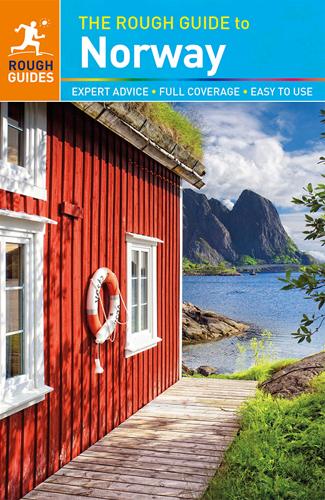
The Rough Guide to Norway
by
Phil Lee
Published 25 Nov 2013
Heyerdahl’s account of the Kon-Tiki expedition aroused huge interest when it was first published, and it remains a ripping yarn – though surprisingly few people care to read it today. Heyerdahl’s further exploits are related in The Ra Expeditions and The Tigris Expedition as is his long research trip to Easter Island in Aku-Aku: The Secret of Easter Island. Roland Huntford Scott and Amundsen: The Last Place on Earth. There are dozens of books on the polar explorers Scott, Amundsen and Nansen, but this is one of the more recent, describing with flair and panache the race to the South Pole between Scott and Amundsen.
…
Heyerdahl went on to attempt several other voyages, sailing across the Atlantic in a papyrus boat, Ra II, in 1970, to prove that there could have been contact between Egypt and South America. Ra II is also displayed here and the exploit is recorded in another of Heyerdahl’s books, The Ra Expeditions. Preoccupied with transoceanic contact between prehistoric peoples, Heyerdahl organized two major archeological expeditions to Easter Island, one in 1955–56 and again in 1986–88. Heyerdahl was keen to demonstrate that there had been contact between the island and the mainland of South America and, although many still dispute his theory, it has now received a degree of acceptance. Perhaps more importantly, Heyerdahl undertook invaluable work in restoring the island’s giant statues – the Moai – and the museum gives the lowdown.
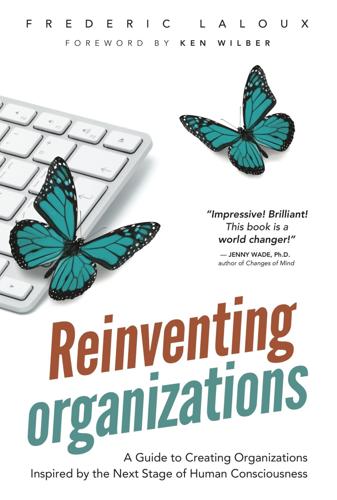
Reinventing Organizations: A Guide to Creating Organizations Inspired by the Next Stage of Human Consciousness
by
Frederic Laloux
and
Ken Wilber
Published 9 Feb 2014
In his book Collapse, Jared Diamond reviews cases of societies that broke down from environmental degradation they brought upon themselves. The Maya, a once-vibrant civilization of at least 3 million people in 900 AD had lost 99 percent of its population and dwindled to 30,000 people by 1524 when Cortez arrived. Easter Island changed from a well-populated and prosperous island society to being barren and uninhabitable. How could the Easter Islanders push deforestation so far as to rob themselves of a future, we wonder? But then again, after just a bit more than a century of modern living, 95 percent of the large fish are gone, along with 75 percent of the forests and about 50 percent of the oil.
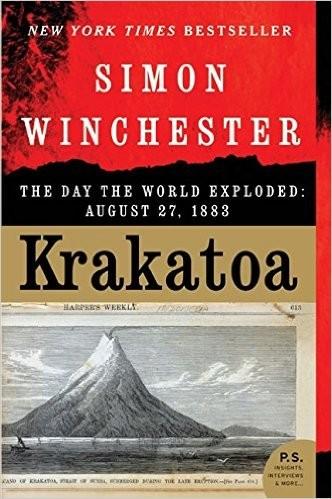
Krakatoa: The Day the World Exploded
by
Simon Winchester
Published 1 Jan 2003
.* This is where the heavy basaltic Nazca Plate collides with the lighter granitic-and-sedimentary-rock South American Plate. (It does so simply because it is at the same time splitting itself away from its neighbour, the Pacific Plate, along what is called the East Pacific Rise – close to where the Isla de Pascua, Easter Island, is hoisted above the ocean surface.) The subduction factory that results is a classic of its kind, creating dozens of volcanoes running from the Andean peaks of Ruiz and Galeras in the north, in Colombia, via Chacana, Cotopaxi and Sangay in Ecuador, Huaynaputina† in Peru, Lascar in Chile, Llaima and Villarica on the frontier between Argentina and Chile, and, at the southern tip of the continent, Monte Burney and Cerro Hudson, this last volcano erupting massively in 1991.
…
Thomas (American brig) 157 Arabia 14, 40, 74, 331, 333, 339 Arabian Sea 190, 191 Arabism 331 Arabs 22, 40, 144, 325, 331, 332 Archer (Australian passenger steamship) 157 Arctic 24, 79, 80, 85 Arctic Circle 80 Aristotle 371 Arles, France 40 art 282–5 arthropods 369 Ascroft, William 284–5, 290, 291 Asia 13n, 21, 42, 68, 74, 112, 116, 271 Asia Plate 317, 320 Asians, Portuguese-speaking (Mardijkers) 44 asthenosphere 109 Athens 34 Atlantic Monthly 220n Atlantic Ocean 14, 19, 59, 67, 87, 97n, 105, 107, 196 Atlantis 73 atmospheric pressure 268 Australia 55, 64, 65, 69, 74, 114, 115, 116, 189, 319 Australian Oceanic Plate 316–17, 320 Avallone, M. 394n Azores 306 Backer, Cornelis Andries 364–7 Bacon, Francis 72n Baird, Major A.W. 276 Baker, Diane 394 Bali, Balinese 17, 44, 55, 66, 69 manuscript style 127 bombings (2002) 343 Balkans 112 ballooning spiders 356–9, 357, 361–2 balloons 72 Baluchistan 190 Banda, sultan of 32 Banda Islands 23, 31, 33 Banda Sea 29 Bandung, Java 153, 376, 377, 379 Bangkok 264 Bangladesh 331 Banjoewangie, Java 189 Banka Island 148 Banks, Sir Joseph 120 Banquey Island, near Borneo 265 Bantam, Java 25, 126, 237 Bantam, king of 121 Bantam, Resident of 167 Banten, Java 201 a pepper port 15, 29, 322 skirmish with the fleet from Goa 18, 19 described 20–21 flood destruction of 1883 127 piety of the people 325 Islam established 332 the haj 333n signs of the Mahdi's imminent arrival 336–7 Banten, Java, sultan of 17, 31, 34, 35, 40 Banten Peasants' Revolt (1888) 331 importance of 323–4 Islamic-inspired and Islamic-led 340 attack on Sanedja 340–41 Dutch repeating rifles finish the rebellion 341 the hajis' victims 341–2 fades in popular memory 342 and Indonesian independence 342 a warning of future events 343 Bantenese 321, 332, 333, 335, 338 Barents Sea 24 Barnum & Bailey 243n barographs 267–70, 274, 275 barometers 267, 270 barometric pressures 293 basalt 84–8, 96, 102, 104, 112, 113, 297, 306, 308, 319 Batavi tribe 37 Batavia (Dutch steamship) 231 Batavia (previously Jayakarta, then Jakarta) 6, 28, 145, 172n so-named by the Dutch 36, 37 concentration of scientists in 36 Dutch proud of 37 Dutch compelled to leave (1949) 38 golden era 38 Dutch building 39–40, 41–2 the VOC 42, 47, 135, 139 employment in 42–3, 45 population 44, 144 Town Hall (Stadthuis; now Jakarta History Museum) 46–7, 142 Dutch life in 135–6 and war with Britain 139, 141 becomes a capital city 141 old Batavia closed down 141–3 new Batavia 141, 142, 143 communications 146–7, 196, 197, 225, 226, 237, 264n gasworks 147, 217–19, 218, 233, 248, 252 iceworks 147 's Jacob appointed governor-general 148–9 the circus visits 199–201, 201, 321 Plant and Animal Garden 201–2 clubs 202–4, 203 receives information from Anjer (August 1883) 215 air waves arrive in 233 four gigantic explosions 233–5 sounds not heard by everyone 266 tide-meter 277–8 change in temperature after the eruption 293 Batavia Standard Time 219, 248 Batavia Castle 51, 135, 142 day-register 49, 50 Batavia Cricket Club 205 Batavia Magnetic and Meteorological Observatory 154, 162, 216 Batavia Port Authority 157 Bates, Henry Walter: ‘On Coleopterous Insects Frequenting Damp Places' 58 bathymetric survey data 105 Batuwara, Mount 125, 126 Bay of Bengal 18n, 191 Bay of Biscay 192, 281 Bay of Naples (Welsh cargo vessel) 231, 299 Beale HMS 60 beetles 58, 60 Behaim, Martin 22 Belfast 220 Belgium, Kingdom of 29n Bengalen 49 bentonite 297 Berbice (German paraffin-carrier) 223 Berdichew, Poland 190 Berkowitz, Rickey 379 Berlin 190 Berouw (paddle-steamer) 230, 231, 251, 255–8, 256, 259 Beyerinck, Mrs 165, 166, 226–9, 251 Beyerinck, Willem, controller of Ketimbang 156, 165, 166–7, 176, 226–30, 245, 246, 247, 251 Billiton Island 148 Billiton Tin Company 148 Bintaing (hopper) 157, 245 biogeography 54, 73 biology 54, 69, 369, 372 biosphere 302 biota 54 birds geographical distribution 54–6, 64 Wallace's collection 60 repopulation of Krakatoa Island 360 sent to Europe 155 on Anak Krakatoa 370–71 Bird's Head, New Guinea 309 Bishop, Reverend Sereno 285n, 290 ‘Bishop's Rings’ 285, 289 Black Sea coast 190 Blaeu, John 25 Blair, Lawrence 395 Blair, Lorne 395 Blavatsky, Helena 53n Blosseville Coast 80 Blundell D.F. 52 Bogor, Java 142n Bogota, Colombia 273 Boing (a guide) 380, 386–9 Bombay 90, 191, 270, 276 Bonaparte, Louis, King of Holland 141 Bonney, Thomas 273n Borjild (Norwegian barque) 230–31 Borneo 22, 23, 66, 69, 132, 137, 188, 272 Borobudur temple, Java 123n, 142n Bo'sun's Rock (Bootsmans Rots) 346, 348, 383, 387 botany 54, 187, 354n, 364, 372 Bothwell Castle (ship) 299 Brani (ship) 285 Brazil 13n, 14, 71, 148, 224 Brazzi, Rossano 394 Brewer, W. 196, 197 Brewer's Dictionary of Phrase and Fable 199 Bristowe, William Syer 361, 368 Britain, British and Pulau Rann competition with the Dutch 29 official sanctioning of trading cooperatives 30 colonial intentions for Java and Sumatra 34 and the Portuguese 34 abandons siege of Ambon fort 35 Runcorn's rock magnetism studies 92 at war (1780s) 139, 141 presence on Rodriguez 261–2 on the Andamans 265 in India 326 imperialism 334 see also England British Army 35 British Empire (ship) 285 British Ornithologists' Club 53 British-Australian Telegraph Company 189 Brito, Don Lourenzo de 18 Bromo, Mount, Java 48, 155, 303 Brunhes, Jean 96 Brussels 195 Buddhism 123 Buenos Aires 289 Buffon, Comte de 72n Bugis 137, 138 Buijs, Thomas 211n Buitenzorg, Batavia 144, 146, 147, 150, 152, 201, 266 Botanical Gardens 148, 224, 364, 367 Bullard, Teddy (later Sir Edward) 90 Burma 34n, 44 butterflies 58, 60 Button Island 222 Byron, George Gordon, Lord: ‘Darkness’ 295–6 Cabele & Wireless 100 Cabral, Pedro Alvarez 13–14 Cailendra Dynasty 123, 134 Cailendra Seven 123 Cairo 116 Calais 187 Calapa 25 Calcutta 276, 280 Calicut 13 California 13n, 290, 295 California Institute of Technology (Caltech) 93 Calmeyer Island 314, 347n Calvinism 33 Cambodia 34n Cambridge University 105, 276 Cameron, Consul Alexander Patrick 152, 235–9, 236, 259, 260n, 272 Canada 290 Canary Islands 289 Cape Colony, southern Africa 34n Cape of Good Hope 14 19 30 Cape Mendocino, California 93 Cape Race 196 Cape Town, South Africa 281 Cape Verde Islands 13n caitalism 30 carbon 302 carbon dioxide 243, 301, 302, 317 carbon-14 isotope 134 Carcavelos, Portugal 191 Cargados Carajos 280 Caribbean Signal Service 287 Carita Java 373, 375, 379–80 Carita Beach Hotel 390 casowaries 116, 137n Caucasus 112 Cavendish, Sir Thomas 34 Cayman Brac 265 Celebes 23, 66, 69 Central America 133 Cerro Hudson volcano 308 Ceylon (later Sri Lanka) 11, 22, 264 Ceylon Observer 279 Chacana volcano, Ecuador 308 Chamberlin, Thomas 76 Champa Kingdom, Vietnam 128 Channel Four 133n, 395 Charles Bal (cargo-carrying barque) 220, 246, 299 Chaumont Bay, Lake Ontario 283–4 Chefoo (later Yantai), China 287 Chelsea, London 284, 290, 291 chemistry 305–6 chemolithoautotrophic hyperthermophilic archaebacteria 367n Cherbourg 282 Chile 13n, 289, 308, 309 China, Chinese 22 and spices 10 rule of Macau 19 mapping 23, 24 coolies 42, 213, 228 merchants 42 Coen and 42–3 Batava population 44, 144, 215 and tectonic plates 111 and possible eruption of AD 535 131 records of sea captains 131–2 anti-Chinese riots (1998) 138 and the 1883 eruption 215, 246–7, 250 China Overseas Shipping Company (COSCO) 381 Christianity, Christians and the 1883 eruption 163 and Muslims 32 Protestant 44 Christie, Mr (in Ceylon) 264 Christmas Island 89, 114 Church, Frederic Edwin 283–4 Niagara 283 Sunset over the Ice on Chaumont Bay, Lake Ontario 284 Twilight in the Wilderness 283 Ciliwung River 34, 38, 39 cinnamon 18, 31, 330 Ciparis (Sylbaris), Louis-Auguste 243n Claw, Iceland 82 Cloos, Hans 75–6 cloves (Syzygium aromaticum) 10, 11, 18, 29, 31, 65, 297n, 330 Cochin 11 cochineal 330 cockatoos 55, 65, 65, 66, 68, 137n cock's tail' jets 352 Cocos (Keeling) Island 114, 190n Coen, Jan Pieterszoon 33, 142 appearance 32 personality 33, 35 founder of the Dutch East Indies 33–4, 36 governor-general of the East Indies 33, 34 decides to eject the British 34 and the Chinese 42–3 coffee 10, 141, 148, 182, 188, 238–9 Cold War 106–7, 266, 275 Coleoptera 58 College of Delft 156n Collocalia 21 Cologne Cathedral 297 Colombia 308, 309 Colombo 288 Columbia University 107 Compagnie van Verre 15 Concordia Military Club, Batavia 147, 153, 172, 202, 203–4, 203 Conrad (Dutch mailboat) 157, 167–8 Conrad, Joseph: Lord Jim 12–13 conservative plate boundary 113 Constantinople 10 continental drift 171 Wegener's theory 71–8 in basalts of east Greenland 87 and convection 90, 91, 97–8 and earth's magnetism 92, 97 dating of 97 and plate tectonics 91, 101, 315 reacceptance of 101, 102 Wilson's conclusions 104–5 Jeffreys opposes the concept 304n continental plate collision 112–13, 307 continental shrinking 73 continental tectonic material 112, 113, 114 controllers 156 convection 90, 91, 97–8, 109, 302 Cook, Captain James 119–20, 121, 122, 298, 354 Copenhagen 80, 82, 196 Cotopaxi volcano, Ecuador 308 Cotteau, Edmond 356, 358, 360 ‘ country trading' 31–2 Court Javanese language 124n, 127 Creole language 261 Cressonnier, Louis 208, 209 Cretaceous Quiet Zone 96 Crete 244 Cribb, Robert: The Historical Atlas of Indonesia 28n cricket 153 Crimea 190 Cuba 265 Culemborg bastion, Sunda Kelapa 137 Curie, Pierre 92n Curie point 84, 92n currency 11, 14 cycad 365n da Gama, Vasco 13 Daendels, Herman Willem 141–2, 143 Daily Eagle 291–2 Dalby, R.J. 175 Daly Waters, south of Darwin 264 Damavand, Mount 112 Dammerman, Karel 367, 369 Danan cone, Krakatoa xv, 121, 158n, 318, 347 erupts (August, 1883) 176, 177 disappearance of 313, 346 Danes 196 Dark Ages 133 Darwin, Charles 61, 276 pioneers evolution science 57, 62, 63 natural selection theory 59 Wallace influences 60–61, 62 Wallace's loyalty to 63 On the Origin of Species 58, 62 Darwin, Sir George 276, 305n Darwinism 63 Day, Arthur Louis 304–5 Dayaks 265 de Vries, Mr (a pilot) 214–15 decibel-meters 266 declinometer 162–3 deer 65, 66, 146 Dekker, Eduard Douwes (‘Multatuli’) 328, 330 Max Havelaar 328, 329, 330 Delft Technical University 88 Demak, Java 332 Denmark 290 Denmark Strait 80 Descartes, Rene 305 Deventer, central Holland 337 Devonport 282 Dewey, John 105, 106 Diamond Head, Oahu 102 Dickinson, William 107n Diego Garcia 53, 263–4 Disappearing Island 102 Discovery, HMS 121 Djaman, Umar 324 Dover 187, 282 Dowd, Charles 219n Down House, Downe, Kent 62, 64 Drake, Sir Francis 34 duck-billed platypus 65 Dumas (a clerk in Sanedja) 340 Dumas, Mrs 340, 341 Durant, Will 301 Durban, South Africa 281n dust particles 285–6 Dutch builds Anjer lighthouse 3, 258–9 spice trade 12, 14–16, 23, 141 Portuguese driven out 15, 19, 29 first expedition to Java 15–18 first treaty with Java 16 relations with the local population 16, 17, 32, 323 Dutch fleets start to go East 19–20, 29 cartographers 21, 23, 27 outposts run from the Javanese HQ 34n and Indonesian independence 38, 342, 380n building of Batavia 39–40 and slavery 42 Batavia population 44 Treaty of Paris 139, 141 guerrilla war in Aceh 147 response to impending eruption (1883) 164 dual administrative rule 253n relief operations after the 1883 eruption 321, 323 momentary faltering in the region 327–8 impact of Max Havelaar 328 Kultuurstelsel (Cultivation System) 328–9, 333 Ethical Policy 330 reforms after the Peasants' Revolt 342 Dutch Cemetery, Madaascar 16 Dutch Colonial Police 339 Dutch East Indies (later Indonesia) Coen founds 36 slavery abolished 44 Wallace's fascination with 59 Dutch government takes charge (1799) 141 and submarine telegraph cables 189 Dutch-Javanese relations 212 revolts and restlessness in 326 Kultuurstelsel 328–9 Ethical Policy 330 Dutch East Indies Post and Telegraph Office 186 Dwars-in-den-weg/Thwart-the-Way Island 237–8, 260 earth gravitational field 88–91, 301 magnetism 91, 95 hotspot 103 siting 301 size of 301 heat and thermal decay within 302 earthquakes 112–13, 154, 162, 207, 208, 242n, 243, 246, 268, 318 East Africa: rift valleys 306 East Anglia 190 East India Company 47 East Indies 2, 29, 31, 32, 54, 59, 139, 325, 326 East Pacific Rise 308 Easter Island 308 Eastern Telegraph Company 189, 193, 197 ecological interdependence 271 Ecuador 308 Edinburgh (cable-laying ship) 189 Ega, Brazil 58 Egeron (ship) 170, 171 elephants 116, 307n Elisabeth (German warship) 157–60, 183, 213 Emden (German surface raider) 190n Emden, Germany 190 England 290 spice trade 12, 14 see also Britain English Channel 276, 282 Enkhuizen 20 Equatorial Smoke Stream 290 Eskimos 82 ethogeological prediction 207 Etna, Mount 112, 303, 393 Eugenia caryophyllata 10n Eurasian Plate 112, 116 Eurasians 144 Europe, Europeans 74 invasion by barbarians 133 drowned in the eruption of 1883 238, 252 temperature 295–6 expulsion from the region (1949) 325 Evelina (ship) 280 evolution science 57 62, 63, 64 Ewing, Maurice 90 Faeroes 87 Faircloth, Captain 287–8 Falkland Islands 111 Falmouth weather observatory 270 Far East 24, 26 Ferzenaar, Captain H.J.G. 176–8, 177, 207 Fiado (British steamship) 202 Fielder, Mr (in Ceylon) 264 Fingal's Cave, Staffa 84 First Point, Java 155, 161n, 185, 220, 299 Fiske, Richrd S. 396 Flat Corner, Java 170 Flint, Dr Earl 287 Flores 19, 29 Foley (on Cayman Brac) 265–6 Folkestone Harbour 191 Forbes H.O. 175 Forbes (tea-planter) 168 Formosa 34n Fort Speelwijk, Java 20, 21 Fourth Pacific Science Congress (Batavia, 1928) 350–51 Fourth Point lighthouse, Anjer 221, 234, 238, 258–9, 260, 321 France, French 197 makes peace with Britain 139n sugar plantations 261 imperalism 334 Franklin, Benjamin 294 Freuchen, Peter 79 Friesland 29n, 44 Fujian province 42 Fukoto Kuokanaba 384n fumaroles 176–7 Furneaux, Rupert: Krakatoa 316n, 396 gabbros 297 Galapagos 60 Galeras volcano, Colombia 308 Galileo Galilei 77–8 Galle, Ceylon 31, 279 Galton, Sir Francis 63 gamelan orchestras 124, 227 Gede volcano (Kamula), Java 126 Geikie, Archibald 273n Genesis, Book of 69 geography 54, 187 Geological Society of London 304,315 Geological Survey of Indonesia 375 geology unpredictable nature in the East 36 Wallace and 66–8 and religion 69 Georia 190 Gérard, Max 344 German Imperial Navy 159 Far Eastern Station 157 Germany 197, 295 Giant's Causeway, County Antrim 84 Gibbon, Edward 10 Gibraltar 191, 325 glaciers 244 Gladstone, William Ewart 236 Glasgow weather observatory 270 Global Positioning System 319 global village, birth of 6–7, 184–5, 198 lobal warming 271 Glodok, Jakarta 138 Goa 16, 18, 19, 25, 29 Gogh, Vincent van 40, 329 Gondwanaland 72n, 73–6, 74, 90 Gouverneur-Generaal Loudon (excursion vessel) 172–4, 213–14, 216, 219, 228, 234, 245–6, 251, 256, 257, 299, 337 Graaff-Reinet, South Africa 287 Granville, Earl 236, 236 graptolitic shales 73 gravimeters 89, 101 gravity 88–90 Great Chain of Being 371–2 Great Northern Telegraph Company 196 Great Plague 133 Great White, The 83 Greeks 303, 304 greenhouse gases 271 Greenland 74, 81 Wegener in 72, 76–7 Oxford University expedition 79–86, 91 volcanic 83 basalts 83–8 proof of continental drift 87–8 acid snows 133 ice-cores 308n Greenlandic language 81 Greenwich Mean Time 275 Greenwich Observatory 270, 275, 282 Gresik, east Java 332 Grytviken whaling station 281 Gubbels, Dora 341 Gubbels, Elly 341 Gubbels, Johan Hendrik 341 Guild of Pepperers 12 Gulf of Mexico 289 gutta-percha 187, 189 Haag (Dutch barque) 157 Hades 303 Hadhramaut Yemen 339, 342 haj 332, 333 Halifax, Nova Scotia 196 Hall, R. and Blundell, D.J.: Tectonic Evolution of Southeast Asia 52 Halmahera 61 Hambantota, Ceylon 279 Hamburg, Mr (ship passenger) 174 Hammersley Range, western Australia 264 Handl, Johann 360–61 Handl's Bay, Krakatoa Island 356 Hapsburgs 29n Harmonie club, Batavia 147, 153, 172, 202–3 Hastings-on-Hudson, New York 274 Hatfield, Oscar 152, 234 Haughton, Mr (in Ceylon) 287 Hawaii Island (Big Island) 102, 103, 104 Hawaiian Islands 102–5, 121, 306, 354n Heims, Father 159–60 Helen (a square-rigger) 59 Her Majesty K II submarine 89 Her Majesty K XIII submarine 89 Hermak, Baluchistan 190 Hess, Professor Harry 90, 91, 92, 97–100 ‘ History of Ocean Basins’ 98n Hesse, Elias 49–50, 135 Hevea brasiliensis (Brazilian rubber) 224, 225 Hibernia (converted cargo ship) 189 High Court, London 263n Himalayan Mountains 74, 112 Hinduism 128, 332 Holland 29n, 44 see also Dutch; Netherlands Hollandsche Thuyn (long-rangepacket) 48 Hollmann, Captain 158–9 Hollwood 113, 393, 394 Holtan community 132 Holtum, John (‘Cannonball King’) 205–6 Holy War (perang sabil) 336, 337, 340, 342 Homo erectus 116 Hondius, Henricus 25 Hong Kong 220, 278 Honolulu 289 Hooghly River 276 Hooker, Sir Joseph 62, 63 Hoorn, Zuider Zee 20, 33 Hope (a barque) 175 Hopkins, Gerard Manley 288 Hôtel des Indes, Batavia 206, 207, 208–9 hotspots 103, 104, 347n House of Orange 151 Houtman, Cornelis de 15–18 Houtman, Frederik de 15 Huaynaputina volcano, Peru 308 Hudson, USA 283 Hudson River School 283 Hudson's Bay Company 30 human sacrifice 303 humongous explosion 309, 312 Hurgronje, Snouck 41, 333–4 Hutton, James 69 Huxley, Sir Thomas 63 hydrochloric acid 243 ice cores 129, 131, 133, 296, 308n Iceland 82, 96, 306 Illustrated London News 155n Imperial Beacons & Coastal Lighting Service 170 India 11, 13, 22, 24, 40, 44, 55, 74, 112, 144, 191, 197, 276, 280, 325, 326, 331, 332 India Rubber, Gutta Percha & Telegraph Works Company 187–8, 197 Indian Mutiny 326n Indian Ocean 2, 21, 53, 114, 161n, 182, 182, 231, 261, 264, 278, 280, 285 indigo 330 Indo-Australian Plate 111, 115, 116 Indonesia (formerly Dutch East Indies) xiv, 63, 68, 116, 137, 145–6, 308, 309, 325, 331 independence 38, 342 International Date Line 112, 219n International Meridian Conference (Washington, DC, 1884) 219n Io 302 Iran 112, 331 Ireland 188, 196, 264 Irian 55, 61 iron oxide compounds 84, 85 Isla de Pascua 308 Islam Sumatra and Java Islamicized 17 rigid formalisms 32 local form of 40–41, 332–3 orthodox 40, 41 birth of 133 and the 1883 eruption 321 becomes entwined with local political developments 325 power of 325 upsurge in Islamic zealotry in the East Indies 325 stand against colonialism 327 number of Muslims in Indonesia 331 an imperial religion 331 collision with the West 331 first comes to the East Indies 331–2 the haj 332, 333 threatened by Western imperialism 334 fundamentalism 339 Isonandra gutta 187 Istanbul 378 Italy 22, 242 I wo Jima 384n ‘s Jacob, Governor-General Frederik 148–9, 149, 150–53, 169, 172, 201, 215 ‘s Jacob, Leonie 151 Jakarta History Museum, Java 46n Jakarta (previously Jayakarta and Batavia) 2, 21, 38, 126, 137, 373, 379 Jakarta Radio 9 James I, King 12 Jammersley Range, New Guinea 264 Japan 34n, 42, 44, 196, 244, 308, 309 Java 1, 2, 6, 7, 66, 78, 242 coffee 10, 141 spice-trading 10, 11, 31 first treaty with the Dutch 16 colonization 16 Islamicized 17, 40 mapping 22, 24 British colonial intentions 34 described 40–41 and slavery 44 volcanic 83 and the Java Trench 89 volcanically unstable 114–15 splits from Sumatra 126, 155 anti-Chinese riots 91998) 138 earthquakes 154 response to impending eruption (1883) 164 and gutta-percha 188 explosion sounds not heard by all 266 number of active volcanoes 309, 326 attacks by white-robed figure 323–4, 325, 337 First Military Region 324 Islam 325, 342 mysticism 327 Java Bode 162, 255 Java Head 155, 161n, 182, 220, 231, 379n Java Major 25, 25, 26 Java Man 116 Java Minor 22 Java Pars. 27 Java Sea 45, 172 Java Trench 89, 111, 114 Javasche Courant 153 Jayabaya 128 Jayakarta (later Batavia, then Jakarta) 34, 38 Jeffreys, Sir Harold 76, 304 jetstream 290 Jogjakarta, Java 2, 153 joint-stock companies 30 jökulhlaups 244 Judd, John 315–16 Volcanoes 315 Julius II, Pope 13n Jupiter 302 Jurassic period 96 Kaimeni 347 Kamchatka Peninsula 309 Kamula volcano, Java (Gede) 126 kangaroos 65, 65, 116, 137n ‘Kapi, Mount’ (in Ranggawarsita's history) 125, 126, 129 Karachi 190, 280 Karim, Haji Abdul 334–5, 337, 338, 339, 341 Kartodirdjo, Sartono: The Peasants' Revolt of Bantenin 1888 322 Katmai, Mount, Alaska 5 Kauai Island 102–3, 104 Kaula 102 Kavachi 384n Kedirie (ship) 299, 313 Keith, Brian 394 Kennedy, Henry George 235, 272 Kerala 44 Kerm-an, Teheran 190 Kertsch, Crimea 190 Ketimbang, Sumatra 156, 164–5, 167, 226–30, 233, 245, 251, 259 Kew weather observatory, Surrey 270 Keys, David: Catastrophe 132, 133, 134,395–6 Kilauea: Halemaumau Crater, Hawaii 1093 Kinematics, Inc. 376, 378, 386 King of the Netherlands, The (steam-yacht) 323 Kiribati, Republic of 100 kites 72 Kittery Island 102 Knossos, Crete 244 Koeripan River 256, 257, 258 Kokkulai, Ceylon 287 Kosrae Island, Pacific Micronesia 298 Kowalski, Bernard 394 Krakatoa archipelago 379 Krakatoa Committee, Royal Society 272–3, 275, 276, 286–7 Krakatoa, East of Java (film) 2, 394–5 Krakatoa Iron & Steel Works 340n Krakatoa Island present remains of 1–2 van Linschoten describes 25–6 first mentioned by its current name 27 derivation of the name 27–8 cultivation 120–21 lush coastal jungle 122, 354–5 Schuurmann describes 173 Ferzenaar visits (August 1883) 176–8 disappearance of 178, 237, 239, 240, 260, 300, 337, 338 surrounded by small faults and zones of weakness 320 purity after the 1883 eruption 355–6 repopulation of 356–66, 372 Krakatoa Islands xv Krakatoa Problem 364, 366 Krakatoa Time 219, 248, 275 Krakatoa Volcanic Observatory 375, 376, 389 Krakatoa volcano (general refernces) see also Danan cone; Perboewatan cone; Rakata cone and the Wallace Line 57, 64 notoriety 68, 116, 286, 393 number of eruptions 117–18 ruins compared with Anak Krakatoa 353, 354 Krakatoa volcano ( possible eruption of AD 416) 123–9, 133 Krakatoa volcano (the confusions of AD 416 or AD 535) 129–31 Krakatoa volcano (the likely eruption of AD 535) 123, 131–4 Krakatoa volcano (the near-certain eruption of 1680) 123, 134–9 Batavians and seamen unaware of potential danger 45–6 first recorded eruption 46, 47 Vogel's report 48–9 Hesse's report 49–50 Schley's painting 138–9, 140 Krakatoa volcano (before the certain eruption of 1883) 139–49 Krakatoa volcano (eruption of 27 August 1883) 4–5, 28, 123, 134, 209 the event 210–39, 240 the effects 241–61 the experiences 261–321 death statistics 5, 313 telegraphy 5, 7, 28n, 146, 167,184–7, 192–4, 215 undersea cables 5, 6, 184, 187, 189 lack of geological knowledge at the time 5–6 religious fears 6 and birth of global village 6–7 impact on climate 7 a Plinian eruption 12 and subduction zones 111 Banten flood destruction 127 warnings of forthcoming eruption 154–63 Perboewatan erupts 167–9, 175, 176, 180, 184–5, 193–4 excursions to visit 172–4 Danan erupts 176, 177 statistics of deaths and injuries 242 the sound of 262–8 progress of the shock waves 273–5, 313 art and 282–5 and temperature 293–6 floating bodies 296–300 existed above a large chamber of magma 318–19 burial of the dead 321, 322 rebuilding after 321, 323 political and religious consequence 321, 342–3 reluctance to settle near the volcano 379 Kramat 260 Kultuurstelsel (Cultivation System) 328–9, 333 Kurile Islands 309 Kurrachee 276 Kyoto 297 Labuan, Java 337 lahars (volcanic mud and water slurry) 243 Lakagígar (Hekla), Iceland 294 Lamongan 155 Lampong Bay 166, 216, 219, 228, 234, 247, 249, 250, 251 Lancaster, James 34 Lang Island, Krakatoa (previously Panjang, now Rakata Kecil) xv, 118n, 158n, 314, 318, 354 Laos 34n Lascar volcano, Chile 308 Laurasia 73, 74, 75 lava flows 369 Laysan Island 102 Le Havre 282 Leicestershire 57, 58 Lemuria 53n Liciala spinosa 355 Lincoln, President Abraham 196, 219n Lindeman, Captain T.H. 173, 174, 216, 219, 230 Linnean Society, Burlington House, Piccadilly, London 52–3, 54, 62, 64, 65 Linschoten, Jan Huyghen van 23–6, 26 Itinerario 24, 25 Lippincott Gazetteer 190n Lisbon 14, 15, 191 Lisianski Island 102 lithosphere 109–10, 302 Llaima volcano 308 Lloyd's of London 161, 168, 180–83, 186, 193, 232, 261 Committee 182, 197 Foreign Intelligence Office 193 Lochart, Nanette 208, 209 Locomotive 151 Lodewijcksz, Willem 25, 26 Logan, Captain William 223–4 Lombok Island 61, 66, 69 Lomu, Jonah 384n London 19, 179–80, 189, 190, 191, 196, 197, 270, 284 London Station 193 Londonderry 196 long waves 278, 279–80 Los Angeles 200 Luzon 24 Lyell, Sir Charles 62, 63, 69 Macassar, Celebes, Macasserese 31, 44, 265, 326 Macau 19 McColl, Mr (Lloyd's agent) 181, 259–60 mace (aril) 11, 18 MacKenzie, Captain 157, 161 McLuhan, Marshall 184, 198 Madagascar 16, 53 Madras 190, 191, 280 Madura 17 Magellan, Ferdinand 23 Magellan Strait 19 magma 84, 103, 104, 305, 315, 316,318–20 magnetic airborne detector (MAD) 93n magnetism and basalts 84, 85 moon's surface 100 remanent 91–2, 96, 97, 102 underwater 93–5 magnetite 84–5, 85, 92n magnetometers 93–6, 97, 101, 107 Magpie, HMS 265, 272 Mahdi 322, 335, 336, 337, 342 Malabar Coast 11 Malacca 11, 18, 22, 29, 34, 44 Malaku 61 see also Moluccas Malay Archipelago 59, 60, 190 Australian (eastern) end of 55, 64, 65 Indian (western) end of 55, 64, 65 Wallace's preferred term 59 Malay language 59 Malaya peninsula 22, 24, 29, 31, 40, 53, 190, 326, 331 Maldives 23 Malta 191 Manchester Literary and Philosophical Society 294 Manchus 157n Manhattan, New York City 295 Manila 196, 264 Manley, Reverend W.R. 288 maps 21–7, 26, 155 Mardijkers 44 Marie (Danish salt-carrying barque) 219–20, 230, 234, 246 Mars 302 Mason, Ron 93–5 Massachusetts Bay Company 30 Mataram sultan of 40 Matuyama, Motonari 96 Maui Island 103 Mauk 260 Maurice of Nassau, Prince 16n Mauritius 16n, 34n, 261, 263n, 270 Maan civilization 133 Mayon, Mount 266 Mecca 332–5, 336, 337, 342 Mecca's Plain of Arafat 333n Medea (British ship) 216, 231 Mediterranean 14, 23, 191 Mediterranean region 133 Mekong 24 Melbourne 270 Merak, Java 160, 222, 225, 238, 246, 249n, 250, 252–3, 259, 260, 337 Merapi, Mount 48, 155 Merbapu, Mount 48, 155 Mercator, Gerardus 71 Merchant Adventurers 30 Merchant Staplers 30 Meteorological Council 270 meteorology 70, 76, 275, 290.
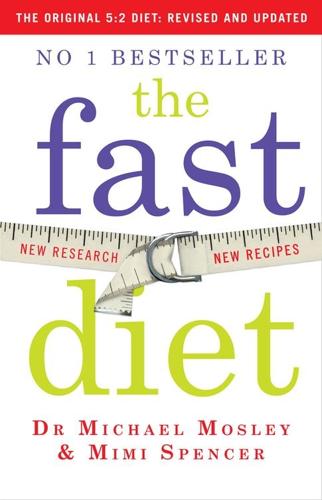
The Fast Diet: Revised and Updated: Lose Weight, Stay Healthy, Live Longer
by
Mimi Spencer
Published 18 Dec 2014
This in turn, as we’ve seen, seems to protect the brain against the ravages of ageing. The hope is that Byetta or a related drug will, if not prevent dementia, at least significantly slow its progression. Another interesting candidate is the drug rapamycin, first isolated from bacteria found in the soil of Easter Island. Rapamycin, like fasting, acts on something called the mTor pathway, which regulates protein synthesis and cell growth. It is implicated in a range of common diseases, including diabetes, obesity, depression and some cancers. Pharmaceutical companies are currently creating and testing modified versions of rapamycin.
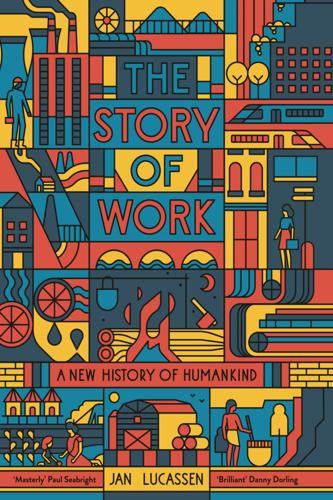
The Story of Work: A New History of Humankind
by
Jan Lucassen
Published 26 Jul 2021
A great leap of 800 kilometres, from Vanuatu to Fiji, took place between 1050 and 950 BCE; a century later, it was the turn of Samoa and Tonga. A discovery interval of some two thousand years then ensued, during which the simpler sailing canoe with outrigger was perfected and turned into the large ocean-going double-hulled sailing canoe. This eventually led to the colonization of New Zealand, Hawaii and Easter Island around 1200 CE. Long before, in the first half of the third millennium BCE, there was already an intensive merchant shipping trade (particularly of cedarwood from Lebanon) between Byblos and Egypt.10 Thus, we can add the seafarer to our still concise list of early professions that includes hunter-gatherer-fisher, arable farmer and livestock breeder (and all combinations thereof).
…
Hawaii was finally reached in 800 CE and New Zealand between 1250 and 1300. Some even ‘commuted’ between Polynesia and South America, centuries before the ‘great’ European voyages of discovery. This is demonstrated by the spread of the sweet potato and possibly also of the bottle gourd from America to Hawaii, Easter Island and New Zealand. (The debate about possible Polynesian contributions to American cultures is ongoing.1) This required crossing thousands of kilometres of water and therefore sophisticated watercraft (outrigger sailing canoes) and exceptional navigational abilities. From the very first discoveries, regular contacts now became possible between these widely divergent islands.
…
(i), (ii), (iii)n178, (iv)n84 New Caledonia (i) Newcomen, Thomas (i) New Guinea (i), (ii), (iii), (iv), (v), (vi)n65 Ain cult (i) Boven-Digoel (i)n65 Enga people (i) Kepele cult (i) New Zealand (i), (ii), (iii), (iv), (v), (vi) Nicholas V (i) Nigeria (i), (ii) Biafra (i) Hausa people (i)n81 Jos Plateau (i) Kano (i) Kofyar people (i) Sokoto Caliphate (i), (ii) Nubia (i) Oastler, Richard (i) occupations (i), (ii), (iii), (iv), (v), (vi), (vii), (viii), (ix), (x), (xi), (xii), (xiii), (xiv), (xv), (xvi), (xvii), (xviii), (xix), (xx), (xxi), (xxii), (xxiii), (xxiv), (xxv)n57, (xxvi)n42 artisan/craft (i), (ii), (iii), (iv), (v), (vi), (vii), (viii), (ix), (x), (xi), (xii), (xiii), (xiv), (xv), (xvi), (xvii), (xviii), (xix), (xx), (xxi), (xxii), (xxiii), (xxiv), (xxv), (xxvi), (xxvii), (xxviii), (xxix), (xxx), (xxxi), (xxxii), (xxxiii), (xxxiv), (xxxv), (xxxvi), (xxxvii), (xxxviii), (xxxix), (xl), (xli), (xlii), (xliii), (xliv), (xlv), (xlvi), (xlvii), (xlviii), (xlix), (l), (li), (lii), (liii), (liv), (lv), (lvi), (lvii), (lviii), (lix), (lx), (lxi), (lxii)n67, (lxiii)n49, (lxiv)n88, (lxv)n188, (lxvi)n80 artistic (i), (ii), (iii), (iv), (v), (vi), (vii), (viii), (ix), (x), (xi), (xii), (xiii) blue-collar/white-collar (i), (ii) brick and pottery making (i), (ii), (iii), (iv), (v), (vi), (vii), (viii), (ix), (x), (xi), (xii), (xiii), (xiv), (xv), (xvi), (xvii), (xviii), (xix), (xx), (xxi), (xxii), (xxiii), (xxiv), (xxv), (xxvi), (xxvii), (xxviii)n84, (xxix)n91 construction (i), (ii), (iii), (iv), (v), (vi), (vii), (viii), (ix), (x), (xi), (xii), (xiii), (xiv), (xv), (xvi), (xvii), (xviii), (xix), (xx), (xxi), (xxii), (xxiii), (xxiv), (xxv), (xxvi), (xxvii), (xxviii), (xxix), (xxx), (xxxi), (xxxii), (xxxiii), (xxxiv), (xxxv)n151 domestic service (i), (ii), (iii), (iv), (v), (vi), (vii), (viii), (ix), (x), (xi), (xii), (xiii), (xiv), (xv), (xvi), (xvii), (xviii), (xix), (xx), (xxi), (xxii)n105, (xxiii)n109 fishing (i), (ii), (iii), (iv), (v), (vi), (vii), (viii), (ix), (x), (xi), (xii)n61 intellectual (i), (ii), (iii), (iv), (v), (vi), (vii), (viii), (ix), (x), (xi), (xii)n26 maritime (i), (ii), (iii), (iv), (v), (vi), (vii), (viii), (ix), (x), (xi), (xii), (xiii), (xiv), (xv), (xvi), (xvii), (xviii), (xix), (xx), (xxi), (xxii), (xxiii), (xxiv), (xxv)n7, (xxvi)nn99&106, (xxvii)n37, (xxviii)n46 medical/corporal care (i), (ii), (iii), (iv), (v), (vi), (vii), (viii), (ix), (x), (xi), (xii), (xiii), (xiv), (xv), (xvi)n17 metal-working (i), (ii), (iii), (iv), (v), (vi), (vii), (viii), (ix), (x), (xi), (xii), (xiii), (xiv), (xv), (xvi), (xvii), (xviii), (xix), (xx), (xxi), (xxii), (xxiii), (xxiv), (xxv), (xxvi)n15 military (i), (ii), (iii), (iv), (v), (vi), (vii), (viii), (ix), (x), (xi), (xii), (xiii), (xiv), (xv), (xvi), (xvii), (xviii), (xix), (xx), (xxi), (xxii), (xxiii), (xxiv), (xxv), (xxvi), (xxvii), (xxviii), (xxix), (xxx), (xxxi), (xxxii), (xxxiii), (xxxiv), (xxxv), (xxxvi), (xxxvii), (xxxviii), (xxxix), (xl), (xli), (xlii), (xliii), (xliv), (xlv), (xlvi), (xlvii), (xlviii), (xlix)n33, (l)n249, (li)nn45&51 mining (i), (ii), (iii), (iv), (v), (vi), (vii), (viii), (ix), (x), (xi), (xii), (xiii), (xiv), (xv), (xvi), (xvii), (xviii), (xix), (xx), (xxi), (xxii), (xxiii), (xxiv)n254 sexual service (i), (ii), (iii), (iv), (v), (vi), (vii), (viii), (ix), (x), (xi), (xii), (xiii), (xiv), (xv), (xvi)n82, (xvii)nn105&116 shipbuilding (i), (ii), (iii), (iv), (v), (vi)n91 teaching (i), (ii), (iii), (iv), (v), (vi), (vii), (viii), (ix), (x), (xi), (xii), (xiii), (xiv), (xv), (xvi), (xvii), (xviii), (xix), (xx) textile (i), (ii), (iii), (iv), (v), (vi), (vii), (viii), (ix), (x), (xi), (xii), (xiii), (xiv), (xv), (xvi), (xvii), (xviii), (xix), (xx), (xxi), (xxii), (xxiii), (xxiv), (xxv), (xxvi), (xxvii), (xxviii), (xxix), (xxx), (xxxi), (xxxii), (xxxiii), (xxxiv), (xxxv), (xxxvi), (xxxvii), (xxxviii), (xxxix), (xl), (xli), (xlii), (xliii), (xliv), (xlv), (xlvi)n105, (xlvii)n22, (xlviii)nn61&72, (xlix)n131, (l)n2, (li)n96 trade (i), (ii), (iii), (iv), (v), (vi), (vii), (viii), (ix), (x), (xi), (xii), (xiii), (xiv), (xv), (xvi), (xvii), (xviii), (xix), (xx), (xxi), (xxii), (xxiii), (xxiv), (xxv), (xxvi)n45, (xxvii)n179 see also agriculture; hunting-gathering Oceania see Pacific, and separate countries Odysseus (i) Oluale Kossola (i), (ii) Ordzhonikidze, Sergo (i) Pacific/Oceania (i), (ii), (iii), (iv), (v), (vi), (vii), (viii), (ix), (x), (xi), (xii), (xiii), (xiv)n88 Austronesian languages (i) Bismarck Archipelago (i) Easter Island (i), (ii) Fiji (i) Hawaii (i), (ii), (iii), (iv), (v)n88 Kanaka people (i) Lapita culture (i) Polynesia (i), (ii) Samoa (i) Solomon Islands (i) Tonga (i) Vanuatu (i) Yap (i)n2 see also separate countries Paes, Domingo (i) Pakistan (i), (ii), (iii), (iv), (v) Harappa culture (i), (ii), (iii), (iv) Lahore (i) Mohenjo Daro culture (i), (ii) Multan (i) Rohri Hills (Sind) (i) Paleologo Zaccaria (i) Palestine (i) Pamirs (i) Panama (i)n185 Isthmus (i)n185 Portobelo (i)n185 Paraguay (i), (ii), (iii) Asunción (i) Peckham, Rufus Wheeler (i), (ii) Pericles (i) Peru (i), (ii), (iii), (iv), (v), (vi)n185 Chimu (i) Cuzco (i) La Paloma (i) Lake Titicaca (i) Lima (i) Peter the Great (i) Petriglieri, Gianpiero (i) Philippines (i), (ii), (iii), (iv), (v), (vi) Agta people (i) Luzon (i) Piketty, Thomas (i), (ii), (iii), (iv), (v)n109, (vi)n7 Plato (i), (ii) Plockhoy, Pieter Cornelisz (i) Po Chü-I (i), (ii) Polak, Barbara (i) Poland (i), (ii), (iii), (iv), (v), (vi) Auschwitz (i) Polanyi, Karl (i), (ii), (iii), (iv)n6, (v)n22, (vi)n49, (vii)n156, (viii)n1 Polo, Marco (i) Pol Pot (i), (ii), (iii) Pomeranz, Kenneth (i)n143 Pope, Alexander (i)n39 Portugal (i), (ii), (iii), (iv), (v), (vi), (vii), (viii), (ix), (x), (xi), (xii), (xiii), (xiv), (xv), (xvi), (xvii)n27, (xviii)n147 Algarve (i) Azores (i) Lisbon (i) Madeira (i), (ii) Poujade, Pierre (i) Prak, Maarten181 Price, T.
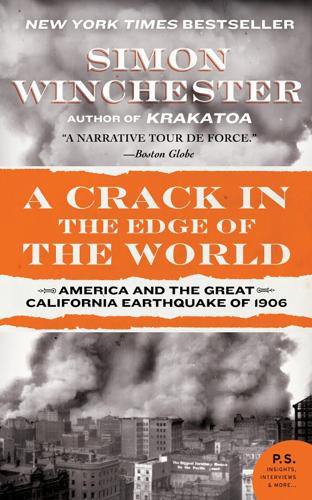
A Crack in the Edge of the World
by
Simon Winchester
Published 9 Oct 2006
Central Iceland is divided from central California by 6,000 miles – a distance that marks, at this place in the world, the width of the entirety of one of the greatest and most important geological entities of all. * The abutment of the bridge that stands closer to Parkfield is on the massive North American Plate; the abutment on the other end stands on the Pacific Plate, the equally massive and ever-moving part of the world that underlies such faraway places as Hawaii and Tonga, Pitcairn Island, Easter Island and the South Island of New Zealand. Another part of the world begins right here. And the line that divides the two plates, the place that geologists like to call the plate abutment, or the plate boundary, coincides with the visible surface manifestation of what is perhaps the best-known geological fault that can be seen anywhere.
…
It can be summarized, however, and in essence it appears that the mechanisms that gave rise to the fault can conveniently be said to have begun about 150 million years ago, out on the edges of a Pacific Ocean that was very much larger than it is today. A submarine chart of the ocean today shows a line of relatively shallow water that extends southwards for several thousand miles from a point close to the west coast of Mexico, and then proceeds via the Galapagos Islands and Easter Island and the Juan Fernandez Islands,* all the way down to the Antarctic. The island groups that lie along it are volcanoes, some active and some not; these, and the submarine ridge of which they are the visible peaks, are the manifestations (just as the Mid-Atlantic Ridge is a manifestation on the farther side of the world) of a part of the earth that is splitting open, where plates are moving away from one another, and where new material is being oozed out on to the planetary surface (in this case most of it invisibly, beneath the sea).

Connectography: Mapping the Future of Global Civilization
by
Parag Khanna
Published 18 Apr 2016
Map 38, corresponding to this chapter, appears in the map insert. But technological prowess and resource abundance should not lead to hubris. Anthropologists such as Jared Diamond have asserted that the Rapa Nui people of Easter Island committed ecological suicide through rapid deforestation (using trees to transport their massive stone statues known as moai) and the resulting soil erosion that made the island agriculturally unsustainable. The fate of Easter Island now serves as the classic warning of the consequences of disrespect for nature’s complexity. Are Asia’s skyscrapers the moai of the twenty-first century? While their towering architecture similarly exudes power over terrestrial dynamics, their geography betrays existential vulnerability.
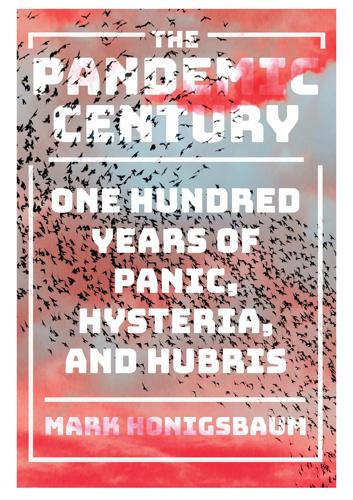
The Pandemic Century: One Hundred Years of Panic, Hysteria, and Hubris
by
Mark Honigsbaum
Published 8 Apr 2019
Fortunately, most of these cases resolved with time, but if the world needed another wake-up call that Zika deserved to be taken seriously, this was it. That is not what happened, however. Instead, as Zika continued its westerly spread across the Pacific, reaching New Caledonia in March 2014 and Rapa Nui (Easter Island), a territory of Chile, soon after, the world’s attention was seized by a far more visible emerging disease threat: the Ebola outbreak in West Africa. The result was that when at some point in 2014 Zika arrived in Brazil, no one noticed. BY APRIL 2015 Brito and Luz were becoming increasingly convinced that Zika was responsible for the spate of rashes and fevers in the northeast, but in order to convince the Pernambuco health authorities and Brazil’s Ministry of Health that these were not “dengue light” cases, they needed hard laboratory evidence.
…
This seemed plausible, particularly as one of the host cities had been Natal, until it was pointed out that no Pacific countries had sent teams to the competition. The next suggestion was that the virus may have been introduced during the Va’a World Sprint Championship held in Rio de Janeiro in August of the same year. This was more likely, as four Pacific countries (French Polynesia, New Caledonia, Cook Islands, and Easter Island) had sent canoe squads to the competition. However, this theory was undermined by a letter published in Nature in May 2017 in which an international team of scientists announced they had collected fifty-eight Zika virus isolates from Brazil and other countries in the Americas and sequenced their genomes.

Growth: From Microorganisms to Megacities
by
Vaclav Smil
Published 23 Sep 2019
Others yet ceased to exist because of political intrigues and military conquest or survived as greatly diminished and largely impotent entities only to be restored or resurrected as circumstances changed in their favor and as they embarked on yet another territorial or economic expansion. There is no shortage of examples of rapid societal demise, ranging from small islands to expansive empires. Rapa Nui (Easter Island) has presented perhaps the most persistent case of postgrowth mysteries. Why was a society that erected hundreds of moai, impressively sized stone sculptures, reduced to a small number of inhabitants? In a much-cited explanation, Diamond (2011) attributed this societal collapse to reckless deforestation of the island.
…
The History of the Industrial Gas Turbine (Part 1 The First Fifty Years 1940–1990). Bedford: Institution of Diesel and Gas Turbine Engineers. http://www.idgte.org/IDGTE%20Paper%20582%20History%20of%20The%20Industrial%20Gas%20Turbine%20Part%201%20v2%20%28revised%2014-Jan-11%29.pdf. Hunt, T. L. 2006. Rethinking the fall of Easter Island. American Scientist 94:412–419. Hunter, L. C., and L. Bryant. 1991. A History of Industrial Power in the United States, 1780–1930, vol. 3: The Transmission of Power. Cambridge, MA: MIT Press. Hurnik, F., et al. 1991. Recommended Code of Practice for the Care and Handling of Farm Animals: Beef Cattle.
…
Prost and G. Vincent, eds., A History of Private Life, vol. 5. Cambridge, MA: Belknap Press, pp. 1–103. Psenner, R., and B. Sattler. 1998. Life at the freezing point. Science 280:2073–2074. Puleston, C. O., et al. 2017. Rain, sun, soil, and sweat: A consideration of population limits on Rapa Nui (Easter Island) before European contact. Frontiers in Ecology and Evolution 5:69. doi: 10.3389/fevo.2017.00069. Quetelet, A. 1835. Sur l’homme et le développement de ses facultés, vol. 2. Paris: Bachelier. Quetelet, A. 1846. Lettres a S. A. R. le duc régnant de Saxe-Cobourg et Gotha: Sur la théorie des probabilités.
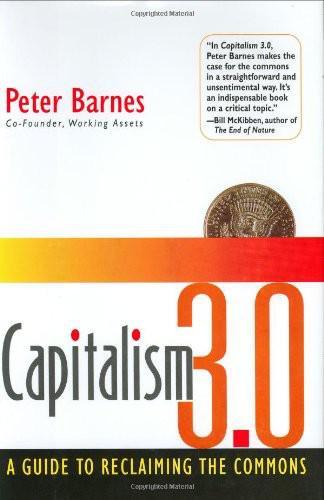
Capitalism 3.0: A Guide to Reclaiming the Commons
by
Peter Barnes
Published 29 Sep 2006
The difference is that, while the dinosaurs’ extinction was triggered by a freak event, the current extinctions are being caused by our everyday activities. And it’s not just other species we’re endangering. As anthropologists Jared Diamond and Ronald Wright recently reminded us, past human civilizations (Sumer, Rome, the Maya, Easter Island) did on a smaller scale what our own economic system seems bent on doing planet-wide: they destroyed their resource bases and crashed. The pattern is hauntingly familiar. First, the civilization finds a formula— agriculture, irrigation, fishing, capitalism—for extracting value from ecosystems.
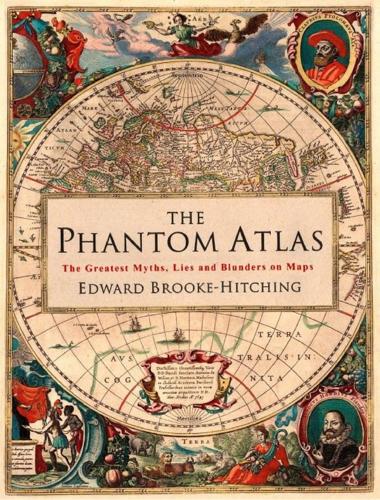
The Phantom Atlas: The Greatest Myths, Lies and Blunders on Maps
by
Edward Brooke-Hitching
Published 3 Nov 2016
Several ventures in search for Davis Land were also inspired by the accounts of Wafer and Dampier (see Pepys Island entry here for more on these two). The Dutch West India Company dispatched three ships to the area in 1721 under the command of Jacob Roggeween. Though unable to find the island, Roggeveen and his crew stumbled across a hitherto unknown land mass that did exist – Easter Island. It is thought that this was the land mass spotted by Davis and his crew, and because of some erroneous calculations they wrongly recorded their actual position. Nevertheless, towards the end of the eighteenth century, British and French ships were still searching in vain for Davis Land. * * * * The word ‘buccaneer’ originates from the cooking technique adopted from the Caribbean locals by the Europeans.
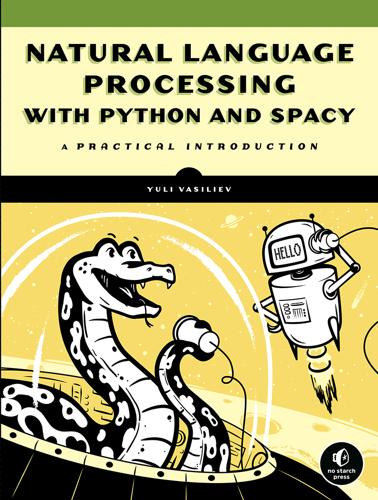
Natural Language Processing with Python and spaCy
by
Yuli Vasiliev
Published 2 Apr 2020
Appendix: Linguistic Primer Contains a brief guide to the grammar and syntax elements discussed most frequently in the book. Readers who don’t come from linguistic backgrounds can use it as a reference. 1 HOW NATURAL LANGUAGE PROCESSING WORKS In the 19th century, explorers discovered rongorongo, a system of mysterious glyphs on the island of Rapa Nui (commonly known as Easter Island). Researchers have never succeeded in decoding rongorongo inscriptions or even figuring out whether those inscriptions are writing or proto-writing (pictographic symbols that convey information but are language independent). Moreover, although we know that the creators of the glyphs also erected Moai, the large statues of human figures for which the island is most famous, the builders’ motivations remain unclear.
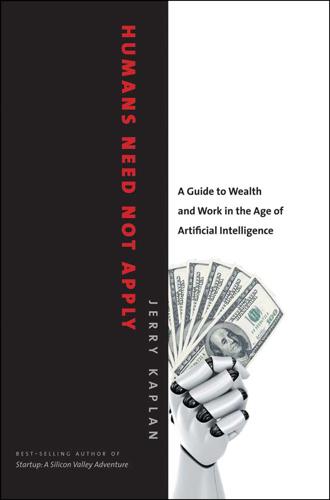
Humans Need Not Apply: A Guide to Wealth and Work in the Age of Artificial Intelligence
by
Jerry Kaplan
Published 3 Aug 2015
Shoppers aren’t stupid; they will go where they get the best all-around deal, including convenience, service, and other factors. They aren’t concerned with whether their short-term purchasing behavior may restructure the retailing landscape to the detriment of future consumers any more than the original residents of Easter Island worried about whether the trees they chopped down for firewood might contribute to a desolate, bleak landscape for their descendants. But when the river of prices starts to rise and the profits pour in, the familiar competitive reference points with which to judge the value received will have long been submerged or swept away.

Unfamiliar Fishes
by
Sarah Vowell
Published 22 Mar 2011
So when he first sailed into the harbor at Waimea, on Kauai, in 1778 he and his men could communicate on a rudimentary level with the Hawaiians because the language, one of the expedition’s surgeons wrote, was “much the same as that of [Tahiti].” This led to one of Cook’s most intriguing insights, the identification of what is now called the Polynesian Triangle, that immense stretch of ocean between New Zealand, Easter Island, and Hawaii—including Samoa, Tonga, and Tahiti—with related dialects and customs. For instance, the New Zealand natives call themselves Maori, while native Hawaiians’ name for themselves is Kanaka Maoli. “Same language, same people, same culture,” the Hawaiian activist Kekuni Blaisdell told me.

Me Talk Pretty One Day
by
David Sedaris
Published 4 Jun 2001
Inside the theater you’re warmly greeted by a hostess who examines your stub and tears it just enough to make her presence felt. Somewhere along the line someone decided that this activity is worthy of a tip, so you give the woman some change, though I’ve never known why. It’s a mystery, like those big heads on Easter Island or the popularity of the teeny-weeny knapsack. I’m so grateful such theaters still exist that I’d gladly tip the projectionist as well. Like the restaurants with only three tables, I wonder how some of these places manage to stay open. In America the theaters make most of their money at the concession stand, but here, at least in the smaller places, you’ll find nothing but an ice-cream machine tucked away between the bathroom and the fire exit.
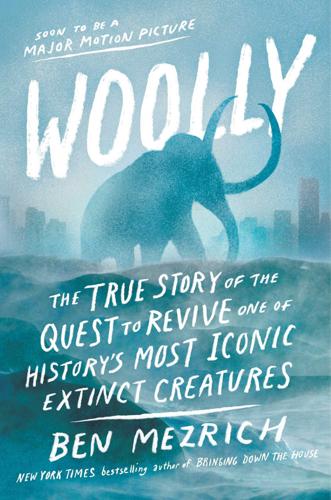
Woolly: The True Story of the Quest to Revive History's Most Iconic Extinct Creature
by
Ben Mezrich
Published 3 Jul 2017
Needing money, and wanting to do something in genetics and biology, he’d found a job at a start-up in Cambridge called Warp Drive. Warp Drive, one of the many companies that Church had cofounded, was focused on applying synthetic biology to organisms mined from nature for medicinal uses. The company scoured isolated places like the Amazon and the island of Rapa Nui (Easter Island), then used genetic engineering to turn natural bacteria and plants into medical treatments and cures. Quinn had found a place in the genetic engineering department, learning the ins and outs of molecular modification as he went. So even though he didn’t have the schooling of the other Revivalists at the table, he was far from a novice at genetic engineering.

Carbon: The Book of Life
by
Paul Hawken
Published 17 Mar 2025
GO TO NOTE REFERENCE IN TEXT it is sporting iridescent wings: Ben Guarino, “There’s a Huge and Hidden Migration in North America—of Dragonflies,” The Washington Post, December 21, 2018, washingtonpost.com/science/2018/12/21/theres-huge-hidden-migration-america-dragonflies. GO TO NOTE REFERENCE IN TEXT A remarkable example: Leland C. Wyman and Flora Bailey, Navaho Indian Ethnoentomology (Albuquerque: University of New Mexico Press, 1964), from Lynne Kelly, The Memory Code: The Secrets of Stonehenge, Easter Island and Other Ancient Monuments (New York: Pegasus, 2017), 303, Kindle; Ralph Bulmer, “Review: Untitled,” review of Navaho Indian Ethnoentomology by Leland C. Wyman and Flora L. Bailey, American Anthropologist 67, no. 6 (December 1965): 1564–66, jstor.org/stable/669185. GO TO NOTE REFERENCE IN TEXT edible butterflies being ignored: Henry Walter Bates, The Naturalist on the River Amazons: A Record of Adventures, Habits of Animals, Sketches of Brazilian and Indian Life, and Aspects of Nature under the Equator, during Eleven Years of Travel, 3rd ed.
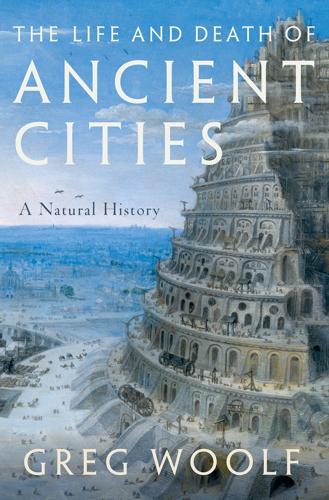
The Life and Death of Ancient Cities: A Natural History
by
Greg Woolf
Published 14 May 2020
Some of the most spectacular of prehistoric monuments were built by early farmers. The great megalithic tombs of Atlantic Europe, built in a range of styles from northern Spain to Brittany, Britain and Ireland, and southern Scandinavia belong to this period. Stone Age farmers also built Stonehenge and the other great earthworks of Wessex, raised the Moai on Easter Island, and created the mounds of the Mississippi. Some of these were temples, but many were burial sites that express the new long-sightedness of human societies, societies that now thought about a deep past and a far future as well as from one season to another. Was there some connection between a tacit understanding of generation following generation, the placing of the dead in the ground, and the annual replanting of seeds?
…
Most were spectacular not in scale, but compared to what had gone before and in the impact they had on their residents and especially on visitors. They were not the first spectacular monuments to be built by human beings. It was foragers who created the great megaliths of Göbekli Tepe, farmers who built Stonehenge, and gardeners who set up the Moai, the great stone heads of Rapa Nui on Easter Island. It is not always easy to distinguish traces of great ceremonial centres like these from the remains of ancient and nearly forgotten urban experiments. There are some major differences between the ceremonial centres of nonurban societies and those of cities. One is a matter of possession. Whoever organized the creation of great prehistoric megalithic projects—and someone must have done so, whether it was priests, chieftains, or charismatic individuals—they were built by entire peoples.
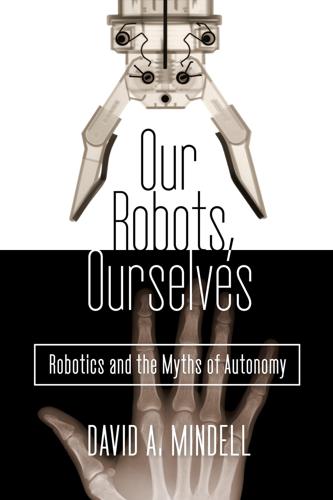
Our Robots, Ourselves: Robotics and the Myths of Autonomy
by
David A. Mindell
Published 12 Oct 2015
Most of ABE’s early dives were conducted on Alvin cruises, from Alvin’s mother ship at night, while the sub was on deck charging its batteries. Alvin even came to ABE’s rescue when it failed to return from one of its early dives. In 1999, on a cruise to the East Pacific Rise, two days’ sail from Easter Island, it all came together. Yoerger had planned a series of measurements to gather magnetic data across a ridge. But geologist Bill Ryan, originally trained as an engineer, pushed Yoerger to program ABE to do more systematic surveys than local measurements. ABE went down 2,600 meters (nearly 8,500 feet), followed about 20 meters (65 feet) above the rough volcanic terrain, collected sonar and photographic data, and returned to the surface before dawn.
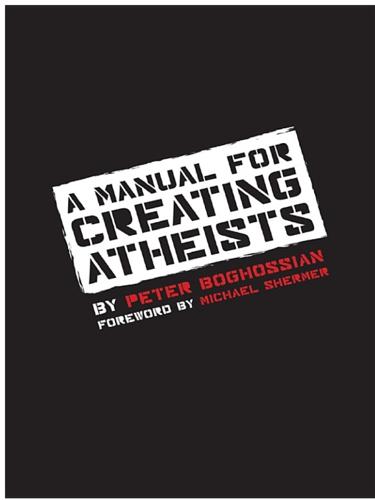
A Manual for Creating Atheists
by
Peter Boghossian
Published 1 Nov 2013
Specifically, I ask why they don’t believe that proposition on the basis of faith, especially given that there’s overwhelming evidence that Muhammad was an historical figure. Conceptually distancing oneself from a faith tradition often helps the subject examine what constitutes extraordinary evidence for an extraordinary claim. (This is a variation on John W. Loftus’s idea of the outsider test for faith.) Examples include the Anasazi, Easter Islanders, Mayan, and Norse Greenlanders. Among the reasons the Norse outpost in Greenland failed, for example, was because Norse religious teachings prohibited eating shellfish and other common, locally available foodstuffs. In short, religious dietary prohibitions (like Jews’ and Muslims’ prohibitions on pork) were the difference between success and failure.

But What if We're Wrong? Thinking About the Present as if It Were the Past
by
Chuck Klosterman
Published 6 Jun 2016
Take something like skiffle music—a musical genre defined by what it added to early-twentieth-century jazz (rhythmic primitivism) and by those individuals later inspired by it (rock artists of the British Invasion, most notably the Beatles). We think about skiffle outside of itself, as one piece of a multidimensional puzzle. That won’t happen with television. It seems more probable that the entrenched memory of television will be like those massive stone statues on Easter Island: monoliths of creative disconnection. Its cultural imprint might be akin to the Apollo space program, a zeitgeist-driving superstructure that (suddenly) mattered more than everything around it, until it (suddenly) didn’t matter at all. There won’t be any debate over the importance of TV, because that has already been assured (if anything, historians might exaggerate its significance).

Better Than Fiction
by
Lonely Planet
said twenty of us, and so we had prepaid the necessary extra ferry fees and beachside motel accommodation and transport costs. However after Tahiti-nui, a lot of us were having second thoughts.... Three good things had happened in Tahiti-nui. We had seen the small but wonderful group of performers from Easter Island/Te Pito o te Ao: ‘Goodness!’ I’d thought as they’d come out –male with topknot, females calling, loincloth and thatchy cloaks – ‘That’s my lot from the far south, 200 years ago.’ (And I could understand quite a bit of their dialect.) And the Fijian contingent had invited us all for a kai. Their quarters were even more spartan than ours.

Chasing My Cure: A Doctor's Race to Turn Hope Into Action; A Memoir
by
David Fajgenbaum
Published 9 Sep 2019
Of course, that meant patients on sirolimus were susceptible to infections due to a weakened immune system, but sirolimus had a much better side effect profile than the other two drugs I was considering. It had never been used to treat anyone with iMCD. Sirolimus is also known as rapamycin in homage to its discovery on the island of Rapa Nui. You might know Rapa Nui as Easter Island or “that Pacific island with the giant stone figures.” Rapamycin is a metabolite naturally produced by a bacterium found in the soil of that island. A pharmaceutical company called Ayerst had been collecting soil samples from islands all over the Pacific in hopes of identifying antifungal agents when they came across this compound on Rapa Nui, more than one thousand miles from its nearest neighbor.

Longshot
by
David Heath
Published 18 Jan 2022
But for the next five decades, the virus remained largely obscure as it sporadically hopscotched mostly eastward from Africa to the Pacific islands. The first major outbreak of Zika in humans didn’t strike until 2007, on the Micronesian island of Yap.8 The closest that Zika had come to Brazil previously was in 2014, when the virus landed in the Western Hemisphere on Easter Island, 2,200 miles off the coast of Chile.9 There is no treatment for Zika, although infected people produce neutralizing antibodies and their T cells mount an immune defense.10 But by the fall, things had changed. Reports began trickling in of high numbers of women giving birth to babies with unusually small heads, called microcephaly.
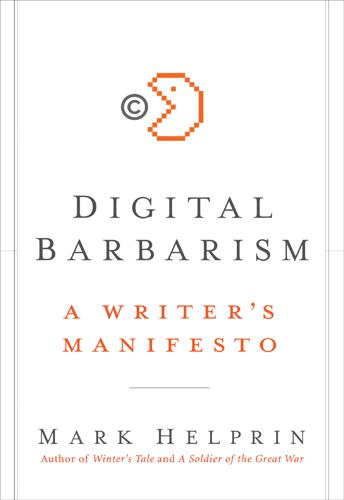
Digital Barbarism: A Writer's Manifesto
by
Mark Helprin
Published 19 Apr 2009
Eventually, as it was perfected, pages would be turned by placing your fingers on them and doing almost exactly what you do with a real book. The pressure and direction of a sweep of the hand would be read and obeyed. You could also turn pages by commanding it verbally to do so. You could tell it to search for a particular word or phrase, or assemble, for instance, all mentions of feldspar, the guillotine, or Easter Island. You could make a concordance or ask for a dictionary definition or a citation from another work, and these would appear. Inside would be not merely one book but dozens, or scores. You could replace them by plugging and unplugging modules the size of Chiclets.™ Eventually, you would have access to the contents of the entire Library of Congress—by radio.
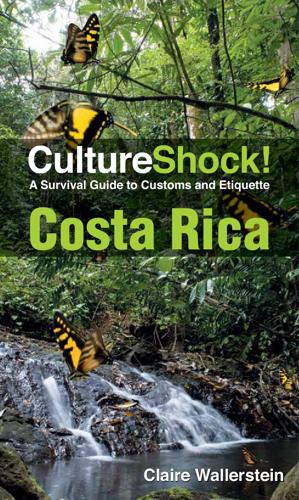
Culture Shock! Costa Rica 30th Anniversary Edition
by
Claire Wallerstein
Published 1 Mar 2011
Made mostly from sandstone, some of these stones have even been found more than 20 km (12.5 miles) from the quarries where they were carved between the years 500 and 1500 CE. It has been suggested the spheres were used as grave markers, navigation tools, or ancient star charts—but just like Stonehenge and the stone heads of Easter Island, their real purpose remains unknown. Columbus Christopher Columbus landed in Costa Rica on his fourth and final voyage to the New World in his quest to find a sea passage to Asia. On 18 September 1502, he dropped anchor at Isla Uvita, just off the shores of Puerto Limón, to repair his storm-damaged fleet.
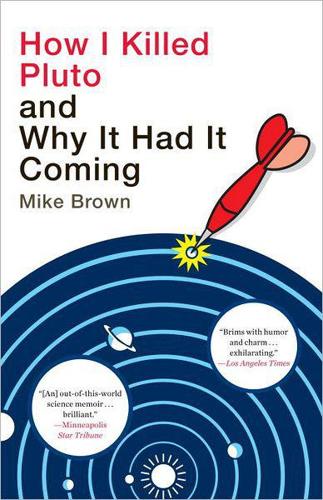
How I Killed Pluto and Why It Had It Coming
by
Mike Brown
Published 7 Dec 2010
Rapa Nui was first visited by Europeans on Easter Sunday, 1722, precisely 283 years before the discovery of the Kuiper belt object now known as Makemake. Because of this first visit, the island is known in Spanish (it is a territory of Chile) as Isla de Pascua, but around here, it is far better known by its English name of Easter Island. • • • The name Makemake was accepted quite quickly and with a modest fanfare by the IAU; as predicted, a decision on Santa was soon rendered, only two years after the initial proposals had been submitted. This time there was no fanfare, no press release, no official pronouncements. The name just appeared on the official IAU list of names one day as Haumea.
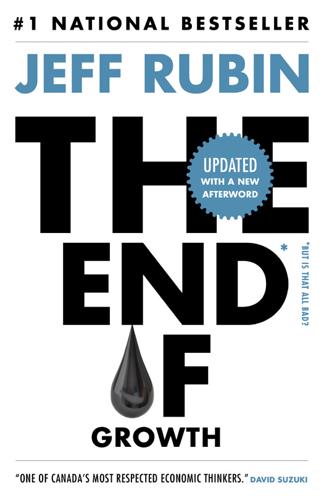
The End of Growth
by
Jeff Rubin
Published 2 Sep 2013
While most economists now acknowledge that expensive energy curtails GDP, the majority also believe that technological innovations will allow us to leap over the hurdles presented by resource scarcity. Historians take a different view. The decline of the Roman Empire has captured the world’s imagination for centuries, as has the collapse of Mayan society and the disappearance of people from Easter Island. Indeed, history is the story of the rise and fall of civilizations large and small. The exact reasons for social collapse are rarely known, but many theories cite resource scarcity as a contributing factor. Whether constraints on resources, such as food and water, is the driving reason behind societal failures will remain lost in the mists of time, but one thing is indisputable: civilizations that once flourished have eventually floundered.
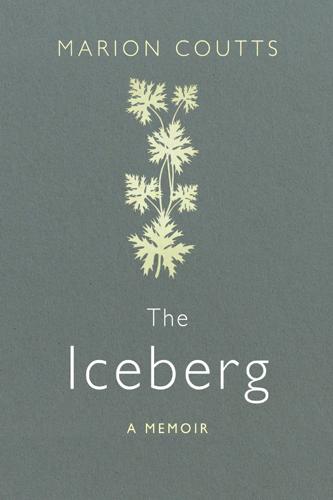
The Iceberg
by
Marion Coutts
In solid counterpart to all this grief, I learn about the lengths nurses are prepared to go to assist a purely recreational and ambitious project by one of their patients. In the gallery the works are drawn inward. The display is as concentrated as its subject. Cézanne’s farm workers hunch like Easter Island statues: the one from the Met, the one from the Courtauld, the one from the Musée d’Orsay and a clutch of other canvases. We have a long hour. Tom says, You must do it. This means he can’t initiate the conversation but if I begin, he can join in. I move into mode beside the chair with our friends as outriders and we go slowly from painting to painting and back and forth between them.
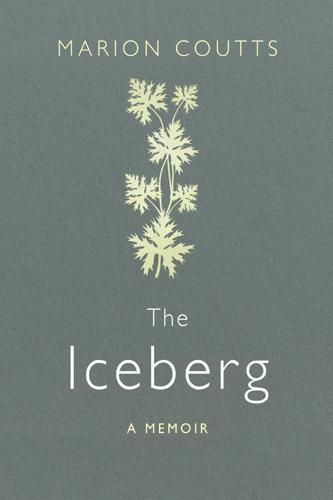
The Iceberg: A Memoir
by
Marion Coutts
Published 2 Jul 2014
In solid counterpart to all this grief, I learn about the lengths nurses are prepared to go to assist a purely recreational and ambitious project by one of their patients. In the gallery the works are drawn inward. The display is as concentrated as its subject. Cézanne’s farm workers hunch like Easter Island statues: the one from the Met, the one from the Courtauld, the one from the Musée d’Orsay and a clutch of other canvases. We have a long hour. Tom says, You must do it. This means he can’t initiate the conversation but if I begin, he can join in. I move into mode beside the chair with our friends as outriders and we go slowly from painting to painting and back and forth between them.
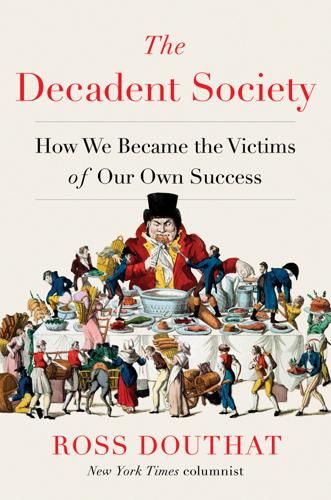
The Decadent Society: How We Became the Victims of Our Own Success
by
Ross Douthat
Published 25 Feb 2020
Of course, one of the recurring critiques of the decadent society is that its stability is an illusion, that sustainable decadence is a contradiction in terms, and that decadence always makes a civilization uniquely vulnerable to crisis, invasion, destruction—in which case it’s better to gamble on the revolution, risks and all, than just sit waiting for the inevitable coup de grace. But giving decadence its due also requires noting that dynamic societies are perfectly capable of bringing destruction upon themselves, when they hit some ecological limit without realizing it (there was nothing decadent about the Easter Islanders, nobody more dynamic than the Once-ler in Dr. Seuss’s The Lorax) or gain some technical mastery they are ill-equipped to handle. It was not decadence but the dynamism of the atomic age that almost destroyed the world in 1962 and in a few close calls thereafter. It will not be decadence but dynamism—the dynamism of the still-developing world, where carbon emissions are rising even as they dip in the slow-growth West—that gives us a climate catastrophe, should one ultimately come.

Fallen Idols: Twelve Statues That Made History
by
Alex von Tunzelmann
Published 7 Jul 2021
Statues are much older than recorded history, dating back to the Palaeolithic era and the dawn of humanity. The oldest confirmed statues are both German. They are made of ivory, and were found in caves and assessed as being between 35,000 and 40,000 years old: the Lion Man of the Hohlenstein-Stadel and the Venus of Hohle Fels. Forms of statuary can be found on every inhabited continent, from the Easter Island moai of Polynesia to the Terracotta Warriors of China, to the Nok sculptures of Nigeria, to the colossal Olmec heads of Mexico. The history of destroying statues is itself extremely ancient. It was common for Egyptian pharaohs to smash statues of their predecessors and rivals. Deuteronomy 12:3 mandates the destruction of idols: ‘And ye shall overthrow their altars, and break their pillars, and burn their groves with fire; and ye shall hew down the graven images of their gods, and destroy the names of them out of that place.’
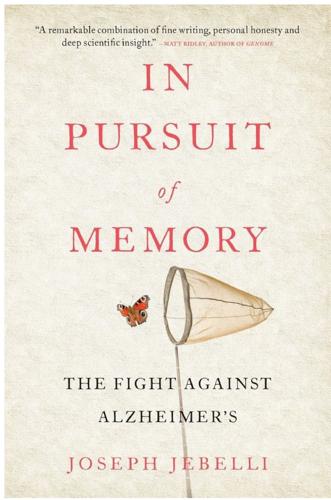
In Pursuit of Memory: The Fight Against Alzheimer's
by
Joseph Jebelli
Published 30 Oct 2017
Wanting to offer me something constructive, he leaned back in his chair and rummaged through a nearby bookshelf, pulling out books and papers by other unconventional thinkers. He told me about a group in Seattle, Washington, who are studying brain ageing in domestic dogs–the rationale being that because dogs share our living space and also succumb to dementia, they may hold a clue that mice and humans do not. He also spoke about a substance found in the soil of Easter Island by Canadian scientists in 1964, called Rapamycin, which has been shown to extend the lifespan of mice by 14 per cent.8 Amid all these arresting developments, though, Nikolich stressed a crucial message: the mission, he said, is extended healthspan, not lifespan. Because even if we all live to 150, ‘nobody wants to live long as a vegetable,’ he bluntly concluded.
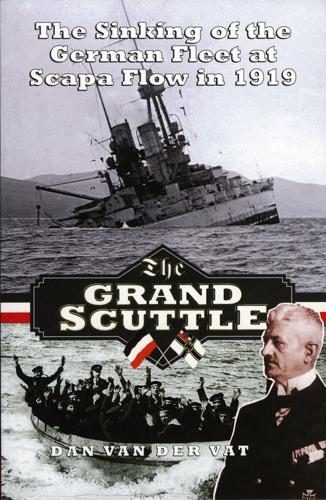
The Grand Scuttle
by
Dan Van der Vat
Just what the Germans might have achieved on the open sea had they had the foresight to make the appropriate dispositions in the last weeks of peace was demonstrated in November 1914, when the Royal Navy suffered its only outright defeat in battle during this war, an event unprecedented in modern times and a shock to the British psyche. The German East Asia Squadron under Vice-Admiral Maximilian Graf von Spee had been scattered in various parts of the Pacific at the outbreak of war, but by mid-October the main components were assembled at Easter Island. They were the modern heavy cruisers Scharnhorst and Gneisenau and the light cruisers Nürnberg, Leipzig and Dresden. Also there was a collection of colliers from which the ships refuelled, before they sailed for the coast of Chile. On 31 October, a Saturday, Spee, forty miles off Valparaiso, received a signal that the British light cruiser Glasgow was at Coronel, 250 miles south.
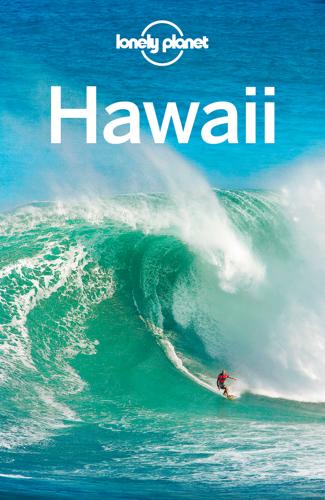
Hawaii Travel Guide
by
Lonely Planet
Just beware any time the surf’s up. 1Sights & Activities Polynesian Cultural CenterTHEME PARK (PCC; MAP GOOGLE MAP ; %808-293-3333; www.polynesia.com; 55-370 Kamehameha Hwy; adult/child from $50/40; h11:45am-5pm Mon-Sat; c) A nonprofit cultural park owned by the Mormon Church, the PCC revolves around eight Polynesian-themed ʻvillages’ representing Hawaii, Rapa Nui (Easter Island), Samoa, Aotearoa (New Zealand), Fiji, Tahiti and Tonga. The admission price is steep, but this includes frequent village shows and a park-wide boat parade showcasing native dances. BYUH students dressed in native garb demonstrate poi pounding, coconut-frond weaving, handicrafts, music and games.
…
Smith's Tropical ParadiseGARDENS ( MAP GOOGLE MAP ; %808-821-6895; www.smithskauai.com; adult/child 3-12yr $6/3; h8:30am-4pm; c) Other gardens might have fancier landscaping, but you can’t beat Smith’s for value. Take a leisurely stroll along a mile-long loop trail past a serene pond, grassy lawns and island-themed gardens. The setting can seem Disney-esque, with an Easter Island moai statue replica, but it’s appealingly unpretentious. Keahua ArboretumPARK ( MAP GOOGLE MAP )F Sitting prettily at the top of Kuamoʻo Rd, this arboretum has grassy fields, a gurgling stream and groves of rainbow eucalyptus and other towering trees. Locals come here to picnic and to swim in the freshwater stream and pools, but beware the water is infected with leptospira bacteria.
…
For 80 million years, a ʻhot spot' beneath the earth's mantle has operated like a volcanic conveyor belt here, manufacturing a 1500-mile string of shield volcanoes that bubble out of the sea in the most geographically isolated spot on the planet, almost 2000 miles from the closest continent. This profound isolation has created a living textbook of evolution, with incredible biodiversity unmatched by anywhere else in the US. Hawaii is the northernmost point of the triangle of Pacific islands known as Polynesia (many islands); the other points are New Zealand and Rapa Nui (Easter Island). A Hot Spot for Volcanoes The Hawaiian archipelago embraces more than 50 volcanoes (and 137 islands and atolls), part of the larger, mostly submerged Hawaiian–Emperor Seamount chain that extends 3600 miles across the ocean. Hawaii's volcanoes are created by a rising column of molten rock – a 'hot spot' – under the Pacific Plate.

Pauline Frommer's London: Spend Less, See More
by
Jason Cochran
Published 5 Feb 2007
LONDON budget travel redefined pauline frommer’s Winner of Best Guidebook, North American Travel Journalists Association $16.99 USA/$18.99 CAN/£11.99 UK www.frommers.com/pauline 2nd edition pauline frommer’s LONDON spend less see more SECO N D F L O O R Area code: 020 67 To call London from another country: Dial the international access code (U.S. or Canada 011, UK or New Zealand 00, Australia 0011), plus the country code (44), plus the area code with the first zero omitted (20), plus the local number. 66 60 61 59 1 Egyptian Rooms 2 Portland Vase and Warren Cup 58 62 1 63 57 56 64 55 To make a direct international call from London: Dial 00, wait for dial tone, then the country code (U.S. or Canada 1, UK 44, Australia 61, New Zealand 64), the area code, and the local number. 65 54 53 73 52 To charge international calls: Dial AT&T USA Direct at 0800/890011; Sprint at 0800/890877; MCI at 0800/890222. 72 51 To call within London: Dial the local 7- or 8-digit number. 3 Lindow Man 4 Treasures of Sutton Hoo 3 71 50 5 Lewis Chessmen SECOND FLOOR To call London from elsewhere in Britain: Dial the area code, including the 0, plus the local number. Operator Assistance: dial 155 for international calls or 192 for calls within England. 2 6 Clocks and Watches 70 7 Asia Galleries 49 8 Easter Island statue 4 9 Mausoleum of Halikarnassos 69a 10 Elgin Marbles 36 69 68 40 41 42 5 43 44 6 37 11 Rosetta Stone 47 12 Enlightenment Gallery 46 45 100˚F 48 13 Gallery Café To convert..................... multiply by 110˚F 90˚F MAIN FLOOR 70˚F Ancient Near East 34 24 Money 27 50˚F 33b 20 World cultures 10 32˚F 21 35 9 19 Temporary Exhibits 17 23 10˚F 8 4 1 MAIN FLOOR To convert..................... multiply by 0˚C 0˚F -10˚C -18˚C -10˚F -20˚F GREAT C OURT 13 13 10˚C Inches to centimeters...................2.54 Centimeters to inches......................39 Feet to meters................................ .30 Meters to feet...............................3.28 Yards to meters.............................. .91 Meters to yards.............................1.09 Miles to kilometers.......................1.61 Kilometers to miles........................ .62 1 ft. = .30m 1 mile = 1.6km 1m = 3.3 ft. 1km = .62 mile -30˚C 7 14 12 READING ROOM 11 16 15 10 20˚C 20˚F 12 22 18 1 liter = .26 U.S. gallon 1 U.S. gallon = 3.8 liters 40˚F 9 Greece & Rome Asia 26 U.S. gallons to liters....................... 3.8 Liters to U.S. gallons...................... .26 U.S. gallons to imperial gallons.... .83 Imperial gallons to U.S. gallons...1.20 Imperial gallons to liters..............4.55 Liters to imperial gallons............... .22 60˚F 8 Egypt 30˚C 80˚F 33 7 33a Britain & Europe 40˚C 2 6 11 Dining 5 Information MA IN ENTRANCE Great Ru ssell St.
…
Sushi, 119–121 SECO N D F L O O R Area code: 020 67 To call London from another country: Dial the international access code (U.S. or Canada 011, UK or New Zealand 00, Australia 0011), plus the country code (44), plus the area code with the first zero omitted (20), plus the local number. 66 60 61 59 1 Egyptian Rooms 2 Portland Vase and Warren Cup 58 62 1 63 57 56 64 55 To make a direct international call from London: Dial 00, wait for dial tone, then the country code (U.S. or Canada 1, UK 44, Australia 61, New Zealand 64), the area code, and the local number. 65 54 53 73 52 To charge international calls: Dial AT&T USA Direct at 0800/890011; Sprint at 0800/890877; MCI at 0800/890222. 72 51 To call within London: Dial the local 7- or 8-digit number. 3 Lindow Man 4 Treasures of Sutton Hoo 3 71 50 5 Lewis Chessmen SECOND FLOOR To call London from elsewhere in Britain: Dial the area code, including the 0, plus the local number. Operator Assistance: dial 155 for international calls or 192 for calls within England. 2 6 Clocks and Watches 70 7 Asia Galleries 49 8 Easter Island statue 4 9 Mausoleum of Halikarnassos 69a 10 Elgin Marbles 36 69 68 40 41 42 5 43 44 6 37 11 Rosetta Stone 47 12 Enlightenment Gallery 46 45 100˚F 48 13 Gallery Café To convert..................... multiply by 110˚F 90˚F MAIN FLOOR 70˚F Ancient Near East 34 24 Money 27 50˚F 33b 20 World cultures 10 32˚F 21 35 9 19 Temporary Exhibits 17 23 10˚F 8 4 1 MAIN FLOOR To convert..................... multiply by 0˚C 0˚F -10˚C -18˚C -10˚F -20˚F GREAT C OURT 13 13 10˚C Inches to centimeters...................2.54 Centimeters to inches......................39 Feet to meters................................ .30 Meters to feet...............................3.28 Yards to meters.............................. .91 Meters to yards.............................1.09 Miles to kilometers.......................1.61 Kilometers to miles........................ .62 1 ft. = .30m 1 mile = 1.6km 1m = 3.3 ft. 1km = .62 mile -30˚C 7 14 12 READING ROOM 11 16 15 10 20˚C 20˚F 12 22 18 1 liter = .26 U.S. gallon 1 U.S. gallon = 3.8 liters 40˚F 9 Greece & Rome Asia 26 U.S. gallons to liters....................... 3.8 Liters to U.S. gallons...................... .26 U.S. gallons to imperial gallons.... .83 Imperial gallons to U.S. gallons...1.20 Imperial gallons to liters..............4.55 Liters to imperial gallons............... .22 60˚F 8 Egypt 30˚C 80˚F 33 7 33a Britain & Europe 40˚C 2 6 11 Dining 5 Information MA IN ENTRANCE Great Ru ssell St.
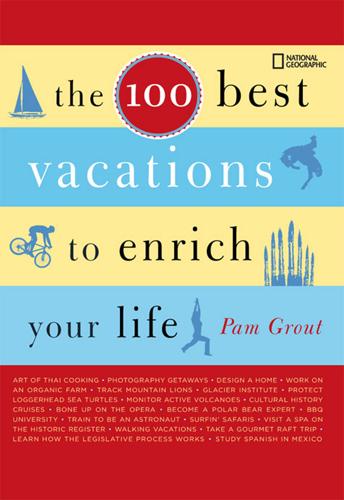
The 100 Best Vacations to Enrich Your Life
by
Pam Grout
Published 14 May 2007
The archaeological excavation at Mount Vernon is one of more than 250 fieldwork projects listed in the bulletin put out each year by the Archaeological Institute of America. If you want to volunteer for an archaeological excavation, the Archaeological Fieldwork Opportunities Bulletin is the best place to start. It lists hundreds of excavations from a Stone Age site in South Africa to a site on Easter Island in Chile. Each listing provides an in-depth description, including accommodations, price, and contact information. The yearly volume can be accessed on the institute’s website (www.archaeological.org); a paperback version is also available each year from Oxbox/David Brown Books, 800-791-9354. * * * And take over they did.
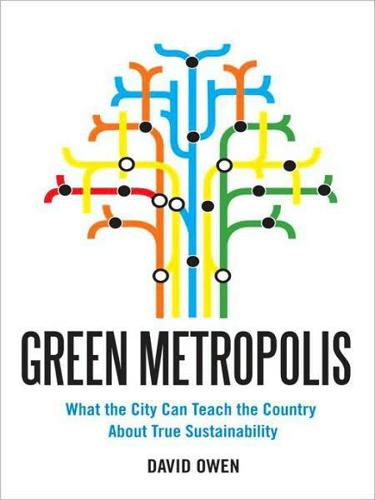
Green Metropolis: Why Living Smaller, Living Closer, and Driving Less Are Thekeys to Sustainability
by
David Owen
Published 16 Sep 2009
One important fact about the economics of oil, emphasized by Goodstein and others but often overlooked, at least in media reports, is that the world will never actually run out, in the sense of pumping the final barrel out of the ground—in contrast to the moment, poignantly described by Jared Diamond in his book Collapse, when some anonymous Easter Islander cut down his island’s last palm tree, bringing his culture to a permanent end.11 At some point long before the earth has literally gone dry, extracting the remaining crude will cease to be economically rational, and production will essentially stop—either because, as Amory Lovins and others have predicted, increased energy efficiency and competition from solar, wind, and other renewables will have driven the price of oil so low that people will no longer bother with it (just as we no longer bother to hunt whales for fuel to light our houses), or because, as seems vastly more likely, finding and pumping petroleum will have become so expensive that the world will have switched almost entirely to burning more plentiful carbon-based alternatives and their derivatives—natural gas, coal, trash, wood, the petroleum extractable from so-called oil sands—and to making more use of nuclear power.

Cold: Adventures in the World's Frozen Places
by
Bill Streever
Published 21 Jul 2009
The drop in pressure is accompanied by a drop in temperature. The whole mass spills outward from the equator. Along the way, water vapor carried in the air mass grows cool enough to condense and tumble downward as liquid water. Around the latitude of Shanghai and Jacksonville in the Northern Hemisphere and Easter Island and Cape Town in the Southern Hemisphere, and moderated by local geography and the myriad factors that affect air movements, it tumbles down. George Hadley imagined these global patterns in 1735, before satellites, before computers, before reasonable maps of the world. The global loops of rising and cooling air near the equator became known as Hadley cells.
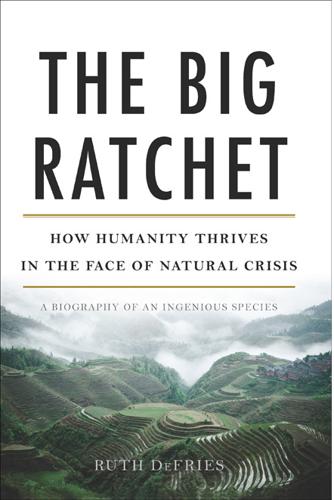
The Big Ratchet: How Humanity Thrives in the Face of Natural Crisis
by
Ruth Defries
Published 8 Sep 2014
A twist of nature for more food is followed by a society with more and more mouths to feed. At some point, nature reacts. A crash follows. The American sociologist William Catton Jr. described this pattern in his 1980 book Overshoot: The Ecological Basis of Revolutionary Change. From a short lens, history illustrates many individual examples of overshoot. Towering statues of Easter Island, Mayan cities, the cliff dwellings of the Anasazi in the American Southwest, and the massive temple complexes of Angkor Wat in Cambodia all convey the demise of civilizations that once prospered. Some complicated combination of political strife, unexpected climate, social upheaval, or soils run dry of nutrients, as well as many unknowable factors, no doubt contributed.

Fabricated: The New World of 3D Printing
by
Hod Lipson
and
Melba Kurman
Published 20 Nov 2012
Yet, like any other plastic object, whether it be custom-made or mass manufactured, most 3D printed products that reach the end of their lifecycle will be tossed into the garbage can. 3D printing pioneer and outspoken visionary Joris Peels points out that if we continue to consume and discard products at our current global rate of consumption, we will choke to death in our own waste. In a blog article entitled “3D Printing vs. Mass Production: A More Beautiful Landfill,” he wrote, “My fear is that eventually mass production could lead to mass extinction . . . I really believe we’re headed to the path to extinction . . . Like the Easter Islanders we’re also going to cut down the last tree.”10 Plastic is environmentally devastating. Yet plastic has also been a great democratic equalizer, enabling nearly everyone to own household items that used to be reserved for the rich. Plastic objects are found in nearly every aspect of our lives, from mundane plastic toys to lifesaving lightweight plastic tubes used to give blood transfusions.

How to Fail: Everything I’ve Ever Learned From Things Going Wrong
by
Elizabeth Day
Published 3 Apr 2019
I had passed my theory test after swotting up on motorway lights and highway road signs. All that was left was the practical element – and how hard could that be? Pretty hard, as it turned out. I was paired with a stern-faced female examiner, the sort of person whose head seemed to have been chipped off an Easter Island statue, except less expressive. She was impervious to any effort at small talk or charm. Well, that’s fine, I thought, I’ll just drive brilliantly and she’ll be forced to crack a smile by the end. For the first twenty minutes, everything went according to plan. I can honestly say, with the benefit of over two decades of driving cars, that it was quite possibly the best bit of driving I have ever done.
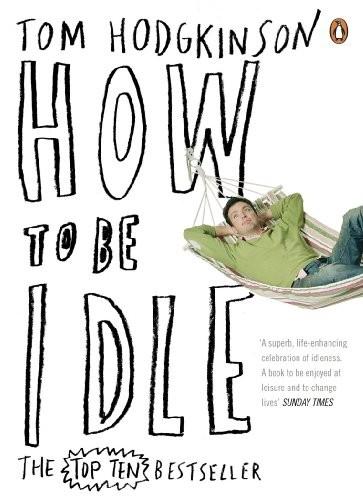
How to Be Idle
by
Tom Hodgkinson
Published 1 Jan 2004
Absinthe was banned in 1 9 1 4 following a moral panic but over the following decades the custom of the Green Hour evolved into the cocktail hour (and its vulgar kid brother, the so-called Happy Hour) . In The Book of Tiki: The Cult of Polynesian Pop in Fifties America (2000) , anthropologist Sven A. Kirsten reveals how, in the mid twentieth century, first California and then the whole of America began to adopt the primitive styles of Polynesia and Hawaii, of the Easter Islands and the South Seas islands, as symbolic of an earthly paradise, free of work and responsibility, an antidote to the civilized Western world. By the 1 950s, America was entering a new period of material prosperity, but the work-ethic-Ioving Americans needed to be told how to enjoy the fruits of their labour.
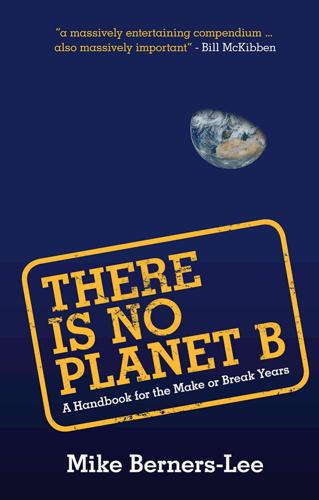
There Is No Planet B: A Handbook for the Make or Break Years
by
Mike Berners-Lee
Published 27 Feb 2019
There are two problems with this line of argument. Firstly, humans have inflicted some very hard times on themselves in the past, sometimes wiping out whole communities. Now that we are a global village, like it or not, it would be a great shame if our community got into as much trouble as the people on Easter Island who chopped down the last tree. The second problem with this line of reasoning is that it actually says nothing at all, because every member of every species that ever lived could say, during their lifetime, that their species had always survived. Is it optimism bias that tells me we have everything to play for?
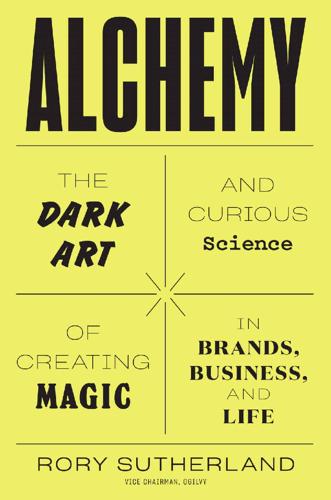
Alchemy: The Dark Art and Curious Science of Creating Magic in Brands, Business, and Life
by
Rory Sutherland
Published 6 May 2019
It seems that competition over antler size – which led to them ultimately growing to insane proportions – may have led to the extinction of the Irish elk. The same competition can be just as damaging to humans when it manifests itself in unrestrained competition through extreme behaviour. Some academics have suggested that the Easter Island human civilisation might have been destroyed by competition between tribes over who could construct the largest and most numerous stone heads. There is no competition to build giant stone heads among modern humans,* but are car showrooms, DIY centres, women’s clothes shops and shopping malls, or the preference for taking more expensive holidays, simply consumerist manifestations of the same uncontrolled competitive drive?
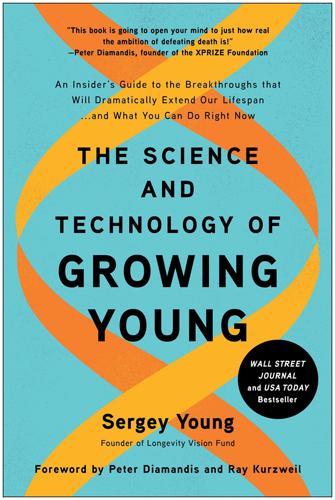
The Science and Technology of Growing Young: An Insider's Guide to the Breakthroughs That Will Dramatically Extend Our Lifespan . . . And What You Can Do Right Now
by
Sergey Young
Published 23 Aug 2021
While many still do believe that moderate red wine consumption offers health benefits, the amount of wine you would need to drink to make a noticeable impact on your lifespan would easily exceed what anyone is recommending. So, our search for longevity molecules continues. LONGEVITY OUT FROM UNDER A ROCK Easter Island sits more than two thousand miles west of continental Chile. It is known to its Polynesian native inhabitants as Rapa Nui. The island was recognized as a UNESCO World Heritage site on account of the almost one thousand monolithic moai human figure statues that dot the island’s undulating expanse of green hills.
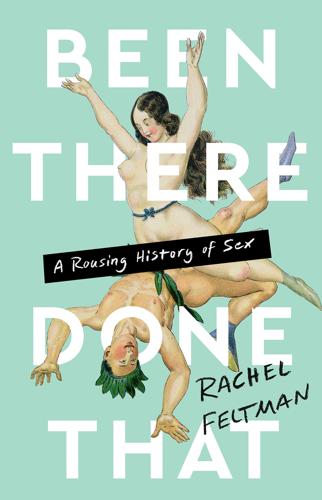
Been There, Done That: A Rousing History of Sex
by
Rachel Feltman
Published 14 May 2022
The Talmud, meanwhile, recommended a spongy material called mokh soaked in vinegar for women too young or frail to get pregnant safely; this actually persisted as a common birth control method among Jewish women through the sixteenth century. Time and space are crammed with tales of women cramming things up against the cervix to prevent pregnancy: seaweed on Easter Island, bronze pessaries in ancient Rome, oiled paper discs for Japanese prostitutes throughout antiquity, carved wooden caps in America at the turn of the twentieth century, and, finally (thankfully), the silicone diaphragms smeared with spermicide enjoying a resurgence today. And you can stop thanking that jabroni Casanova for male condoms, while you’re at it.
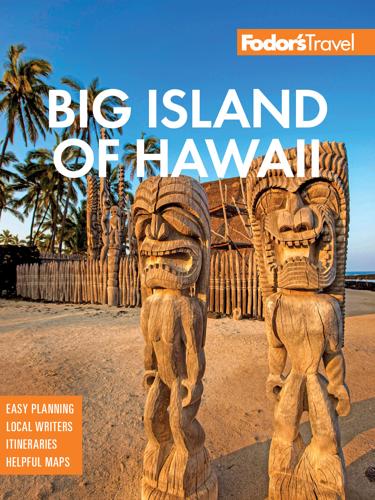
Fodor's Big Island of Hawaii
by
Fodor’s Travel Guides
Published 1 Aug 2022
They didn’t just flail around and land here by accident; they understood the deep nuances of celestial navigation and were masters of the craft. From western Polynesia, they traveled back and forth between Samoa, Fiji, Tahiti, the Marquesas, and the Society Isles, settling on the outer reaches of the Pacific, Hawaii, and Easter Island, as early as AD 300. The golden era of Polynesian voyaging peaked around AD 1200, after which the distant Hawaiian Islands were left to develop their own unique cultural practices and subsistence in relative isolation. The Islands’ symbiotic society was deeply intertwined with religion, mythology, science, and artistry.
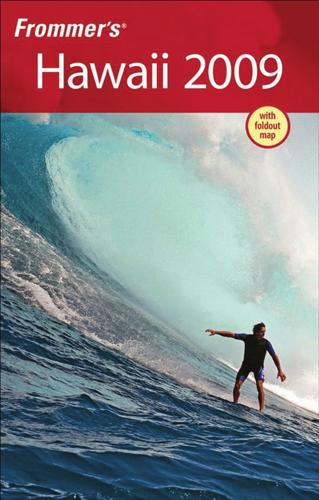
Frommer's Hawaii 2009
by
Jeanette Foster
Published 2 Jan 2008
This golden crescent with swaying palms is protected from strong winds and currents by two outstretched lava-rock promontories. Its calm waters are perfect for snorkeling, swimming, and kayaking. Facilities 21˚ N JAPAN S AU TR AL IA 160˚ W Sydney UN I T Cook Islands Samoa Islands Equator S C STA TE ai ha e nn l 159˚ W Easter Island P A C I F I C O C E A N Honolulu–Mexico City 3,791 miles Tahiti Tahiti Pearl Harbor Makaha Haleiwa Kailua Honolulu Waikiki i w Laie OAHU 158˚ W 158˚ W MOLOKAI 156˚ W 0 0 O C E A N Pailolo Channel P A C I F I C 157˚ W 157˚ W O C E A N 156˚ W Captain Cook Kailua-Kona Keahole Point Point 155˚ W Kilauea Crate Crater raterr Hawaii Volcanoes National Park Hilo HAWAII “The Big Island” Ka Lae (South Point) Point Mauna Loa 155˚ W 50 mi Airport Mountain 50 km Mauna Kea Kea Waimea i K a Kaunakakai Kaanapali Kahului MAUI hi Channel MAUI Kalo Lahaina Lanai City Hana LANAI Kihei ki ahi el k i la Haleakala el nn Kea hann National Park ha C C KAHOOLAW KAHOOL KAHOOLAWE AWE E ha ha ui n e Hawi Al P A C I F I C Honolulu–Los Angeles 2,556 miles Los Angeles ED K au Hawaii Honolulu New Zealand Tonga Fiji Honolulu–Sydney 5,065 miles Poipu Lihue KAUAI KAUAI Princeville 159˚ W au l Aua n n e Ch 19˚ N a Hanalei Honolulu–Tokyo 3,862 miles NIIHAU NIIHAU Puuwai 160˚ W ak LI NE 22˚ N ul el AL DAT E Ka 19˚ N 20˚ N 21˚ N 22˚ N 10:29 PM INTERNATION nel nn an hi a Ch 8/11/08 Ch 05_285558-ch01.qxp Page 5 THE BEST BEACHES 5 The Hawaiian Islands 05_285558-ch01.qxp 6 8/11/08 10:29 PM Page 6 CHAPTER 1 .
…
The question still remains unanswered. 2 Looking Back at Hawaii Paddling outrigger canoes, the first ancestors of today’s Hawaiians followed the stars and birds across the sea to Hawaii, which they called “the land of raging fire.” Those first settlers were part of the great Polynesian migration that settled the vast triangle of islands stretching between New Zealand, Easter Island, and Hawaii. No one is sure exactly when they came to Hawaii from Tahiti and the Marquesas Islands, some 2,500 miles to the south, but a bone fishhook found at the southernmost tip of the Big Island has been carbon-dated to A.D. 700. Chants claim that the Mookini Heiau, also on the Big Island, was built in A.D. 480.
…
Keck Observatory (Big Island), 336 Wood Valley Temple & Retreat Center (Big Island), 349 World Botanical Gardens (Big Island), 338–339 World Fire-Knife Dance Championships & Samoa Festival (Oahu), 56 World War II, 32 Y ama’s Fish Market (Honolulu), 240 Yat Tung Chow Noodle Factory (Honolulu), 216 Yellowfish Trading Company (Kauai), 628 Yokohama Bay (Oahu), 184 Yorman’s by the Sea (Maui), 490 Z oos Honolulu Zoo (Oahu), 212 Panaewa Rainforest Zoo (Big Island), 343–344 17_285558-badvert01.qxp 8/11/08 10:53 PM Page 661 FROMMER’S® COMPLETE TRAVEL GUIDES Alaska Amalfi Coast American Southwest Amsterdam Argentina Arizona Atlanta Australia Austria Bahamas Barcelona Beijing Belgium, Holland & Luxembourg Belize Bermuda Boston Brazil British Columbia & the Canadian Rockies Brussels & Bruges Budapest & the Best of Hungary Buenos Aires Calgary California Canada Cancún, Cozumel & the Yucatán Cape Cod, Nantucket & Martha’s Vineyard Caribbean Caribbean Ports of Call Carolinas & Georgia Chicago Chile & Easter Island China Colorado Costa Rica Croatia Cuba Denmark Denver, Boulder & Colorado Springs Eastern Europe Ecuador & the Galapagos Islands Edinburgh & Glasgow England Europe Europe by Rail Florence, Tuscany & Umbria Florida France Germany Greece Greek Islands Guatemala Hawaii Hong Kong Honolulu, Waikiki & Oahu India Ireland Israel Italy Jamaica Japan Kauai Las Vegas London Los Angeles Los Cabos & Baja Madrid Maine Coast Maryland & Delaware Maui Mexico Montana & Wyoming Montréal & Québec City Morocco Moscow & St.

Escape From Rome: The Failure of Empire and the Road to Prosperity
by
Walter Scheidel
Published 14 Oct 2019
In the course of the first millennium CE, riding their outrigger canoes, these Polynesians reached and populated New Zealand, Easter Island (2,600 kilometers east of the closest staging post, Mangareva, and 6,700 kilometers from Samoa), and Hawai’i (3,500 kilometers north of the Marquesas). Their zone of transfers eventually spanned some 9,000 kilometers from Hawai’i in the north to the Auckland Islands south of New Zealand. East to west, dispersal extended across 25,000 kilometers from Madagascar to Easter Island.27 Back in Europe, meanwhile, the Norse of the ninth and tenth centuries advanced from Scandinavia to Iceland, Greenland, and Newfoundland in the New World.

Will Storr vs. The Supernatural: One Man's Search for the Truth About Ghosts
by
Will Storr
Published 4 Sep 2006
‘To the spirit that may hear my voice, we ask that you now go back from whence you came. With love and light, we are very, very grateful. Thank you, spirit, thank you. Please stand back. Thank you. Please, please, please stand back. OK, everybody, it’s fine. Let’s release.’ We let go of each other’s hands. ‘Did you see him?’ says Big S with a torch shining up on his Easter Island face. ‘Yeah,’ says everybody. ‘Um … I didn’t,’ I say. I feel like I’m ruining the party, like I’ve just put my cigarette out in the middle of the wedding cake. ‘There was this gentleman standing right there,’ says Big S, aiming his torch at the wall. ‘And you all saw this guy?’ I say. ‘Everyone seen it and felt it, didn’t we?

Early Retirement Extreme
by
Jacob Lund Fisker
Published 30 Sep 2010
When future archaeologists dig through the remains of our civilization, one of the things they will find are the ceramics, since ceramics are very stable compounds. Some of the biggest and most solid ceramic objects in our landfills just happen to be toilet bowls. This may be our legacy, our equivalent to the statues on Easter Island. (7) Frogs are a leading pollution indicator and are becoming threatened by extinction at an alarming rate. (8) On the other hand, there have been a few examples of the converse holding--if you buy your way into a top-ranked university, you can still succeed (make a lot of money) despite obvious lack of talent
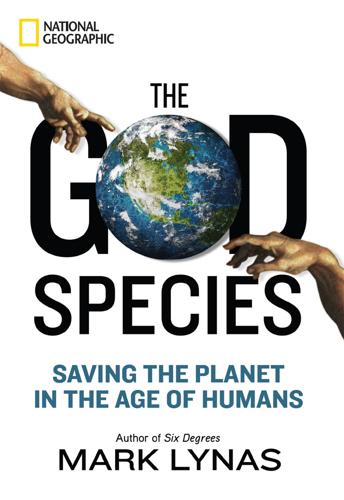
The God Species: Saving the Planet in the Age of Humans
by
Mark Lynas
Published 3 Oct 2011
The consequent nationwide effects over the United States’ entire 6.2-million-kilometer road network can only be guessed at.3 While busy paved roads are a recent phenomenon, general human transformation of the land surface has been accelerating for millennia. The Roman Empire deforested large areas around the Mediterranean, contributing to soil erosion and declining fertility. Unsustainable land-use change has been associated with the collapse of entire civilizations, from Easter Island in the Pacific to the Maya of Central America, as Jared Diamond documents in his book Collapse.4 The European continent’s landscape changed dramatically between A.D. 500, when it was still four-fifths covered by swamp and woodland, and A.D. 1300, when half of this natural land had already been converted to agriculture.

Your Own Allotment : How to Find It, Cultivate It, and Enjoy Growing Your Own Food
by
Russell-Jones, Neil.
Published 21 Mar 2008
In Victorian times, placing a paving stone below trees was a technique used to limit root growth. Bonsai trees are bred small by keeping the roots very small. 12 • The Life Cycle of a Plant 133 Root benefits The roots of trees and other plants often help in binding soil together. In many areas (Easter Island, for example) where all trees were cut down, the soil was eroded by wind and rain and the land became uncultivable. This is still happening in many parts of the world today, especially in rainforests, with devastating effects on wildlife. Plants from the legume family – beans, peas and so on – have special nodules that absorb nitrogen and then fix it in the soil, thus improving it.
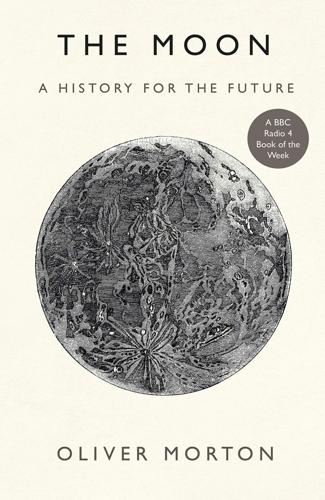
The Moon: A History for the Future
by
Oliver Morton
Published 1 May 2019
When President Barack Obama’s administration tried to stop NASA from building big rockets, the Senate would not let it. Though it is not strictly necessary, the senators would like the SLS eventually to have something to do; even Mr Shelby would baulk at simply lining the things up on the bluffs above the Tennessee River like Easter Island statues. So, they have assured it a role. For the time being, NASA’s plans for returning people to the Moon are centred on the SLS. If the government were to give up on the SLS, the BFR would be perfectly positioned to mop up NASA contracts for future Moon-taxi services, just as the Falcon 9 and Dragon did for space station supply runs.
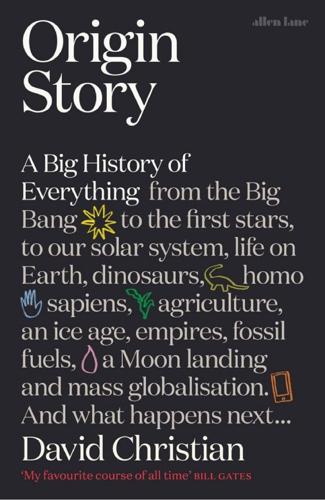
Origin Story: A Big History of Everything
by
David Christian
Published 21 May 2018
The third-largest world zone, in the Americas, was settled at least by fifteen thousand years ago but was largely cut off from Eurasia when the Bering Strait was flooded at the end of the last ice age. In recent millennia, a fourth zone would emerge in the Pacific. Western islands such as the Solomons may have been settled as early as forty thousand years ago, but islands farther to the east and south (including New Zealand, Hawaii, and Easter Island) were settled during a remarkable series of seaborne migrations that began just thirty-five hundred years ago. The existence of different world zones set up a fascinating natural experiment because, as we look back, we can watch how human history played out in different arenas.2 There were important similarities in the histories of the world zones.
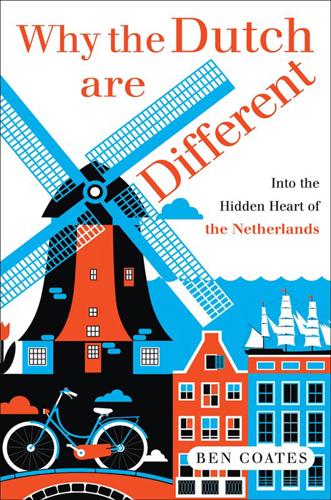
Why the Dutch Are Different: A Journey Into the Hidden Heart of the Netherlands: From Amsterdam to Zwarte Piet, the Acclaimed Guide to Travel in Holland
by
Ben Coates
Published 23 Sep 2015
Elsewhere in the US were numerous small towns called Holland, an Amsterdam in upstate New York, a Rotterdam, a Dutch Harbor, a Nassau and a Nederland, and at least four Batavias. Further afield, South Africa had Delft, Gouda, Middelburg and Utrecht; Suriname Nieuw Amsterdam, Groningen and Lelydorp; and Australia Arnhem Land, Groote Eyland and Cape Leeuwin. The Dutch port of Hoorn lent its name to Cape Horn, near the southernmost tip of Latin America, while Easter Island, home of Chile’s famous giant stone heads, was christened thus by the Dutch explorers who arrived there on Easter Sunday. Closer to home, the Netherlands’ colonial history was evident on the country’s dining tables and restaurant menus, with Indonesian cuisine offering a rare bright spot among otherwise dire food options.
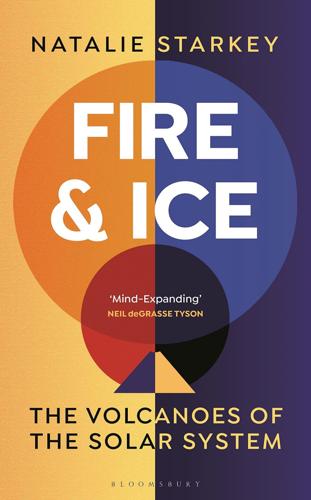
Fire and Ice: The Volcanoes of the Solar System
by
Natalie Starkey
Published 29 Sep 2021
One of the larger organisms is the Yeti crab, so-called because of its very hairy legs. This blind species (after all, there’s no need for eyes at these depths when there’s no light) measures around 15 centimetres (6 inches) long and was first observed by marine biologists in March 2005 on the Alvin submersible along the Pacific–Antarctic ridge, south of Easter Island. The Yeti crab was living at depths of about 2,200 metres (7,200 feet); as yet, the scientists are still not sure exactly how it survives down there. While it was noted that the crab appeared to be eating mussels, which would certainly provide it with nutrition, the scientists also think that its hairy legs are home to large colonies of filamentous bacteria and that it might be ‘farming’ them for food.
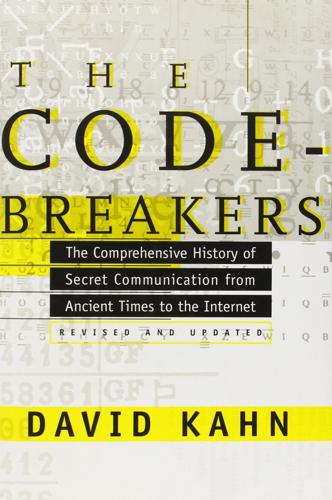
The Codebreakers: The Comprehensive History of Secret Communication From Ancient Times to the Internet
by
David Kahn
Published 1 Feb 1963
During World War II, HroznÝ, then in his dotage, mounted an attack upon all the undeciphered scripts of the world and announced a decipherment of the approximately 250 signs of the Indus Valley script, but other scholars have discredited it. Some investigators see a resemblance between this script and that of the “talking boards” of Easter Island. A number of the signs do look surprisingly alike, but their enormous separation in time and space makes it most unlikely that they have any connection. Easter Island natives call the writing rongo-rongo, and their tradition holds that bards merely used the little figures of what appear to be men and plants as cues for a whole line in a story. None of the native informants could actually explain the 500 symbols when they were discovered in 1870, but Thomas S.
…
Dacier… (Paris: Firmin Didot Père et fils, 1822), 2, 3-4. 912 cuneiform: Friedrich, 29-67; Cleator, 64-112; Pedersen, 154-160; Aalto, 4-5. 914 Hittite cuneiform: Friedrich, 69-79; Cleator, 118-119. 914 Meroitic, Lycian, Lydian, Libyan, Iberian, Sabaean, Safaitic, Pahlavī, Brahmī, Sogdian, Mon, Khmer, Gupta: Friedrich, Pedersen, Diringer, Gelb. 916 Kök-Turki: Pedersen, 196-199; Doblhofer, 271-293. 916 Etruscan: Friedrich, 137-143; M. Pallottino, The Etruscans, trans. by J. Cremona (Harmondsworth: Penguin Books, 1955), 229-280. 916 Indus Valley, Easter Island: Friedrich, 169-173; Gelb, 90-91; Doblhofer, 301-311; Thomas S. Barthel, “The ‘Talking Boards’ of Easter Island,” Scientific American, CXCVIII (June, 1958), 61-68. 917 Phaistos Disk: Diringer, 78; Gelb, 155-157; Aalto, 6. A very full bibliography in E. Grumach, Bibliographic der kretisch-mykenischen Epigraphik (Munich and Berlin, 1963). 917 Maya: E.

The new village green: living light, living local, living large
by
Stephen Morris
Published 1 Sep 2007
Many experts also blame the collapse of the great Mayan civilization and the peaceful Harappan society of the Indus valley on soil exhaustion and erosion, resulting from agricultural practices and clear-cutting of forests. According to Jared Diamond, a UCLA professor and author of the books Guns, Germs and Steel and Collapse, 90 percent of the people inhabiting Easter Island in the Pacific died because of deforestation, erosion and soil depletion. In Iceland, farming and human activities caused about 50 percent of the soil to end up in the sea, explains Diamond. “Icelandic society survived only through a drastically lower standard of living,” he says. Not surprisingly, the practice of destroying soils by torching or salting farms and fields has been employed by armies in wars, from Alexander the Great to Napoleon.
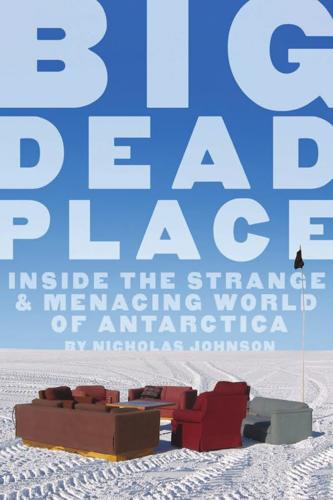
Big Dead Place: Inside the Strange and Menacing World of Antarctica
by
Nicholas Johnson
Published 31 May 2005
About a week after New Year’s, a strange expedition arrived in snowbugs. They included a Mir cosmonaut who planned to be the first to fly a hot air balloon over the South Pole, and a Russian orthodox priest who wanted to be the first to hold a mass at both Poles. A few weeks before they arrived, Rex and some friends had built a 12-foot-tall snow replica of an Easter Island head near the geographic pole. Rex wrote in an email: “The priest was very disturbed by the sculpture. He felt it was pagan in nature and did not want to hold a mass in its presence. We explained that it was only for fun and that we did not worship it. He was wary however.” While tourists on plane flights are generally either ignored or treated to hairt-rigger courtesy, Polies are more enthusiastic about cross-continent expeditioners who actually work for their glory.
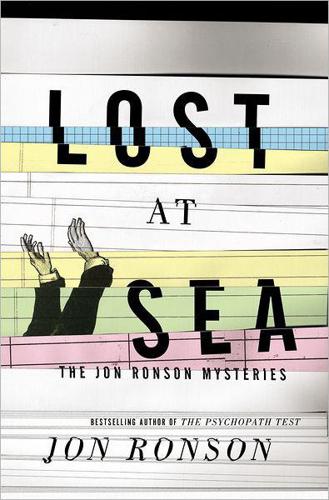
Lost at Sea
by
Jon Ronson
Published 1 Oct 2012
“You don’t really hate her mom. But for this moment when you’re trying to fuck this girl, fuck her! And that’s what we mean when we say fuck scientists. Sometimes they kill all the cool mysteries away. When I was a kid, they couldn’t tell you how pyramids were made. . . .” “Like Stonehenge and Easter Island,” says Shaggy. “Nobody knows how that shit got there.” “But since then, scientists go, ‘I’ve got an explanation for that.’ It’s, like, fuck you! I like to believe it was something out of this world.” Violent J’s real name is Joseph Bruce, Shaggy’s is Joseph Utsler. They’re in their late thirties.
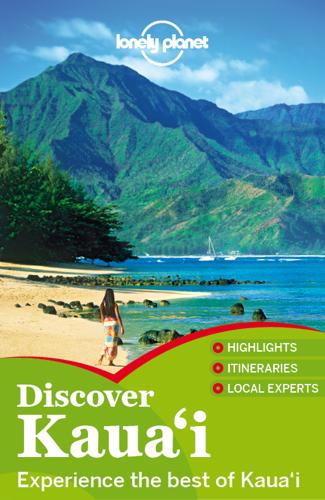
Discover Kaua'i Travel Guide
by
Lonely Planet
SMITH’S TROPICAL PARADISE Gardens ( 821-6895; www.smithskauai.com/tropi cal_garden.html; Wailua River Marina; adult/child 3-12 $6/3; 8:30am-4pm) Other gardens might have fancier landscaping or loftier goals, but you can’t beat Smith’s for value. For $6, you can leisurely stroll a loop trail past a serene pond, grassy lawns and island-themed gardens. The setting can seem Disney-esque, with an Easter Island replica and tour trams, but it’s appealingly unpretentious and large enough to accommodate all. The Smith’s family-run luau ( Click here ) is held on the garden grounds. KAMOKILA HAWAIIAN VILLAGE Village Offline map ( 823-0559; Kuamo'o Rd; self-guided tour adult/child 5-12 $5/3; 9am-5pm; ) While not a must-see, this replica village is a pleasant diversion, especially for kids.
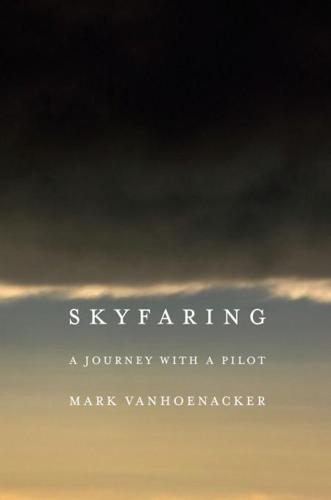
Skyfaring: A Journey With a Pilot
by
Mark Vanhoenacker
Published 1 Jun 2015
This no-man’s-sky splits Norway’s Bodø and Russia’s Murmansk like a knife, as if it were created by some blistering of the skies since they were first charted, or in an aerial version of how new islands rise from volcanoes in the sea. Another remaining nameless realm of sky lies in the Pacific, west of the Galapagos, north of the sky land Isla da Pascua—Easter Island. These blank spots are not what we would expect to find in the realm of the airplanes more often associated with the dispelling of the world’s final mysteries of place. In Africa the region Brazzaville answers to Brazza. The quality of radio transmissions is not always good here and it is often said twice, loudly.

A Place for Everything: The Curious History of Alphabetical Order
by
Judith Flanders
Published 6 Feb 2020
Josephine Bacon, Deke Dusinbere and Ian McMorran ([Paris], Flammarion, 2002), pp. 45ff; Henry George Fischer, ‘The Origin of Egyptian Hieroglyphs’, in Senner, The Origins of Writing, pp. 59–76. 6. Peter T. Daniels, ‘Grammatology’, in Daniels and Bright, The World’s Writing Systems, pp. 1–2. The three he lists are Sumerian/Egyptian, Chinese and Mesoamerican. There is some question around the runes of Rapa Nui (Easter Island). These RongoRongo glyphs have yet to be deciphered, and it is not certain that they are a full writing script. If they are, they are the sole independent Polynesian script, and a fourth to be added to the above list. 7. William G. Bolts, ‘Early Chinese Writing’, in Daniels and Bright, The World’s Writing Systems, pp. 191–4. 8.

B Is for Bauhaus, Y Is for YouTube: Designing the Modern World From a to Z
by
Deyan Sudjic
Published 17 Feb 2015
The more superficially sophisticated that the world appears to become, the more its public rituals signal that its underlying preoccupations remain as intoxicatedly atavistic as they have ever been. Like the Olympic Games and the Grand Prix circuit, the expo movement comes wrapped in the appearance of a glossy sense of modernity. For all the alibis of urban renewal, the real significance of the expo is closer to the motivations of the Easter Island head builders, or the ritual festivals of the Mayans. They are massively profligate undertakings that involve pouring huge resources into events that in the case of the Grand Prix races last less than two hours. The calculations of everyday reality do not apply. These are events that are to be understood as reflecting national prestige, or the imposition of cohesion, or else the rampant pursuit of sheer spectacle for the sake of spectacle.
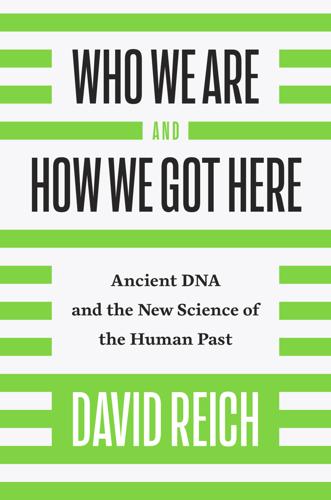
Who We Are and How We Got Here: Ancient DNA and the New Science of the Human Past
by
David Reich
Published 22 Mar 2018
After thirty-three hundred years ago, ancient peoples making pottery in a style called Lapita appeared just to the east of New Guinea and soon afterward started expanding farther into the Pacific, quickly reaching Vanuatu three thousand kilometers from New Guinea. It took only a few hundred more years for them to spread through the western Polynesian islands including Tonga and Samoa, and then, after a long pause lasting until around twelve hundred years ago, they spread to the last habitable Pacific islands of New Zealand, Hawaii, and Easter Island by eight hundred years ago. The Austronesian expansion to the west was equally impressive, reaching Madagascar off the coast of Africa nine thousand kilometers to the west of the Philippines at least thirteen hundred years ago, and explaining why almost all Indonesians today as well as people from Madagascar speak Austronesian languages.44 Mark Lipson in my laboratory identified a genetic tracer dye for the Austronesian expansion—a type of ancestry that is nearly always present in peoples who today speak Austronesian languages.
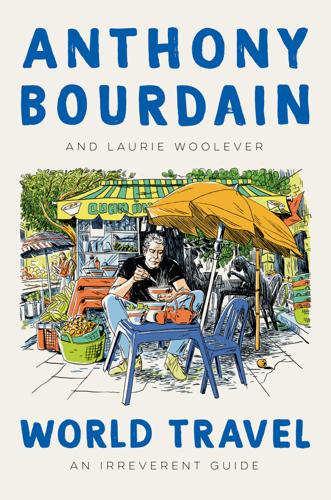
World Travel: An Irreverent Guide
by
Anthony Bourdain
and
Laurie Woolever
Published 19 Apr 2021
If you see four police officers or construction workers crouched up on plastic stools at a noodle stall, that’s the place to go.” PLAIN OF JARS * * * The Plain of Jars is a collection of thousands of massive limestone cups whose origins remain unknown, scattered over a wide area of Laos’s Xiangkhoang Province. It’s no surprise that the plain, which is reminiscent of Stonehenge or Easter Island, but far less visited, piqued Tony’s interest. “From the first time I ever read about Laos, the Plain of Jars sounded so mysterious and enticing. You want to know, right away, ‘What does that look like? Where is it? What is it?’ The very name resonated in my overheated imagination as a young man reading of Colonel Kurtz–like spies leading opium-growing hill tribes in a battle, in a secret conflict.”

Gene Eating: The Science of Obesity and the Truth About Dieting
by
Giles Yeo
Published 3 Jun 2019
These tended to be processed, higher in sugar and refined flour and therefore much more calorically dense, and critically, a world away from their traditional diet. This mix of Pima genes with the new diet resulted in a rapid increase in levels of obesity. Colonisation of the Polynesian Islands took place over nearly three millennia, beginning in the Philippines and New Guinea in around 1500 BC, Samoa in 800 BC, Hawaii and Easter Island not until 900 AD, with New Zealand the last to be colonised in 1200 AD. Given the geographic isolation of these tiny islands in an absolutely enormous area of the South Pacific, their colonisation is really a testament to human endeavour. The early Polynesians would first have had to survive canoe journeys of many weeks, and then, having arrived on small Pacific islands (atolls even), they would have to live and thrive.
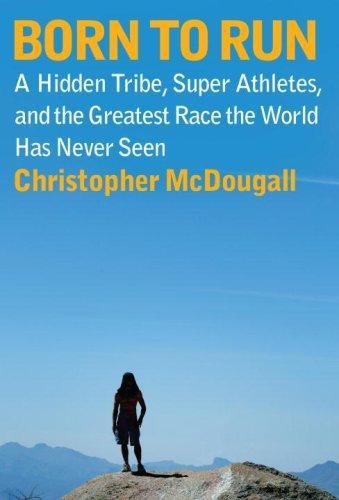
Born to Run: A Hidden Tribe, Superathletes, and the Greatest Race the World Has Never Seen
by
Christopher McDougall
Published 5 May 2009
I kept my eyes on Caballo’s sandaled feet, trying to duplicate his odd, sort of tippy-toeing steps. I had my head down so long, I didn’t notice at first that we’d left the forest. “Wow!” I exclaimed. The sun was just rising over the Sierras. Pine smoke scented the air, rising from dented stovepipes in the lodge-pole shacks on the edge of town. In the distance, giant standing stones like Easter Island statues reared from the mesa floor, with snow-dusted mountains in the background. Even if I hadn’t been sucking wind, I’d have been breathless. “I told ya,” Micah gloated. We’d hit our turnaround point, but even though I knew it would be foolish for me to try going more than eight miles, it was such a kick loping these trails that I hated heading back.

Whole Earth Discipline: An Ecopragmatist Manifesto
by
Stewart Brand
Published 15 Mar 2009
Two celebrated commentators worth analyzing are Bjørn Lomborg, author of The Skeptical Environmentalist (2001), and Amory Lovins. I once heard a Lomborg fan ask Jared Diamond what he thought of Lomborg’s book. Diamond’s answer, as I recall it, was: “The problem is, Lomborg argues from details. He says the ecological collapse of Easter Island offers no general lessons because it was due to the fragility of one kind of palm tree. Arguing with that kind of reasoning is like arguing with a Creationist about some inverted geology they’ve found in Texas that they say disproves Darwin. If you take the time to research their example and disprove their interpretation, you find out it doesn’t matter.
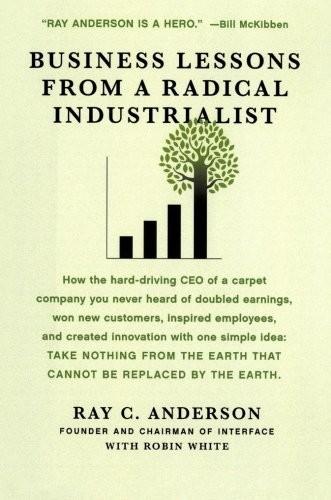
Business Lessons From a Radical Industrialist
by
Ray C. Anderson
Published 28 Mar 2011
In 2020, through natural design, Interface is the first name in restorative commerce; a place where everything connects. Reading those results added another proudest moment to my list, and I think you can see why. In his book Collapse, Jared Diamond makes the point that the forces that rose up and overwhelmed such diverse societies as the Greenland Norse and the Polynesians of Easter Island—environmental destruction, population overshoot, and resource depletion—need not be our fate. “Collapse isn’t inevitable,” he wrote, “but depends on a society’s choices.” I’ve made mine, and I’ve never had a reason to turn back. Look at those six “2020 statements” and imagine your company, your university, your town’s name instead of ours.

Wireless
by
Charles Stross
Published 7 Jul 2009
Here is what the expedition has been looking for all along, the evidence that they are not alone. “My God.” Misha swears, shocked into politically incorrect language. “Marx,” says Gagarin, studying the craggy features of the nearest head. “I’ve seen this before, this sort of thing. The Americans have a memorial like it. Mount Rushmore, they call it.” “Don’t you mean Easter Island?” asks Misha. “Sculptures left by a vanished people . . .” “Nonsense! Look there, isn’t that Lenin? And Stalin, of course.” Even though the famous moustache is cracked and half of it has fallen away from the cliff. “But who’s that next to them?” Gagarin brings his binoculars to focus on the fourth head.

The Great Escape: Health, Wealth, and the Origins of Inequality
by
Angus Deaton
Published 15 Mar 2013
Many threats could bring us down. Climate change is the most obvious, and there is no clear solution that is politically feasible. That private interest can triumph over public need is unforgettably captured in Jared Diamond’s musing about what might have been going on in the head of the person who cut down the last tree on Easter Island.1 Wars have not ceased. Dangerous politics are everywhere. Imagine the convulsion that could consume the Chinese leadership when China’s economic growth comes to a stop, as history suggests it will. An invasion of Taiwan is not a far-fetched response, and it could be a fatal misadventure. The world has changed much in the past fifty years, but the nature of the Chinese leadership has changed much less, and we should not rule out another disaster as bad as Mao Zedong’s Great Famine.
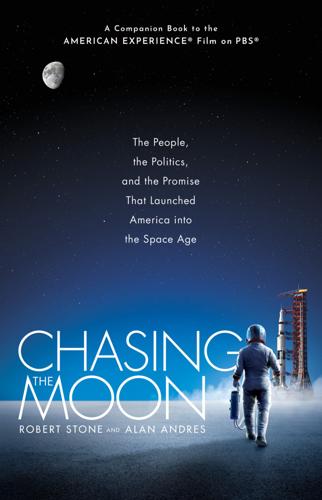
Chasing the Moon: The People, the Politics, and the Promise That Launched America Into the Space Age
by
Robert Stone
and
Alan Andres
Published 3 Jun 2019
The Saturn V was the physical creation of the mind and hand of the human species, a work of imagination conceived by beings composed of living cells, beings who evolved from aquatic life on a small planet orbiting a minor star. The launch of Apollo 11 followed in the tradition of the early explorers who expanded out of Africa’s Great Rift Valley and extended their presence to nearly every part in the world. Like Stonehenge, the Pyramids, the great cathedrals, and the statues on Easter Island, Apollo was an enterprise guided by the human genetic code, which over the course of hundreds of thousands of years had favored those who could dream, reason, persist, and create. A technological marvel, a manifestation of political will, or, perhaps, a work of cosmic conceptual art, Apollo 11 defined what it was to be human.
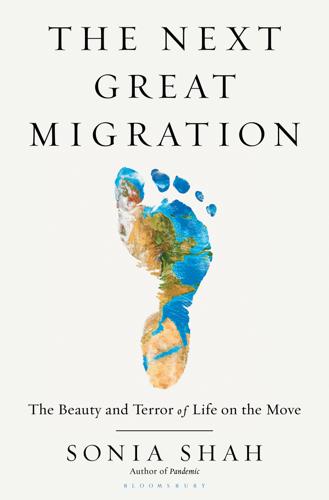
The Next Great Migration: The Beauty and Terror of Life on the Move
by
Sonia Shah
Linguistic, archaeological, and ancient DNA evidence45 has shown that prehistoric people migrated from Southeast Asia into the Pacific in at least three distinct waves. First, people crossed from China to Taiwan and the Philippines. Then they covered the open ocean to reach Vanuatu and Samoa. Finally, they reached the remotest islands of Polynesia, such as Hawaii and Easter Island. They hadn’t come from Peru, and they hadn’t arrived by accident. The anthropologist Ben Finney estimates that over the millennia of prehistoric migrations into Polynesia, upward of a half-million migrants likely lost their lives at sea. But Homo migratio pressed onward regardless. Experts now widely recognize their migration46 as “arguably the most expansive and ambitious maritime dispersal of humans across any of the world’s seas or oceans,” as a 2016 paper in the Proceedings of the National Academy of Sciences put it.
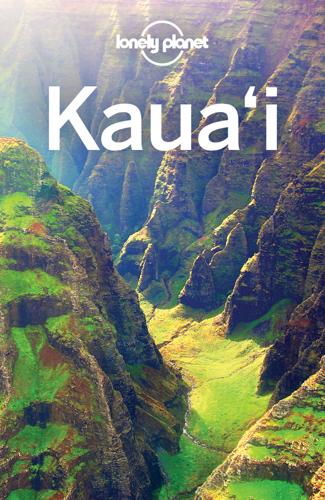
Lonely Planet Kauai
by
Lonely Planet
,
Adam Karlin
and
Greg Benchwick
Published 18 Sep 2017
Kamokila Hawaiian Village, Wailua | Peter Bischoff/Stringer/Getty Images © Smith's Tropical ParadiseGARDENS ( MAP GOOGLE MAP ; %808-821-6895; www.smithskauai.com; adult/child 3-12yr $6/3; h8:30am-4pm; c) Other gardens might have fancier landscaping, but you can’t beat Smith’s for value. Take a leisurely stroll along a mile-long loop trail past a serene pond, grassy lawns and island-themed gardens. The setting can seem Disney-esque, with an Easter Island moai statue replica, but it’s as appealing as it is unpretentious. Keahua ArboretumPARK ( MAP GOOGLE MAP )F Sitting prettily at the top of Kuamoʻo Rd, this arboretum has grassy fields, a gurgling stream and groves of rainbow eucalyptus and other towering trees. Locals come here to picnic and to swim in the freshwater stream and pools, but be aware that the water is infected with leptospira bacteria.

The Coming Wave: Technology, Power, and the Twenty-First Century's Greatest Dilemma
by
Mustafa Suleyman
Published 4 Sep 2023
All the most historically extreme parts of our existence appear utterly banal, and so for the most part we carry on our lives as if they can go on indefinitely. Most of those around us, up to and including our leaders, do the same. And yet, nothing lasts forever. Throughout history societal collapses are legion: from ancient Mesopotamia to Rome, the Maya to Easter Island, again and again it’s not just that civilizations don’t last; it’s that unsustainability appears baked in. Civilizations that collapse are not the exception; they are the rule. A survey of sixty civilizations suggests they last about four hundred years on average before falling apart. Without new technologies, they hit hard limits to development—in available energy, in food, in social complexity—that bring them crashing down.
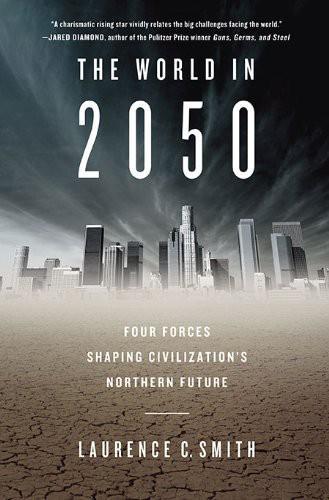
The World in 2050: Four Forces Shaping Civilization's Northern Future
by
Laurence C. Smith
Published 22 Sep 2010
Might Russia one day, its population falling and needful of immigrants, decide a smarter alternative to a 2,500-kilometer-long Sibaral canal is to simply invite former Kazakh and Uzbek cotton farmers to abandon their dusty fields and resettle in Siberia, to work in the gas fields? Such questions demand consideration of what makes civilizations work in the first place. In his book Collapse, my UCLA colleague Jared Diamond scours human history to ask the question of why civilizations fail. By studying past collapses like Easter Island and Rwanda, and close calls, like eighteenth-century Japan, he identifies five key dangers that can threaten an existing society. In no particular order, they are self-inflicted environmental and ecosystem damage, loss of trading partners, hostile neighbors, adverse climate change, and how a society chooses to respond to its environmental problems.
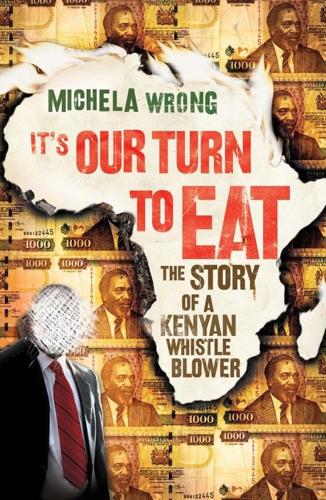
It's Our Turn to Eat
by
Michela Wrong
Published 9 Apr 2009
It was a bully's physique, but no bully ever walked with his tentative, splay-footed step, the step of a man anxious not to tread on smaller mortals milling below. He wore his hair very short, snipped to virtual baldness to reveal a bull neck and a formidable jaw, something of a family feature. Faces in the Githongo family, I would later discover, had the all-weather implacability of Easter Island sculptures. He was a Kikuyu, but his enemies would later claim that he didn't look as though he belonged: too big, too tall, too dark. He photographed supremely badly – I never saw a photograph of John that made him look anything but stolid, loutish, slightly thick. Still only in his thirties, he looked older than his years, thanks to the receding hairline, deep baritone and seeming gravitas.

Hope for Animals and Their World
by
Jane Goodall
,
Thane Maynard
and
Gail Hudson
Published 1 Sep 2009
There were, of course, many letters from people who understood the importance of protecting the environment, even if they did not understand the reasons in detail. Theresa, for example, wrote: “It amazes me how spoiled-rotten Americans are, with our gas-guzzling SUVs and oversized … everything! If we don’t nurture our habitat, our entire world will become one big Easter Island!” (The full story of the fight to save the Salt Creek tiger beetle can be found on our Web site.) It is indeed true that the expense of saving an endangered species can be exorbitant, so it is fortunate that in many countries there are laws protecting life-forms threatened with extinction. Else the damage inflicted on the natural world would be even greater.
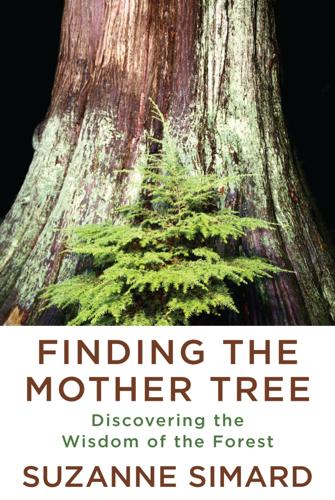
Finding the Mother Tree: Discovering the Wisdom of the Forest
by
Suzanne Simard
Published 3 May 2021
After so much planning, I was in a fever to get started labeling my seedlings. This was the most daring experiment I had ever done, with so much potential to change how we view forests, and yet at the same time it held the possibility of turning up nothing. It felt as if I were about to parachute out of a plane, maybe land on Easter Island. I was jittery with adrenaline. Once I had my results, even if we were still out of touch, I’d show Kelly the prize in person. I’d go visit him and Tiffany, our bar fight be damned. The next day, inside the tent, we tested the method we’d devised for labeling the seedlings with carbon-13. I’d purchased 99 percent pure 13C-CO2 gas straight from a special supplier, and it had arrived by mail in two gas cylinders the size of corncobs.
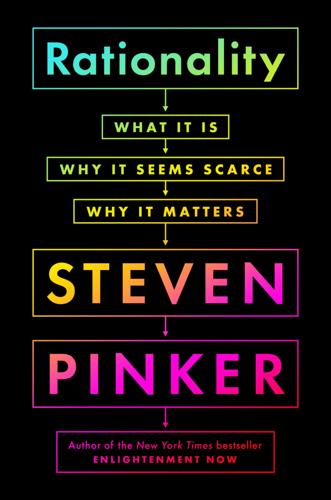
Rationality: What It Is, Why It Seems Scarce, Why It Matters
by
Steven Pinker
Published 14 Oct 2021
Various seers, cults, and ideologies have convinced their followers that the end of the world is nigh; they disagree on when, but are quick to postdate their predictions when they are unpleasantly surprised to find themselves living another day. And a quarter to a third of Americans believe we have been visited by extraterrestrials, either the contemporary ones that mutilate cattle and impregnate women to breed alien–human hybrids, or the ancient ones who built the pyramids and Easter Island statues. * * * • • • How can we explain this pandemic of poppycock? As with Charlie Brown in the Peanuts strip, it can make your stomach hurt, especially when Lucy appears to represent a large portion of our compatriots: PEANUTS © 1955 Peanuts Worldwide LLC. Dist. by ANDREWS MCMEEL SYNDICATION.

Frommer's Denver, Boulder & Colorado Springs
by
Eric Peterson
Published 1 Jan 2005
Mint (Denver), 82–83 , 92 Vail Hotel (Pueblo), 218 Van Briggle Art Pottery (Colorado Springs), 207 Velez Galeria (Colorado Springs), 207 Venice on the Creek (Denver), 97 Victor, 213 Vine Street Pub & Brewery (Denver), 110 Visas, 22–23, 230 Visitor information, 21 Boulder, 123 Colorado Springs, 173 Denver, 51 12/19/08 11:43:58 PM Grand Lake, 169 Pueblo, 217 Visit USA, 32 Voice over Internet protocol (VoIP), 42 Volunteer travel, 40 W aldo Canyon Trail, 204 Walking Stick (Pueblo), 222 Walking tours, Denver, 92–94 Walnut Brewery (Boulder), 152 Walter Orr Roberts Weather Trail (Boulder), 139 Washington Park Recreation Center (Denver), 99 Watersports, Boulder, 148 Waterton Canyon, 96 Water World (Denver), 91–92 Weekends (Boulder), 150 West End Tavern (Boulder), 153 Western Museum of Mining & Industry (Colorado Springs), 199 Western Union, 227, 229 West Nile virus, 35 Where the Buffalo Roam (Denver), 105 Whitewater Kayak Course (Boulder), 139 Whole Foods (Boulder), 150 Whole Foods (Denver), 105 The Wildlife Experience (Denver), 87 Wildlife viewing The Nature and Raptor Center (Pueblo), 219 Rocky Mountain Arsenal National Wildlife Refuge (Denver), 90 Rocky Mountain National Park, 164 Willow Creek Trail, 98 Will Rogers Shrine of the Sun (Colorado Springs), 201 The Wines of Colorado (Colorado Springs), 208 Wings Over the Rockies Air & Space Museum (Denver), 87–88 Winter Park Resort (near Denver), 99 Wizard’s Chest (Denver), 107 Wool Market (Estes Park), 27 World Arena (Colorado Springs), 195 14_382288-bindex.indd 243 World Figure Skating Museum & Hall of Fame (Colorado Springs), 199–200 The World Outdoors (Boulder), 41 The World Outdoors (Denver), 95 World’s Largest Christmas Lighting Display (Denver), 28 Writer Square (Denver), 94 Wynkoop Brewing Company (Denver), 110, 111 Xeriscape Garden (Boulder), 138 Your Guide to Outdoor Adventure, 21 Zoos Colorado Springs, 201 Denver, 89 Pueblo, 219 ACCOMMODATIONS — D ENVER AND ENVIRONS Brown Palace Hotel, 59 Burnsley All Suite Hotel, 63 Capitol Hill Mansion Bed & Breakfast, 65 Castle Marne Bed & Breakfast, 65 Chatfield State Park, 68 Chief Hosa Campground, 68 Comfort Inn, 58 Courtyard by Marriott at DIA, 58 The Curtis, 63 Golden Hotel, 118 Hampton Inn DIA, 58 H&H Motor Lodge (Idaho Springs), 119 Hotel Monaco, 62, 66 Hotel Teatro, 62 Hotel VQ, 59 Hyatt Regency Denver, 62–63 Innkeeper of the Rockies, 67–68 Jet Hotel, 64 JW Marriott, 66–67 La Quinta Inn Downtown, 58–59 La Quinta Inn-Golden, 118 Loews Denver Hotel, 66, 67 Lumber Baron, 65–66 Oxford Hotel, 64 Peck House Hotel and Restaurant (Georgetown), 121 Queen Anne Bed & Breakfast Inn, 66 Ritz-Carlton, Denver, 63 Table Mountain Inn (Golden), 118 The Timbers Hotel, 67 The Warwick, 64 243 ACCOMMODATIONS — B OULDER AND ENVIRONS The Alps, 127 Best Western Boulder Inn, 126 Boulder Creek Quality Inn and Suites, 126 Boulder International Hostel, 132 Boulder Marriott, 127 Boulder Outlook, 131 Boulder University Inn, 126 The Bradley, 130 Briar Rose, 130 Colorado Chautauqua, 132 Days Inn, 126 Foot of the Mountain Motel, 131, 132 Hotel Boulderado, 130 Millennium Harvest House, 130–131 St Julien, 127 ACCOMMODATIONS — COLORADO S PRINGS AND ENVIRONS Abriendo Inn (Pueblo), 222 Alpine Trail Ridge Inn (Estes Park), 167 Antlers Hilton Hotel, 180 Baldpate Inn (Estes Park), 167–168 Best Value Inn Villa Motel, 182, 183 Best Western Eagle Ridge Inn & Suites (Pueblo), 222 Best Western Royal Gorge Motel (Cañon City), 216 Best Western Silver Saddle (Estes Park), 167 Black Bear Lodge (Grand Lake), 170 12/19/08 11:43:58 PM 244 Boulder Brook (Estes Park), 168 The Broadmoor, 177, 182 Cheyenne Mountain Resort, 180 Chipita Lodge, 181 Cliff House at Pikes Peak, 180–181 Comfort Inn (Pueblo), 222 Crowne Plaza Colorado Springs Hotel, 177 Daven Haven Lodge (Grand Lake), 170 Doubletree Hotel World Arena, 177 Eastholme in the Rockies, 181–182 Econo Lodge Downtown, 177 Garden of the Gods Campground, 183 Grand Lake Terrace Inn, 170 Hampton Inn (Pueblo), 222 Holden House 1902 Bed & Breakfast Inn, 182 The Inn at Grand Lake, 170 Merlino’s Belvedere (Cañon City), 216 Old Town GuestHouse, 181 The Orchard Bed & Breakfast (Brookside), 216 Pueblo KOA, 223 Pueblo South KOA, 223 Rodeway Inn & Suites Garden of the Gods, 177 Stanley Hotel (Estes Park), 168 Super 8 (Colorado Springs), 177 Super 8 (Estes Park), 167 Travel Inn, 183 Travelodge (Estes Park), 167 Two Sisters Inn, 182–183 R ESTAURANTS — D ENVER AND ENVIRONS Appaloosa Grill, 73 Bayou Bob’s, 75 Beau Jo’s Colorado Style Pizza (Idaho Springs), 120 Bistro Vendome, 69 Brewery Bar II, 76 The Bridgewater Grill (Golden), 118 Buckhorn Exchange, 68–69 Casa Bonita (Lakewood), 69, 78 Chipotle, 74 14_382288-bindex.indd 244 Denver ChopHouse & Brewery, 69, 72 Duo, 76–77 El Tejado, 76 Elway’s, 75 Elway’s Downtown, 75 Encore, 77 The Fort, 75–76 The Happy Cooker (Georgetown), 121 Jack-N-Grill, 76, 78 Las Delicias, 76 Le Central, 73 Lime, 76 Little Anita’s, 76 Lola, 77 McCormick’s Fish House & Bar, 73–74 Old Capitol Grill (Golden), 118 Palace Arms, 69 The Palm, 72 Panzano, 72 Paramount Cafe, 75 Peck House Hotel and Restaurant (Georgetown), 121 Pete’s Kitchen, 74 Red Ram Restaurant & Saloon (Georgetown), 121 Red Square Euro Bistro, 74 Rioja, 72 Snooze, 74 Strings, 72–73 Sushi Den, 77 Table 6, 77–78 T-Wa Inn, 78 WaterCourse Foods, 78 Wazee Supper Club, 75 Wynkoop Brewing Company, 69, 74 Zengo, 73 R ESTAURANTS — B OULDER AND ENVIRONS Abo’s Pizza, 137 Amu, 135 Black Cat, 133 Bookend Cafe, 138 Boulder Dushanbe Teahouse, 135, 138 Corner Bar, 137 Flagstaff House Restaurant, 133 14th Street Bar & Grill, 135–136 Frasca, 133–134 Illegal Pete’s, 137 Jax Fish House, 136 John’s Restaurant, 134 The Kitchen, 134 Lucile’s, 137 Mateo, 136 The Mediterranean, 136 Q’s Restaurant, 134 Radda Trattoria, 136 Rio Grande, 137 Sherpa’s, 137–138 Sunflower, 136–137 Sushi Zanmai, 135 Trident Booksellers & Café, 138 R ESTAURANTS — COLORADO S PRINGS AND ENVIRONS Adam’s Mountain Cafe, 189 Amanda’s Fonda, 189 Backstreet Steakhouse, 170–171 The Blue Star, 185–186 Charles Court, 184 Cliff House Dining Room, 184 Craftwood Inn, 184–185 Dunraven Inn (Estes Park), 168 Dutch Kitchen, 189 Edelweiss Restaurant, 187, 188 The Famous, 185 Giuseppe’s Old Depot Restaurant, 188 M, 187 Grumpy Gringo (Estes Park), 168–169 La’au’s, 189 La Petite Maison, 186 La Renaissance (Pueblo), 223 Margarita at PineCreek, 186 Marigold Café and Bakery, 187–188 Meadow Muffins, 188, 190 Patti’s Restaurant (Pueblo), 223 Phantom Canyon Brewing Co., 188 Ritz Grill, 188 Sagebrush BBQ & Grill (Grand Lake), 171 Star Bar & Lunch (Pueblo), 223 Summit, 185 The Tavern, 186–187 The View (Estes Park), 169 Walter’s Bistro, 185 The Warehouse, 187 12/19/08 11:43:59 PM FROMMER’S® COMPLETE TRAVEL GUIDES Alaska Amalfi Coast American Southwest Amsterdam Argentina Arizona Atlanta Australia Austria Bahamas Barcelona Beijing Belgium, Holland & Luxembourg Belize Bermuda Boston Brazil British Columbia & the Canadian Rockies Brussels & Bruges Budapest & the Best of Hungary Buenos Aires Calgary California Canada Cancún, Cozumel & the Yucatán Cape Cod, Nantucket & Martha’s Vineyard Caribbean Caribbean Ports of Call Carolinas & Georgia Chicago Chile & Easter Island China Colorado Costa Rica Croatia Cuba Denmark Denver, Boulder & Colorado Springs Eastern Europe Ecuador & the Galapagos Islands Edinburgh & Glasgow England Europe Europe by Rail Florence, Tuscany & Umbria Florida France Germany Greece Greek Islands Guatemala Hawaii Hong Kong Honolulu, Waikiki & Oahu India Ireland Israel Italy Jamaica Japan Kauai Las Vegas London Los Angeles Los Cabos & Baja Madrid Maine Coast Maryland & Delaware Maui Mexico Montana & Wyoming Montréal & Québec City Morocco Moscow & St.
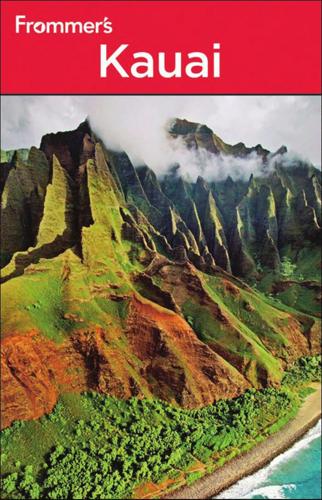
Frommer's Kauai
by
Jeanette Foster
Published 27 Feb 2004
It’s the aloha spirit. 1 H I S TO R Y 1 0 1 Paddling outrigger canoes, the first ancestors of today’s Hawaiians followed the stars and birds across a trackless sea to Hawaii, which they called “the land of raging fire.” Those first settlers were part of the great Polynesian migration that settled the vast triangle of islands stretching from New Zealand in the southwest to Easter Island in the east to Hawaii in the north. No one is sure exactly when they came to Hawaii from Tahiti and the Marquesas Islands, some 2,500 miles to the south, but a dog-bone fishhook found at the southernmost tip of the Big Island has been carbon-dated to a.d. 700. An entire Hawaiian culture arose from these settlers.
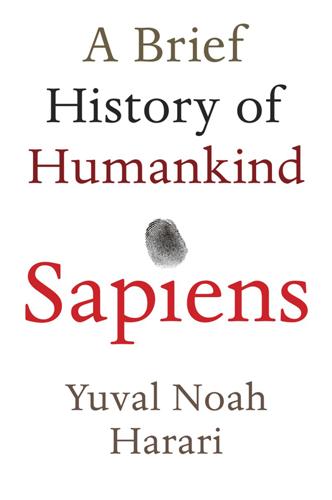
Sapiens: A Brief History of Humankind
by
Yuval Noah Harari
Published 1 Jan 2011
They killed off, directly or indirectly, hundreds of species of birds, insects, snails and other local inhabitants. From there, the wave of extinction moved gradually to the east, the south and the north, into the heart of the Pacific Ocean, obliterating on its way the unique fauna of Samoa and Tonga (1200 BC); the Marquis Islands (AD 1); Easter Island, the Cook Islands and Hawaii (AD 500); and finally New Zealand (AD 1200). Similar ecological disasters occurred on almost every one of the thousands of islands that pepper the Atlantic Ocean, Indian Ocean, Arctic Ocean and Mediterranean Sea. Archaeologists have discovered on even the tiniest islands evidence of the existence of birds, insects and snails that lived there for countless generations, only to vanish when the first human farmers arrived.
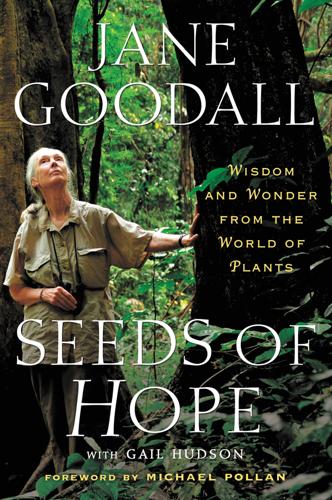
Seeds of Hope: Wisdom and Wonder From the World of Plants
by
Jane Goodall
Published 1 Apr 2013
Martí Boada, and Sònia Sànchez, a member of his group, told me of a really interesting project they are doing—restoring genetic strains of apples in Spain. I look forward to learning more about that. And Dr. Rod Morris sent me some terrific stories about endangered trees, including the Sophora toromiro on Easter Island. I was especially pleased to hear that you believe that it may indeed have been the extinction of the dodo that prevented the germination of the forest tree, Tambolo coque. (An ingenious theory that someone debunked.) I first knew Alex Chepstow-Lusty as a student at Gombe. You told me an extraordinary detective story: as a result of analyzing a sediment core that you took from a small lake in Peru—painstaking work counting pollen grains and identifying the plants that had produced them all those years ago—you were able to piece together the story of how llama dung enabled the Inca to grow corn at a higher altitude than had been possible before.
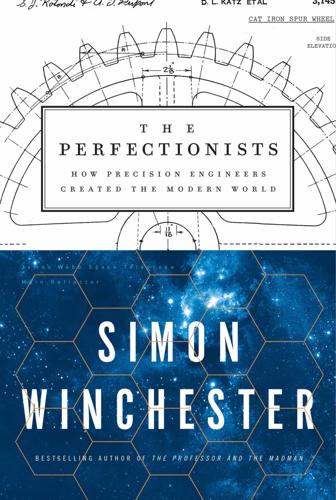
The Perfectionists: How Precision Engineers Created the Modern World
by
Simon Winchester
Published 7 May 2018
The bounty would be put onto each evening train to the junction at Sendai, and then onto one of the southbound expresses to the city, two hundred miles away: bidders at the Tsukiji morning market would buy it for good prices. Minamisanriku was in consequence well off, contented, and settled—though eternally aware of the ocean beyond the cliffs and the violence it could do. Considerable damage had already been done by a tsunami in 1960. As it had been caused by an earthquake in Chile, the Japanese chose an Easter Island moai as an additional town mascot, to act as co-talisman with the more venerable figure of the town octopus. In no more than one hour on the March Friday in 2011, everything that had for so long been so settled about Minamisanriku was rendered into splintered driftwood, twisted iron, and broken and drowned bodies.

First Time Ever: A Memoir
by
Peggy Seeger
Published 2 Oct 2017
Thirty years of singing in this country, dozens of recordings, radio, television, awards, numerous foreign tours under my belt and the man wants a demo? I just made it to the loo before breaking down. No matter how small, a fragment of broken pottery can be broken into even smaller pieces. When I returned, Irene was standing with her Easter Island face holding our coats. En route home, I learned that I had been deemed (a) not commercially viable and (b) no spring chicken. Looking back on it, the little autumn rooster was right about (a), but then that could be said of most mature folk musicians trying to hold onto their ethics in the commercial world.
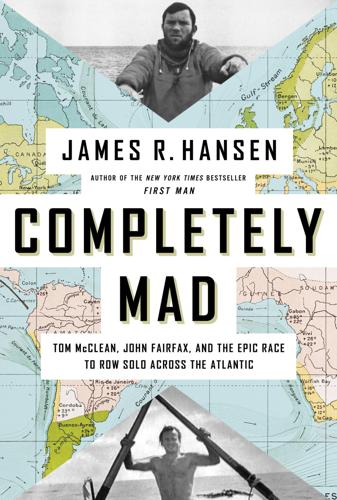
Completely Mad: Tom McClean, John Fairfax, and the Epic of the Race to Row Solo Across the Atlantic
by
James R. Hansen
Published 4 Jul 2023
If I ever made any such daring ocean voyage, it would have to be in a large outrigger canoe like those that the ancient Austronesian people took across the South Pacific, in the long process (from 1500 BCE to 1200 CE) populating the islands of Oceania from Formosa and the Philippines to Hawaii and Easter Island. Scholars suggest that the outriggers canoes used in the Austronesian Expansion could hold as many as 80 people with room to spare for some domesticated animals and a good stock of water and food. But the outrigger that I had in mind for my journey did not require such great capacity. In my canoe I only needed a crew of six, leaving plenty of space for drinks and sandwiches.

Behind the Berlin Wall: East Germany and the Frontiers of Power
by
Patrick Major
Published 5 Nov 2009
Periodically, GDR border troops would appear in the night through secret doors and respray its western face off-white, although they were fighting a losing battle. Within weeks the graffiti would be back. More accomplished street artists such as Thierry Noir and Christophe Bouchet became famous for their pop art, including lines of Easter Island-like cartoon heads or multiple Warholesque statues of liberty, preaching speed as the essence of their approach. Keith Haring’s primitivist paintings drew on American street art. In 1986 he produced a 100-metre section by Checkpoint Charlie of intertwining aboriginal figures against a yellow background.
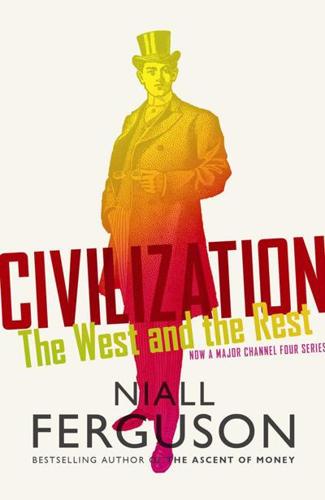
Civilization: The West and the Rest
by
Niall Ferguson
Published 28 Feb 2011
When Kennedy’s book was published, many people in the United States shared his fear that their own country might be succumbing to this disease. More recently, it is the anthropologist Jared Diamond who has captured the public imagination with a grand theory of rise and fall. His book, Collapse: How Societies Choose to Fail or Succeed (2005), is cyclical history for the Green Age: tales of societies, from seventeenth-century Easter Island to twenty-first-century China, that risked, or now risk, destroying themselves by abusing their natural environments. Diamond quotes John Lloyd Stevens, the American explorer and amateur archaeologist who discovered the eerily dead Mayan cities of Mexico: ‘Here were the remains of a cultivated, polished, and peculiar people, who had passed through all the stages incident to the rise and fall of nations, reached their golden age, and perished.’7 According to Diamond, the Maya fell into a classic Malthusian trap as their population grew larger than their fragile and inefficient agricultural system could support.

The Woman Who Smashed Codes: A True Story of Love, Spies, and the Unlikely Heroine Who Outwitted America's Enemies
by
Jason Fagone
Published 25 Sep 2017
If William had been older or better trained, “he could have been ruined. His definition of a cryptogram was simply a secret message that was meant to be solved, just that.” To those who had a chance to watch them both work, the minds of William and Elizebeth appeared equally amazing and equally incomprehensible. Their brains were Easter Island statues, stony and imposing. Colleagues resorted to mystical analogies. William was like a latter-day King Midas: “Everything he touched turned to plaintext.” Elizebeth’s gift for puzzles was “God-given,” “an effect without a discernible cause.” Who was the better codebreaker, William or Elizebeth?

Into the Black: The Extraordinary Untold Story of the First Flight of the Space Shuttle Columbia and the Astronauts Who Flew Her
by
Rowland White
and
Richard Truly
Published 18 Apr 2016
And although it was too late to program the new procedure into the PASS software for STS-1, Young and Crippen trained in the sim to fly the abort manually as Engle and Truly had demonstrated was possible. In time, potential TAL airfields were added in France, the UK, Morocco, the Gambia, Senegal, the Azores, Nigeria, and even Easter Island for launches out of Vandenberg. For the first Shuttle flight, though, Rota Naval Station, a US base in Spain near the Strait of Gibraltar, became the designated diversion in the event that Young and Crippen had to abort across the Atlantic. A NASA support crew was flown in days before the launch.

More: The 10,000-Year Rise of the World Economy
by
Philip Coggan
Published 6 Feb 2020
Prominent examples include the slaves transported from Africa to the Americas, the indigenous peoples whose land was seized by European settlers, or the workers who lost their lives, or their health, in unsafe factories, mines and building sites. Their stories will also be told. Economic change can also lead to environmental destruction. This is not simply the result of “capitalism”, a word that tends to be used in a very slippery fashion. The deforestation of Easter Island in the middle of the last millennium was not the result of capitalism.14 The megafauna of Australia (like the giant wombat) that were wiped out by early humans were not hunted to extinction in the pursuit of profit. Indeed, the same could be said of the North American passenger pigeon, which had flocks that could darken the skies but which proved no match for farmers with guns.
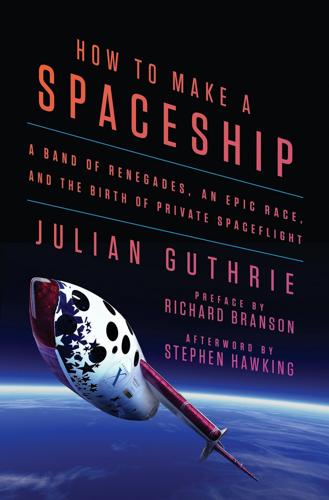
How to Make a Spaceship: A Band of Renegades, an Epic Race, and the Birth of Private Spaceflight
by
Julian Guthrie
Published 19 Sep 2016
Afterword: Space, Here I Come! by Stephen Hawking I have no fear of adventure. I have taken daredevil opportunities when they presented themselves. Years ago I barreled down the steepest hills of San Francisco in my motorized wheelchair. I travel widely and have been to Antarctica and Easter Island and down in a submarine. On April 26, 2007, three months after my sixty-fifth birthday, I did something special: I experienced zero gravity. It temporarily stripped me of my disability and gave me a feeling of true freedom. After forty years in a wheelchair, I was floating. I had four wonderful minutes of weightlessness, thanks to Peter Diamandis and the team at the Zero Gravity Corporation.

Among the Bohemians: Experiments in Living 1900-1939
by
Virginia Nicholson
Published 27 Nov 2003
Gauguin, Gaudier-Brzeska, Picasso, Braque and Epstein were immeasurably influenced by ethnographic art from Polynesia and Papua New Guinea, with its primitive, elemental forms, and soon aboriginal fetishes began to make their appearance on the tops of Bohemian bookshelves. The Epsteins were both tireless collectors of exotica. Jacob amassed such a quantity of rare ethnic sculpture that it was all but impossible to enter the house. Every room jostled with Easter Island or Benin trophies; shelves and mantelpieces were crowded with priceless objects from ancient Assyria, India, and Africa. Above his bed towered a pair of six-foot-high figures from Dutch New Guinea. There was no floor space left, and one could only reach the door to the bathroom by a narrow pathway between the pieces of sculpture.

The Matter of the Heart: A History of the Heart in Eleven Operations
by
Thomas Morris
Published 31 May 2017
Drugs were the obvious way to prevent this scarring, known as intimal hyperplasia – but how could they be delivered to the coronary arteries? Several possible methods were investigated, but in the early 1990s a number of investigators settled on the same solution: putting them in the stent itself.71 The first drug used for this purpose was sirolimus, derived from a bacterium identified in a soil sample taken from Easter Island twenty years earlier.72 Stents coated with this compound would release it slowly into the bloodstream for a few months, long enough to guard against restenosis. After the disappointments of the previous two decades physicians wanted to be absolutely sure that these devices, known as drug-eluting stents, were really an improvement on what they already had, so they were subjected to numerous clinical trials.

Fodor's Essential Belgium
by
Fodor's Travel Guides
Published 23 Aug 2022
Mercator NAUTICAL SIGHT | This handsome three-masted training ship of the Belgian merchant marine, which sailed from the 1930s to the 1960s, is now moored close to the city center, ready to sail if needed. Decks, fittings, and the spartan quarters have been kept intact, and there’s a museum of mementos brought home from the ship’s exotic voyages; during one they hauled back mysterious statues from Easter Island. EMercatordok, Vindictivelaan 1, Oostende P0494/514–335 wwww.zeilschipmercator.be A€5 CClosed Mon. Mu.ZEE ART MUSEUM | Oostende’s modern art museum contains works by Belgian contemporary artists, from 1880 to the present day, and is well represented by Pierre Alechinsky, Roger Raveel, and Paul van Hoeydonck (whose statuette, The Fallen Astronaut, was deposited on the moon by the Apollo XV crew), among others.
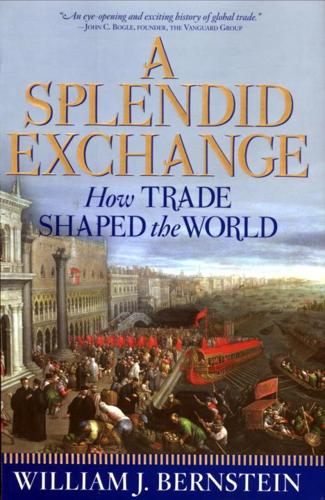
A Splendid Exchange: How Trade Shaped the World
by
William J. Bernstein
Published 5 May 2009
First occupied by aboriginal peoples tens of thousands of years ago, the archipelago was subsequently enveloped about 2000-1000 BC by the "Austronesian expansion," in which tribes from China and Taiwan, equipped with double outrigger-canoes, peopled the shores of the Indian and Pacific oceans from Madagascar to Easter Island. Empowered by the local spice trade, the aboriginal inhabitants of Ternate and Tidore managed to maintain their identity and culture while the surrounding islands succumbed to the Austronesian tide. These tiny volcanic "inner islands" grew only spices and coconuts and depended for their sustenance on the highly nutritious and productive sago palm produced on larger Moluccan "outer islands" such as Halmahera and Ceram.
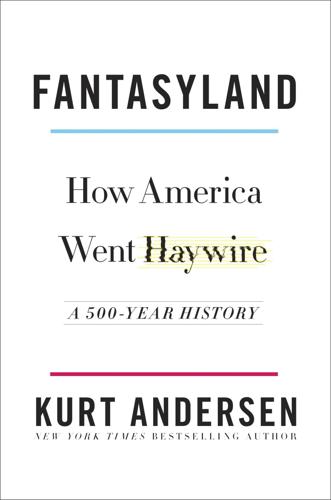
Fantasyland: How America Went Haywire: A 500-Year History
by
Kurt Andersen
Published 4 Sep 2017
The sincerely credulous are also perfect suckers, and in the late 1960s a convicted thief and embezzler named Erich von Däniken decided to take advantage of as many Americans as possible. Chariots of the Gods? posited that extraterrestrials had come to Earth thousands of years ago to help build the Egyptian pyramids, Stonehenge, and the giant stone heads on Easter Island. That book and its many sequels sold tens of millions of copies, and the Chariots documentary had a gigantic box-office take in the early 1970s. Americans were ready to believe Von Däniken’s fantasy to a degree they simply wouldn’t have been a decade earlier, before the 1960s sea change. Certainly a decade earlier NBC wouldn’t have aired an hour-long documentary in prime time based on it.
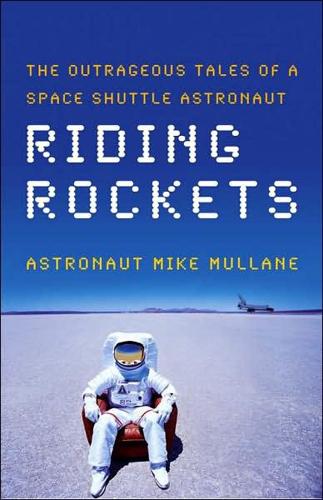
Riding Rockets: The Outrageous Tales of a Space Shuttle Astronaut
by
Mike Mullane
Published 24 Jan 2006
I was mad to get into space on this mission. But the liftoff date—originally scheduled for spring 1986—was slipping to the right. The new Vandenberg launchpad and launch control center had to be finished and checked out. The State Department had to complete its negotiations to secure shuttle abort landing rights on Easter Island’s runway, a task being made more difficult by a Soviet Union disinformation campaign that shuttle operations would destroy the island’s stone figures. The Soviets understood that most of the payloads carried out of Vandenberg would be spying on them and were doing their best to lay down obstacles.
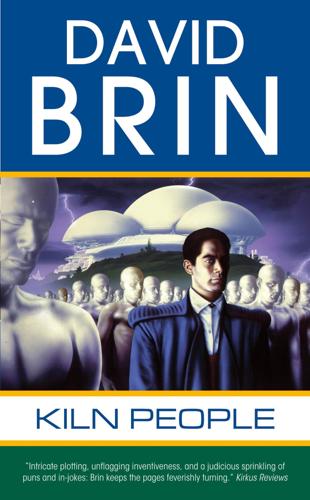
Kiln People
by
David Brin
Published 15 Jan 2002
But scheming, no matter how futile, helps pass the time. Only now I'm getting surges of weird anxiety. Flickering almost-images, too brief to recall, like fragments of a dream. When I chase them using free association, all that comes to mind is a vast row of silent figures ... like the statues of Easter Island. Or pieces on a giant chess-board. Every few minutes, there's another episode of wild, claustrophobic need. To leave this prison. To go home. To flee this stifling body I'm wearing and get back into the one that counts. One made of nearly immortal flesh. And now, something like an ugly rumor whispers, There's no me any longer to go home to anymore. 36 Kiln Street Blues ...
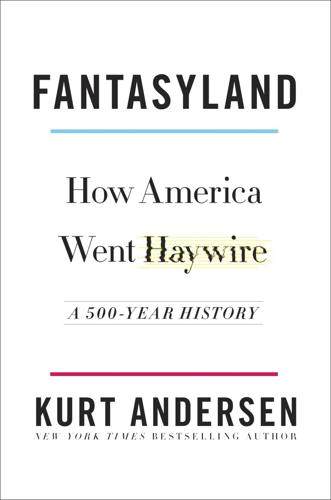
Fantasyland
by
Kurt Andersen
Published 5 Sep 2017
The sincerely credulous are also perfect suckers, and in the late 1960s a convicted thief and embezzler named Erich von Däniken decided to take advantage of as many Americans as possible. Chariots of the Gods? posited that extraterrestrials had come to Earth thousands of years ago to help build the Egyptian pyramids, Stonehenge, and the giant stone heads on Easter Island. That book and its many sequels sold tens of millions of copies, and the Chariots documentary had a gigantic box-office take in the early 1970s. Americans were ready to believe Von Däniken’s fantasy to a degree they simply wouldn’t have been a decade earlier, before the 1960s sea change. Certainly a decade earlier NBC wouldn’t have aired an hour-long documentary in prime time based on it.
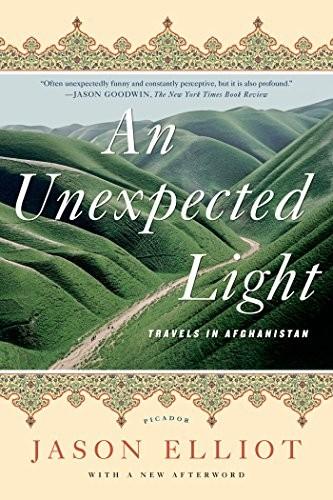
An Unexpected Light: Travels in Afghanistan
by
Jason Elliot
Published 1 Aug 2011
From here, glancing over a wingtip to the east, it was just possible to see the ice-draped peaks enclosing the steepest and wildest valleys of the entire land in Nuristan, home to insular tribes of legendary recalcitrance and the last of the country’s peoples to be converted to Islam. Before the turn of the twentieth century it was called Kafiristan, land of the unbelievers. They made their own wine and worshipped a complicated collection of spirits and deities, claimed to be descended from Alexander’s troops, and carved wooden effigies resembling the giant moai of Easter Island. But the light was beginning to fade … The peaks towered steadily higher, and land below seemed to shrink in on itself under the advancing waves of shadow. The sky began to deepen to the colour of lapis lazuli, and the solitudes its measureless dome enclosed seemed more remote then ever until – like pinpricks in the thickening curtain of night – tiny oil lanterns in the windows of houses at Ishkashim betrayed our route leading back into the Wakhān.
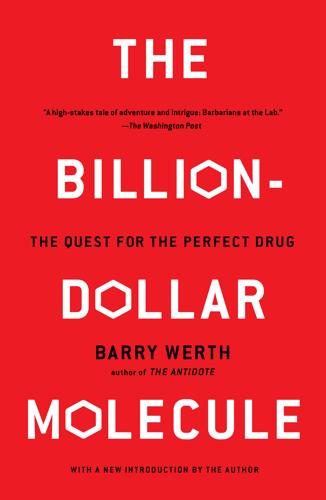
The Billion-Dollar Molecule
by
Barry Werth
As a chemist, Schreiber cared little that FK-506 was a powerful drug. What intrigued him, indeed what drove him to a kind of solipsistic rapture, was something else: its extraordinary resemblance to another microbial compound, rapamycin, which not only was immunosuppressive but also inhibited cells from reproducing. Isolated in 1975 from a soil sample from Easter Island, rapamycin was considered a possible anticancer agent, but again Schreiber was uninterested. What consumed him was the almost mystical fortuity: two microbial compounds, sharply similar structures, yet apparently different modes of action. As with any molecule, the big prize academically was figuring out how it worked—that and, of course, being first.

Aerotropolis
by
John D. Kasarda
and
Greg Lindsay
Published 2 Jan 2009
Above the entrance is the Louvre’s glass pyramid, flanked by the Winged Victory and the Venus de Milo, both eroded from acid rain. Inside on Civilization Hill are scale models of the U.S. Capitol, the Taj Mahal, and the Leaning Tower of Pisa—none more than twenty feet tall. Instead of a Hall of Presidents, there’s an animatronic Mao. In the center of the park is a lagoon in which the Pyramids, the sphinx, and Easter Island’s moai statues have been dumped. A bulldozer sluggishly dredged the pond while I watched—this was peak season, and the park was still open. It was dusk by now, and it occurred to me I hadn’t seen anyone in nearly an hour. They’d already left. EPILOGUE: OPENING DAY The consultants with their wheelie bags are already gone.
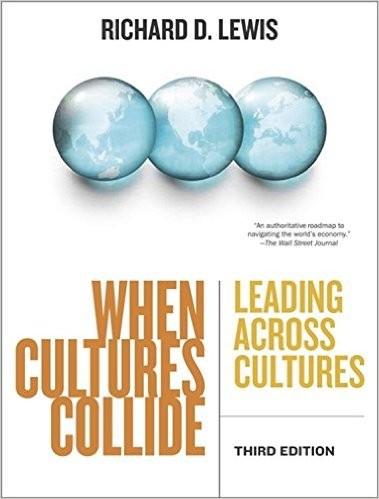
When Cultures Collide: Leading Across Cultures
by
Richard D. Lewis
Published 1 Jan 1996
As a second example, a Finn consistently making expensive telephone calls for which she need not pay will ultimately fall victim to her own inherent sense of independence, not least because she is building up a debt to her friend in Finnish Telecom. The Spaniard, on the other hand, would phone Easter Island nightly (if he could get away with it) with great relish and unashamed glee. It is by considering such matters that we realize that all that is legal is not necessarily good, and everything illegal is not necessarily bad. Swedes, Swiss and Germans do not make this discovery very easily. Americans, Belgians, Hungarians, Koreans and Australians can accept it without losing too much sleep.
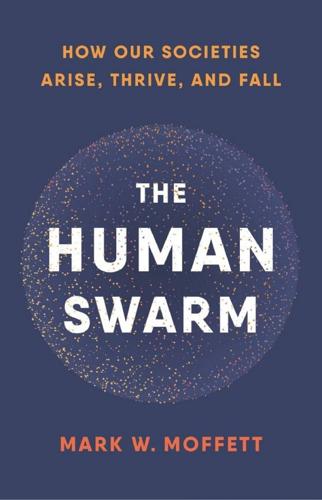
The Human Swarm: How Our Societies Arise, Thrive, and Fall
by
Mark W. Moffett
Published 31 Mar 2019
However, they stuck to their trademark Viking mode of life sufficiently to link back up again without difficulty with Vikings in Europe; but at most their separation lasted decades, their origins never passing out of living memory.4 Prehistoric peoples reached remote islands, too, but in most places either were in contact with tribes on other islands or had room to split into more than one society. Futuna had its two, and Easter Island harbored 17 adversarial giant-rock-head-erecting tribes, while in Australia the hundreds of aboriginal societies that thrived in pre-colonial times all descended from one group that landed on the continent by way of Asia. One possible historical example of a lone society can be found on Henderson.
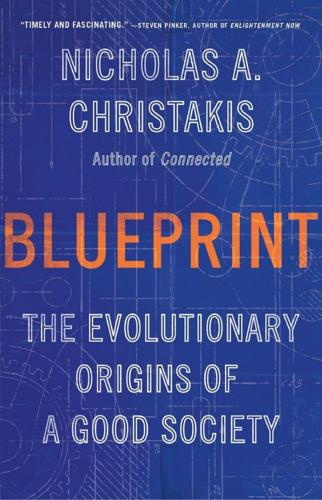
Blueprint: The Evolutionary Origins of a Good Society
by
Nicholas A. Christakis
Published 26 Mar 2019
Lee (London: Anthem Press, 2011), p. 24. 76. Fisher and Fisher, Shackleton, p. 345. Italics added. 77. Geographers Jared Diamond and Barry Rolett could not go back in time and, on a vast scale, experimentally assign inhabitants to sixty-nine different Polynesian islands in order to figure out why Easter Island was deforested and others were not. But they assumed that similar people settled these islands more or less at random, and they concluded, from this natural experiment, that the deforestation was due to geographic factors (such as windborne volcanic ash and rainfall) more than to various behaviors later adopted by the settlers.

Frommer's Cuba
by
Claire Boobbyer
Published 2 Jan 2004
The best conversations start here. 19_345429-badvert01.indd 310 11/20/08 8:44:10 PM FROMMER’S® COMPLETE TRAVEL GUIDES Alaska Amalfi Coast American Southwest Amsterdam Argentina Arizona Atlanta Australia Austria Bahamas Barcelona Beijing Belgium, Holland & Luxembourg Belize Bermuda Boston Brazil British Columbia & the Canadian Rockies Brussels & Bruges Budapest & the Best of Hungary Buenos Aires Calgary California Canada Cancún, Cozumel & the Yucatán Cape Cod, Nantucket & Martha’s Vineyard Caribbean Caribbean Ports of Call Carolinas & Georgia Chicago Chile & Easter Island China Colorado Costa Rica Croatia Cuba Denmark Denver, Boulder & Colorado Springs Eastern Europe Ecuador & the Galapagos Islands Edinburgh & Glasgow England Europe Europe by Rail Florence, Tuscany & Umbria Florida France Germany Greece Greek Islands Guatemala Hawaii Hong Kong Honolulu, Waikiki & Oahu India Ireland Israel Italy Jamaica Japan Kauai Las Vegas London Los Angeles Los Cabos & Baja Madrid Maine Coast Maryland & Delaware Maui Mexico Montana & Wyoming Montréal & Québec City Morocco Moscow & St.
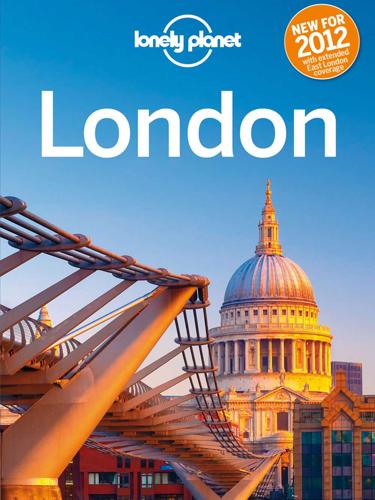
Lonely Planet London
by
Lonely Planet
Published 22 Apr 2012
A slew of style magazines are published here, including i-D, an ubercool London fashion and music gospel and Dazed & Confused . Treasures of the British Museum The British Museum has artefacts from every great civilisation, from the Pharaohs to Chinese dynasties, Ancient Greece to the Aztecs, Easter Island to Greenland. Egyptian Mummies 1Among the museum’s collection of Egyptian artefacts is the Mummy of Katebet, an elderly Chantress of Amun (a performer for temple rituals). Everything about Katebet is unusual: from her elaborate sarcophagus to the way she was mummified. Parthenon Sculptures 2The Parthenon, a white marble temple dedicated to Athena, was part of a grandiose complex on the Acropolis in Athens.
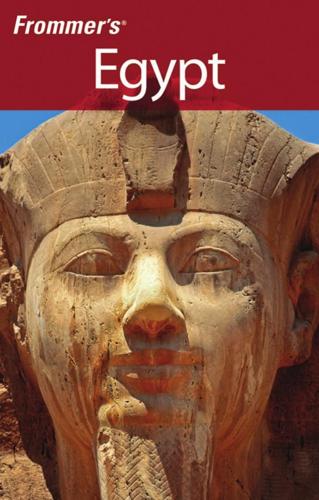
Frommer's Egypt
by
Matthew Carrington
Published 8 Sep 2008
MTV is a registered trademark of Viacom International, Inc. 20_259290-badvert04.qxp 7/22/08 12:49 AM Page 340 21_259290-badvert05.qxp 7/22/08 12:49 AM Page 341 FROMMER’S® COMPLETE TRAVEL GUIDES Alaska Amalfi Coast American Southwest Amsterdam Argentina Arizona Atlanta Australia Austria Bahamas Barcelona Beijing Belgium, Holland & Luxembourg Belize Bermuda Boston Brazil British Columbia & the Canadian Rockies Brussels & Bruges Budapest & the Best of Hungary Buenos Aires Calgary California Canada Cancún, Cozumel & the Yucatán Cape Cod, Nantucket & Martha’s Vineyard Caribbean Caribbean Ports of Call Carolinas & Georgia Chicago Chile & Easter Island China Colorado Costa Rica Croatia Cuba Denmark Denver, Boulder & Colorado Springs Eastern Europe Ecuador & the Galapagos Islands Edinburgh & Glasgow England Europe Europe by Rail Florence, Tuscany & Umbria Florida France Germany Greece Greek Islands Guatemala Hawaii Hong Kong Honolulu, Waikiki & Oahu India Ireland Israel Italy Jamaica Japan Kauai Las Vegas London Los Angeles Los Cabos & Baja Madrid Maine Coast Maryland & Delaware Maui Mexico Montana & Wyoming Montréal & Québec City Morocco Moscow & St.
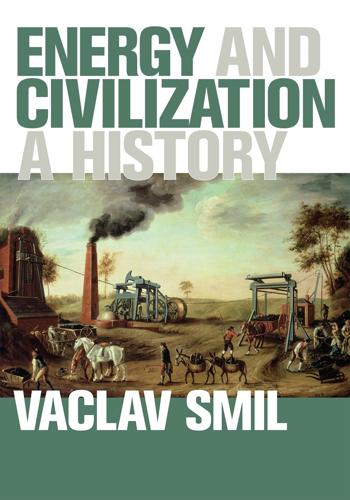
Energy and Civilization: A History
by
Vaclav Smil
Published 11 May 2017
Only a massing of people or draft animals could overcome these limits, and, as attested by prehistoric and ancient monumental structures, such feats, requiring effective, coordinated control, were repeatedly accomplished by societies as different as the menhir builders of Ireland and Brittany, the Egyptians of the early dynasties, and a small population on Easter Island. Aggression powered by human muscles had to be discharged either in hand-to-hand combat or by an attack launched stealthily from no farther away than a couple hundred meters. For millennia, killing had to be done at fairly close quarters. Human anatomy makes it impossible for an archer to exert the maximum force when one extended arm and one flexed arm are separated by more than about 70 cm.
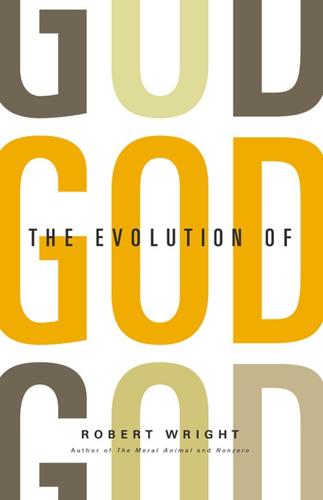
The Evolution of God
by
Robert Wright
Published 8 Jun 2009
Whatever your reaction to life in indigenous Polynesia—whether you admire its order, bemoan its brutality, or both—the judgment rendered is largely a judgment of its religion. The indigenous societies of the Polynesian islands, from New Zealand in the south to Hawaii in the north, from Tonga in the east to Easter Island in the west, were what anthropologists call “chiefdoms.” 6 Chiefdoms are typically agricultural societies, and they are much bigger and more elaborate than the average hunter-gatherer society, usually comprising many villages and thousands of people. Leadership is in the hands of a “chief,” and there may be regional chiefs beneath him.
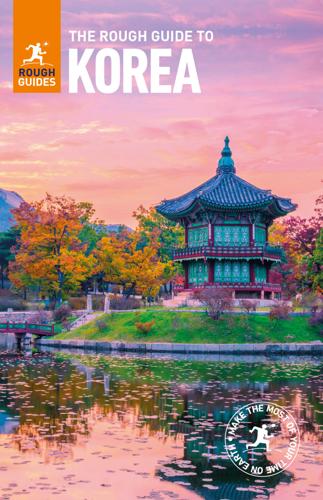
The Rough Guide to Korea
by
Rough Guides
Published 24 Sep 2018
The glorified divots are visible in a small, grassy enclosure at the centre of the park, though it’s hard to spend more than a few seconds looking at what are, in effect, little more than holes in the ground. The pleasant wooded walking trails that line the complex will occupy more of your time, and there are a few buildings to peek into as well as an authentic hareubang (grandfather statues) outside the entrance. GRANDFATHERS OF ROCK What is it with Pacific islands and statues? The moai of Easter Island are the most famous, but similar relics have been found on Fiji, Tahiti, Hawaii and Okinawa, among other places. Jeju’s own version is the dolhareubang, or “stone grandfather”. Commonly abbreviated to hareubang (하르방), they can be found all over Korea – nowadays usually outside fish restaurants wishing to drum up custom.

Frommer's London 2009
by
Darwin Porter
and
Danforth Prince
Published 25 Aug 2008
throughout, with hundreds of photos and maps • Full-color with 1–to–3–day itineraries, neighborhood walks, • Packed and thematic tours literary haunts, offbeat places, and more • Museums, Star-rated hotel and restaurant listings • Sturdy foldout map reclosable plastic wallet • Foldout front coversinwith at-a-glance maps and info • The best trips start here. 19_285596-badvert03.qxp 7/22/08 6:15 PM Page 373 FROMMER’S® COMPLETE TRAVEL GUIDES Alaska Amalfi Coast American Southwest Amsterdam Argentina Arizona Atlanta Australia Austria Bahamas Barcelona Beijing Belgium, Holland & Luxembourg Belize Bermuda Boston Brazil British Columbia & the Canadian Rockies Brussels & Bruges Budapest & the Best of Hungary Buenos Aires Calgary California Canada Cancún, Cozumel & the Yucatán Cape Cod, Nantucket & Martha’s Vineyard Caribbean Caribbean Ports of Call Carolinas & Georgia Chicago Chile & Easter Island China Colorado Costa Rica Croatia Cuba Denmark Denver, Boulder & Colorado Springs Eastern Europe Ecuador & the Galapagos Islands Edinburgh & Glasgow England Europe Europe by Rail Florence, Tuscany & Umbria Florida France Germany Greece Greek Islands Guatemala Hawaii Hong Kong Honolulu, Waikiki & Oahu India Ireland Israel Italy Jamaica Japan Kauai Las Vegas London Los Angeles Los Cabos & Baja Madrid Maine Coast Maryland & Delaware Maui Mexico Montana & Wyoming Montréal & Québec City Morocco Moscow & St.

The Rough Guide to Poland
by
Rough Guides
Published 18 Sep 2018
Słowackiego 1, just east of Puszczykówko train station • Tues–Sun: May–Oct 9am–6pm; Nov–April 10am–3pm • 10zł • 61 813 3794, fiedler.pl The Arkady Fiedler Museum (Muzeum Arkadego Fiedlera) is housed in the former house of Fiedler, one of the most popular travel writers in Polish history. The museum is full of the personal knick-knacks brought back from his sojourns in Africa, South America and the East, while the delightful garden has an impressive array of replica Aztec, Easter Island and other sculptures as well as a scale replica of Columbus’s Santa Maria boat. ARRIVAL AND GETTING AROUND WIELKOPOLSKA NATIONAL PARK BY TRAIN Access to the park from Poznań is fairly easy, with a dozen daily trains passing through a sequence of settlements on the fringes of the park, from where you can pick up hiking trails into the park itself.
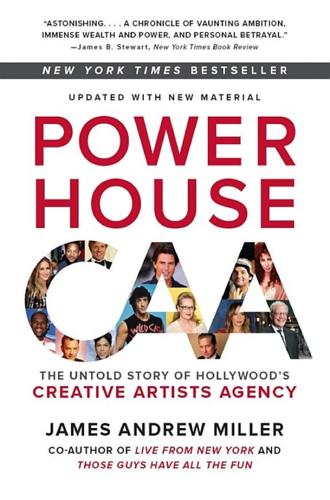
Powerhouse: The Untold Story of Hollywood's Creative Artists Agency
by
James Andrew Miller
Published 8 Aug 2016
He was just a kid, but Jay immediately saw Leonardo’s talent. And when he saw talent, he worshipped it. BILL MURRAY: Jay was a star. Jay was really something. He was the star of those Young Turks. Those guys would go on vacations together, and he would set it all up. He would say, “Guys, we’re going to raft the Colorado River. We’re going to Easter Island, or some other crazy thing.” He would set everything up and they would go together and have these amazing adventures together. These guys had a lot of fun, and Moloney was the guy that really made that happen. He had the ability to laugh at himself, which, you know, for a young guy in that business was unusual.

Fodor's Hawaii 2012
by
Fodor's Travel Publications
Published 15 Nov 2011
The Polynesians Long before both Christopher Columbus and the Vikings, Polynesian seafarers set out to explore the vast stretches of the open ocean in double-hulled canoes. From western Polynesia, they traveled back and forth between Samoa, Fiji, Tahiti, the Marquesas, and the Society Isles, settling on the outer reaches of the Pacific, Hawai‘i, and Easter Island, as early as AD 300. The golden era of Polynesian voyaging peaked around AD 1200, after which the distant Hawaiian Islands were left to develop their own unique cultural practices and subsistence in relative isolation. The Islands’ symbiotic society was deeply intertwined with religion, mythology, science, and artistry.
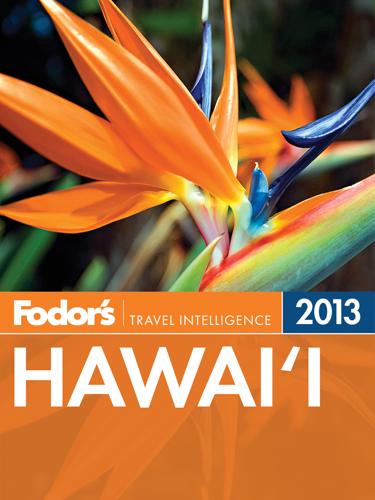
Fodor's Hawaii 2013
by
Fodor's
Published 22 Jul 2012
The Polynesians Long before both Christopher Columbus and the Vikings, Polynesian seafarers set out to explore the vast stretches of the open ocean in double-hulled canoes. From western Polynesia, they traveled back and forth between Samoa, Fiji, Tahiti, the Marquesas, and the Society Isles, settling on the outer reaches of the Pacific, Hawaii, and Easter Island, as early as AD 300. The golden era of Polynesian voyaging peaked around AD 1200, after which the distant Hawaiian Islands were left to develop their own unique cultural practices and subsistence in relative isolation. The Islands’ symbiotic society was deeply intertwined with religion, mythology, science, and artistry.

This Sceptred Isle
by
Christopher Lee
Published 19 Jan 2012
James Cook was a navigator who had learned his trade well enough in east-coast colliers and then in the Royal Navy that he would become a fine explorer and hydrographer. Cook began the first of his three great voyages in 1768, and in a decade he sailed to Tahiti, New Zealand, Australia and Hawaii; plotted the exact positions of the Easter Islands and Tonga, New Caledonia and Norfolk Island; surveyed the North American coast; and charted the extreme coast of Siberia before sailing south again to Hawaii. It was in Hawaii that he was murdered in 1779. He was mourned by a nation hardly at peace with itself and moving inexorably towards war with its American colonies.

She Has Her Mother's Laugh
by
Carl Zimmer
Published 29 May 2018
If races were indeed biologically significant, Lewontin argued, each race should have a starkly distinctive combination of genetic variants. Most of the genetic diversity should exist between the races rather than between individuals of the same race. Lewontin gathered measurements of seventeen different proteins in a wide range of human populations, from the Chippewa to the Zulu, from the Dutch to the people of Easter Island. When he sorted people according to their race, he found that the genetic differences between races accounted for only 6.3 percent of the total genetic diversity in humans. The genetic diversity within populations, such as the Zulu or the Dutch, contained a staggering 85.4 percent. In 1972, Lewontin published these results in a profoundly influential paper entitled “The Apportionment of Human Diversity.”

The Age of Surveillance Capitalism
by
Shoshana Zuboff
Published 15 Jan 2019
We have only gradually come to understand that the specific methods of domination employed by industrial capitalism for more than two centuries have fundamentally disoriented the conditions that support life on Earth, violating the most basic precepts of civilization. Despite the many benefits and immense accomplishments of industrial capitalism, it has left us perilously close to repeating the fate of the Easter Islanders, who wrecked the ground that gave them life, then fashioned statues to scan the horizon for the aid and succor that would never come. If industrial capitalism dangerously disrupted nature, what havoc might surveillance capitalism wreak on human nature? The answer to this question requires a return to imperatives.
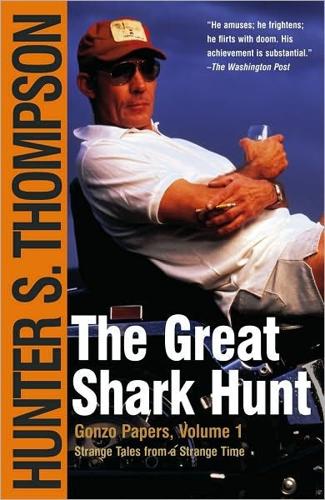
The Great Shark Hunt: Strange Tales From a Strange Time
by
Hunter S. Thompson
Published 6 Nov 2003
Gnaw the skull, suck the bones, then soak the bastard with gasoline and toss a match on it. Jesus! How much more of this cheapjack bullshit can we be expected to take from that stupid little gunsel? Who gives a fuck if he's lonely and depressed out there in San Clemente? If there were any such thing as true justice in this world, his rancid carcass would be somewhere down around Easter Island right now, in the belly of a hammerhead shark. But, no -- he is sitting out there in the imitation-leather-lined study of his oceanside estate, still guarded constantly by a detail of Secret Service agents and still communicating with the outside world through an otherwise unemployable $40,000-a-year mouthpiece named Ron Ziegler. . . and still tantalizing the national press with the same kind of shrewdly programmed leaks that served him so well in the last months of his doomed presidency. . .

The Rough Guide to Peru
by
Rough Guides
Published 27 Apr 2024
There are over 250 sarcophagi sites in the region, of which the only accessible one is the Karajía site. From the plaza in the village of Cruz Pata, it’s a one-kilometre descent via dirt road and steep steps to the narrow walkway hugging the cliff. Thirty metres above you, you can see a row of six sarcophagi (there were eight but two were destroyed) with heads reminiscent of Easter Island’s moai. Up to 2m in height, they house the mummies of the most important individuals, such as chieftains, warriors and shamans, as well as their most prized belongings. The two skulls above them and one to the right are thought to be trophy skulls. Walk to the far end of the walkway; from there you’ll be able to see another five sarcophagi to the left of the main group – these are far less elaborate and have been thoroughly desecrated.
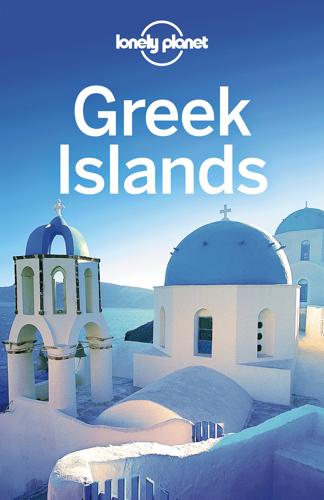
Lonely Planet Greek Islands
by
Lonely Planet
,
Alexis Averbuck
,
Michael S Clark
,
Des Hannigan
,
Victoria Kyriakopoulos
and
Korina Miller
Published 31 Mar 2012
Most people are named after a saint, as are boats, towns and mountain peaks. During the annual sheep blessing in the Cretan village of Asi Gonia on 23 April, local shepherds bring their flock to be blessed at the church of Agios Yiorgos, milk them and hand out fresh milk to everyone gathered. EASTER ISLAND-STYLE Easter is a major event on all the islands, with many renowned for their unique Holy Week customs and celebrations – from the bonfires burning Judas effigies in southwestern Crete to the three-day procession of the icon of the Virgin Mary through almost every house and boat on Folegandros.

Frommer's Israel
by
Robert Ullian
Published 31 Mar 1998
throughout, with hundreds of photos and maps • Full-color with 1–to–3–day itineraries, neighborhood walks, • Packed and thematic tours literary haunts, offbeat places, and more • Museums, Star-rated hotel and restaurant listings • Sturdy foldout map reclosable plastic wallet • Foldout front coversinwith at-a-glance maps and info • The best trips start here. 22_289693-badvert02.qxp 10/20/08 2:26 PM Page 533 FROMMER’S® COMPLETE TRAVEL GUIDES Alaska Amalfi Coast American Southwest Amsterdam Argentina Arizona Atlanta Australia Austria Bahamas Barcelona Beijing Belgium, Holland & Luxembourg Belize Bermuda Boston Brazil British Columbia & the Canadian Rockies Brussels & Bruges Budapest & the Best of Hungary Buenos Aires Calgary California Canada Cancún, Cozumel & the Yucatán Cape Cod, Nantucket & Martha’s Vineyard Caribbean Caribbean Ports of Call Carolinas & Georgia Chicago Chile & Easter Island China Colorado Costa Rica Croatia Cuba Denmark Denver, Boulder & Colorado Springs Eastern Europe Ecuador & the Galapagos Islands Edinburgh & Glasgow England Europe Europe by Rail Florence, Tuscany & Umbria Florida France Germany Greece Greek Islands Guatemala Hawaii Hong Kong Honolulu, Waikiki & Oahu India Ireland Israel Italy Jamaica Japan Kauai Las Vegas London Los Angeles Los Cabos & Baja Madrid Maine Coast Maryland & Delaware Maui Mexico Montana & Wyoming Montréal & Québec City Morocco Moscow & St.
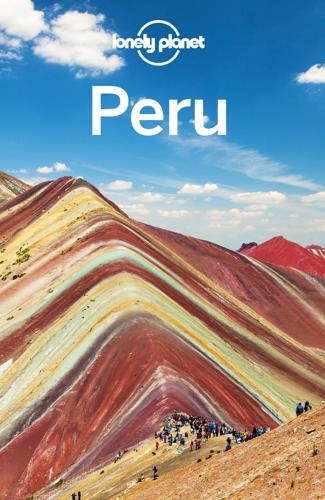
Lonely Planet Peru
by
Lonely Planet
Note that Chile is generally two hours ahead of Peru, or one hour during the period from May until August. From Arica, you can continue south into Chile by air or bus, or northeast into Bolivia by air or bus. For more information, consult Lonely Planet’s South America on a Shoestring, Chile & Easter Island and/or Bolivia. TACNA BUSES DESTINATION COST (S) DURATION (HR) Arequipa 20-45 7 Cuzco 50-75 17 Ilo 10-18 3½ Lima 80-144 18-22 Moquegua 10-18 3 Puno 25-45 10 COLECTIVOS Numerous colectivos (S20 to S25, one to two hours) to Arica, Chile, leave from the international terminal across the street from the terminal terrestre in order to cross the Chilean border.

Hawaii
by
Jeff Campbell
Published 4 Nov 2009
Contact the family for farm location and directions. SMITH’s TROPICAL PARADISE Other gardens might have fancier landscaping or loftier goals, but you can’t beat Smith’s for value. For $6 you can leisurely stroll a loop trail past a serene pond, grassy lawns and island-themed gardens. The setting can seem Disney-esque, with an Easter Island replica and tour trams, but it’s appealingly unpretentious and large enough to accommodate all. The Smith’s family-run luau (Click here) is held on the garden grounds. KAUA′I’s HINDU MONASTERY On an island virtually devoid of Hinduism, this one-of-a-kind Hindu monastery (822-3012; www.himalayanacademy.com; 107 Kaholalele Rd; 9am-noon) welcomes both serious pilgrims and curious sightseers.
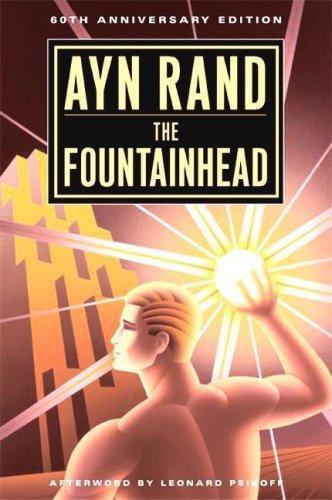
The Fountainhead
by
Ayn Rand
Published 1 Jan 1943
There followed a list of questions in erudite terms on the architectural merits of the Temple. Toohey proved that it had none. There followed an historical review. Toohey, speaking easily and casually, gave a brief sketch of all known civilizations and of their outstanding religious monuments—from the Incas to the Phoenicians to the Easter Islanders—including, whenever possible, the dates when these monuments were begun and the dates when they were completed, the number of workers employed in the construction and the approximate cost in modern American dollars. The audience listened punch-drunk. Toohey proved that the Stoddard Temple contradicted every brick, stone and precept of history.

Debt of Honor
by
Tom Clancy
Published 2 Jan 1994
The payload so recently part of the H-11 booster was an exact engineering mockup of a nuclear warhead, and while Amber Ball and other tracking devices were watching the remains of the trans-stage, this cone of uranium fell back to earth. It was not a matter of interest to American cameras, since it was, after all, just an orbit-test payload that had failed to achieve the velocity necessary to circle the earth. Nor did the Americans know that MV Takuyo, sitting halfway between Easter Island and the coast of Peru, was not doing the fishery-research work it was supposed to be doing. Two kilometers to the east of Takuyo was a rubber raft, on which sat a GPS locator and a radio. The ship was not equipped with a radar capable of tracking an inbound ballistic target, but the descending RV gave its own announcement in the pre-dawn darkness; glowing white-hot from its reentry friction, it came down like a meteor, trailing a path of fire right on time and startling the extra lookouts on the flying bridge, who'd been told what to expect but were impressed nonetheless.
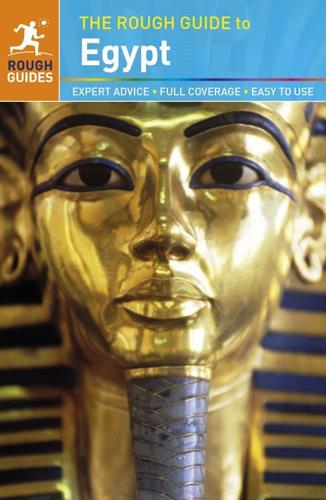
The Rough Guide to Egypt (Rough Guide to...)
by
Dan Richardson
and
Daniel Jacobs
Published 1 Feb 2013
Lavishly illustrated, closely argued survey of all the major pyramids, overdue for an update since it was last revised in 1991. Graham Hancock Fingerprints of the Gods; The Message of the Sphinx; The Mars Mystery; Heaven’s Mirror. Asserts that the pyramids, Angkor Wat temple and the statues of Easter Island were all created by a lost civilization propagated by extraterrestrials. Peter Hodges How the Pyramids were Built. As a professional stonemason, Hodges has practical experience, rather than academic qualifications, on his side. An easy read and quite persuasive.
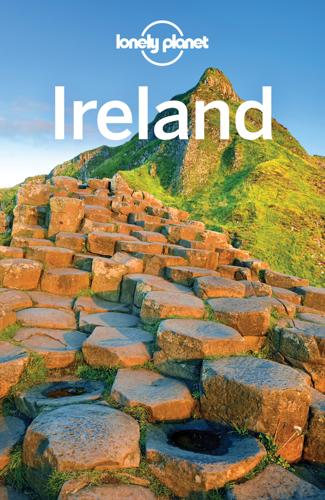
Lonely Planet Ireland
by
Lonely Planet
From here boats make the crossing to the monastic ruins on White Island. 1Sights & Activities oWhite IslandISLAND ( GOOGLE MAP ; %028-6862 1892; www.castlearchdaleboathire.com/whiteisland.html; Castle Archdale Bay; ferry per person £4; h10.30am-4.30pm daily Jul & Aug, plus Easter & May bank-holiday weekends, call to confirm) White Island is the most haunting of Lough Erne's monastic sites. At the eastern tip of the island are the ruins of a small 12th-century church with a beautiful Romanesque door on its southern side. Inside are eight extraordinary stone figures, thought to date from the 9th century, lined up along the wall like miniature Easter Island statues. A ferry makes the 15-minute crossing to the island from the marina at Castle Archdale. The line-up is a modern arrangement; most of the figures were discovered buried in the walls of the church in the 19th century, where the medieval masons had used them as ordinary building stones. The six main figures, all created by the same hand, are flanked on the left by a sheila-na-gig (carved female figure with exaggerated genitalia), which is probably contemporary with the church, and flanked on the right by a scowling stone face.

The Rough Guide to New Zealand: Travel Guide eBook
by
Rough Guides
Published 1 Jan 2024
As pasture has been turned into immaculate regenerating bush, the Gows have commissioned the cream of New Zealand sculptors – Michael Parekowhai, Jeff Thompson, Chris Booth, Fatu Feu’u – to produce site-specific works, often the largest they’ve undertaken. The commissioning and development process comes alive with videos and working models, but the stars are the works themselves – a massive tree stump turned into what looks like an Easter Island moai, an organically sculpted steel wall, and a stainless-steel limpet, fern and leaf delicately beautifying a small wetland. Arrival and departure Waiheke Island By ferry Fullers (www.fullers.co.nz; roughly hourly 6am–10pm or later; 35min; $36 return, bikes free) operates from the Ferry Building in Auckland to Matiatia Wharf, just over 1km from the main settlement of Oneroa with times staggered so that in effect there is a ferry every half-hour.
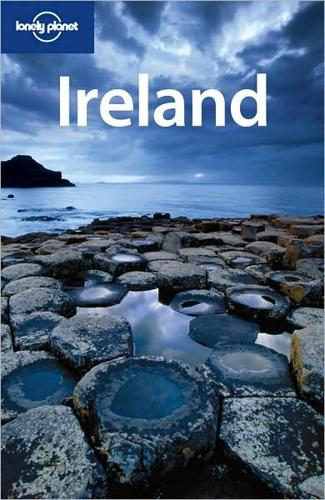
Ireland (Lonely Planet, 9th Edition)
by
Fionn Davenport
Published 15 Jan 2010
White Island White Island, in the bay to the north of Castle Archdale Country Park, is the most haunting of Lough Erne’s monastic sites. At the eastern tip of the island are the ruins of a small 12th-century church with a beautiful Romanesque door on its southern side. Inside are six extraordinary Celtic stone figures, thought to date from the 9th century, lined up along the wall like miniature Easter Island statues. This line-up is a modern arrangement; most of them were discovered buried in the walls of the church in the 19th century, where the medieval masons had used them as ordinary building stones. The six main figures, all created by the same hand, are flanked on the left by a sheila-na-gig, which is probably contemporary with the church, and flanked on the right by a scowling stone face.